34th Battalion
Captain: Mortimer Charles BLACKETT. M.B.E.

34th BATTALION A.I.F.
Captain: Mortimer Charles BLACKETT. M.B.E.
Born: 28th January 1881. Franklin, Tasmania, Australia. Not in Hulu, Dorset, England as he indicated on his enlistment..
Married:
Wife: nee:.
Died: 10th August 1938. Johannesburg, Gauteng, South Africa.
Father: William Alexander Blackett. (1832-1895)
Mother: Margaret Blackett. nee: Madden. (1841-1909) – Pt Fredrick Tasmania.
INFORMATION
Mortimer Charles Blackett was a member of the First Contingent Tasmanian Section who left for the Boer War at Hobart on board HM Transport Manchester Merchant on 16 February 1902. Mortimer Cephas Blackett was listed as a Private on the nominal roll of Tasmanian Units.

Mortimer enlisted with the 2nd Reinforcements 34th Battalion AIF on the 16th February 1916 and embarked for England on the 13th May 1916 from Sydney on board HMAT A72 "Beltana" and disembarked at Devonport England on the 27th March 1917.
Recommended for MENTIONED in DISPATCHES
1917 - 14/03/1918 - 04/02/1919.
MEMBER of the ORDER of the BRITISH EMPIRE
London Gazette 14th April 1919. Page 4984 Position 2.
Mortimer returned to Australia on the 9th July 1919.
Family Information
Mortimer was a single 35 year old Journalist from Patterson Street, Launceston upon enlistment. His brother William was his next of kin who lived at Patterson Street, Launceston, Tasmania. He served in the Boer War with the 1st Battalion Australian Commonwealth Horse Regimental Number: 1241 with the rank of Trooper and was awarded the Queen South Africa Medal with Clasps Cape Colony, Orange Free State, South Africa 1901 and South Africa 1902.

"General De Biers - / Last Capture of the Boers / South Africa -- 11th May 1902"
Mortimer was a South African sports journalist after the war. He was born in Australia not Hulu as he put on his enlistment papers. His brother had tried a few times to get the army to change the records, but they didn't and the remain as they were when he enlisted.
(Family information supplied by Shelly Mitchell: April 2020)
CEPHAS AUGUSTINE MORTIMER BLACKETT MBE (Mil).
Born Franklin Tasmania Australia on 28 January 1881 [Folio 739] Informant his father;
Died (under name of Mortimer Charles) on 10 August 1938 of Acute Pancreatitis (he had been ill for 10 days) in Johannesburg at the age of 57. He was recorded as Australian born and single [Ref: A4063224 Dept of Home Affairs Republic of South Africa 20050292479 unabridged Death Certificate] Informant W J Wallis (Funeral Director). Buried at Brixton Cemetery 24 hours later.
He was commonly known as ‘Mort’.
Family background
The 11th child (of 13 born between 1859-1886) of William Alexander and Margaret (nee Madden) who were married 21 November 1858 by Rev {Frederick?} Smith in a Church of England ceremony at Pitfield School House in the District of Woady Yalock [State of Victoria, Australia] by License. He was 26 and she 17.The marriage certificate states William was born in Germany (parents Alexander Hal Blackett, Sailor, and Mary Jane or Jones?) and Margaret born Sydney (parents William Madden, Farmer, and Margaret Camble {sic}). Witnesses were John McDougal and Kora Tawick? [Folio 3842].
William Alexander died East Devonport Tasmania 16 May 1895 [Folio 564 180]; age given was 57 years. His occupations began with Miner, then Storekeeper, Wesleyan Bush Missionary and latterly Insurance Agent for AMP.
Further verified research back into the parents’ families has so far been unsuccessful.
Margaret stated on the birth certificate of their son Francis Arthur Blackett that her husband was born Montreal, Lower Canada, North America. Enquiries so far in both German and Canadian records have proved inconclusive at this point.
Early years
There is little information about Mort’s early years. He does not seem to have joined his sisters in Wesleyan Church work with their father, nor taken up teaching as many of them did. It is possible he began his journalism career in Tasmania- or even in New Zealand. When he enlisted for the Boer War he gave his occupation as Journalist.
His Obituary in The Star, Johannesburg, Transvaal, which appeared on Thursday 11 August 1938
says he “went to New Zealand at an early age” and another Obituary published in The Evening Post, Wellington, New Zealand, on 6 September 1938 says he was in NZ but left Christchurch at the age of 20 to serve in the South African War.
There is oral history he tried to contact the families of his New Zealand-domiciled brothers Francis Arthur Blackett and Reginald Leigh Blackett (who changed his name to Jack Black and the whole family later changed their name legally to Black by Deed Poll -officially registered 12 February 1968 ), but family were apparently not very interested in him, although the late Geoff Blackett [son of Colin, son of Mort’s brother Francis Arthur] remembered a photograph of Mort which was always in a drawer and he had Mortimore (sic) as one of his middle names.
Worked as Reporter at The Star Johannesburg from June 1902 to 1938 death.
Mort joined the editorial staff of The Star as a junior reporter in June 1902. He specialised in sports journalism and soon became a noted reporter of Rugby and cricket. In 1911 he accompanied the South African cricket team to Australia as Reuter’s representative.
When the first South African Rugby team visited New Zealand, he accompanied them as a representative of The Star. [More of that later].
He is noted in the 1906 Longlands Transvaal Director (p487) as Blackett, MC, reporter “Star” Box 1014. (In 2005 the Star was still using that same PO Box address).
At cricket and Rugby he himself was an accomplished player.
Down in history as having represented South Africa at Cricket.
As Mortimer Blackett, his name is forever recorded in cricketing annuls. He can be found on the Cricinfo register for those who have represented South Africa in First Class Cricket- one innings, one catch in one match in the 1910/11 season!
The entry shows: Bowled Bond 0 and took one catch (W Lundie c Blackett b SG Pegler for 5).
All because he was at the ground to report the match South African team to Australia XI vs Western Province at The Track, Green Point (Cape Town) on October 6,7 1910. Apparently some of the players were injured or unable to ‘get away yet for business reasons’ so their places were taken by MC Blackett (making the round trip as the Reuters correspondent) and Addison (a Rand league player) with the understanding that the named players would be able to take part in the second innings.
The Cape Argus report of Friday 7 October 1910 says that after notching a boundary...Lundie’s confidence was his downfall for he got under one from Pegler and Blackett (substitute) brought off a grand catch right on the boundary (at long on).
Another report says Blackett proved a most efficient substitute. Batting last he was bowled Bond for 0 but the South African team won without having to bat again ( for the record: they made 197 and won by an innings and 18 runs; with Western Province 90 and 89 all out).
The Mercury newspaper in his homeland of Tasmania commented on 16 November 1910 (p5) that:
So much interest is taken in Johannesburg in the visit of the South African cricket team to Australia that Mr Mortimer C Blackett, who has been a member of the Johannesburg “Star” for many years has accompanied the team. Mr Blackett who is a native of New Zealand (sic, but incorrect) and has been in South Africa for 10 years will travel with the team throughout the tour.
It was the days when the ‘googlie’ was starting to be introduced and gave Mort plenty to write about. Under the tag Reuter’s Special Cricket Service, his reports featured regularly in The Star throughout the 1910/11 tour in that Australian summer. He also used the pen-name Free Lance.
In 1923 Mort was appointed Racing Editor of The Star and occupied a foremost place in this branch of journalism. He enjoyed “a high measure of his esteem and his place will be difficult to fill,” said his Obituary:
The Star has suffered a severe loss and his editorial staff mourns a warmly esteemed colleague. The South African Turf has lost one of its most noted writers and an unfailing exponent of all that was best in its tradition. Mr Blackett brought high qualifications to the exacting work of Racing Editor. He received the appointment in 1923 and up to the time of his death occupied a foremost place in this branch of journalism. He never failed in his duty to the racing public which was his duty to his newspaper and discharged his responsibilities in a manner appropriate to the solidity of his character. He justly enjoyed a high measure of esteem and his place will be difficult to fill.
Perhaps an insight into his character is given in the last paragraph in The Star obituary: By those to whom he chose to give his friendship, Mortimer Blackett will be remembered with affection. But he was the last man to wish that the merits of his character and his attainments should be a matter for publication.
Up until his death on 10 August 1930 Mort had been living at the Country Club in Johannesburg. He died at the Florence Nightingale Nursing Home in Hillbrow, Johannesburg, (next door to Hillbrow Hospital) following an unsuccessful operation and was buried 24 hours later. The ceremony was held at Dove’s Funeral Chapel. Funeral expenses were 42 pounds and the family asked for a tombstone to be erected from the estate, which still stands today, albeit in a rather sad state now. Stephanie Geyser visited the grave for us all and describes it as having a granite edge with an engraved piece at the top with his name and death date. There is evidence that it had little chains around the edges, but they’ve long-gone and the metal “poles” that held them up are rusty and either broken or missing.
Cause of death was given as acute pancreatitis (haemorrhage).
The nursing home Mortuary was demolished in 2004 to make way for the new Constitutional Court offices. Nearby is an historic monument, a Fort built in the 1890s.
Left no will- advertising brought family to light
According to papers under The Administration of Estates Act 1913, he did not leave a will, but had left “movable property” and his estate exceeded 300 pounds in value. The notification of death information was simply signed “friend of the deceased” with no name attached.
Papers discovered by Researcher Stephanie Geyser showed the “movable property” to be: Personal effects including clothing, picnic case, binoculars, cuff links, gold studs, 2 wristlet watches, cigarette case, medals, pewter mugs, silver cup, golf clubs and Austin Motor Car TJ 31638.
Arthur Meikle and Co Ltd Auctioned the clothing thus: dressing gown, pairs of slippers, pyjamas, ring, three suits, raincoat, two flannels, swimsuit, towels, radio, shirts, studs, cufflinks, ties, collars (5 shillings and 5 pence), watch (5 shillings), dental plate (3 shillings), Trophies (9 shillings), suitcases (10 shillings), trunks (26 shillings), books (5 shillings). After tax, advertising and commission of around 20 pound was deducted the total to the estate was 116 pounds 12 shillings and 8 pence.
The Evening Post (Wellington) Obituary further adds: he died suddenly and there was no opportunity of communicating with relatives believed to live in New Zealand. Among his papers no names and addresses could be found.
The Master of the Supreme Court, Transvaal Provincial Division, Pretoria was informed on 17 May 1939 that although Mort’s friends believed he had no living relatives, the result of advertising and enquiries subsequently carried out resulted in the discovery of “no less than nine brothers and sisters”.
One relative who wrote to Messrs Nupen and Goodman, the Johannesburg firm of solicitors handling the estate, in a letter dated 1939 from Eversley, 50 Hill Street, Launceston, Tasmania, was Claudia Blackett, daughter of Mort’s oldest brother- William Alexander Blackett 2nd (died 21 April 1939) m Alpha (nee French). Claudia Mary, never married and owned the Plaza Library in Launceston. She provided information on the family and offered the comment: Uncle Mort was christened Mortimer Cephas Justine (sic), but when he grew up altered it to Mortimer Charles-for which nobody could blame him.
She enquired: What of uncle’s personal belongings, if any, will they be divided up amongst the family, I would very much like something to keep in memory of him, he was always a great favourite of mine.
She added in a PS: I have been thinking about Uncle’s medal OBE (sic) don’t you think it would be nice for my Father to have that seeing that he is the eldest brother and the only one that ever did anything with or for Uncle Mort. He lived with my Father and Mother for years in his younger days.
Advertising Mort’s death in both Australia and New Zealand soon elicited more information- and more letters from prospective heirs! These included [ 23 July 1945] Franklin Reginald Leigh Blackett (aka Jack Black), addresses given variously as 90 The Terrace, Wellington, NZ and 39 Molesworth Street, Wellington, NZ, acknowledging receipt of a sum of money from the estate and enquiring about the balance of 2 of 8 portions not first claimed and [22 August 1946- No M2/993 from NZ Supreme Court Wellington Registry] giving leave to Franklin Jeffery Blackett to swear that Francis Arthur Blackett, a missing person, died in or since the year 1920. Frank and older brothers Allan and Colin were named as heirs, c/o Solicitor GA Swan.
Franklin Reginald Leigh Blackett’s son Reg Black of Lower Hutt told the author that although his father tried to find information re any family connection between his family and Frank, Colin and Allan (the likeness was in favour of a connection) Francis Arthur’s ‘widow’ Leila was vague about her husband’s background but thought he was from England. He recalled:
Knowledge of Frank’s Parents. I first met Frank at Thorndon School. We went through the classes together. I was a year(?) ahead of him. I never knew or met his father. I knew his mother by sight. She was always dressed in a gray St John [Ambulance] uniform, of dark complexion like Frank.
Later I met up with Frank when we were both in the cycling club [Poneke Amateur Athletic and Cycling Club]. We more or less kept in touch and when he came to the Hutt we renewed our friendship and so I came to know his family and, as with young families, our kids called each other Uncle, Auntie.
Now about this time my father [Franklin Reginald Leigh] remarked that Frank had a marked resemblance to a brother of his who was a bit of a lad and a rover whom he had not seen for many years. (I should say prior to 1910). He had an idea he came to NZ (the Blackett family were Tasmanians). Another coincidence was Frank was a Blackett and also Frank seemed to be a family name.
Whilst at Thorndon School, probably about 1923-5? Frank’s brother came to Thorndon School. He was a bit of a mystery. We got the impression he may have been in trouble with the law, he only remained a few weeks as far as I can recall; he then disappeared, got the impression he may have gone to a bad boys’ school. His name may have been Colin?
[Poor Colin James was admitted to the Industrial School in 1924 as his solo mother, described as being in ‘poor circumstances’ working as a ‘domestic charwoman’ was having trouble controlling him. In 1924 it was said his father had deserted them and had not been heard of for 9 years]
‘Now back to myself’, writes Re: Our family was always known as Black as it was the name my father assumed in NZ. There was no criminal reason but he wanted to break from his family in Tasmania for personal reasons.[He would never take this comment further] It was not until the death of his brother in South Africa did he trouble to legalise the name of Black by Deed Poll as he had to prove his kinship with the deceased. At this time he also tried to establish Frank as a member of the family, but to no avail. Frank’s mother was vague regarding her husband and declared that he said he was from England and this broke the only link with the Tasmanian family (who later moved to Melbourne) (sic)and so the only link regarding any relationship between Frank and myself was one of coincidence.
Frank’s father’s birth certificate should give some particulars regarding his father.
[It did. Folio 12230, Births in District of Scarsdale, Victoria, Australia: Francis Arthur Blackett born 18 February 1876 Newtown, Scarsdale, VIC, father William Alexander and mother Margaret (nee Madden). He was the 8th child and an older brother of Mort. He must have spoken of this to his family as Frank Blackett spoke often of his Uncle in South Africa being a Journalist on The Star and was proud his daughter Yvonne became a journalist; to be followed by Joanne Black, daughter of Richard (Jack Black’s youngest son, mother Doris Myrtle Morrison, Jack’s second wife).
Oral history from Frank’s family (to cover the absence of a husband and father) was that he died visiting his brother in South Africa. However, Leila remained on the Wellington Electoral Rolls as ‘married’ rather than ‘widow’ which suggests she knew differently. More about this under heading for Francis Arthur Blackett.]
I am afraid the Blackett family were a little lax in legalising birth and marriages etc. [See under RFL Blackett for more on this comment.]
Regards, RF Black.
One possible death for Francis Arthur Blackett may be NZRGO registration for the death of one James Blackett, labourer, on June 26, 1921, at Opunake, Taranaki. It was a sudden death and the Coroner found he died of heart failure following an attack of influenza. Details of his mother and father and marital status and any family are down as ‘unknown’. Age is stated as 61 and it is noted he was born at Stockton on Tees, UK ( Francis Arthur always insisted in was [incorrectly] born in England- more about that in the chapter dedicated to his life history).
Today the grave of James Blackett bears no marking and is a mown piece of grass between other gravestones in the very well-tended coastal Opunake Cemetery.
ILLUSTRIOUS WAR SERVICE
On 22 January 1902, six days before his 21st birthday, Mortimer Cephas Blackett signed on in Hobart as a member of the Commonwealth Contingent for Service in South Africa (Boer War). He was Attestation No 1241, described as being 5 feet 9 ½inches in height, with 38 inch chest, dark complexion, grey eyes, black hair and with a scar on the right side of his right leg. He gave his religion as Wesleyan and the unmarried journalist gave his mother Margaret of Cataract Hill, Launceston, as next of kin, his father having died in 1895.
Mort’s photo was published along with the others in The Tasmanian Mail of 22 February 1902, dispelling the information in his obituaries that he “left with a New Zealand contingent to serve in South Africa”.
The Tasmanian Mail of the same date (p36) also records the scenes at the wharf as the Tasmanian contingent embarked. The Queensland and NSW contingents and 100 horses were already on board. The Tasmanian Unit, mounted and in full marching order, paraded around the streets of central Hobart. The men returned to their camp for a meal while their stores and baggage were loaded. The ship’s captain gave each man a handsome pipe in a case bearing an inscription as a gift from the Manchester Liners Company (together with a half a pound of tobacco) . Before 10 am on 22nd, the men were on board and the ship backed out into the stream with the men lining the decks and up the rigging to wave farewell while from the shore scores of handkerchiefs were being waved by anxious loving hearts.
[The full transcript of the report with photographs can be found on the National Library of Australia’s wonderful TROVE website in The Mercury of Monday 17 February 1902 p3-nla.gov.au/nla.news-article10412956].
Mortimer Cephas Blackett is listed as a private on the nominal roll of Tasmanian Units and Staff of 1st Battalion, Commonwealth Troops, who embarked at Hobart on Board HM Transport Manchester Merchant on 16 February 1902: 3 officers, 59 ‘others’ and 63 horses, arriving Durban 14 March 1902.
From 15 April to 28 June they served with the Australian Brigade under the command first of Colonel de Lisle and latterly Colonel Williams, performing for a time as part of Colonel Thorneycroft’s Force.
They participated in operations in the Transvaal and in the final “drive” before leaving the shores of Durban on transport Drayton Grange on 11 July 1902, arriving Tasmania 9 August via Albany and Melbourne.
Two died, the rest returned and the unit disbanded on 19 August 1902.
{Source: The roll is included in the official records of the Australian Military Contingents to the War in South Africa compiled and edited for the Department of Defence by Lieut-Colonel P L Murray RA (retd), published by Government Printer, Melbourne, 1911.}
Tasmania furnished one half-company as her quota to the First Battalion Australian Commonwealth Horse unit.
South Africa must have proved an attractive place for Mort as he returned and joined the Natal Light Horse in South-West Africa in the ‘Great War’, as a lieutenant in the Natal Light Horse and was wounded at Gibeon on 27 April 1915.
500 strong, the Natal Light Horse was raised in August 1914 and commanded by Lt Col JR Royston for the German South-West Africa Campaign. It served on the southern frontier along the Orange River and formed part of the central force under Lt Col Park Grey, Royston having become Commanding Officer of the 9th Mounted Brigade. NLH suffered casualties at Gibeon and was disbanded June 1915. They wore the initials on hat and shoulder straps. {Source: The Armed Forces of South Africa (1659-1954), Major G Tylden (1954); reprinted 1982}
Two German field guns captured in Gibeon on 27 April 1915 now sit in the City Hall Gardens in Pietermaritzburg.
Back in Johannesburg on 3 May 1915, Mort’s paper The Star had full accounts of the war (“From our own correspondent”- was Mort involved in the writing of the reports?) and contained in Late News on that day, Union casualties included Natal farmer and champion rifle marksman Lt Col Park Grey and Lieut MC Blackett (both described as receiving slight wounds).
Lieut MC Blackett is the well known sporting writer, member of “The Star” staff, it added.
Flags flew at half-mast for those killed in the battle- which included New Zealander Lieut RT Matheson of Natal Light Horse who served throughout the South African War and was made Kings Sergeant for bravery. He had mining interests and was known as Saltbush Bill “for his indifference to personal appearance on trek, his recklessness in action and resourcefulness in the field, showing his intimacy with bush life.” (In other words, a good Kiwi bloke!).
With the capture of Gibeon the newspaper said General Smuts had established full control over the southern portion of the Colony, representing around one third of the cultivable and well-watered area.
Whatever phase the final stage of the struggle may assume, however, we venture to think that General Botha’s gallant armies are quite equal to the task of securing a comparatively early subjugation of German South-West Africa.
Appearing alongside these reports on the same day were headlines of Memorable achievements of Australasians during the attack on the Dardenelles, so impressive that Sir Winston Churchill sent telegrams of congratulations to the Governor General of Australia and the Governor of New Zealand. (The word Anzac had yet to be coined).
An article in the Personal Column of The Mercury (Hobart) on Wednesday 12 May 1915 reported:
Mr WA Blackett of the firm of Blackett and French, Launceston, has received a cable from South Africa informing him that his brother Lieutenant Blackett had been wounded whilst fighting in West Africa. Lieutenant Blackett is a son of the late Mr Blackett who was for some years in charge of the Methodist Church, Devonport. He left Tasmania with the Second Contingent to fight in the Boer War and subsequently gained his Lieutenancy. At the close of the Boer War he secured a position on the literary staff of the leading newspaper in Johannesburg. This he threw up to go on active service in West Africa when the war broke out there. Some years ago when the South African cricketers visited Tasmania, Mr Blackett accompanied them as a press representative, which is the only visit he has paid to Tasmania since he left. He had intended coming home for a long holiday this year but, of course, gave up the idea when war broke out, for though a journalist of considerable ability, he is a soldier first. Ted (sic) Blackett a younger brother is also at the front, he being among the first to join the First Expeditionary Force.
[ The youngest sibling, Howard Blackett (Ted in above),born Pt Sorrell 1886, Reg no 369 12 Battalion C company AIF was Killed in Action at Gaba Tepe, Dardanelles, landing at Gallipoli Peninsula on 2 May 1915. There is no known grave but his name is on the Memorial at Lone Pine Cemetery (panel 35). At home he is remembered in the Commemorative Area at the Australian War Memorial Canberra (panel 65) and on the Stanley Memorial (West Coast Tasmania), East facing marble tablet.]
The family suffered another loss when Driver Horace Raymond Blackett, Reg no 13999, 2nd Div Ammunition Column Australian Field Artillery, born Launceston 1897, son of William Alexander 2nd and Alpha (nee French) was Killed in Action 17 June 1918 near Frechencourt and buried at the Communal Cemetery there amongst 57 British troops, 49 of them Australians and eight from the UK. [British plot is 568 sq yards at far end of cemetery above a steep slope. Cemetery index number Fr885].In Canberra his name is located at Panel 21 AWM and also listed on the Launceston Cenotaph in Royd Park off Paterson Street. Their full information is available on line at the AWM website.
Alexander William 3rd (known as Alec) Reg no 3685 of 6 Battalion, 12th Reinforcement AIF was blinded for the rest of his life after receiving severed gunshot wounds to the eyes in the fighting in France and Alec’s Aunt, SERN S/Nurse Sister Alice Maud Blackett, a nurse on active service in France with First Australian General Hospital Special Reinforcements, was affected by gas and invalided home on 14 September 1918 with defective vision.
In the Paterson Street Church in Launceston where they worshipped as children and their father Ministered, War Memorial Plaques bear the names of Howard, Alec and Sister (Alice Maud) Blackett. [In 2011 the church is known as the Pilgrim Uniting Church situated at 34-38 Paterson Street.]
Service in the First World War led to MBE (Mil)
On 12 February 1916, Mortimer Charles Blackett enlisted for service abroad in the Australian Imperial Force. He was a Lieutenant and Adjutant and joined the 3rd HQ Inf Base Depot. His previous military service was given as 8 months Anglo-Boer War, Transvaal Volunteers 3 years and Natal Light Horse (German South-West Africa) 1 year.
[The Transvaal Volunteers were established in October 1902 at the end of the Boer War in the British tradition of voluntary service units. Keeping together the collective military skills from the earlier war, it formed the nucleus of a local defence team. The records of the Transvaal Volunteers are held in the South African National Archives Repository in Pretoria RSA. The Muster rolls and pay lists for the Natal Light Horse have not survived {source South Africa National Museum of Military History}]
This time he gave has birth town as Hulu (sic) in the county of Dorset. As his birth certificate [Folio 739] clearly states he was born in Franklin, Tasmania, this may possibly be a mis-hearing of the person who wrote down the details (a clerk? the letters are formed differently from the signature) and should have been Huon. Dorset is in North Eastern Tasmania and takes in Ringarooma and Scottsdale, areas where his siblings lived at one time. The family moved around with their father’s calling as a Bush Missionary. Many times in my research I have noticed the family seem to have added middle names and been vague as to birth dates.
His papers record Mortimer Charles Blackett embarked Sydney on HMAT A72 Beltana on 13 May 1916, disembarking Plymouth, UK, on 9 July 1916. He returned to Australia on the HT Prinz Ludwig, embarking 9 July 1919.[London Gazette of 16 September 1919 page 11648 gives notice that he relinquishes the acting rank of Captain 12 April 1919.]
Mort rose to the rank of Captain and before leaving for home served on the Belgrave Square London headquarters staff of General [Sir John] Monash (24 June 1919), one of Australia’s finest officers.
First posted for duty with AIF departments in the UK (2nd Training Brigade) when he arrived, on 24 November 1916 Mort proceeded overseas to France (Etaples) and served at various unnamed fields of war. Three times he was mentioned in Despatches with the wording: Was brought to the notice of the Secretary of State for War for valuable services rendered in connection with the War. Then came the note in his service records under the heading:
Awarded MBE:
20.8.18 Brought to the notice of the Secretary of State for War, for valuable services rendered in connection with the War.
The (undated and unsigned) note found on the AWM Honours and Awards (Recommendations WW1) website headed MBE: Captain Mortimer Charles Blackett Perm. Super List states: This officer has been Assistant Staff Captain 2nd Training Brigade for several months until 9 March 1918 when he was specially selected to take up the position of Staff Captain, Overseas Training Brigade. His administrative ability is of a very high order. He is a very conscientious and hard working officer. His work has always been entirely satisfactory both to his Commanding Officer and myself.
I have found two references to Capt Mortimer Charles Blackett being made a Member of the Most Excellent Order of the British Empire in the third supplement to the London Gazette – the first dated 7 June 1918, Issue 30730 page 6719, bottom column 2 (where he is described as Staff Captain of a Training Brigade, Australian Imperial Force) and the second 15 April 1919 p 4984 Column 2 (Capt Mortimer Charles Blackett AIF and dated 7 June 1918.) The 7 June introduction from St James’ Palace dated 3 June 1918 says the King has been graciously pleased on the occasion of His Majesty’s Birthday to give orders for the appointments to the Most Excellent Order of the British Empire, for services in connection with the War. On 15 April 1919, the King was graciously pleased to command, on the recommendation of the Secretary of War the following (orders and names)...published in the London Gazette on the dates stated (ie 7 June 1918 in Mort’s case) shall be transferred to the Military Division of the Order, in terms of the notification published in the London Gazette no 31084 of 27 December 1918.
King George V founded the Order to fill in the gaps in the honours system as he wished to honour the many thousands in non-combatant roles in the 1st World War. This was later ‘refined’ in December 1918 to add a Military division.
MBE or OBE?
This may explain why there appears to be some confusion in Mort’s papers over whether it was the MBE Mort was awarded or also an OBE. The Medal I have sighted clearly is the MBE and comes in a wooden presentation case with MBE stamped on the top. New Zealand family also received the Miniatures of his Medals- the Queen’s South Africa Medal (Boer War) 11 Oct 1899-31 May 1902 with Transvaal and Free State Bars; the Kings South Africa Medal (1901-02); the 1914-15 Star for service in any of the theatres of war; the British War Medal (1914-20) and the Allied Victory Medal (1914-18).
AUTHOR OF THAT INFAMOUS TELEGRAM: ‘A scandal unlikely ever to die’.
While covering the 1921 Springbok Rugby tour of New Zealand for The Star, Mort was to make comments in a telegraphed report back to South Africa which would still be making ripples in both rugby circles and in Race relations 90 years later.
The September 1921 game (which ended in South Africa beating the NZ Maori team 9-8) had been fraught from the start. Mort’s dispatch went like this:
Most unfortunate match ever played. Only result great pressure being brought to bear on Bennett induced them to meet Maoris, who assisted largely entertainment Springboks (sic).
[ Chester and McMillan in The Visitors write that Afrikaners in the team deliberately turned their backs on a group of Maori poi dancers doing a welcome, which had the Maori team seething with anger as they awaited the kick-off.]
Bad enough having play team officially designated NZ Natives [actual title was NZ Maori XV], but spectacle thousands Europeans frantically cheering on band of coloured men to defeat members of own race was too much for Springboks who frankly disgusted.
That was not the worst. The crowd was most unsportsman-like experienced on tour, especially section who lost all control of their feelings. When not booing referee, they indulged in sarcastic remarks at his expense.
On many occasions Africans were hurt. Crowd, without waiting for possibility of immediate recovery, shouted “Take him off, take him off.”
Their faithful coloured allied proved loyal to New Zealand for in addition to serious injury to Kruger’s leg, Van Heerden had to stay off field for 15 Minutes. Others limping badly.
Maoris flung their weight about regardless of niceties of the game.
The Hawkes Bay Rugby Team hit back the next day and while expressing regret at the behaviour of some of the crowd against the referee, said quite firmly that whoever was responsible for the telegram does not know or understand how highly the Maori race is regarded by his Pakeha fellow citizens. Trust your contact with Maori race will have shown you that they are worthy of the position of equality assigned to them and should not be looked upon as nothing better than a kaffir.
Mort (who was identified in some later Press reports in New Zealand as Charles or CWF Blackett and in some simply as ‘someone travelling with the tourists’) had so horrified a P& T worker in the Napier Telegraph Office with this despatch the worker copied it and a copy got into the Napier Daily Telegraph, although just how exactly remains clouded in mystery. Another story is that Mort handed a copy to a Telegraph sub-editor to publish locally if he wished, that there was no P&T leak. Whatever the truth, the P&T telegraphist was still sacked.
(In those days- and indeed still in the 1960s in NZ -when this writer covered the 1964 South Africa-NZ cricket test at the Basin Reserve in Wellington, albeit less controversially -the ‘copy’ was run to the P & T telegraphist usually located under the grandstand and the report tip-tapped out in Morse-code across the world).
The publication in the Napier paper caused a storm of protest throughout New Zealand. The South African Manager Harold Bennett, a lawyer, distanced him, self from it and the writer and Mort was reported as complaining his message had not only been illegally intercepted, it had been abbreviated and his comments were not therefore in context. Bennett publicly stated that Mort had expressed regret for his action, the cable having been written in the heat of the moment (some reports also used the words irresponsible journalist, but it may have been their own take on the so-called ‘apology’. Probably it is up there with some of a touring manager’s worst possible moments. Mort’s unrepentant rejoinder was that he was astonished that the Manager ‘thought fit so abjectly to apologise’. [Maybe he was annoyed at what he thought was censorship of his story rather that the racial aspect??]
The New Zealand Free Lance of the day (remember Free Lance was a pen name of Mort’s in South Africa!) weighed in, calling Mort’s words ‘an act of deplorable and reprehensible indiscretion’ and went on to say:
New Zealand is practically the only country in the world where the native race is more of an asset than an encumbrance. It is, apart from India, the only country in the world where equality of opportunity is held out to the native race and grasped to adequate and event noteworthy purpose. The high personal character of the best class of Maori, his intelligence, his shrewdness, combine to get him to the front race when he tries... [The notable person of Hon AT Ngata is used as an example of this]... There is not, as in other countries, a single particle of racial jealousy in New Zealand. There is no colour line. We have certain schools set apart for native children, but that is a matter of expediency not of prejudice.
We hope that these few facts will provide the irresponsible press correspondent aforesaid with food for deep thought.
The paper then went on to quote Government statistics that show Maori population had risen from 41,993 to 52,554 in the last 30 years to 1921, showing that, unlike other countries which had been “Europeanised” the menace of ultimate distinction has now been lifted.
It ended by saying there was no reason visitors to our shores should make hasty generalisations based upon their own domestic troubles.
In May 2010 The New Zealand Rugby Union issued and official apology for its exclusion of Maori players from three All Black touring parties to South Africa in 1928, 1949 and 1960, when the accepted South Africa’s ban on non-white players. Those affected included George Nepia (1928, who was also said to have blamed Mort for being left at home), JB Smith (1949) and Waka Nathan (1960).
Politics and sport- mixing them provided much hot debate and hundreds of column inches.
Footnote:
When first trying to research this incident, a letter from one of my ‘heros’ in sports writing, TP McLean was received in January 1988:
The name of Blackett rings a loud bell in my mind. He was the only South African journalist to accompany the Springbok rugby side which tourney New Zealand in 1921. He caused an immense stir by publishing a racist account of the team’s match against the New Zealand Maoris at Napier. He found it unbelievable that Pakehas would cheer on their Black brothers against a team of visiting White men. The ’Boks won the match by only 9 points to 8. It was a very dirty game; and it was because, so most New Zealanders said, of a refereeing mistaking that the Maoris were beaten.
Your grand-uncle really set the cat among the pigeons.
It is strange so little is known about the man. He did cause the most awful fuss at the time; and his report was the reason the Maoris did not play the next touring Springbok team, in 1937.
Very oddly, Maoris and White Springboks have always got on famously in New Zealand. Dr Craven and other Springboks stayed with Howard Morrison’s mother in Rotorua at the end of the tour of 1956 and George Nepia was made a life-vice president of the South African Rugby Board a few months before his death in 1986.
{The incident is referred to in various publications and articles ever since. Ron Palenski in Between the Posts and Our National Game: A celebration of 100 Years of NZ Rugby (P161) published Moa and most recently in Rau Tau 100 years of Maori Rugby ,Published 2010 by the NZ Rugby Union, refer p 13 under chapter about 1920s and 1930s; The Visitors-a History of International Rugby Teams in NZ by RH Chester and NAC McMillan, Pp 113-116 published 1990, Moa and in Beneath the Maori Moon, the history of Maori Rugby by Malcolm Mulholland, Published 2009 Huia.}
I am quite sure that it is Mort in the back row far right of a photograph taken by Zenith Studios of the 1921 Springbok team. He is just recorded as an unidentified visitor. Was he sent to Coventry over his story?
Compiled by YVONNE ELIZABETH AIREY (nee BLACKETT)
Editor’s Note: Apart from some information gleaned from Trove and Army Records, this story would not have been possible without the wonderful and time-consuming research done in South Africa by my ‘genealogical angel’ Stephanie Geyser. Amazingly she had held onto a copy of a letter I wrote to the Johannesburg Star in May 1984 for 20 years “in the hope of one day being able to help” me in my search. She has combed archives and libraries and provided photographs and background material and I am totally indebted to her wonderful research skills since she wrote to me on 20 October 2004-we now share ‘Mort’ as a special part of our lives- Yvonne Airey.
Military Records























































© Commonwealth of Australia (National Archives of Australia)
Under Construction 24/01/2010-17/02/2020.
Captain: 717 Benjamin Greenup BRODIE.
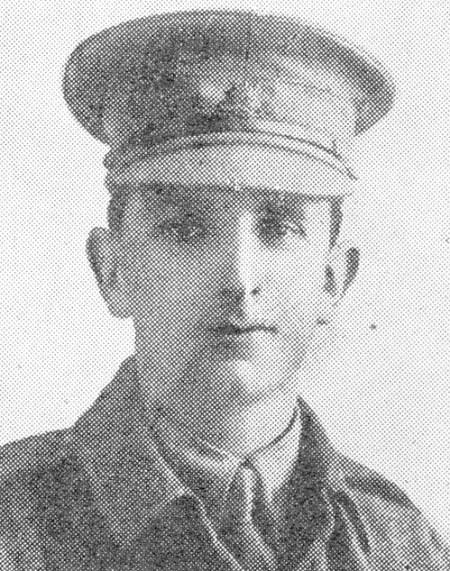
34th BATTALION A.I.F.
Captain: 717 Benjamin Greenup BRODIE.
Born: 4th May 1885. Parramatta, New South Wales, Australia. Birth Cert:17975/1885.
Married: 1911. Sydney, New South Wales, Australia. Marriage Cert:7973/1911.
Wife: Mary Anastasia Brodie. nee: Russell. (1879-1947)
Died: 5th March 1918. Killed in Action France.
Father: William Alfred Brodie. (1854-1937)
Mother: Georgina Sophia Louise Brodie. nee: Winchombe. (1858-1906)
INFORMATION
Benjamin Greenup Brodie enlisted on the 18th of July 1915 and was transferred to the C Company, 34th Battalion with the rank of Sergeant and was an original member. On 1st May 1916, the Battalion left by Train from Farley Station for the Showground in Sydney, equipped with kit bags and necessary clothing, and was reviewed in Moore Park by General: Gustave Mario RAMACCOTTI. On the following morning, 2nd May 1916 the men embarked on the transport HMAT A20 "HORORATA" and sailed at 4:00 pm".
(1) The voyage to England was without any unusual incidents and a good passage throughout. The first port of call was Albany, where three days were spent. Columbo was reached on Empire Day, 24th May. Here two days were taken up coaling and taking on provisions, etc. During the stay the Battalion carried out a route march through the town. Suez was reached on 8th June, where a party of Light Horse and some details were disembarked. Arriving at Port Said on 9th, the ship coaled and proceeded to Alexandria which was reached on 11th June 1916.
Here the Battalion transferred to S.S."Aragon", E867. Some Australian Details were on board, also a number of Tommie's going to England on Furlough. Devonport was reached on the 23rd June, the Battalion disembarked at Plymouth at 1:00 pm and en trained during the afternoon for Amesbury, arriving at midnight and marching to hutments at No: 1 Camp, Larkhill. Here the Battalion settled down to hard training, which included Route Marching, Trench Digging, Bomb Practice, Musketry and general Camp Routine. Later the Battalion moved to the No: 25 Camp and finished off their training, which included six days' battle practice and field work at the Bustard Trenches.
Four days' disembarkation leave was given from 6th to 10th July and Benjamin was promoted to 2nd Lieutenant on the 12th August. and again granted King's Leave from November 5th to 9th. Whilst here the Official Colours were issued. Purple over Green (Oval), these replacing the Colours presented to the Battalion (Old Gold on Shoulder Straps) by the Ladies of West Maitland. A Signal Section was formed at Larkhill under Lieutenant: Harold Henry McMINN. The weather in England was mostly fine until the latter part of training, when a good deal of rain and snow caused inconvenience. In October the 34th Battalion was reviewed at a Divisional Parade by His Majesty King George V at Bulford.
The 34th Battalion left Larkhill on the 21st November and en trained at Amesbury for Southampton, embarking on the S.S "Arundel". The transport section left by S.S. "Princess Victoria". The Battalion arrived at Le Harve, France on the 22nd November 1916. Disembarkation commenced at 8:00 am and the Battalion marched to No;1 camp on the Hill, arriving at 2:00 pm. The men carried heavy loads, in some cases amounting to miniature Q.M.' Stores. The march over cobblestones was very tiring, notwithstanding the many route marches which had been carried out at Larkhill. However, after bathing their feet and receiving treatment, as well partaking of a good meal, some spent a comfortable night.
The following morning the Battalion moved to Le Harve Railway Station, leaving D Company behind. On arrival at the Station en training commenced at 8:00 am and the train left at 11:15 am. The journey was slow and occupied until 4:30 pm on the 24th. On arrival at Bailleul the men de trained and marched to Outtersteene. D Company arrived at 4:00 pm the following day. The Battalion rested here in billets for two days previous to taking over garrison duties in the Line at Armenties. The Commanding Officer Lieutenant Colonel. Malcolm St John LAMB. with the Adjutant, Company commanders, N.C.O's and Specialists went into the Line to inspect Trenches, Stores, Plans and to arrange for the taking over this Section of the line on the following day.
Benjamin was promoted to Lieutenant on the 11th February 1917. On the 17th May 1917 the Germans tried to raid the 34th Battalion at Le Touquet. The enemy this time employed the British method of a very short, though heavy, preliminary bombardment. The preliminary registration however had been observed and the Australian counter-barrage came down within 10 seconds of the S.O.S signal fired by Lieutenant: 4559 Frederick Murchison WAUGH. M.C. 34th Battalion. A party of Bavarians attempted to enter by a gap in the front line. One climbed the parapet and said "Hands Oop!" He was at once shot, and fell dead into the trench. Lewis Guns, in particular that of Private: 1416 Joseph Edward KIRK. M.M 34th Battalion, drove the enemy off.
On the 18th of May the previous night's attempt against the 34th Battalion was repeated after a short heave bombardment. On the S.O.S. being fired by Lieutenant: 1118 William Wright EDMONDS. M.C. 34th Battalion, the protecting barrage again came down instantly, but the enemy entered a gap near a sector in which cylinders had been installed for an impending release of gas. Working alone the line, they bombed a Lewis Gun Team, wounding three. The remaining men, Lance Corporal: 1530 James HAM D.C.M. 34th Battalion and Private 1248 Bertram Guy Taylor M.M. 34th Battalion, continued to fire, and killed all five intruders.
(3) Lieutenant: Benjamin Greenup BRODIE and the scouts afterwards went out, driving back the German covering party and stretcher-bearers, brought in a wounded Baverian Pioneer, and evidence and identification from 11 Germans who had been killed.
1st June 1917.
PLOEGSTEERT WOOD 2:30 am. Small silent Raid with a strength of 2 Officers, 2 NCO's and 22 men was put over from "B" Coy's Sector against the enemy's front line. Object to gain identification Kill Bosches and destroy dugouts. The Raiders were divided into two parties. Lieutenant: Ernest SHANNON with 12 men to enter the enemy trench from the right Lieutenant: 717 Benjamin Greenup BRODIE. and 12 men to enter from the left. Both parties to work towards the center. The enterprise was entirely successful and was only marred by the death of Lieutenant: SHANNON a very gallant and efficient Officer.
The Right party entered enemy's trench without opposition but after bombing the first dugout, were attacked by a number of the enemy who issued from the rear of a second dugout. Lieutenant: Ernest SHANNON was killed by a bomb thrown by one of his own party. Our men immediately attacked the enemy and forced them back to the dugout, where they destroyed them by throwing in bombs.
The left party Lieutenant BRODIES met considerable opposition in passing through the enemy wire, but succeeded in entering the trench and destroying two dugouts and the enemy who occupied them. As it was now broad daylight and the enemy opposition increased, the parties withdrew to our own front line. The men of Lieutenant: SHANNON's party displayed great determination and bravery in bringing back his body in broad daylight under heavy fire from the enemy trenches. The original time set down for this enterprise was 1:30 am but by order of higher authority it was postponed to 2:30 am to coincide with other enterprises which were supported by artillery fire on our right flank.
As our own enterprise was a silent one, and it was in broad daylight at 3:00 am this only allowed 30 minutes for the crossing of "No Mans Land". The negotiation of the enemy's wire and the cleaning up of his trenches. This restriction of time was a great handicap to the enterprise. Enemy artillery active battery work on our batteries in rear of Ploegsteert Wood. 5:00 pm Headquarters partially destroyed by enemy artillery fire. Lieutenant: SHANNON buried in Military Cemetery in rear of the wood.
(34th Battalion War Diary)
6th June 1917.
BATTLE OF MESSINES
(1) At 10 pm on the 6th June 1917, the Battalion left its billets fully equipped for the assembly Trenches. The order of march being "D", "A", "C" and "B" Companies. All went well until just before reaching Gunners Farm, where the enemy was putting a number of Gas Shells over and Masks had to be put on. Ploegsteert Wood and the back area were receiving particular attention. All Companies were greatly delayed of the amount of Gas in the Wood, which resulted in a number of men being gassed on the way up and many others were completely exhausted. A number of men lost there way in the darkness and smoke. Many could not see at all and had to be led back by there comrades. I many cases it was the blind leading the blind. After a grueling March, the first arrivals reached the Assembly Points 30 minutes before Zero Hour, while the last company arrived only 10 minutes before Zero.
On the 7th June, seven seconds before Zero Hour, which was 3.10 am, four Miles on our front were fired. There was a violent swaying as if an earthquake had taken place and the men in many instances were thrown together. The sky was brilliantly illuminated by the explosives and terrific Artillery fire, the sound of which could not be heard over the intense Machine Gun Barrage. The men left the Trenches immediately and there were a number of casualties on the parapet owing to the heavy enemy Barrage. The supports were also being shelled and the Reserve Company ("D") suffered considerable losses. The weather was hot and sultry and every one felt the trying march.
The Battalion passed through the 35th Battalion in the vicinity of the enemy's original Front Line, near Ulsters Switch. The enemy fire had been very severe up to this point and many men were lying here. A halt in our Barrage gave the Company Commanders an opportunity of Checking their Compass Bearings, defining their limits, and getting into position for the next advance. At the left of the Barrage a fine assault in complete waves was made. The men gained their objective in fine style behind a perfect Barrage and commenced consolidating their position. The mopping up of the Trench System was soon accomplished and many of the enemy were killed in their Dugouts. By 5.30 am fair cover had been obtained on the Consolidation Line. At 6.30 am Enemy Machine Guns were located in a re-bout in "Uncertain Trench" and heavy Artillery was brought to bear on them with good results. By 7.30 am the Black Line was down to two thirds of its depth and linking up by Companies and Platoons were in progress. The enemy was seen moving along "Uncertain Trench" and also reports were received from the 33rd Battalion that the enemy was massing 1,000 yards in front. Reports of enemy movement continued throughout the early part of the morning, but Artillery co-operation helped to disperse the tendency and during the day no organised counter attack was attempted.
At 8.30 am the Line was well dug along the Front and affording excellent protection for the men. By 9.30 am only one gap remained between "A" and "B" Companies in the full length of the consolidation of the "Black Line" to the River La Douve. The Trenches being now well down, widening and sandbagging were now in progress and at 11.30 am showed very plainly in an Arial Photo as a good defensive Trench. There were repeated inquiries for water from the Front Line. Carrying Parties were suffering heavy casualties and were completely knocked up with the long distance.
At 1.40 pm Captain: Arthur Sidney WHITLOCK with "D" Company advanced to the Green Line, without Artillery support, owing to an alteration in the Zero Hour not reaching him. At 2.45 pm he reported by Runner that, having waited 30 minutes and no Artillery Barrage as arranged have been put down, he had advanced to the Green Line and was consolidating. by 7.30 pm all Companies reported that their positions were well consolidated. Just before midnight Captain: Arthur Sidney WHITLOCK was killed between the Green and Black Lines, and Captain: Robert Joseph STEWART took command of "D" Company. Patrols under the Scout Officers were sent out during the night and encountered enemy Patrols which were dispersed. A number of enemy patrols were also killed by our Machine Gun and Lewis Gun fire earlier in the night. At 5.00 am on the 8th June an enemy Plane over, flying low and inspecting our new position.
Our casualties to date had been 8 Officers and 236 other ranks. Captain: Arthur Sidney WHITLOCK and Lieutenant: 584 Leslie William Roy WARNER K.I.A. Lieutenant's Lieutenant: William Walter MATTHEWS Lieutenant: Hector Reginald McLEOD, Lieutenant: Bruce Gray McKENZIE, Lieutenant: Benjamin Greenup BRODIE, Lieutenant: Thomas Clifton PITTAWAY, and Lieutenant: Frederick Winn WALKER wounded.
Benjamin was Wounded in Action during this action, where he received a Gun Shot Wound to the foot and was evacuated to the Casualty Clearing Station before proceeding overseas for England where he was admitted to the Southern General Hospital on the 11th June.

After being discharged Benjamin was marching in to Tidworth Camp until he proceed overseas for France on the 27th August 1917 and rejoined his unit.
WARNETON
3rd March 1918.
(2) 9:00 am. Weather dull and very cold. Our Artillery fairly active throughout the day, Enemy Artillery quiet. 11:45 am. 9th Infantry Brigade Raiding Party of 300 strong racked enemy trenches opposite 33rd Battalion Sector on our right. Raid very successful 1 Officer 11 other ranks being brought back prisoners. 34th Battalion casualties in the raid were 1 other ranks Killed 3 other ranks Wounded. There was no Artillery retaliation on our Sector.
Lance Corporal: 2597 John Henry JOHNSTON.
(1) At 11.45 pm on the 3rd March a combined 9th Brigade Raid took place, which proved most successful. One Officer and 11 Other Ranks were brought back as prisoners. Our casualties were 3 wounded. The following night the brigade Raiders again entered the enemy Trenches and succeeded in killing 40 of the enemy.
Private: 7533 Walter Godfrey SMITH. 34th Bn AIF. Killed in Action 05/03/1918 France.
This Raid however was not so successful as the previous night. The Battalion losing one of its efficient Officers Captain: 717 Benjamin Greenup BRODIE. These Raids were well organised and the men, who had been especially trained, were well equipped. On the second night 100 men of the Battalion took part. The object of the Raid was to blow up Dug Outs and Tunnels. The Assembly Point was in the front of the 33rd Battalion Outpost near No: 7 Post in the front of the Sugar Refinery. Our men were in "C"Company of the Raiders, with Captain: 717 Benjamin Greenup BRODIE in charge. Lieutenant Colonel John Alexander MILNE, 36th Battalion was in charge of the Brigade Raid. Each man carried three of four Bombs. Some were Rifle Grenades, others Lewis Gunners, some Bombers and also Bayonet Men. Most were dressed in Tommy Uniforms. The Demolition Party carried special charges and detonators. It rained heavily during march to the Assembly Point and the men enjoyed the hot Cocoa and Coffee supplied by the Y.M.C.A on the way up.
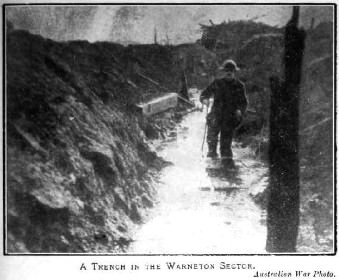
The Barrage opened at 12:50 am 1 Officer and 4 Other Ranks went forward to lay the tape for direction. Seven minutes later the Covering Party went out and laid in the enemy wire, 45 yards from his Trenches. This Party was armed with Lewis Guns, Bombs and grenades and was in charge of Sergeant: 841 William Samuel MUDFORD. The Main Raiding Party followed the tape and passing through the gaps cut the wire, entering the Trenches. Some strong opposition was encountered from the enemy, with Grenades and Machine Gun fire. Captain: 717 Benjamin Greenup BRODIE while standing on the parapet, directing operations, was hit in the chest and side by Machine Gun Bullets. Lieutenant: 64 Alfred James FELL. and his Party proceeded up the Communication Trench, while Sergeant: 145 Charles Henry NUNN worked along the Front Line to the left. Much opposition was met, as the enemy was apparently waiting in strong force. After six minutes they withdrew, bringing Captain: 717 Benjamin Greenup BRODIE out, who died on the way back. Lieutenant: 12944 Mervyn REES who was in charge of another Party, also returned after doing good work. Shortly afterwards the Covering Party under Sergeant: 841 William Samuel MUDFORD. returned and the 33rd Battalion again took over the Post. Later the enemy retaliated with heavy Shell Fire.

During the afternoon enemy Planes were very active and a squadron flew over. One of the Planes released a paper balloon carrying pamphlets. These were collected and sent to Divisional Headquarters. At 2.40 pm on 6th March Warneton Tower was brought down by the 5th shot of a 15 inch Gun, much to the delight of the Troops who heartily cheered its downfall. On 7th March the Battalion, on being relieved by the 24th Battalion marched to Hyde Park Corner and were conveyed by light railway to Romarin Camp. The following day the men marched to Steenwereck and entrained for Desures. Having de trained, the Battalion marched to Billets at Le Wast, arriving at 11.00 pm on 9th March. The Billets were comfortable but somewhat scattered. The weather was fine and mild.
The Transport traveled by road from Romarin Camp, arriving in grand condition and were complimented on their smartness. Training was carried out in the mornings, while the afternoons were devoted to sports. The men were given leave to Boulogne and St Omer. A Brigade School was formed under Major: Walter Arnold LeRoy FRY. and Major: Harry Lambert Edward Dixon WHEELER. became Commanding Officer of the Battalion. On 22nd March the Battalion left Le Mast and after marching to Lottinghem, entrained for Abeele, where it arrived the next day and marched to Waton. That evening Orders were received to be prepared to move and that all surplus baggage, including Officers' valises, was to be dumped. Leaving Waton on 24th March the Battalion marched to near Abeele and em bused for Wallon-Cappel in the Sercus area. On arriving at Hazebrouck the men de bused and marched to Le Belle Hotesse, and were under Orders to be ready to move at any moment.
(1) A Short History of the 34th Battalion, Illawarra Press; 1957.
(2) 34th Battalion War Diary
(3) BEAN, History World war 1 Vol IV

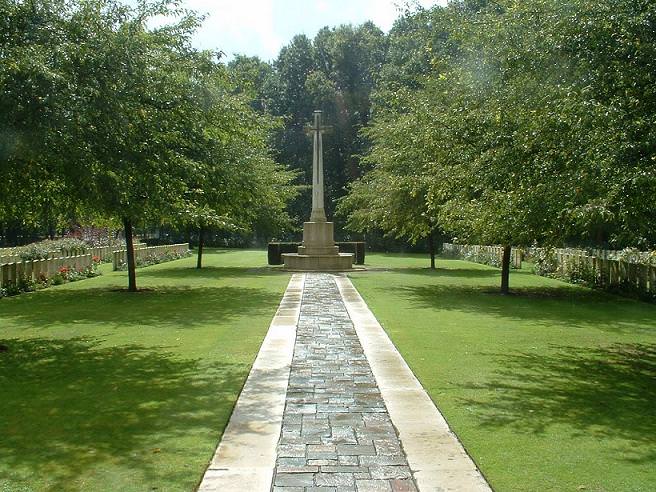
Captain: 717 Benjamin Greenup BRODIE was Killed in Action on the 5th March 1918 at Warneton and is remembered with honour and is commemorated in perpetuity by the Commonwealth War Graves Commission at the Berys Cemetery Extension, France.
(Photo; )
Family Information
Benjamin was a married 30 year old Commercial Traveller from Doncaster Street, Kensington, New South Wales upon enlistment. Ben's parents William and Georgina Brodie were married in 1887 at Paddington, N.S.W. Marriage Cert:1695/1887. Benjamin Greenup Brodie born 1885 at Parramatta, N.S.W. Birth Cert:17975/1885. and was Killed in Action in 1918 in France. Unnamed child born 1887 at Parramatta, N.S.W. Edward Marsh Brodie born 1890 at Granville, N.S.W. Birth Cert:14740/1890 and died 1947 at North Sydney, N.S.W. Death Cert:15833/1947. Robert Denman Philmore Brodie born 1892 at Parramatta, N.S.W. Birth Cert:28702/1892 and died 1938 at Chatswood, N.S.W. Death Cert:7472/1938.
Brother Benjamin Greenup Brodie, Lodge 263 Coolamon
Military Records
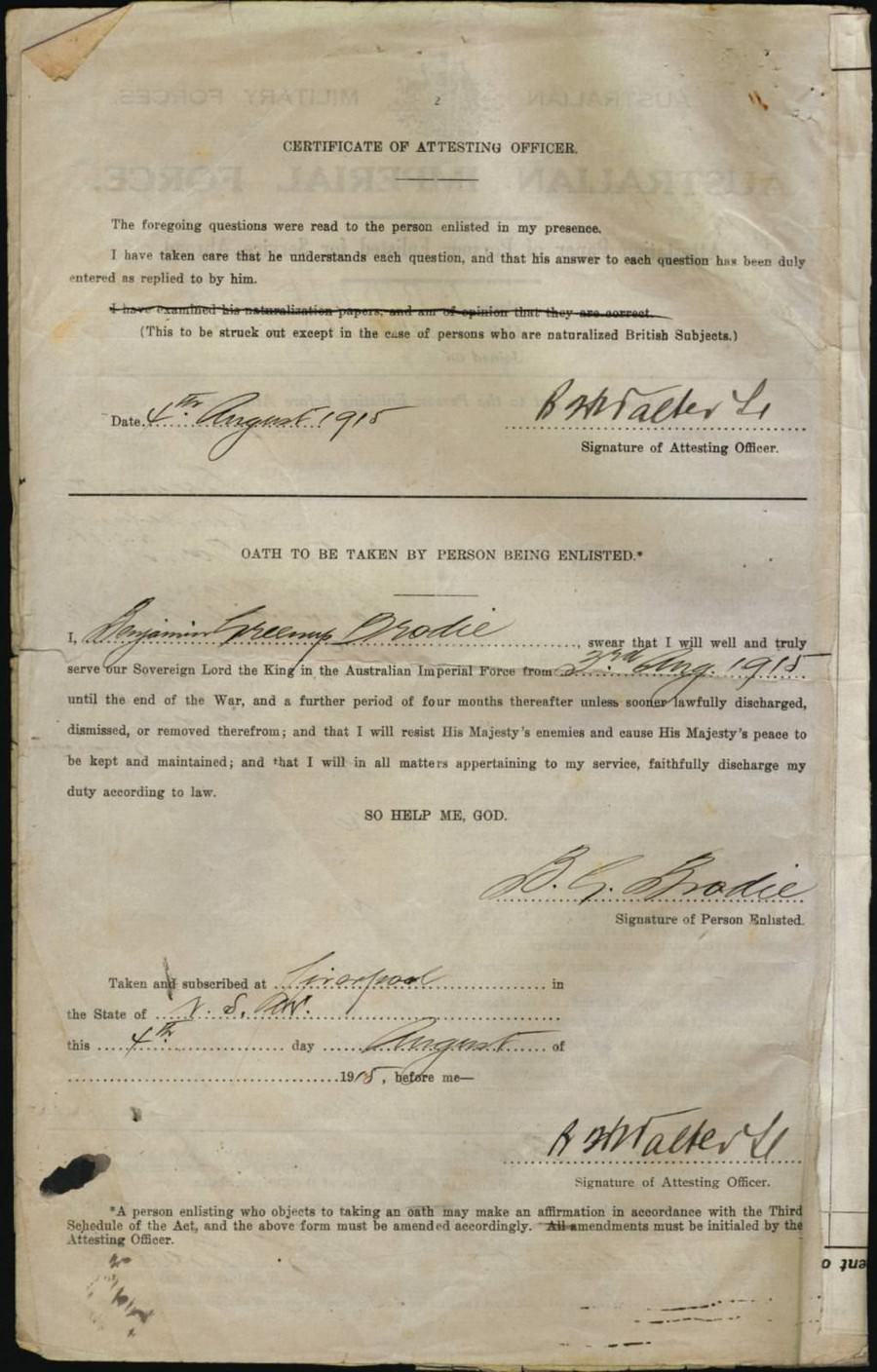
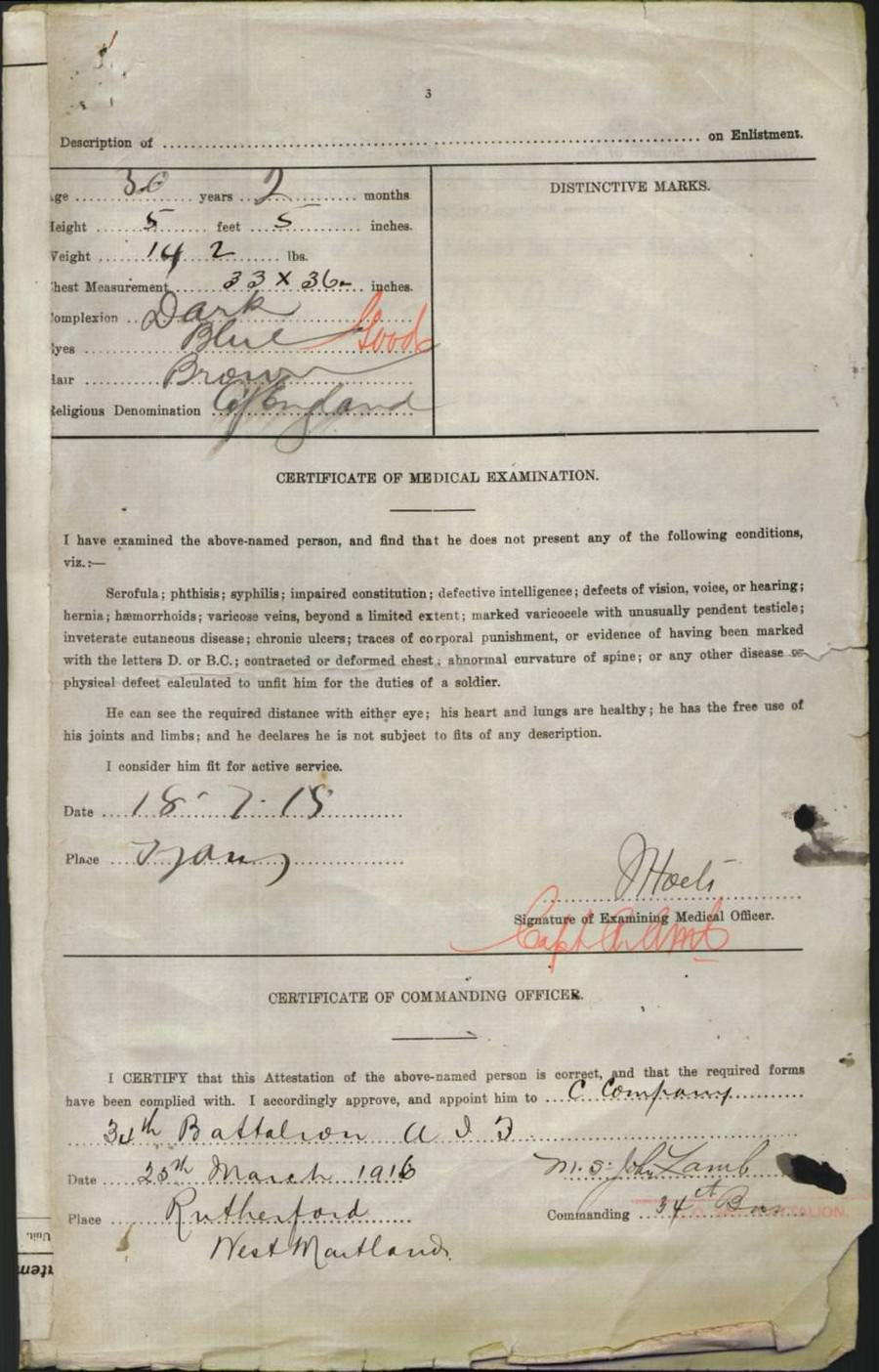

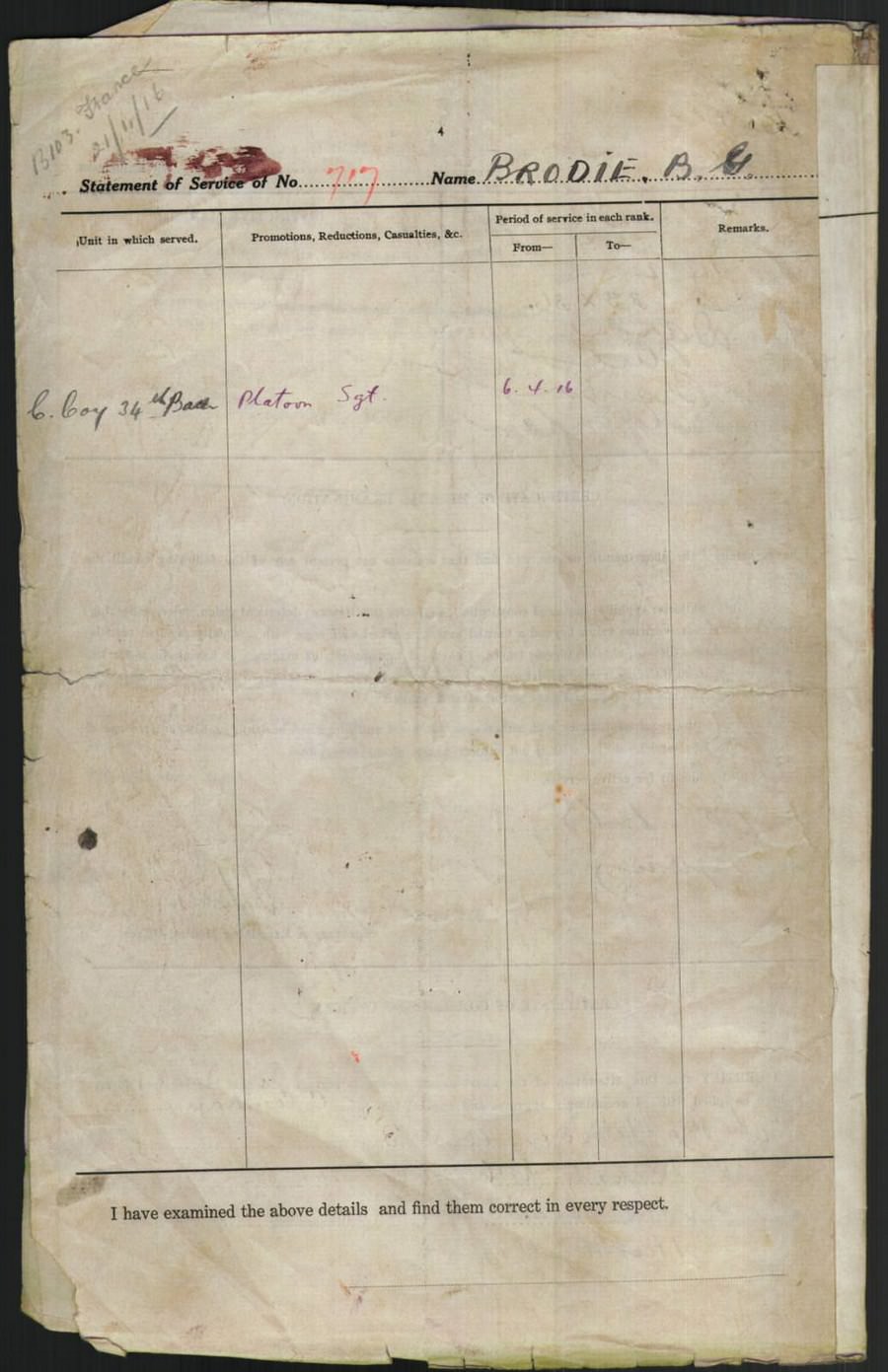
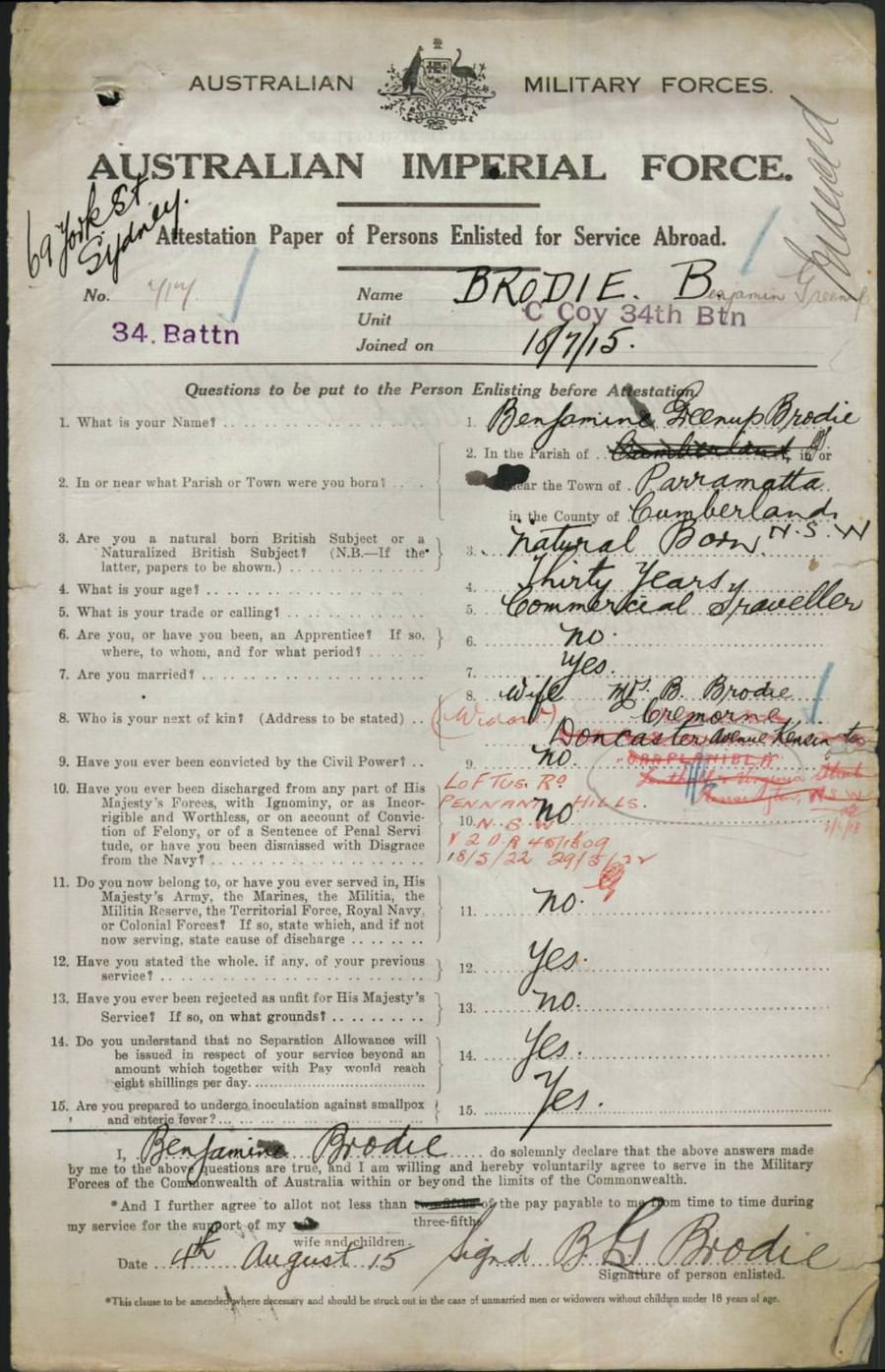
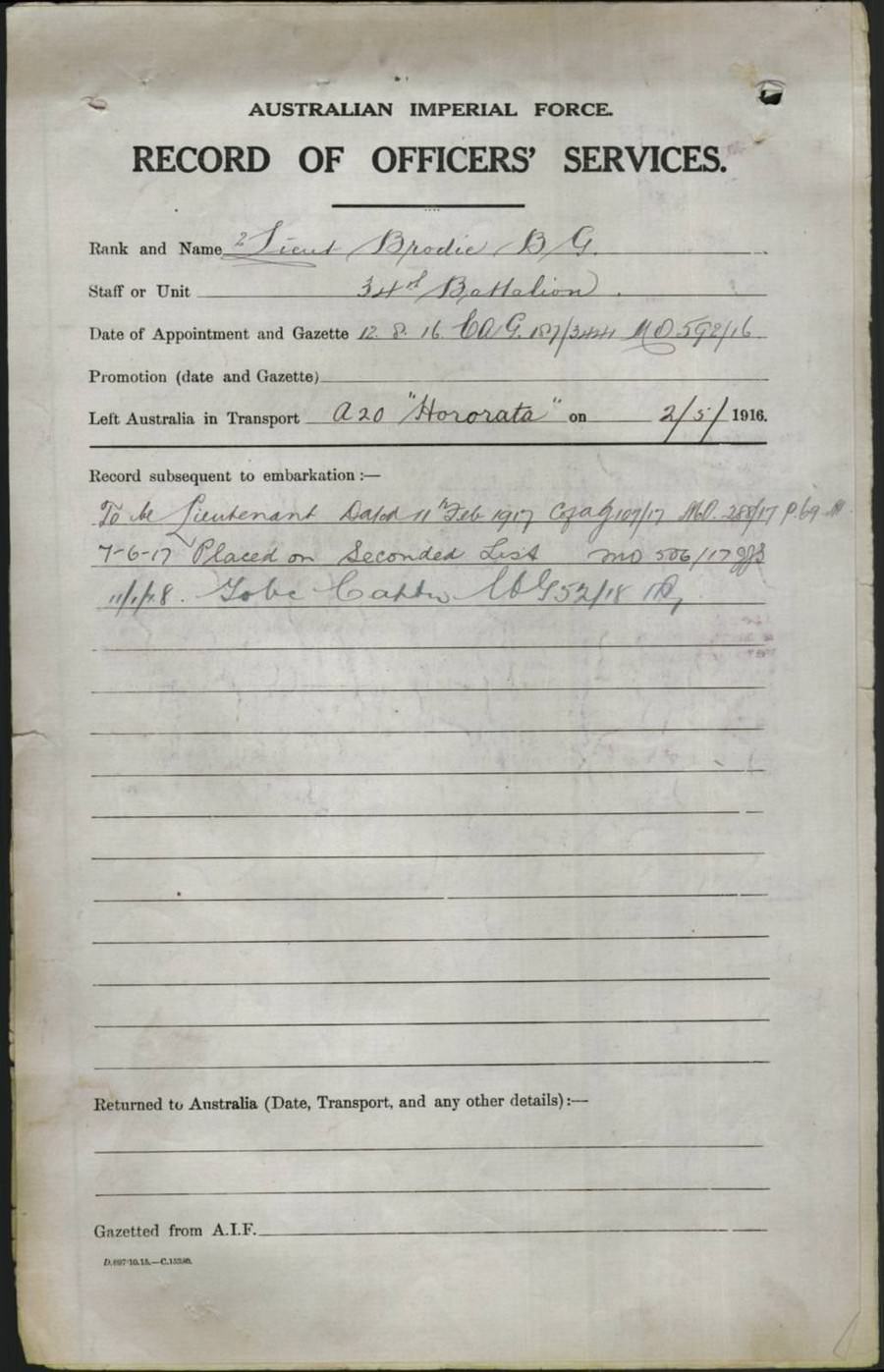

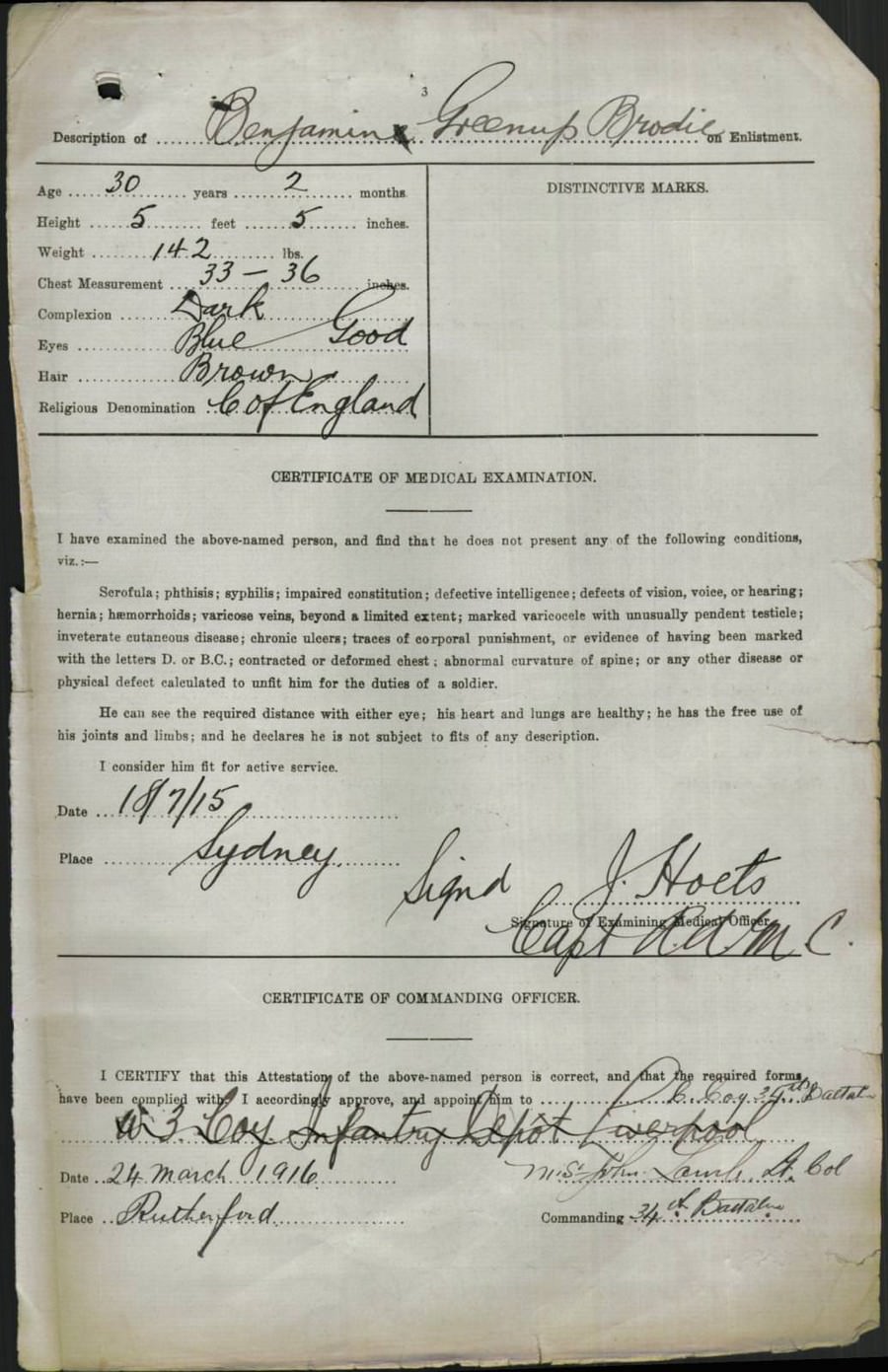


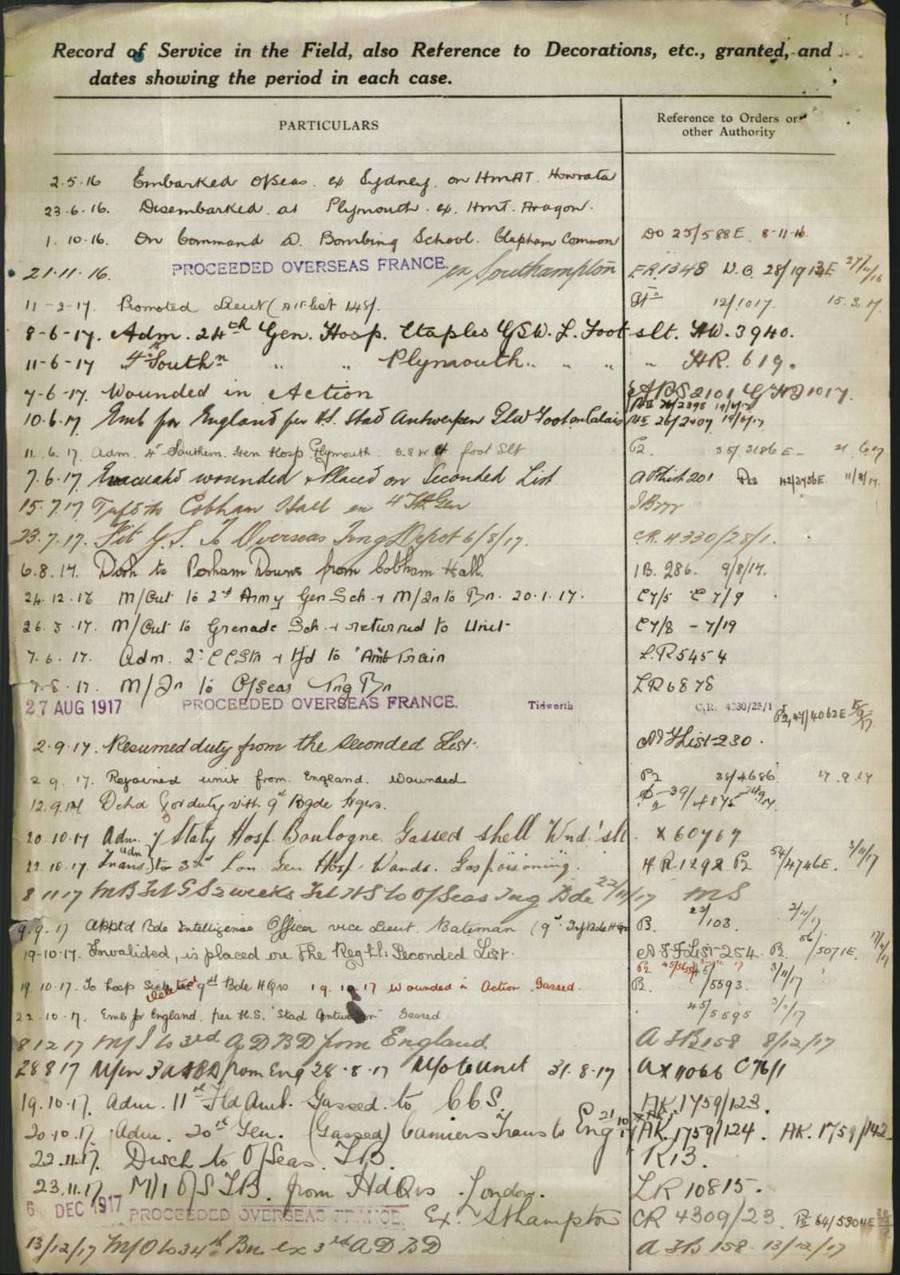
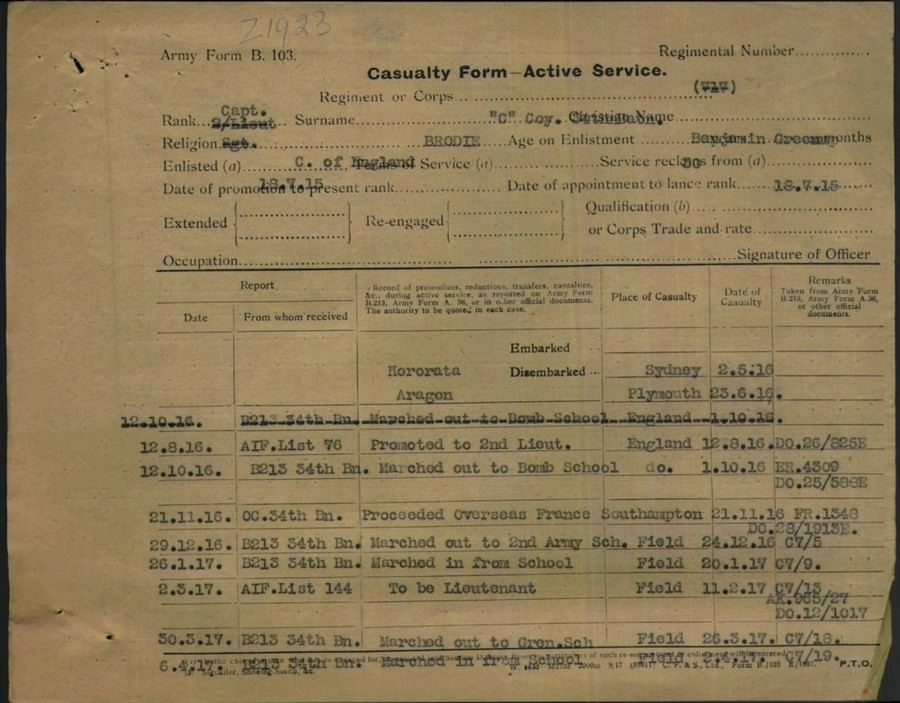
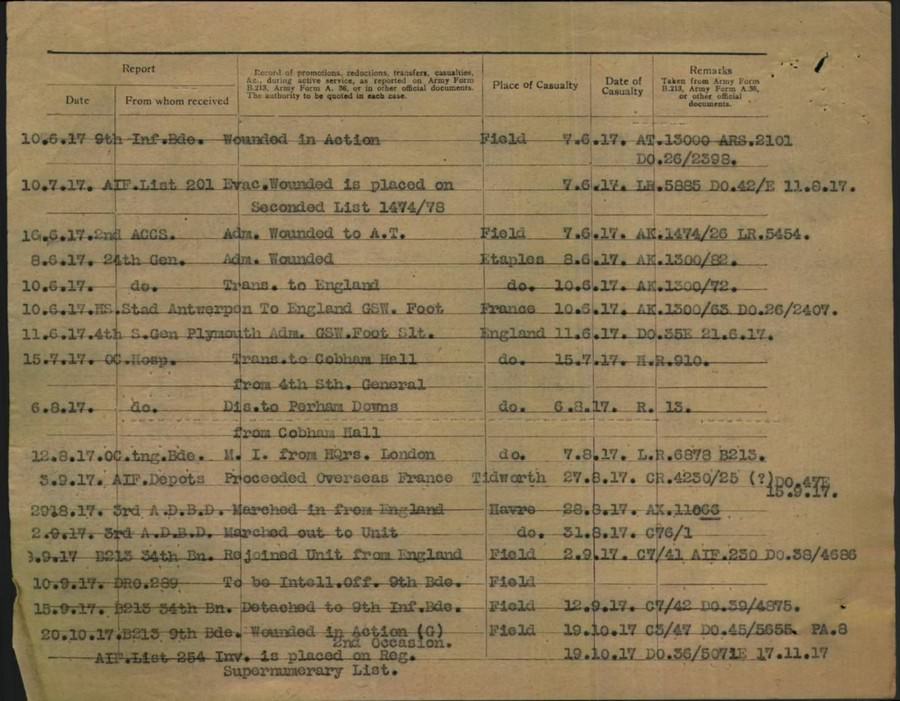
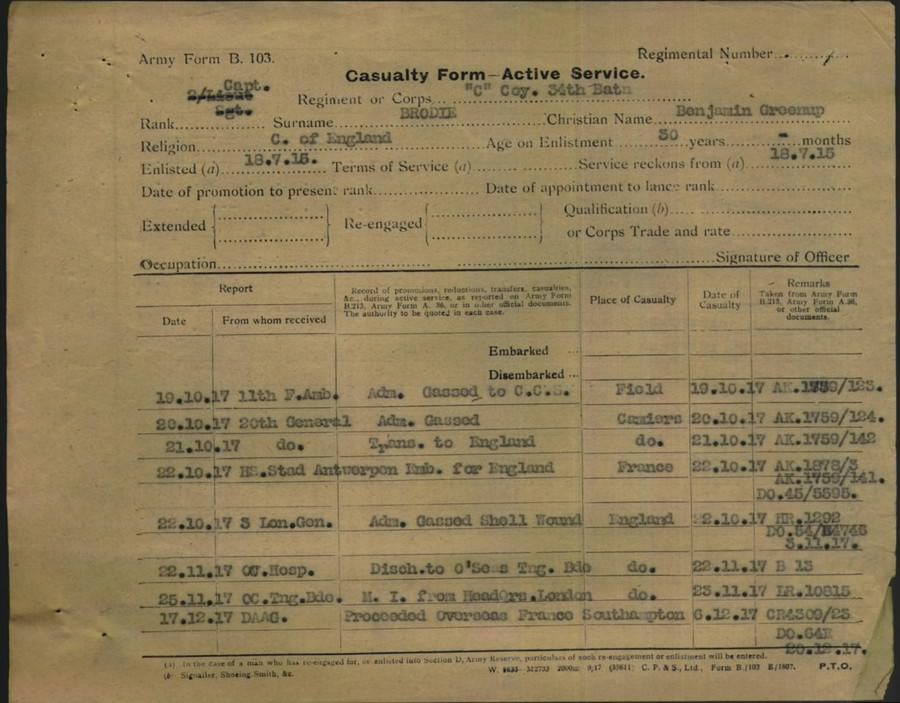
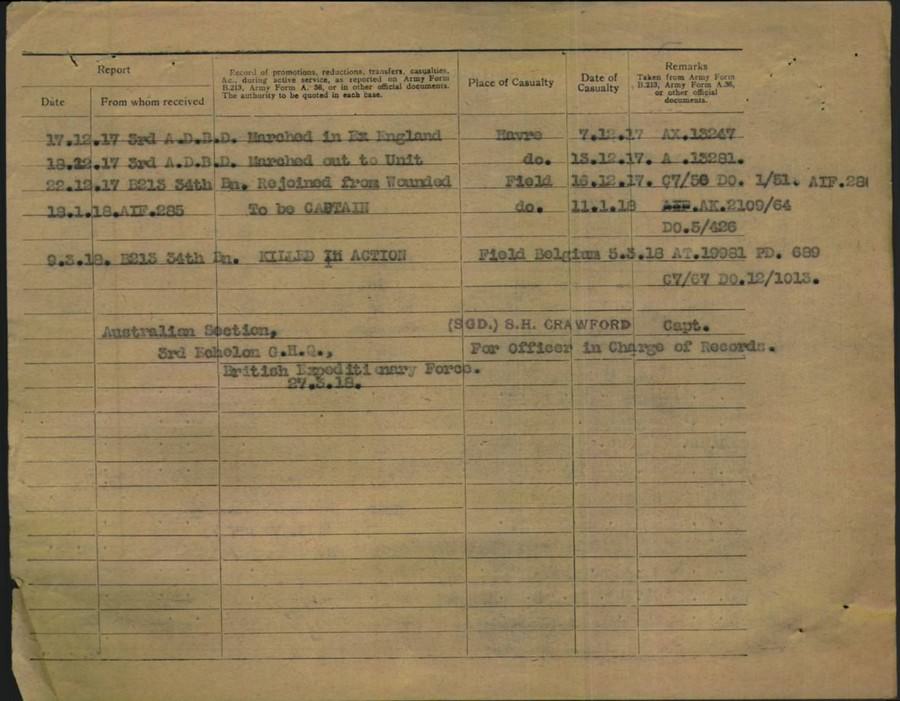
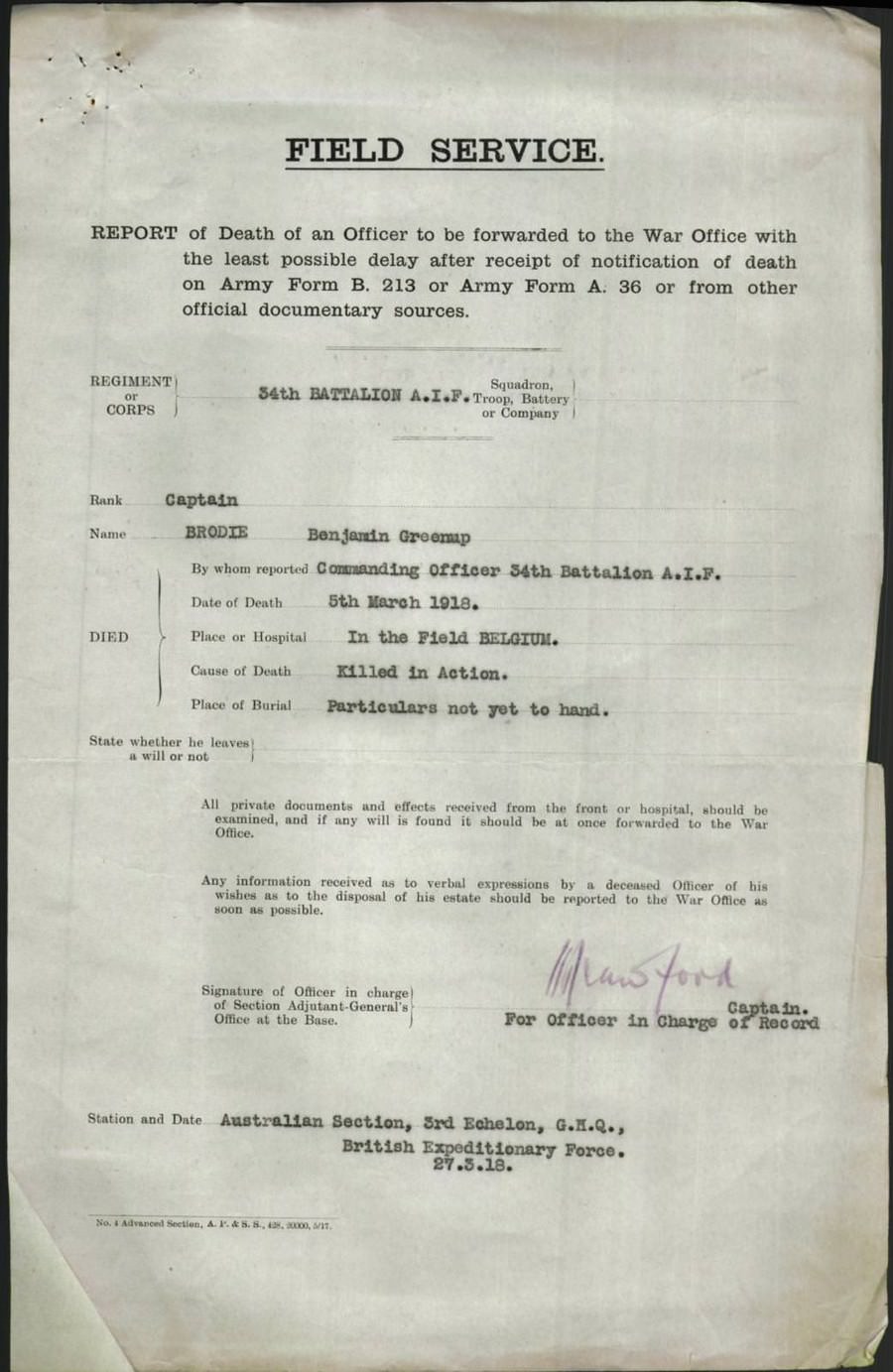
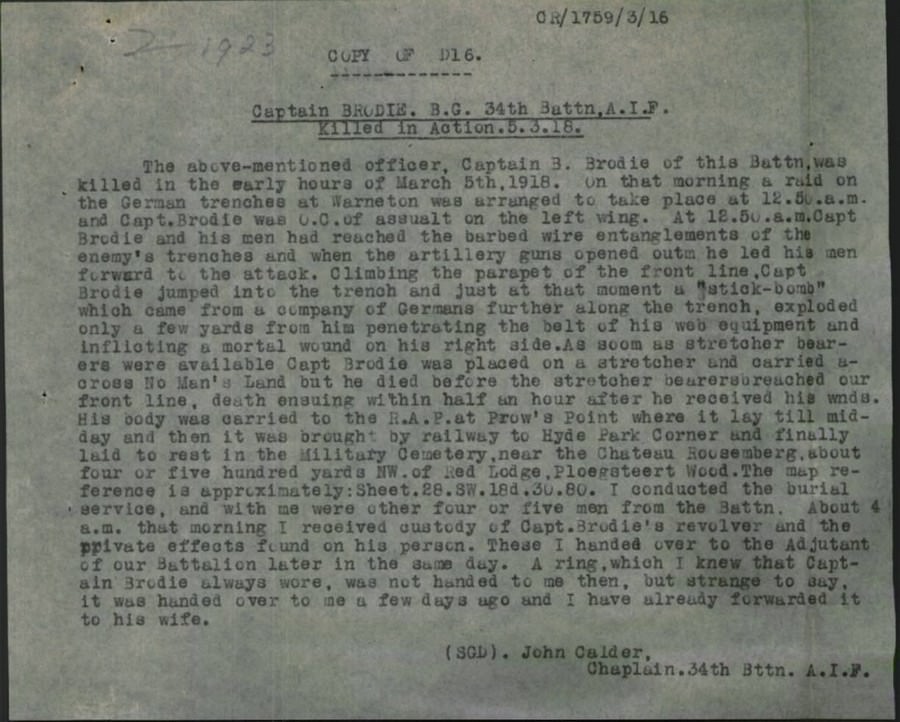

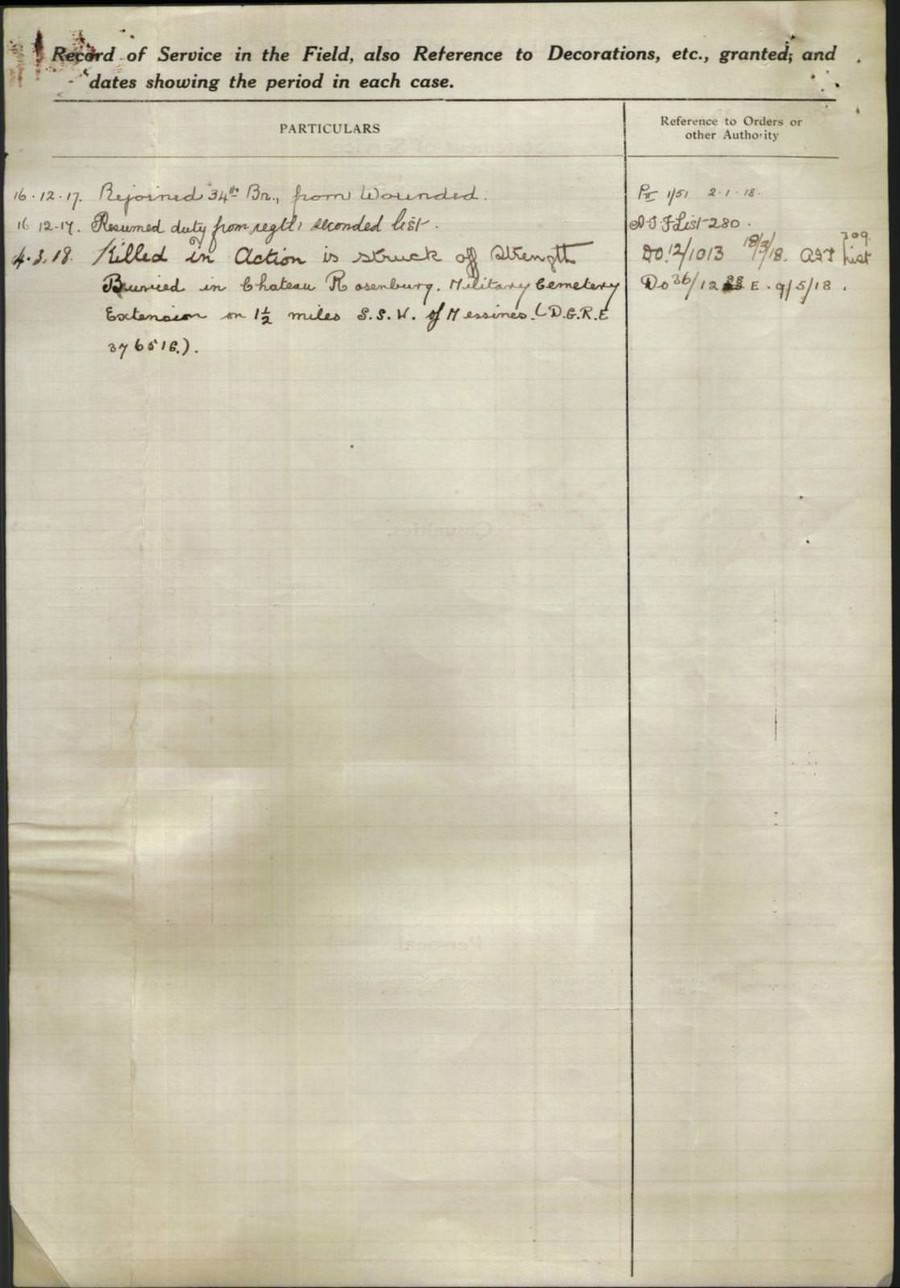


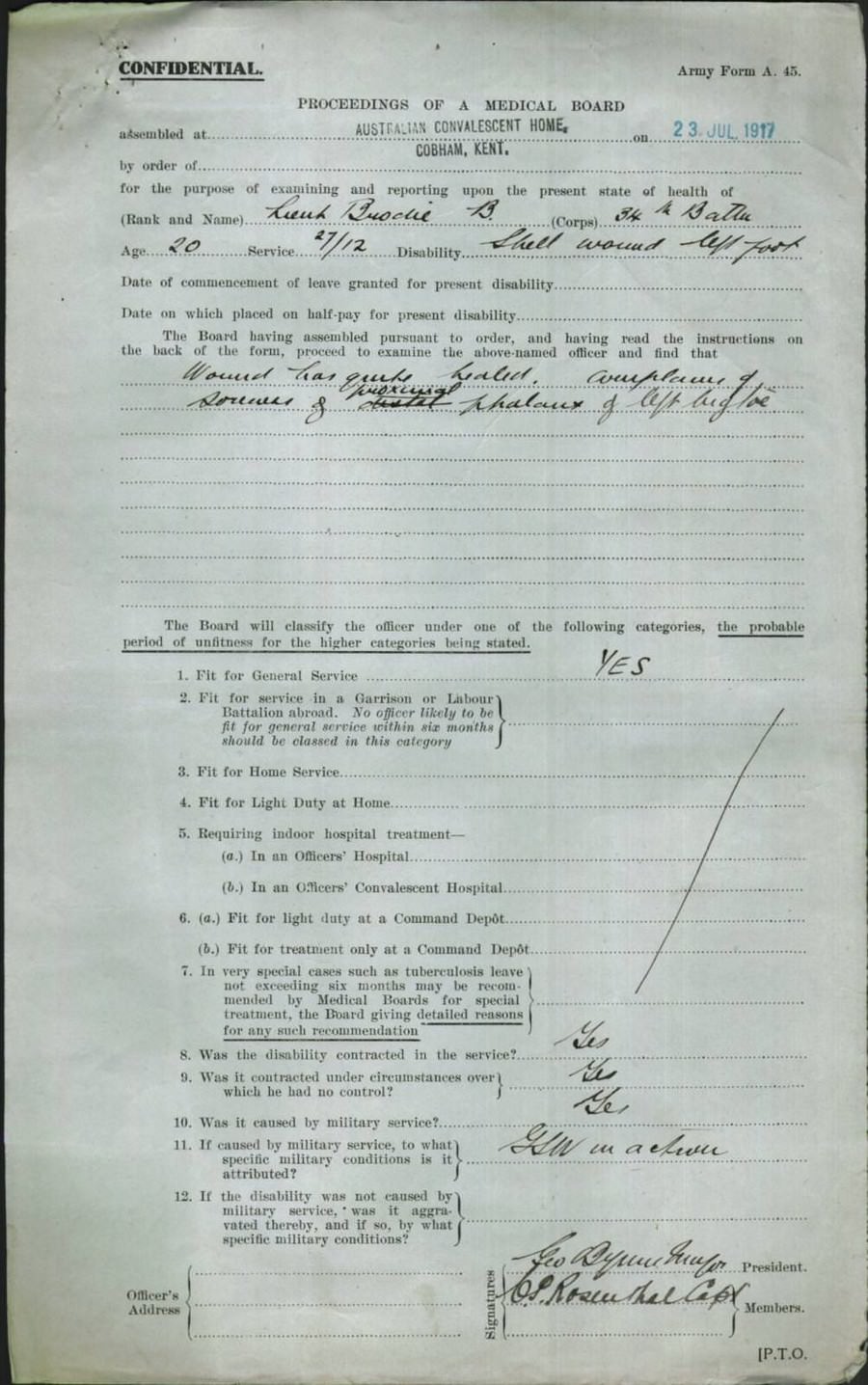
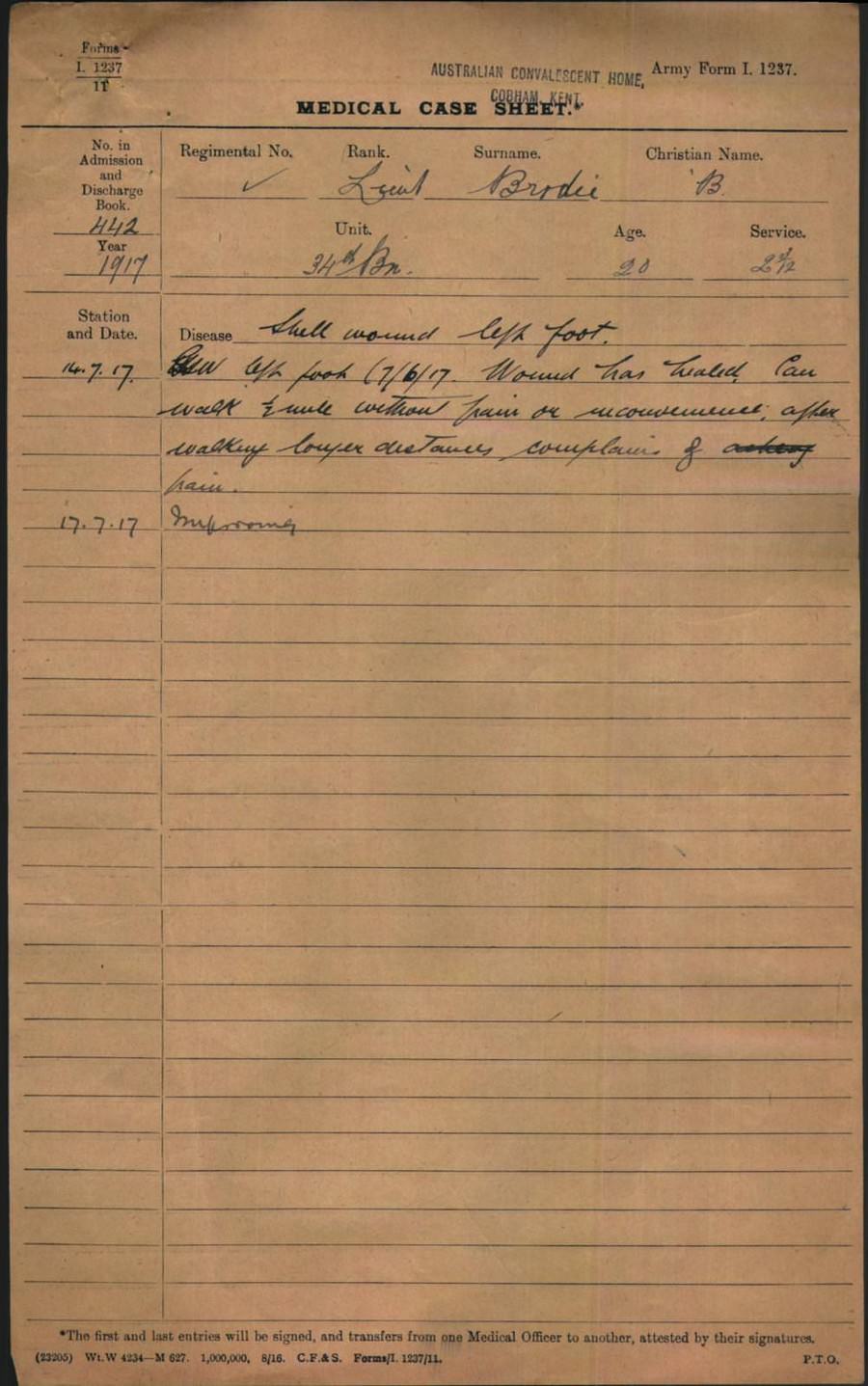

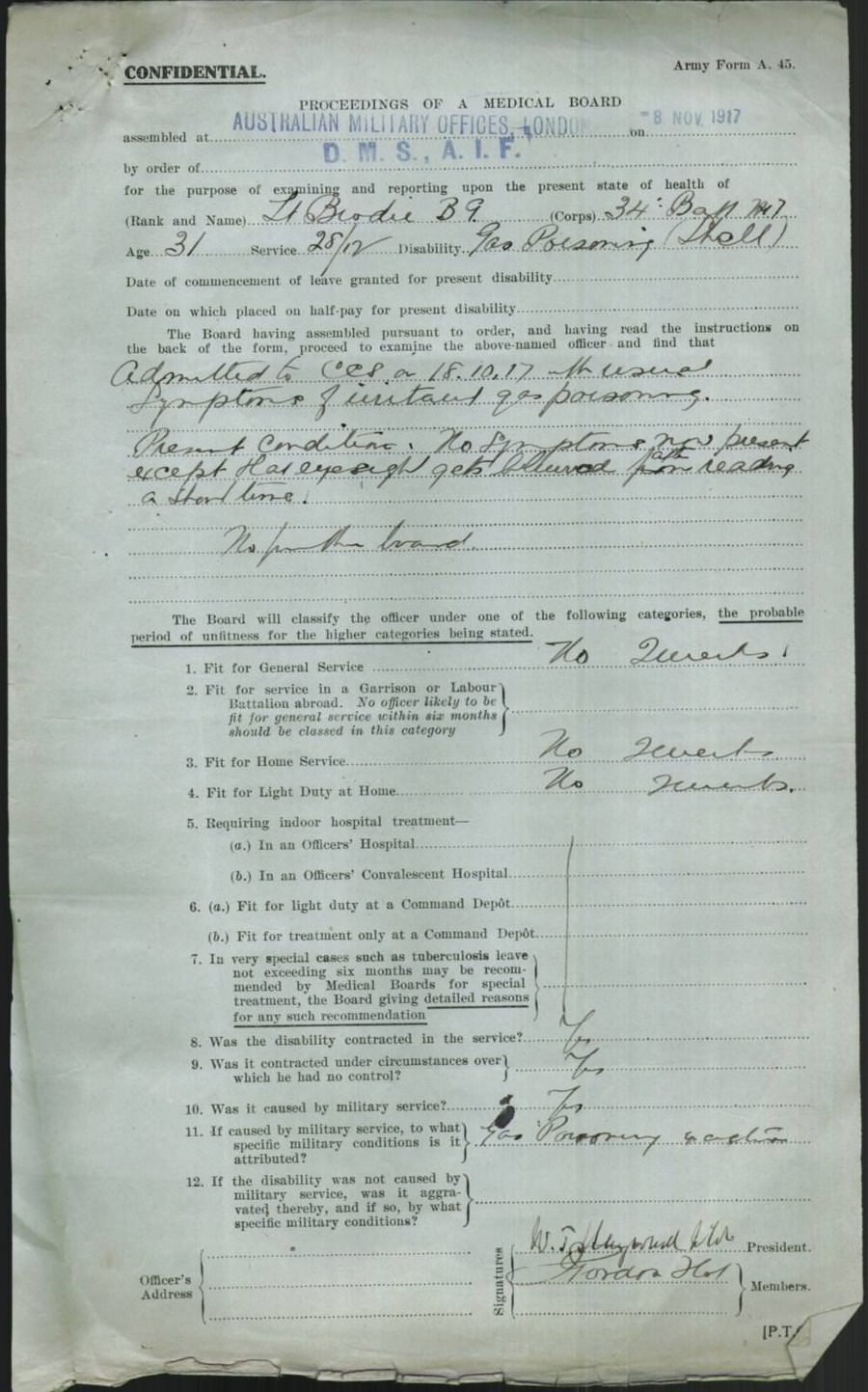
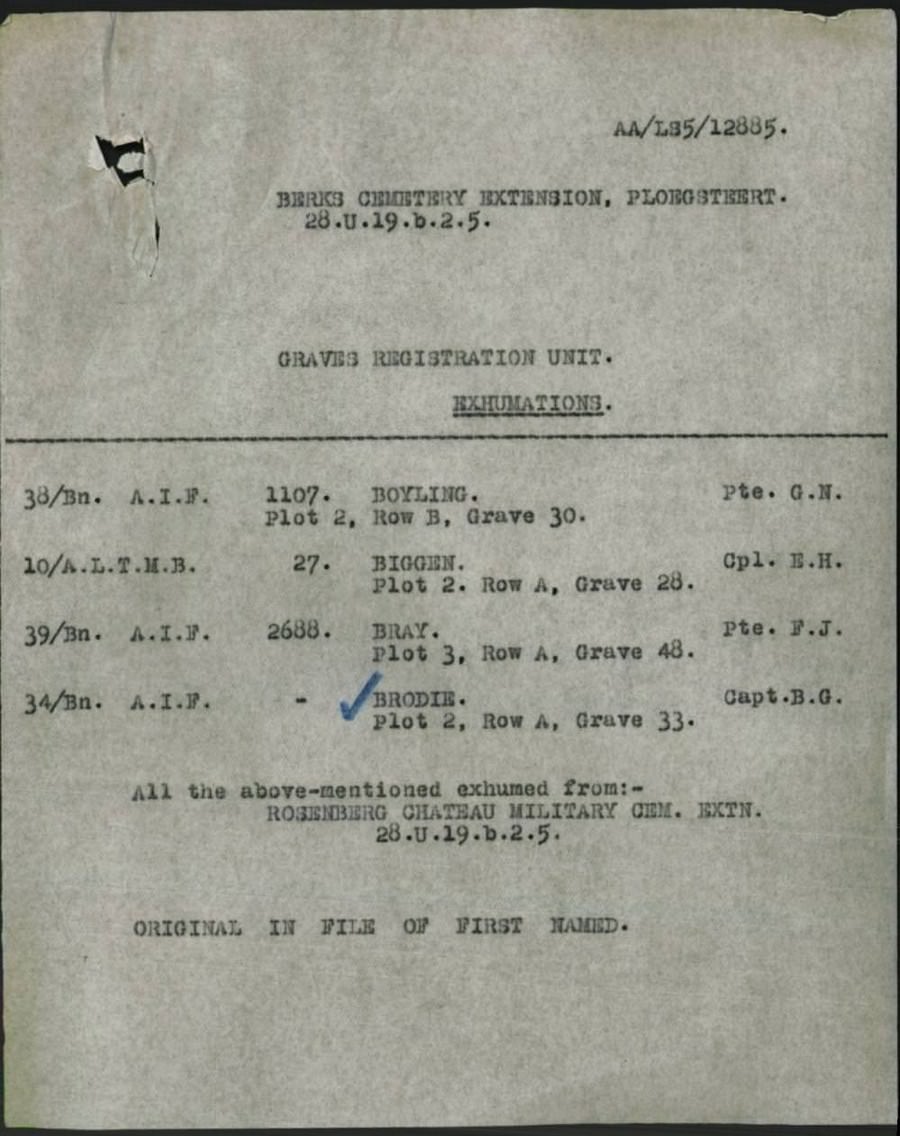

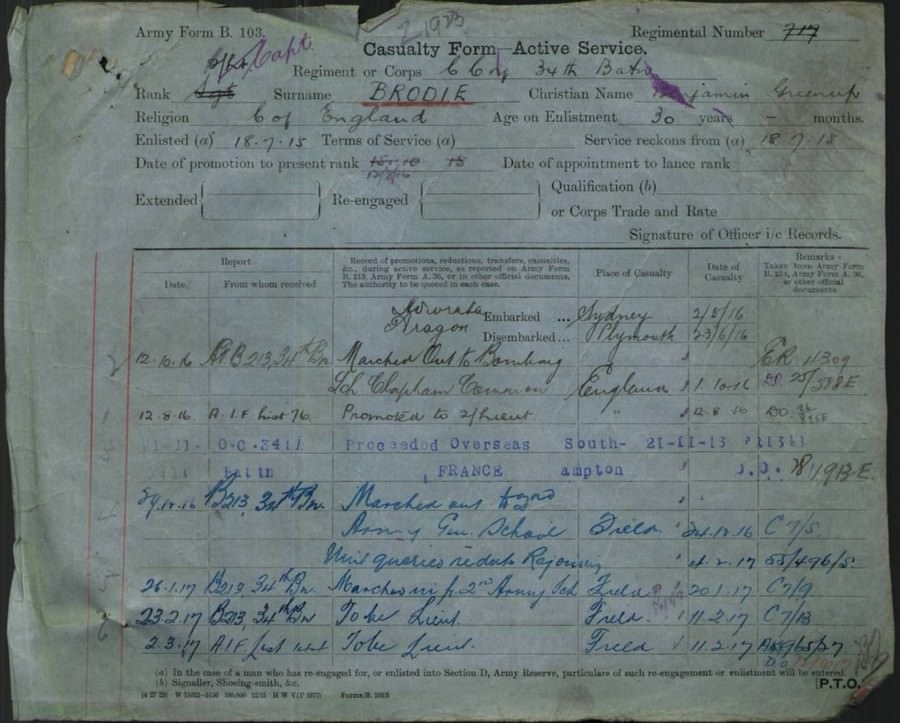
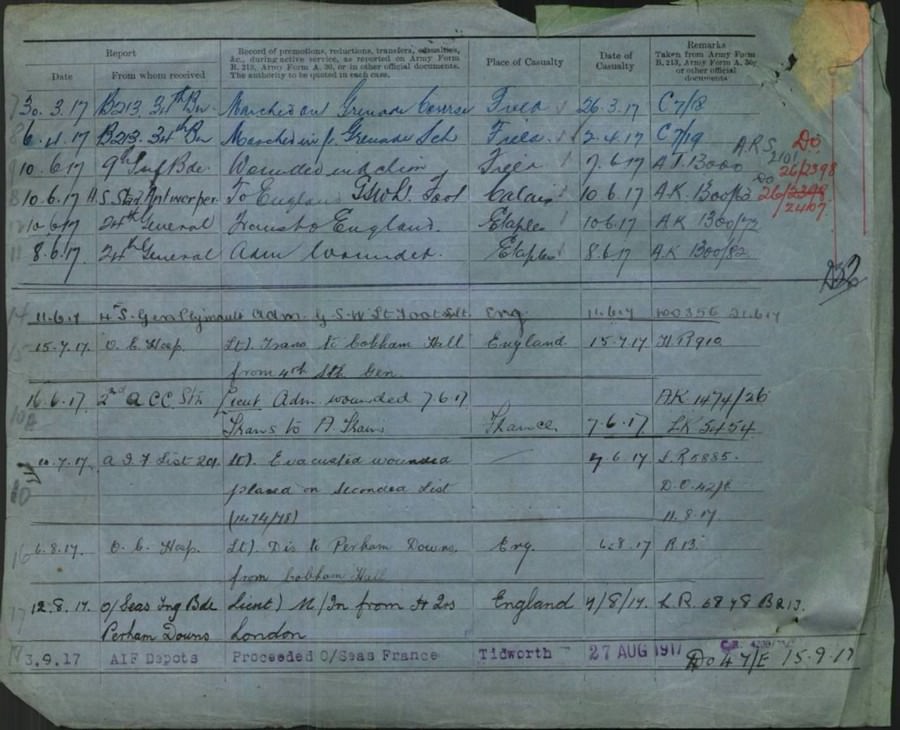
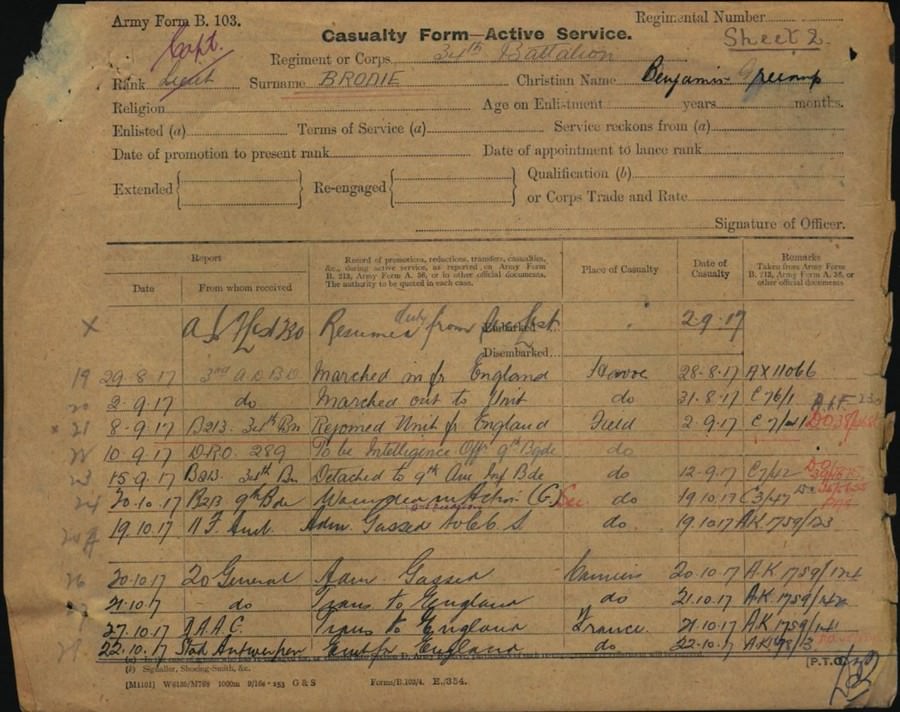
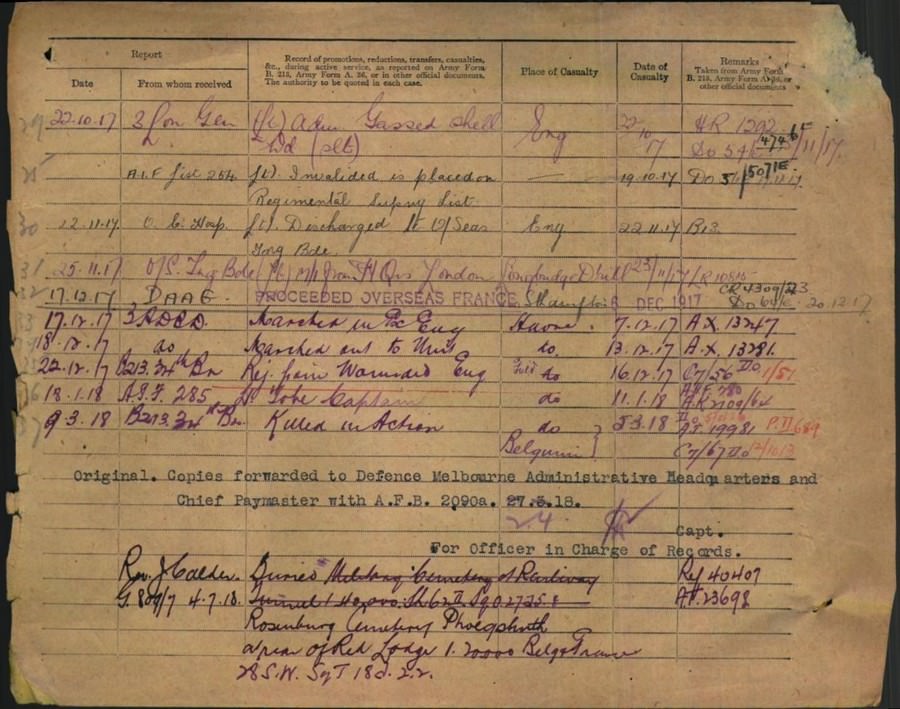
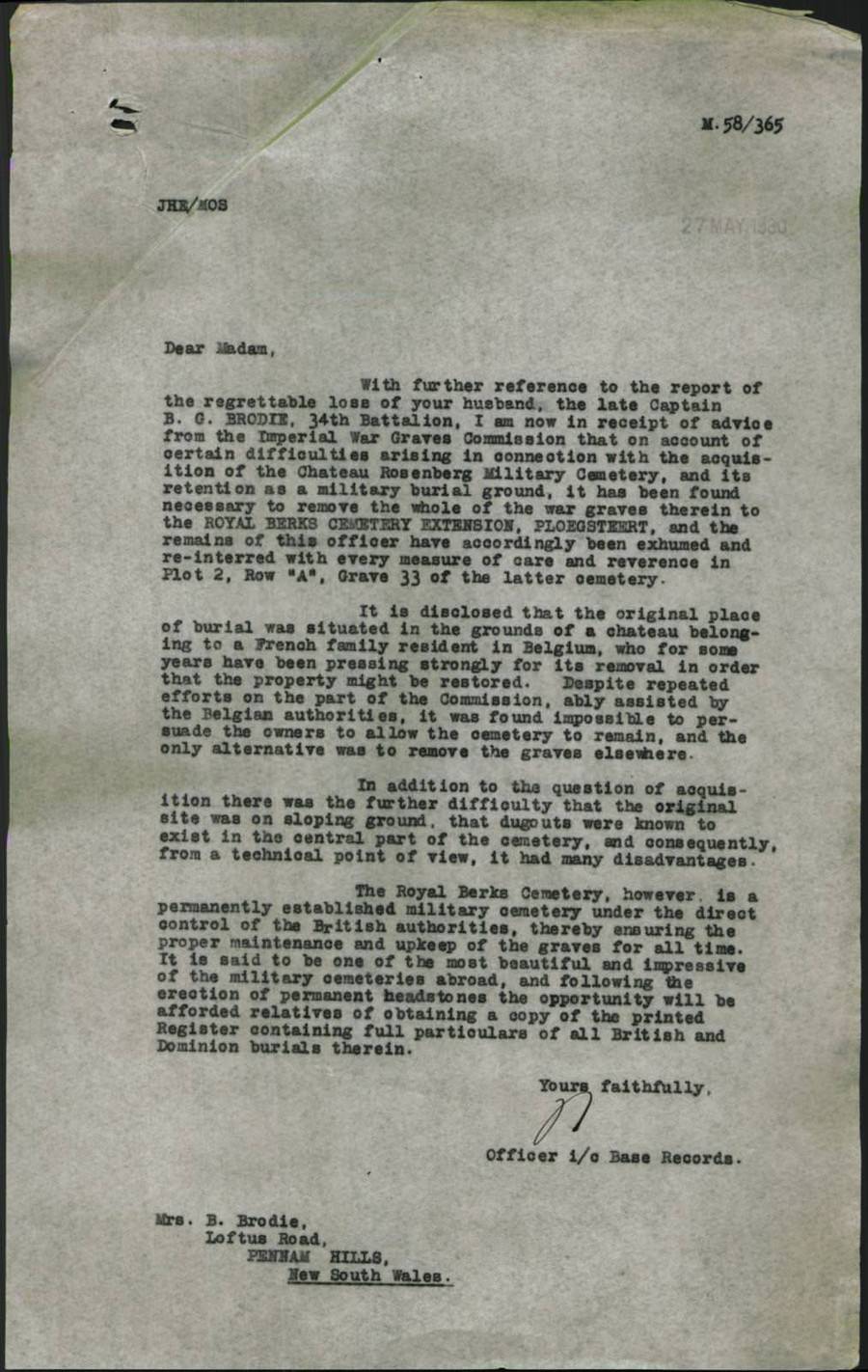
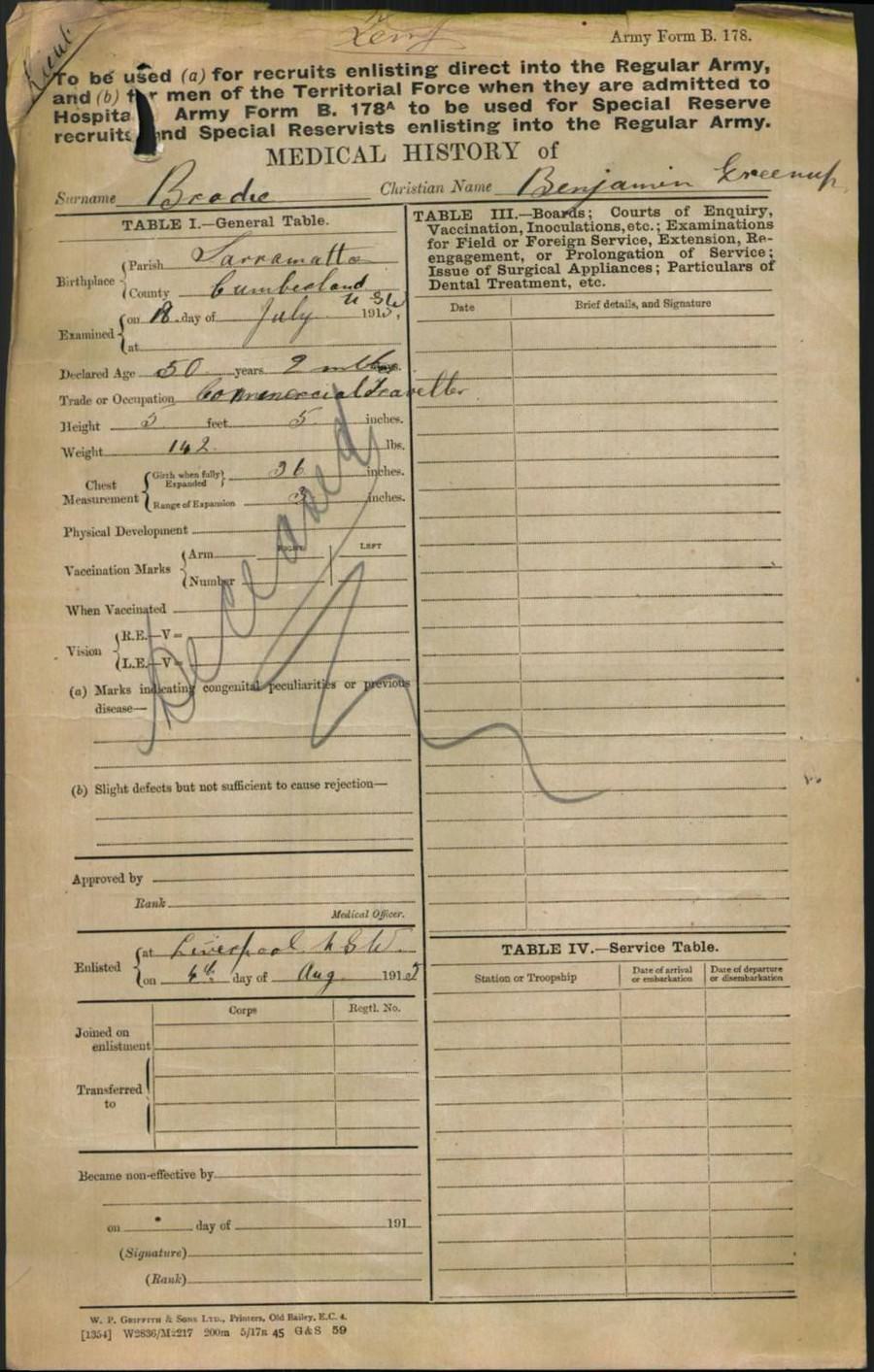
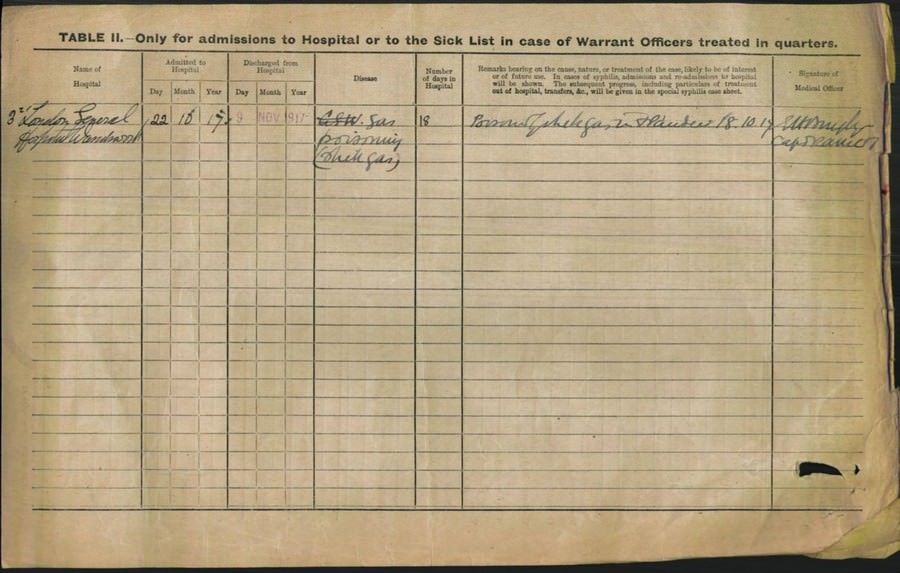
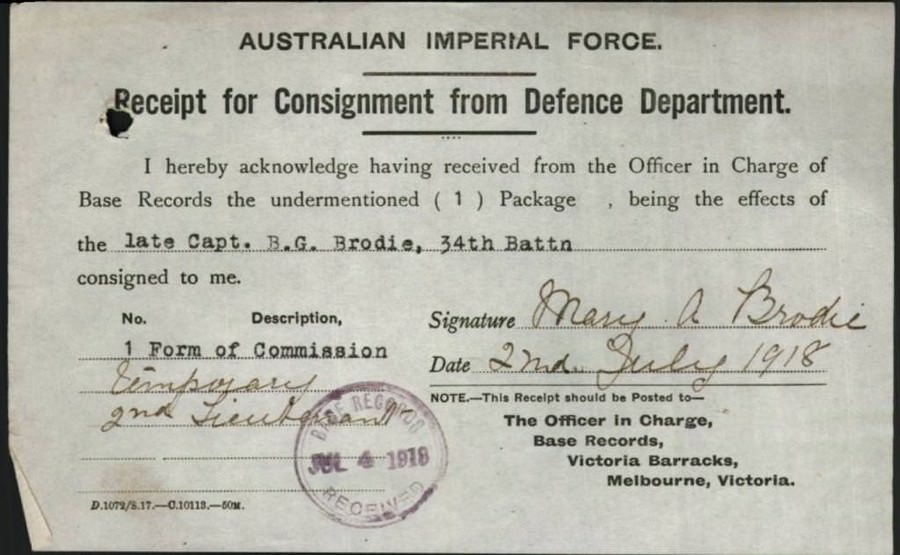
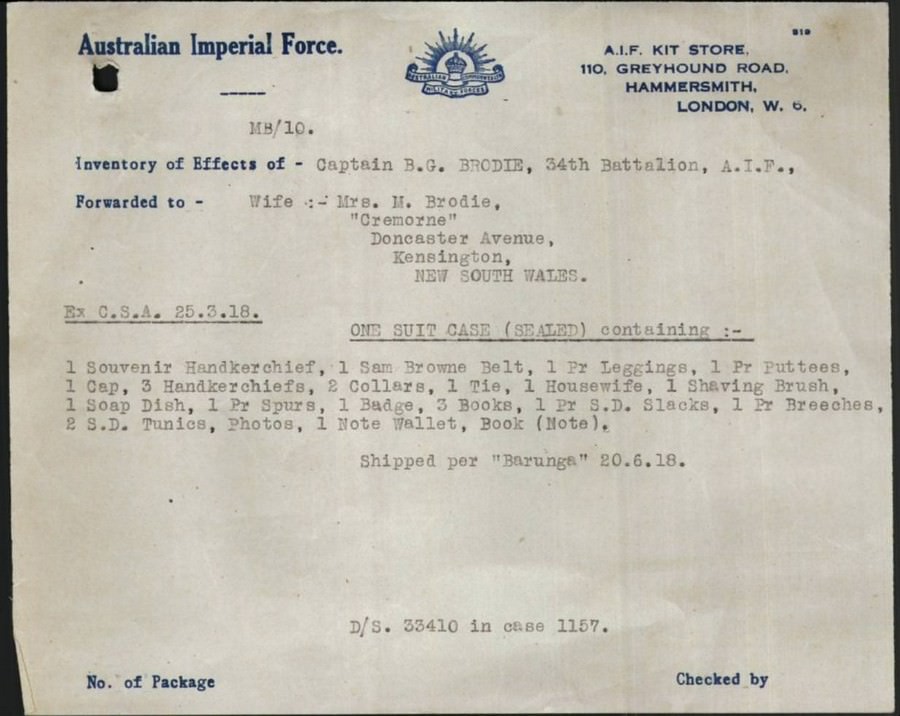
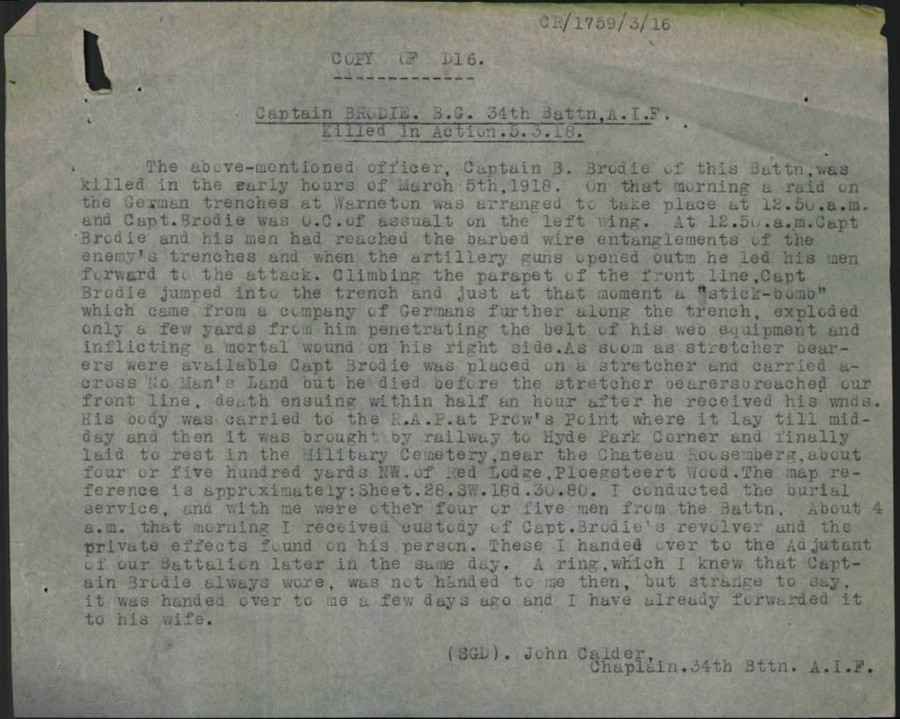
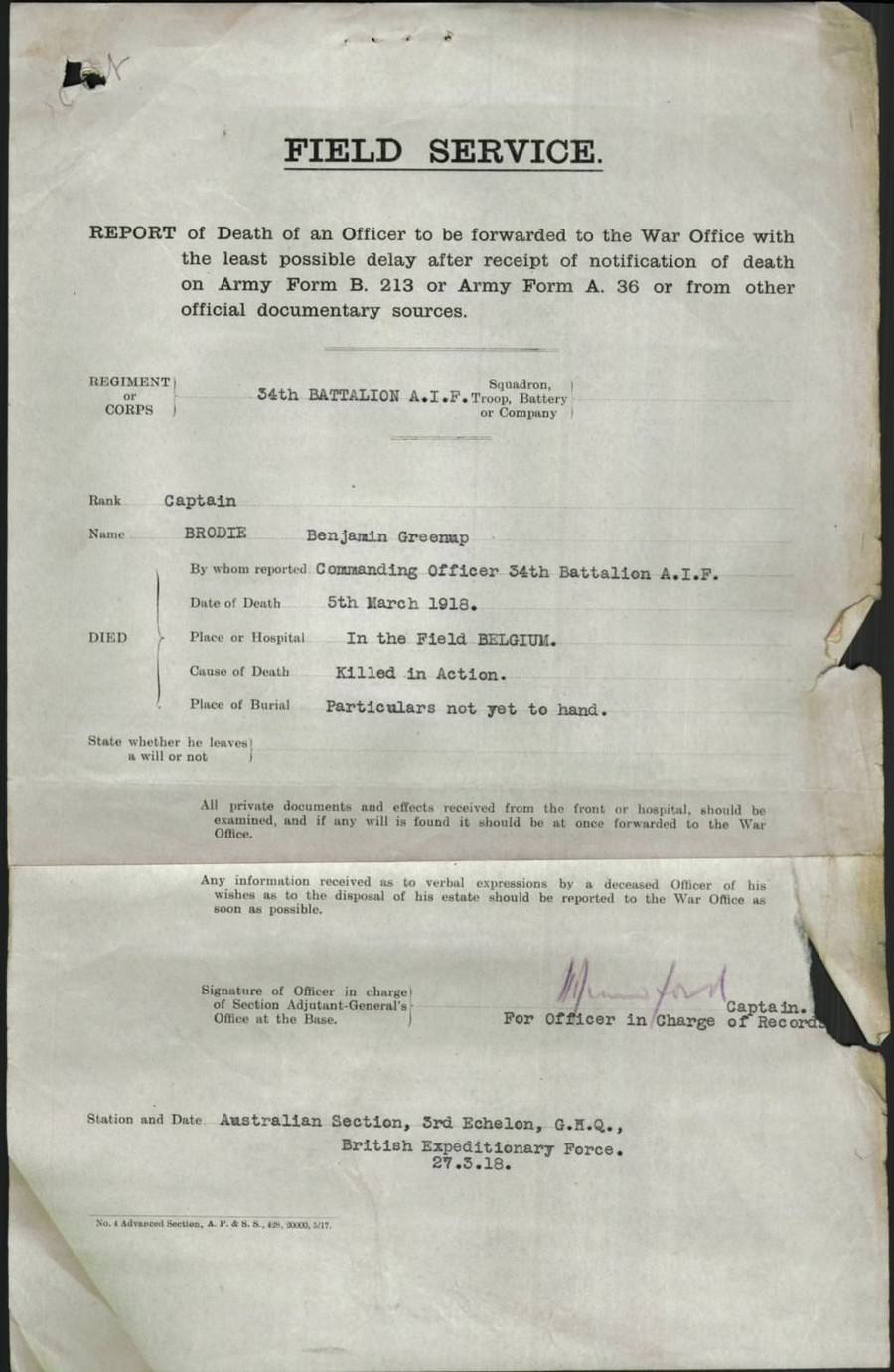
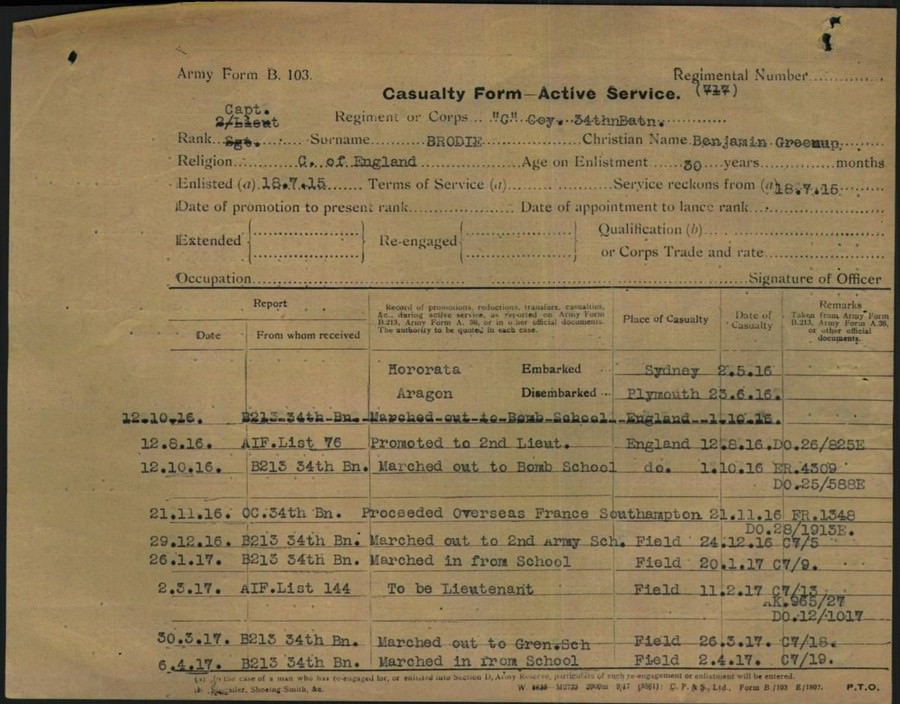

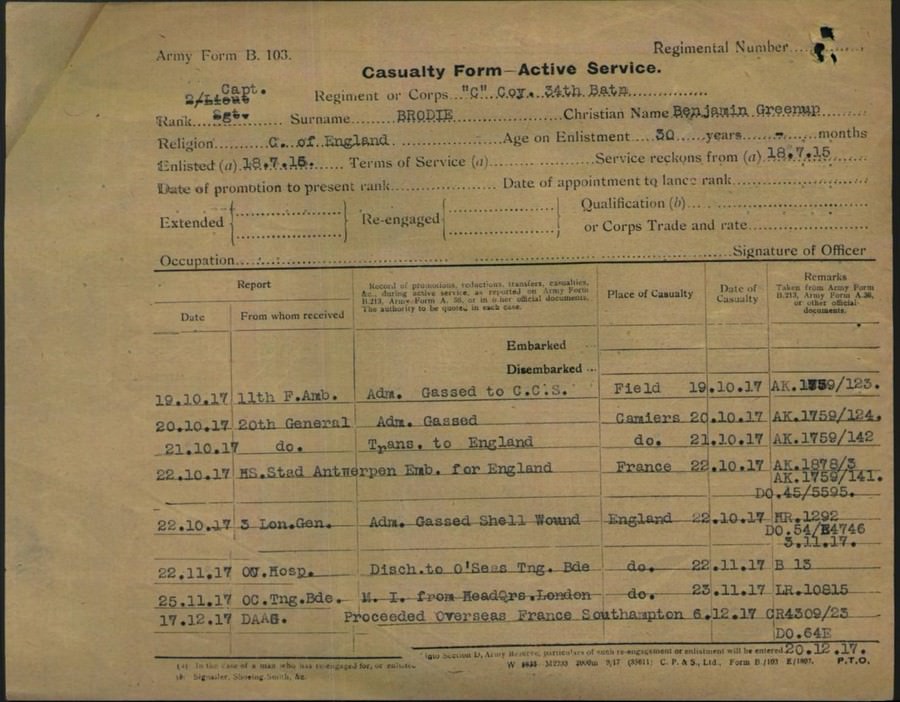

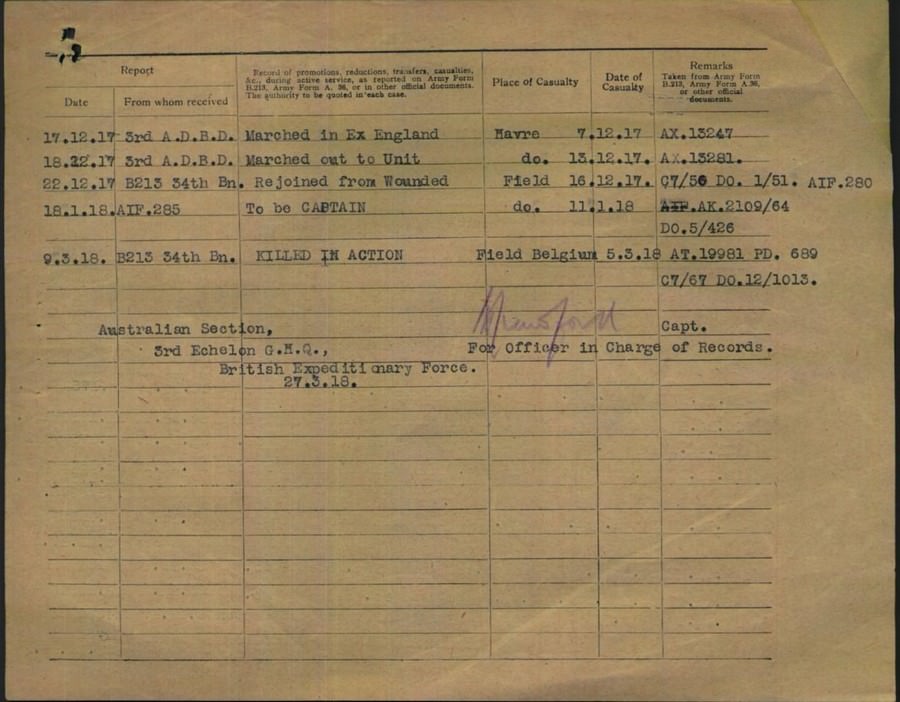
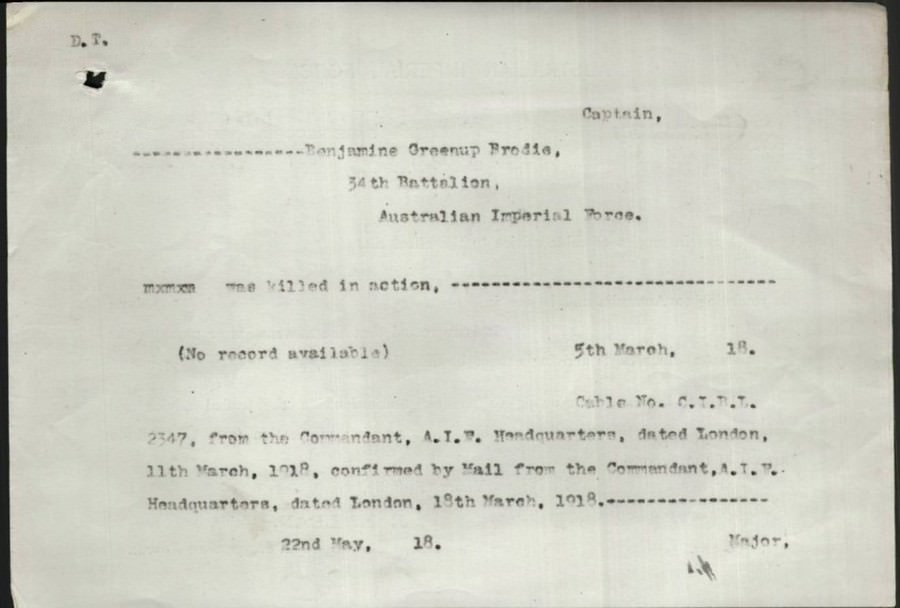
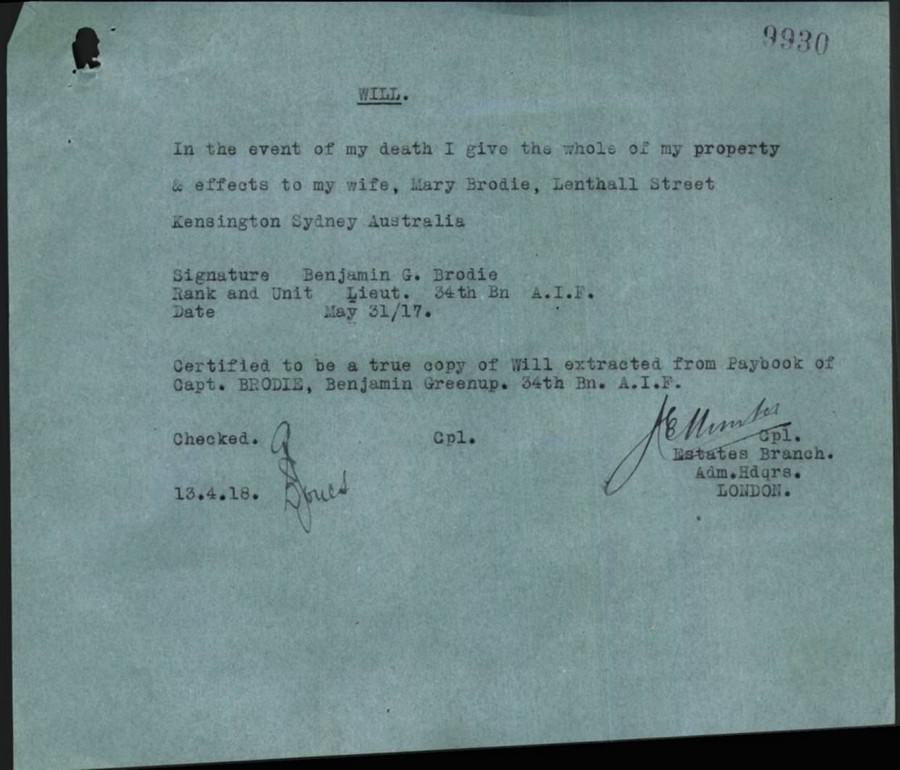
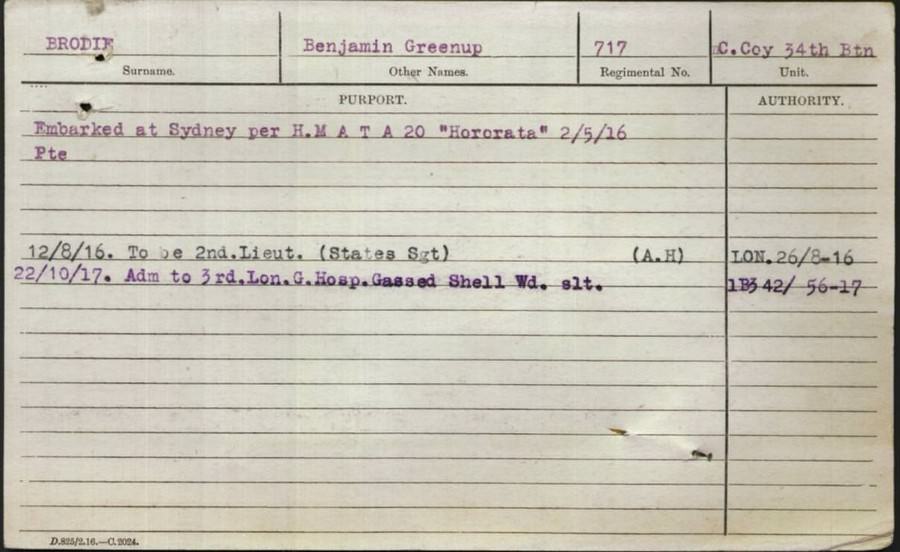
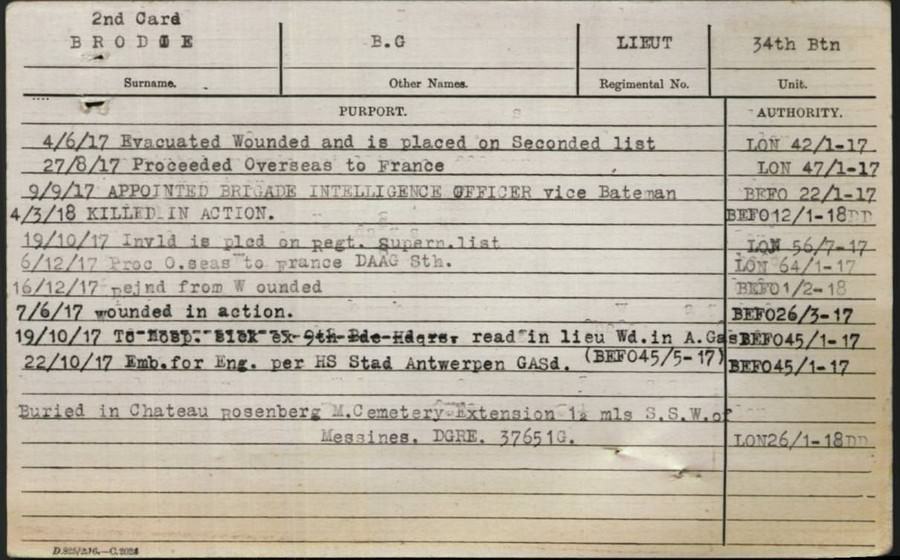


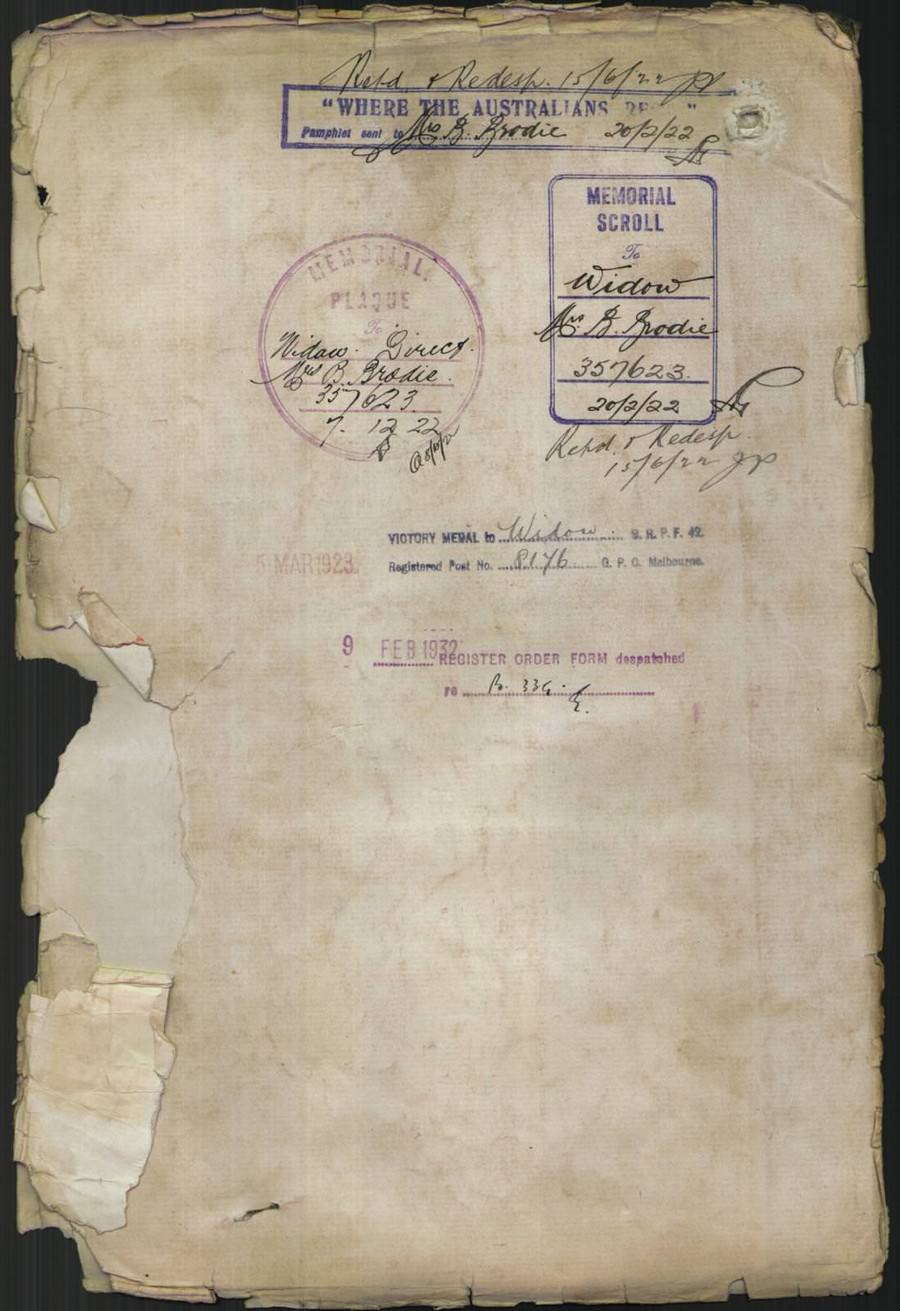
© Commonwealth of Australia (National Archives of Australia)
Under Construction: 02/06/2006-07/02/2017.
Captain: Norbert Henry W McIntrye BRIDGE. (Regimental Medical Officer)
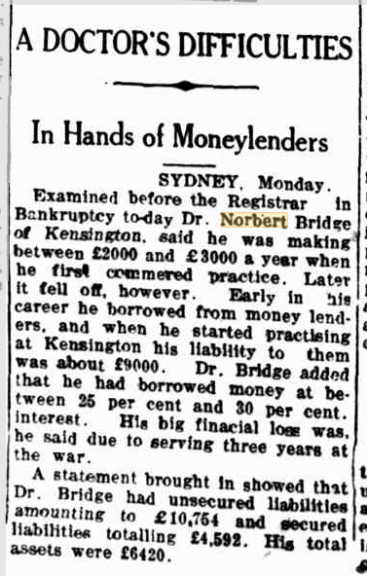
9th Field Ambulance. - 34th BATTALION A.I.F.
Captain: Norbert Henry W McIntrye BRIDGE. (Regimental Medical Officer)
Born: 12th June 1875. Redfern, New South Wales, Australia. Birth Cert:1691/1875.
Married 1: 1913. Sydney, New South Wales, Australia. Marriage Cert:4370/1913.
Wife 1: Bessie Bridge. nee: Wenzell. (1885-1937) Death Cert:13772/1937.
Married 2: 16th August 1941. Newcastle, New South Wales, Australia. Marriage Cert:/1941.
Wife 2: Isabella Jean Bridge. nee: McRae (1898-1962)
Died: 29th June 1960 West Wallsend, New South Wales, Australia. Death Cert:28494/1960.
Father: John Bridge. (1832-1897)
Mother: Amelia Bridge. nee: McIntrye. (1836-1916)
INFORMATION
Norbert Henry Bridge enlisted with the Australian Army Medical Corps on the 16th January 1916 and was attached to the 9th Australian Field Ambulance. Norbert proceeded overseas for France on the 7th February 1917 and disembarked at Devonport England on the 11th April 1917. He proceeded overseas for France from Tidworth on the 28th September 1917.
During the initial attack Battalion Headquarters were established at Seine House. An arrangement which worked well proved economical for Signallers and Runners throughout. the following day, 13th October, the enemy kept up a heavy concentrated Artillery Fire over the whole area, apparently having no idea of the actual position of our troops. Seine House and the Regimental Aid Post at the Railway Line were subjected to particular heavy fire and many casualties occurred at both places. Major: Gother Robert Carlisie CLARKE. M.I.D (Regimental Medical Officer), was killed by a shell which fell right among'st the wounded who were being dressed in the open. Major: Gother Robert Carlisie CLARKE. M.I.D fell dead across an Officer of the 37th Battalion, whose wounds he was dressing. A number of Ambulance Medical Corps staff were also killed and wounded by the same Shell.
Captain: Norbert Henry BRIDGE. later took over as (Regimental Medical Officer). The Battalion was sadly depleted and all the Officer had become casualties. The "B" Team, consisting of 3 Officers and 135 Other Ranks, was sent forward as reinforcements. The Lewis Guns and Rifles were in a very bad state, as the liquid mud had gradually worked into the parts and put them out of action. The heavy Shelling continued, especially in the vicinity of the Railway and Seine Mule track. Great difficulty was experienced in getting the Rations up, as many of the Mules were being bogged and in some cases had to be abandoned. Enemy Planes were coming over in Large formations, flying low and Machine Gunning both Troops and Transport thus inflicting many casualties.
Returned to Australia 12th May 1919 on board the Hospital Ship "Soudan".
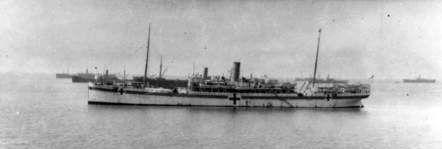 Hospital Ship "Soudan"
Hospital Ship "Soudan"
Family Information

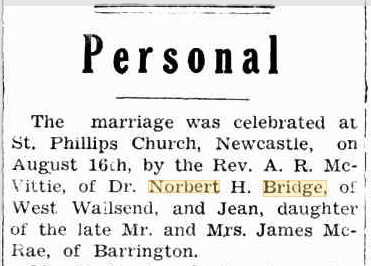
Norbert was a married 38 year old Medical Practitioner from Darlinghurst, N.S.W. prior to enlistment. His parents John and Amelia Bridge were married in 1860 at Maitland, N.S.W. Marriage Cert:1940/1860. and had 8 children. Elvina Mary McIntyre Bridge born 1861 at Maitland, N.S.W. Birth Cert:9093/1861 and died 1946 at Ryde, N.S.W. Death Cert:21845/1946. Ernest J McIntyre Bribge born 1862 at Maitland, N.S.W. Birth Cert:9607/1862. Clarence W Bridge born 1864 at Maitland, N.S.W. Birth Cert:10390/1864 and died 1924 in Sydney, N.S.W. Death Cert:10418/1924. Reginald H McIntyre Bridge born 1866 at Maitland, N.S.W. Birth Cert:10269/1866 and died 1909 in Sydney, N.S.W. Death Cert:11867/1909. Leopold S Bridge born 1868 at Maitland, N.S.W. Birth Cert:11296/1868. Lionel L J Bridge born 1871 at Maitland, N.S.W> Birth Cert:12682/1871. Amelia McIntyre Bridge born 1873 in Redfern via Sydney, N.S.W. Birth Cert:2942/1873. Norbert Henry W McIntrye Bridge born 1875 in Redfern via Sydney, N.S.W. Birth Cert:1691/1875. and died in 1960 at West Wallsend, N.S.W. Death Cert:28494/1960.
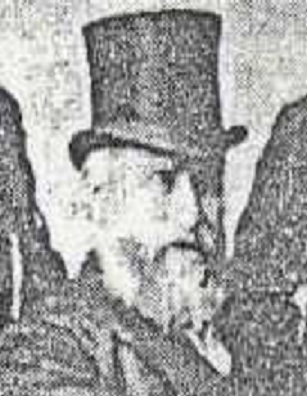
John Bridge. (1832-1897)
Norbert returned to his medical practice upon returning to Australia at "Yaralla" 134 Anzac Parade, Kensington, N.S.W. He lived at Carrington Street, West Wallsend prior to his death.

Freeman's Journal

Military Records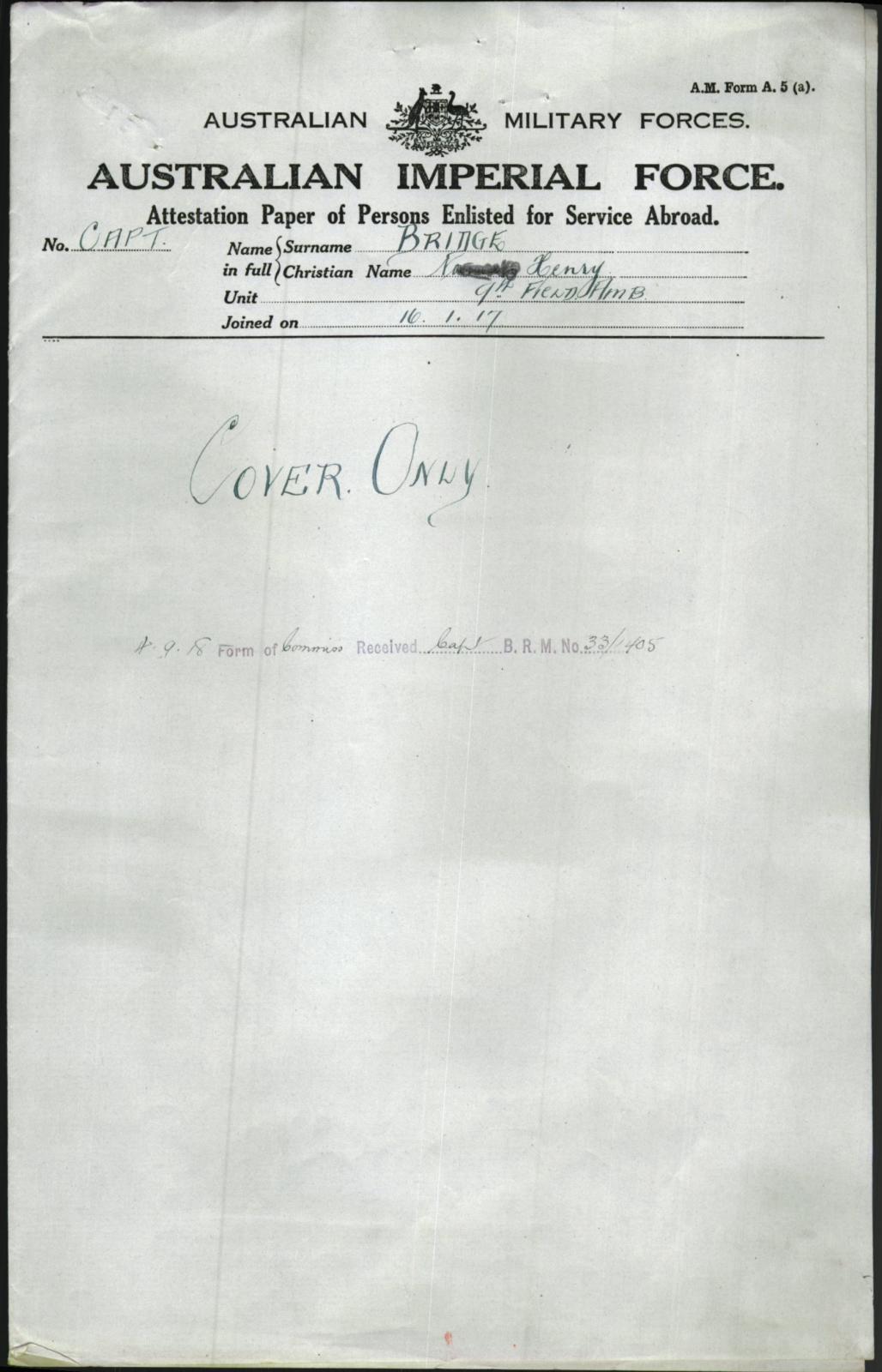
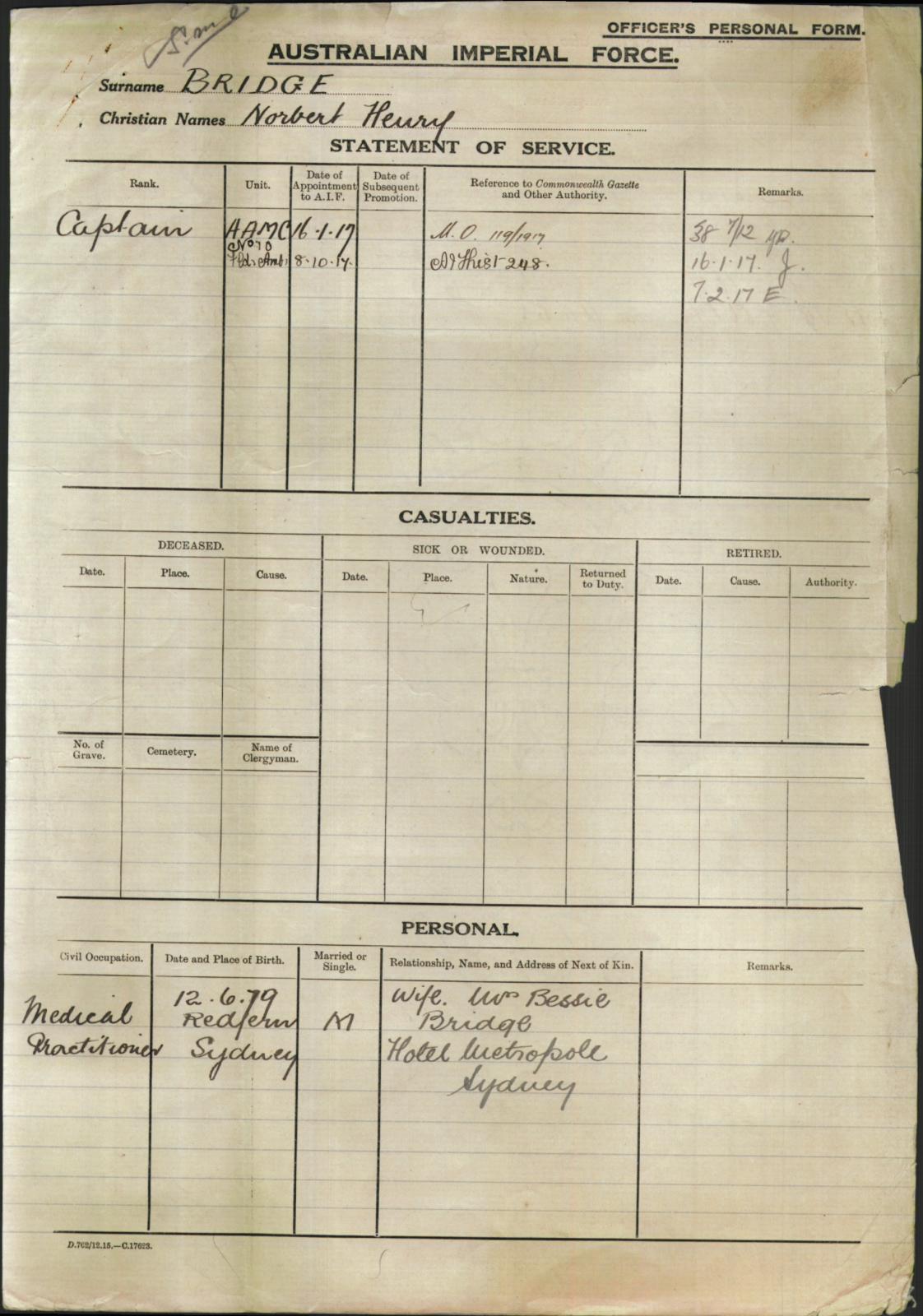
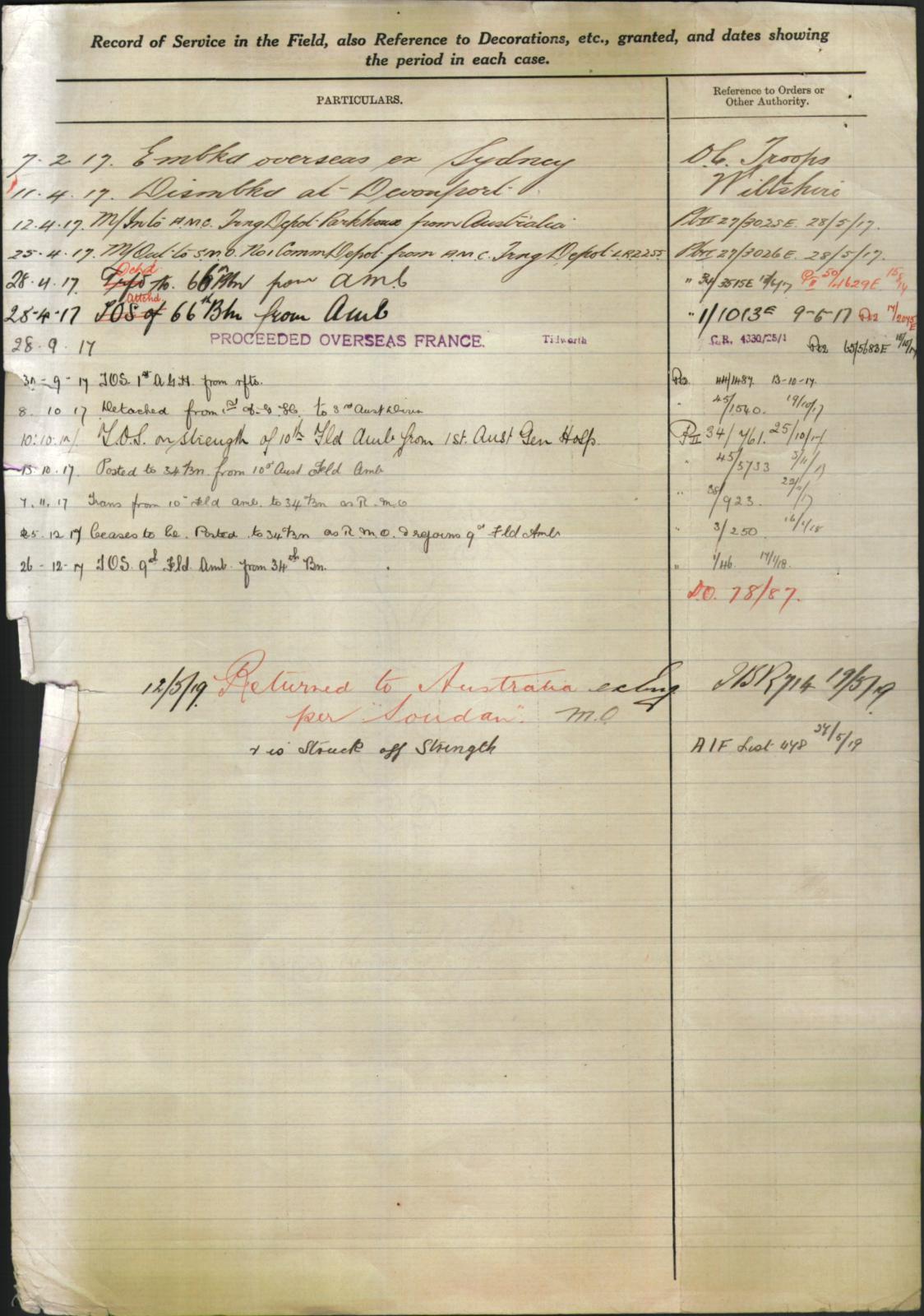
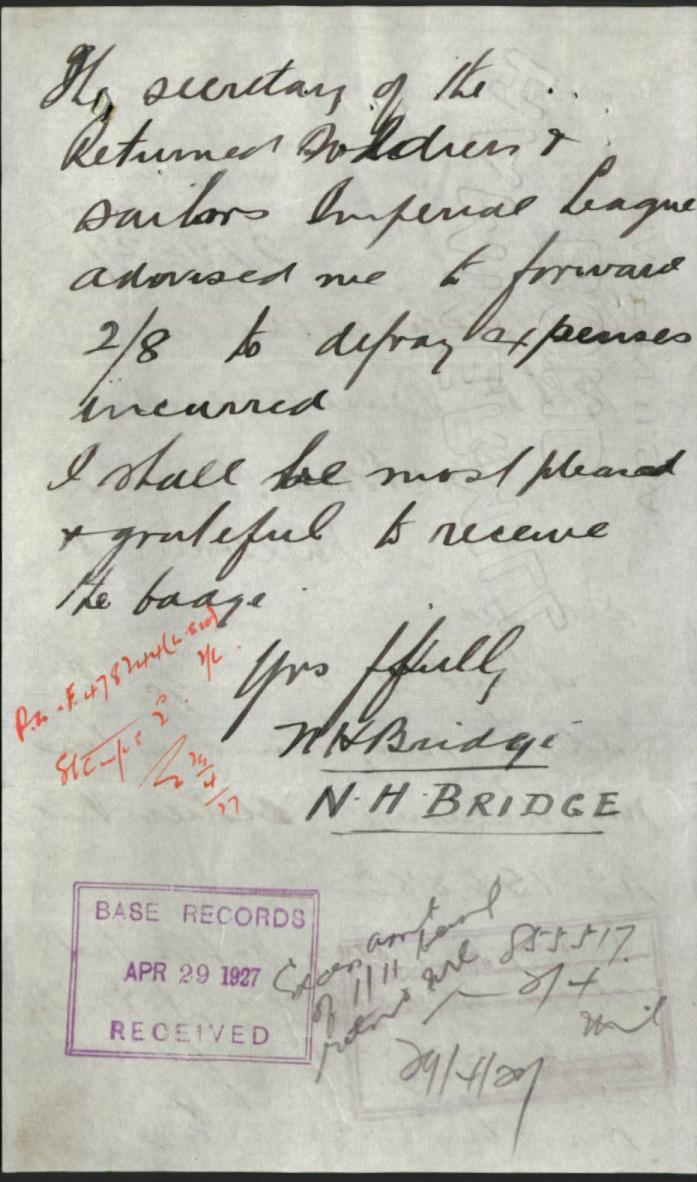
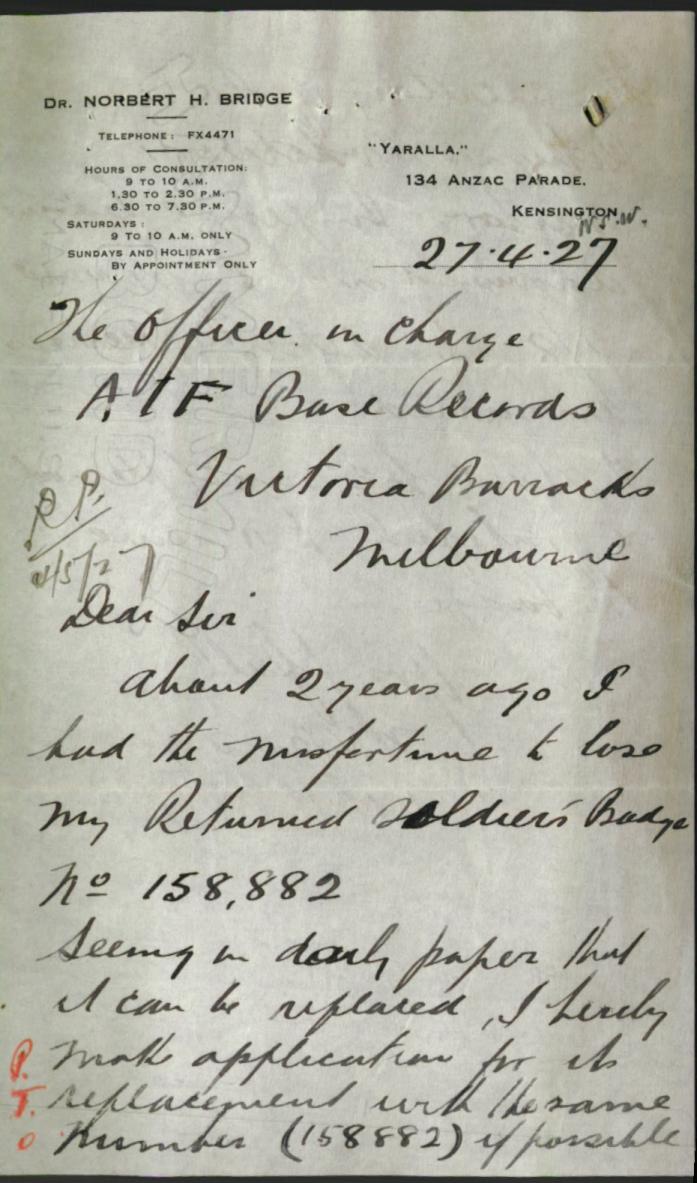
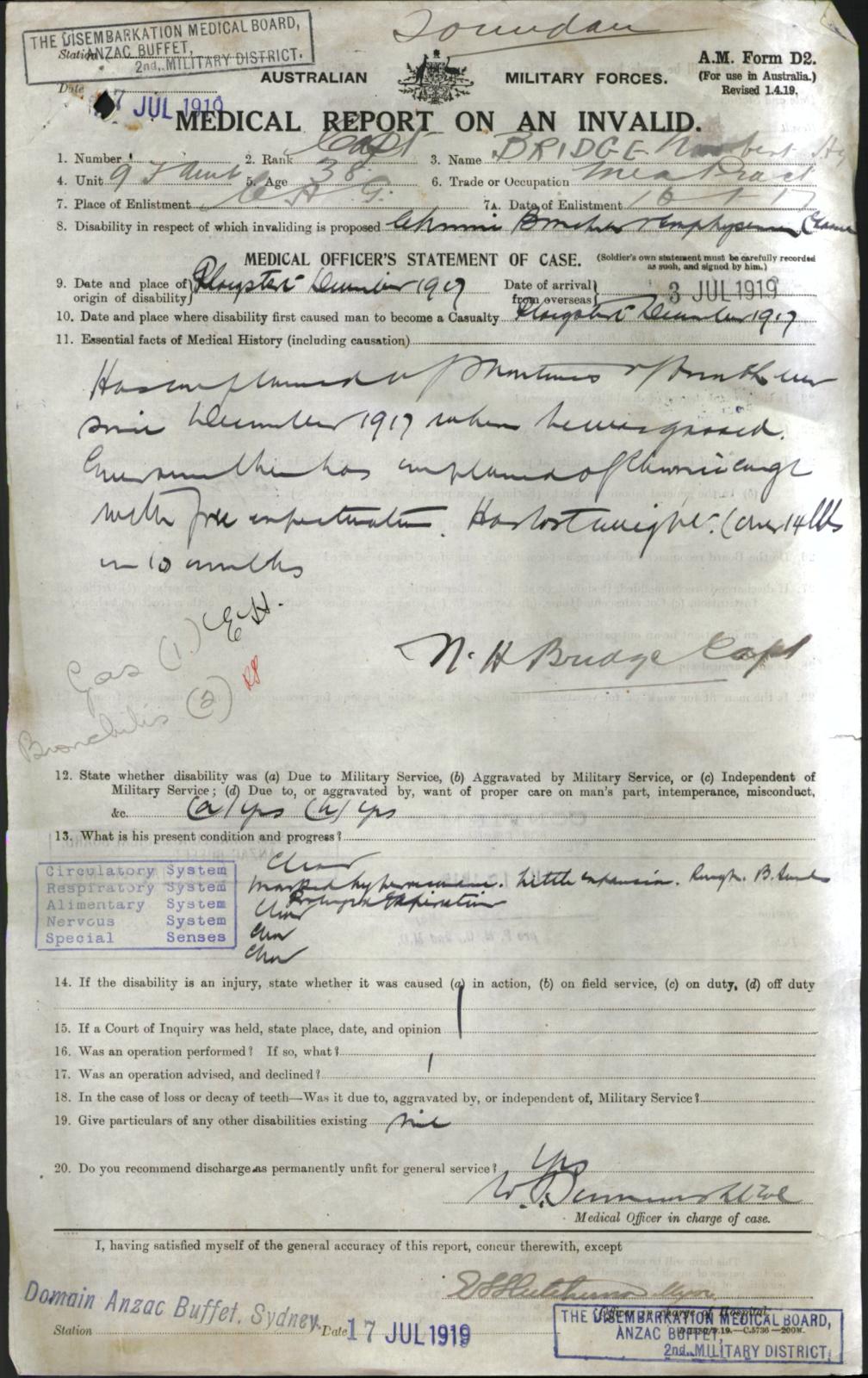
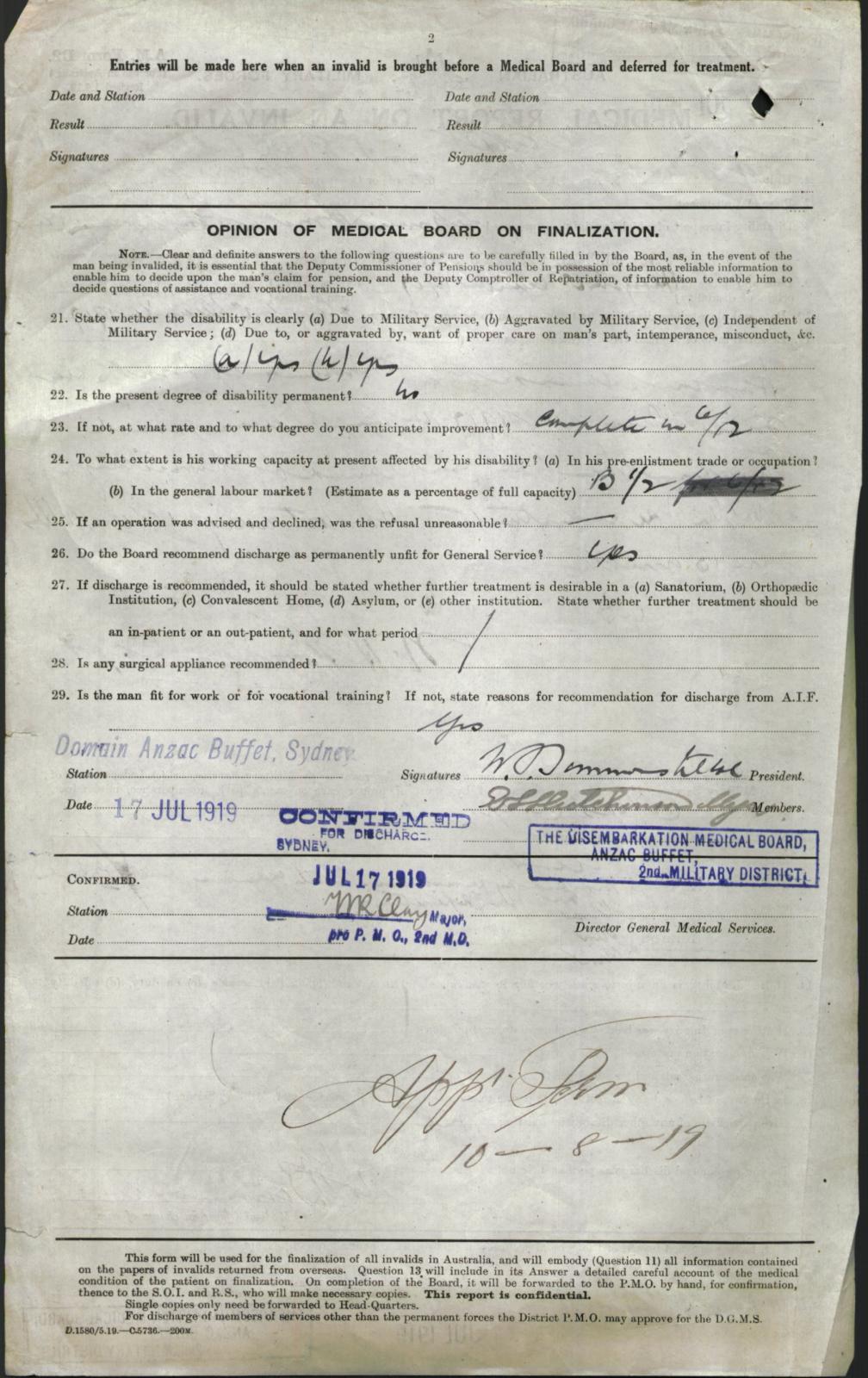


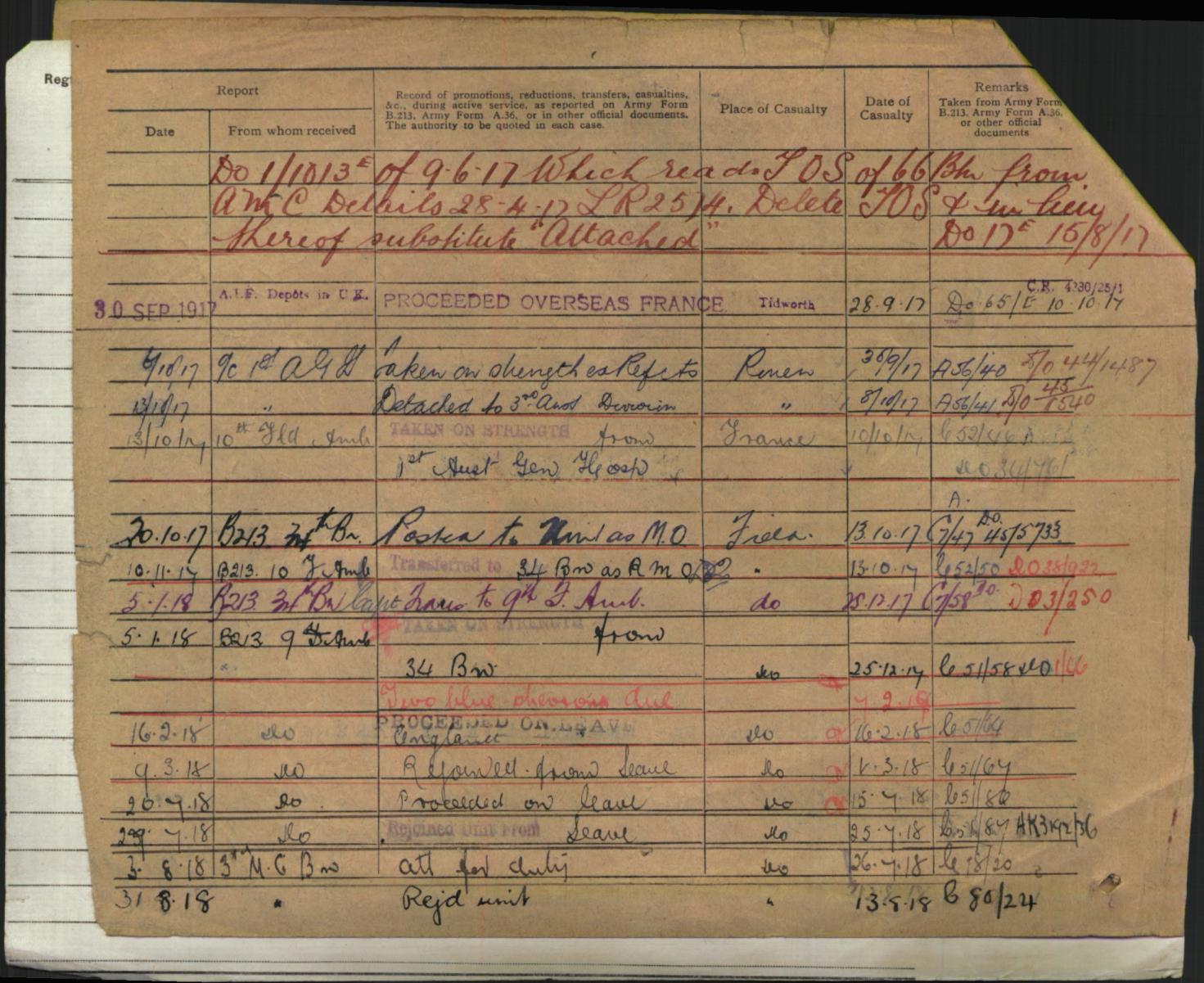

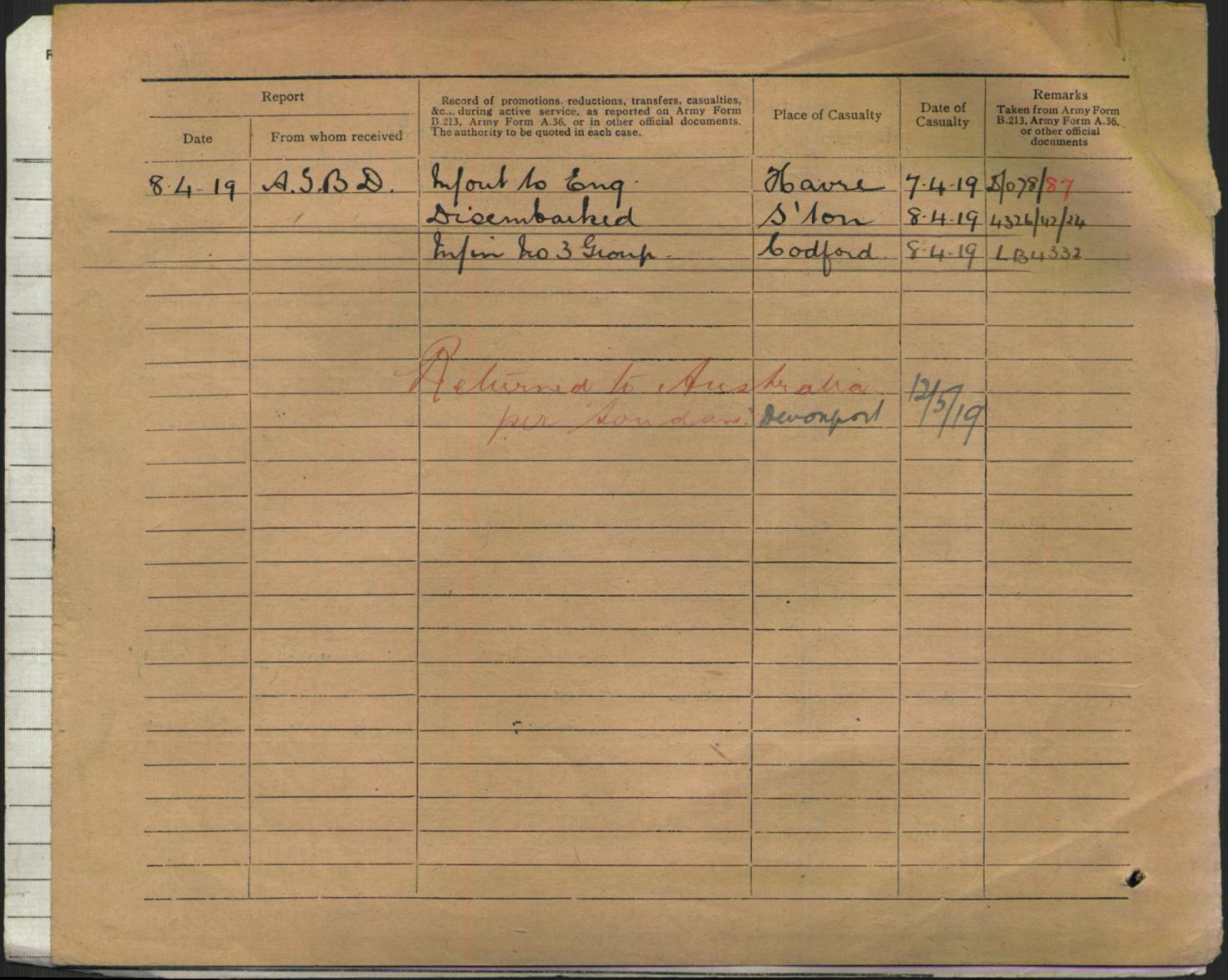
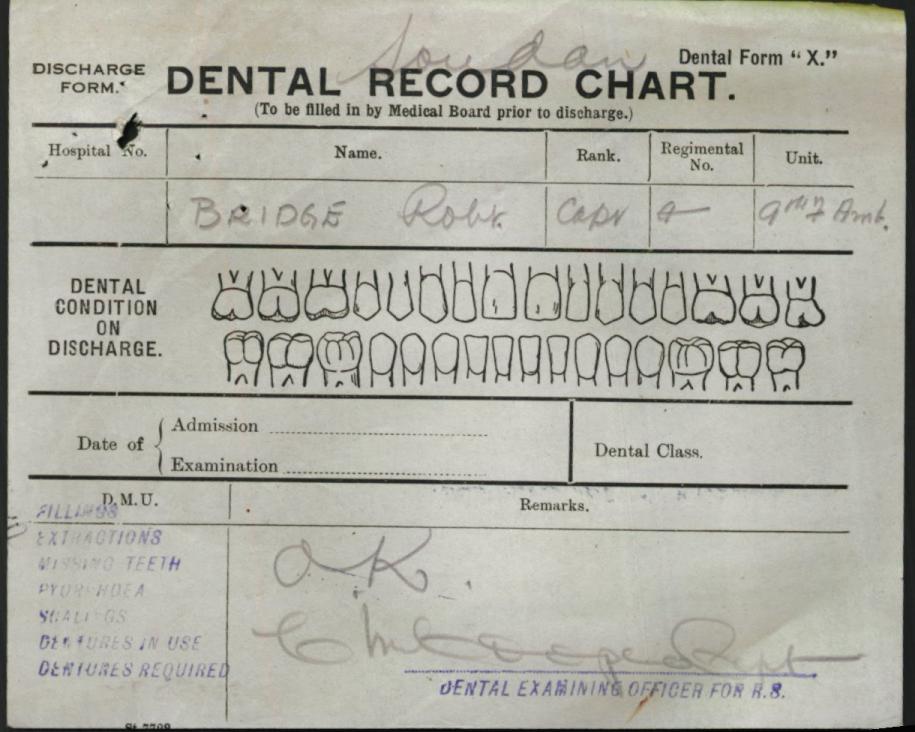

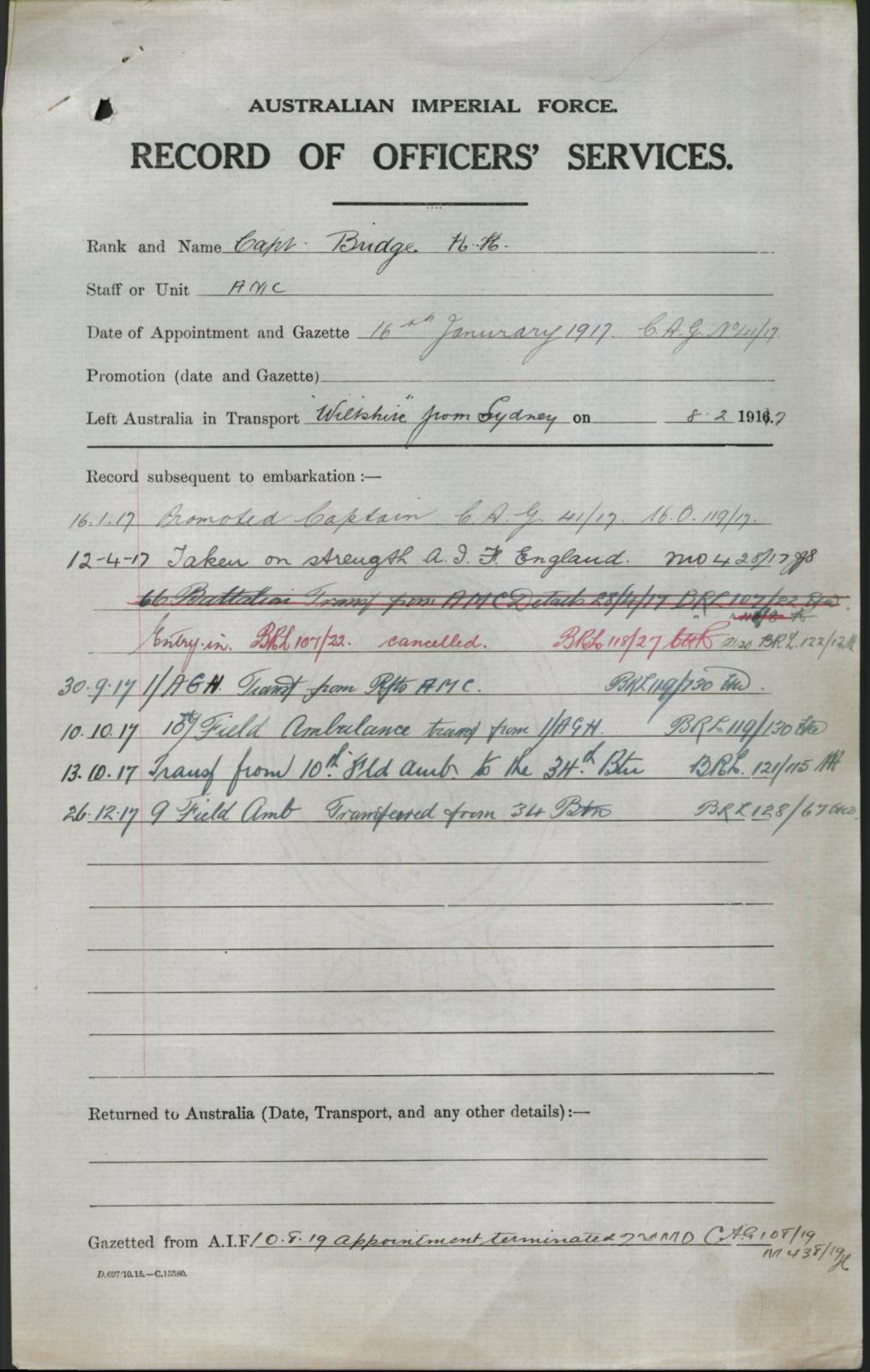
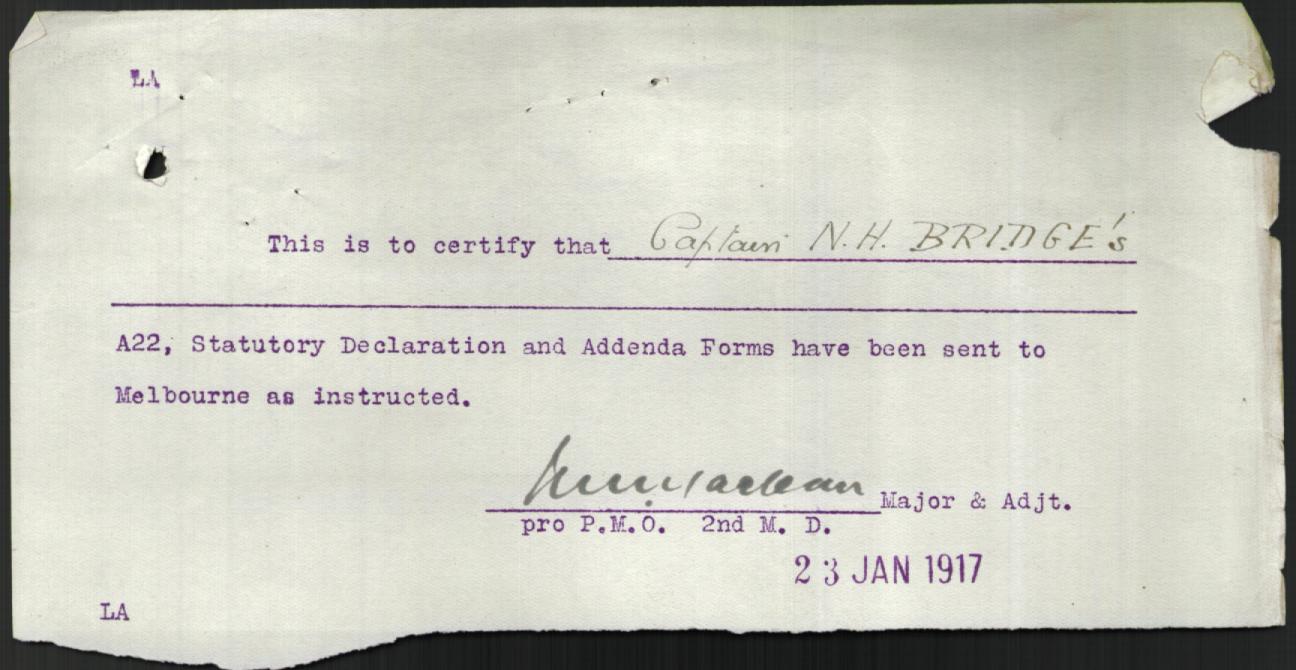
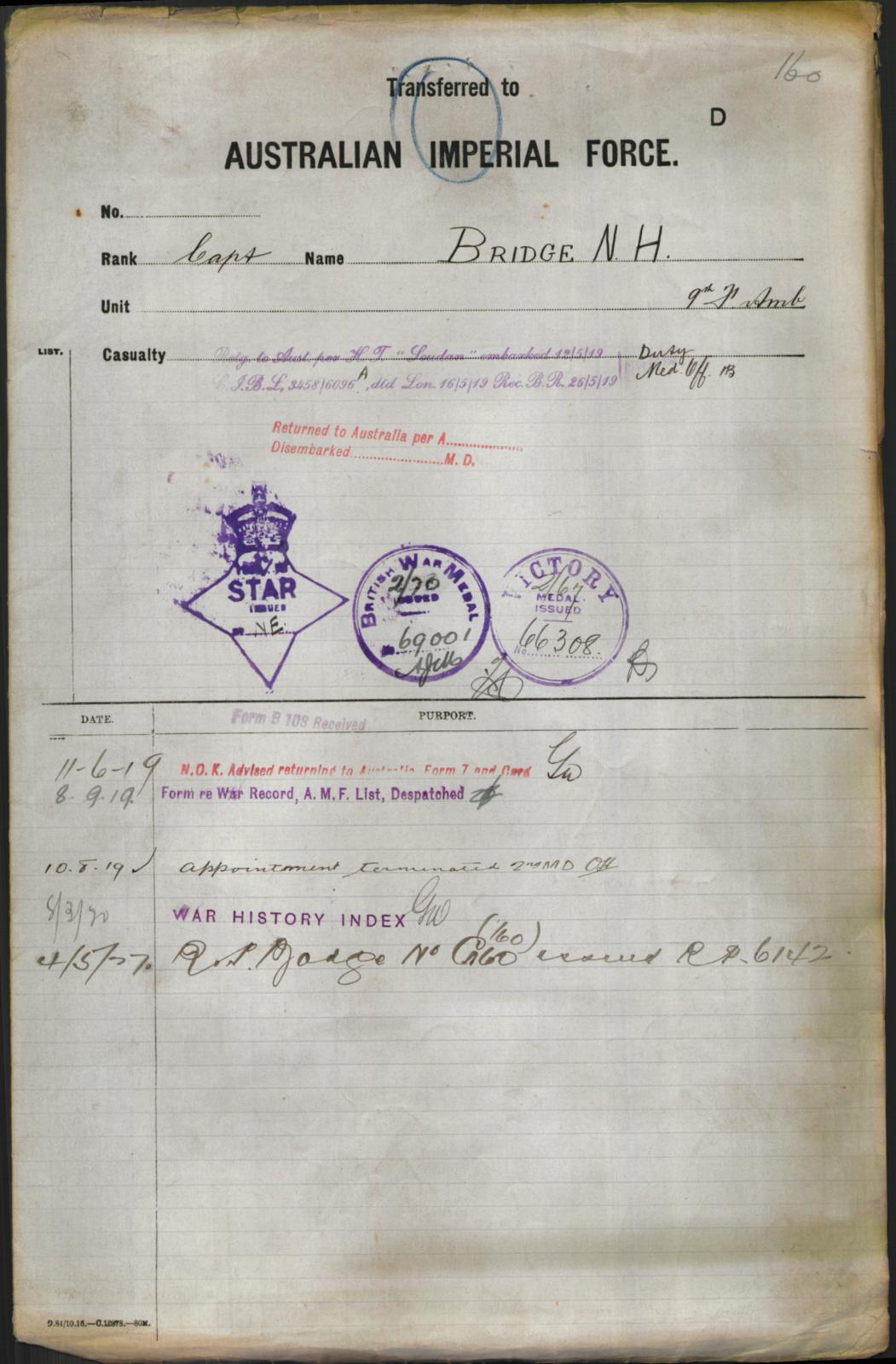
© Commonwealth of Australia (National Archives of Australia)
Under Construction; 12/10/2013-02/03/2020.
Captain: Henry Cecil Llewellyn BENNETT.
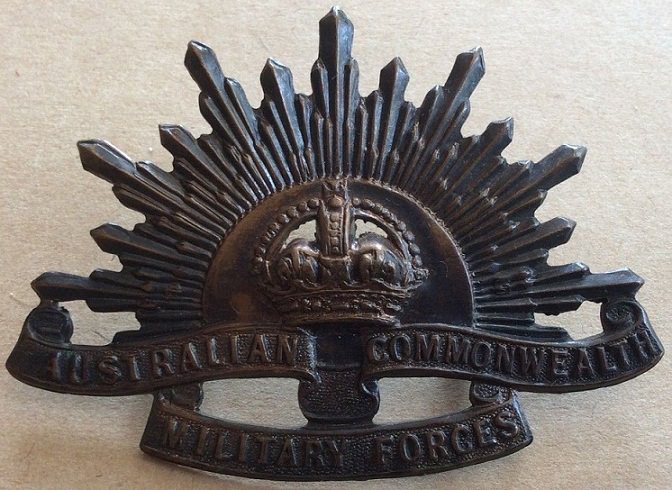
34th BATTALION A.I.F.
Captain: Henry Cecil Llewellyn BENNETT.
Born: 10th July 1891. Darling Point, Sydney, New South Wales, Australia. Birth Cert:38828/1891.
Married: 1915. Sydney, New South Wales, Australia. Marriage Cert:4670/1915.
Wife: Fanny Fox "Anne" Bennett. nee: Bucknell. (1892-1943)
Died: 6th March 1978. New South Wales, Australia. Death Cert:5741/1978.
Father: Christopher Bennett. (1855-1917) Died Sydney, N.S.W. Death Cert:
Mother: Violet L Bennett. nee:. (1857-1917) Died Parramatta, N.S.W. Death Cert:.
INFORMATION
Henry Cecil Bennett enlisted with the AIF on the 2nd of June 1915 and was promoted to the rank of 2nd Lieutenant with Head Quarter Company, 34th Battalion AIF and was an original member of the Battalion.
"Until the 10th of March, early training and formation of the Battalion was in progress. On that day the Battalion marched to the newly pitched camp at Rutherford and was completed with the exception of the Transport. These joined later and came from the Army Service Corps camp near Sydney. Here strenuous training was carried out. The men were very keen and fit, whilst their comfort and health were made a special study. Food was good and ample and sports and recreation were not overlooked.
A Girl's League was formed to cater for the comforts of the Battalion, under the supervision of Miss Violet MACKAY, who took a keen interest from the beginning, having, with the Mayor of Maitland met the men of the Wallaby March at East Greta and prepared dinner for them on their arrival. On 1st May 1916, the Battalion left by Train from Farley Station for the Showground in Sydney, equipped with kit bags and necessary clothing, and was reviewed in Moore Park by General: Gustave Mario RAMACCOTTI. On the following morning, 2nd May 1916 the men embarked on the transport HMAT A20 "HORORATA" and sailed at 4:00 pm".
The voyage to England was without any unusual incidents and a good passage throughout. The first port of call was Albany, where three days were spent. Columbo was reached on Empire Day, 24th May. Here two days were taken up coaling and taking on provisions, etc. During the stay the Battalion carried out a route march through the town. Suez was reached on 8th June, where a party of Light Horse and some details were disembarked. Arriving at Port Said on 9th, the ship coaled and proceeded to Alexandria which was reached on 11th June 1916.
Here the Battalion transferred to S.S."Aragon", E867. Some Australian Details were on board, also a number of Tommies going to England on Furlough. Devonport was reached on the 23rd June, the Battalion disembarked at Plymouth at 1:00 pm and en trained during the afternoon for Amesbury, arriving at midnight and marching to hutments at No: 1 Camp, Larkhill. Here the Battalion settled down to hard training, which included Route Marching, Trench Digging, Bomb Practice, Musketry and general Camp Routine. Later the Battalion moved to the No: 25 Camp and finished off their training, which included six days' battle practice and field work at the Bustard Trenches.
Four days' disembarkation leave was given from 6th to 10th July and later King's Leave from November 5th to 9th. Whilst here the Official Colours were issued. Purple over Green (Oval), these replacing the Colours presented to the Battalion (Old Gold on Shoulder Straps) by the Ladies of West Maitland. A Signal Section was formed at Larkhill under Lieutenant: Harold Henry McMINN. The weather in England was mostly fine until the latter part of training, when a good deal of rain and snow caused inconvenience. In October the 34th Battalion was reviewed at a Divisional Parade by His Majesty King George V at Bulford.
The 34th Battalion left Larkhill on the 21st November and en trained at Amesbury for Southampton, embarking on the S.S "Arundel". The transport section left by S.S. "Princess Victoria". The Battalion arrived at Le Harve, France on the 22nd November 1916. Disembarkation commenced at 8:00 am and the Battalion marched to No;1 camp on the Hill, arriving at 2:00 pm. The men carried heavy loads, in some cases amounting to miniature Q.M.' Stores. The march over cobblestones was very tiring, notwithstanding the many route marches which had been carried out at Larkhill. However, after bathing their feet and receiving treatment, as well partaking of a good meal, some spent a comfortable night.
The following morning the Battalion moved to Le Harve Railway Station, leaving D Company behind. On arrival at the Station en training commenced at 8:00 am and the train left at 11:15 am. The journey was slow and occupied until 4:30pm on the 24th. On arrival at Bailleul the men de trained and marched to Outtersteene. D Company arrived at 4:00 pm the following day. The Battalion rested here in billets for two days previous to taking over garrison duties in the Line at Armenties. The Commanding Officer Lieutenant Colonel. Malcolm St John LAMB. with the Adjutant, Company commanders, N.C.O's and Specialists went into the Line to inspect Trenches, Stores, Plans and to arrange for the taking over this Section of the line on the following day.
The specialists and N.C.O's remained in the Line. On 27th November the Battalion went into the Line in the L'Epinette Sector. The men were taken up by motor lorries as far as the Square near Houplines Station, and marched via Butterne Avenue and Willow Walk to the Line, carrying their packs and blankets into the trenches. Lewis Gun ammunition was taken into the Line with the tin cases. The going was difficult owing to the conditions of the Trenches and the heavy and bulky loads. Later the blankets were dumped near Tussage Dump, from which most of them disappeared. This was the main incident of our relief in the Line.
The Sector taken over had been held by the Northumberland Fusiliers whom the 34th Battalion relieved. Specialists of this Regiment remained for a couple of days to arrange and assist in the routine. We were greeted with a display of Verey Lights and, apparently anxious to see the newcomers, the enemy searched our Sector with his searchlights throughout the night, which was misty and dark. Our Artillery and Trench Mortars put over a heavy barrage, either to let Fritz know we had arrived or to cover the change over; this was the signal for increased activity of enemy Machine Gun and Rifle fire to which the Battalion energetically replied.
During the night Patrols were sent out, Listening Posts established and wiring was commenced. Dawn broke with a thick mist hanging over the Sector and our men could get very little idea of the new frontage. Our Artillery and Trench Mortars were busy registering on the enemy positions throughout the day and Fritz retaliated with Machine Gun and Rifle fire. The first day passed with no special incidents. Our first Casualty occurred on the following morning at sunrise when Private: 148 William PECK was sniped with an explosive bullet through the forehead. Counter battery work, Machine Gun firing and sniping were fairly active during our first term in the Line. The first Casualty occurred on the morning of the 3rd of December at sunrise when Private: 148 William PECK was sniped with an explosive bullet through the forehead. Counter battery work, Machine Gun firing and sniping were fairly active during our first term in the Line.
Considerable damage was done to our Trenches and parapets and one of our Listening Posts was destroyed. Some enemy Patrols were dispersed by our snipers. Enemy working parties were fairly active on our front and his patrols were strong. Considerable road and rail transport was noticeable behind the enemy lines. The Battalion livened things up generally in the Sector which of late had been fairly quiet and Fritz did not appreciate the change. Just before being relieved we presented them with an issue of Gas. The Trenches were in a very wet and muddy condition. The water in the bottom of them being frequently frozen, the ice had to be broken to provide sufficient cover for the men, as the parapets were not high enough to allow walking on the ice. Thus the men had to stand in the freezing water and mud, with the result that the constant wet and cold caused many evacuations with trench feet.
The 33rd Battalion was on our left and the New Zealanders were on our flank during this period. After six days in the Line we were relieved and marched to Billets in Armentieres. The Battalion Headquarters were at No: 6 Rue de Strasburg, the Quarter Master's Store at No: 28. Billet routine from the 4th to 10th December 1916 consisted of a general clean up and Bath Parades to Erquinghem.
On the 11th December 1916 the 34th Battalion went into the Line again. "B" Company occupying the Subsidiary line instead of "D" Company, as in the first period. The weather was still cold and misty. The usual counter battery work was carried out by the Artillery and Trench Mortars. Some shells from our own "Heavies" dropped short and fell into our front Line. Sniping on both sides was again active. Extra Patrols were sent out to engage the strong fighting enemy Patrols in No Man's Land. The enemy was busy with his Working Parties and good work was also done by the wiring parties. Two extra Lewis Guns were added to the Front Line for the purpose of sweeping the enemy parapets and wire, in retaliation for enemy sniping which had become most active and causing trouble.
This was the beginning of continuous sweeping of parapets on both sides during the whole period of holding this Sector of the Line. The 34th Battalion Patrols were contesting No Man's Land, which up to this time Fritz considered belonged to him. Heavy bombardments were carried out which caused considerable damage to the Trenches and Supports on both sides. quite a number of Men were being evacuated with trench feet through standing in the cold and wet, notwithstanding that dry socks were issued every day to the troops. during this period there were a number of casualties, including 6 K.I.A.and Lieutenant: Stephen Matthew HARRIS was the first the Officer wounded. Captain: Walter Hedland Valentine BAKER. and Lieutenant: Frederick Llewllyn EAST. and a number of men were also evacuated sick.
The 34th Battalion was relieved on the 18th of December 1916 and marched to billets in Armentieres. Captain: Edmund BEAVER injured by shell fire, and several other ranks sick, were evacuated from here. On the 23rd December 1916 the 34th Battalion moved to Reserve Billets at La Blanc Masion, where the buildings of hutments and stables for mules was carried out. The roads were flooded two or three feet deep and Carrying Parties of men erecting the hutments had to wade through this, in many cases waist deep. While here the Commanding Officer Lieutenant Colonel. Malcolm St John LAMB. left for Army School. Christmas Day, the first and what proved to be the worst in France, was spent in Billets, only in the course of erection. The rations for Christmas Dinner were plentiful, but the cooking facilities were poor and the troops were somewhat "fed up" with the environment and bad weather.
Each man had 1lb of Pudding and a quart of Beer if he wished. The Pudding was supplied by the Comforts Fund and the Beer from the Regimental Funds. Working Parties had to be provided both on Christmas and New Year's Day. On the 31st of December 1916 Lieutenant Colonel. Malcolm St John LAMB. returned to the 34th Battalion and on the 4th January 1917 Headquarters and "A" Company moved to Jesus Farm and joined the remained of the 34th Battalion in hutments, which were now finished. The following day Major: Walter Arnold LeRoy FRY. left for the Training Battalion at Larkhill. A few men were evacuated sick and one, Private: A LEACH of the Australian Medical Corps Staff, died.
On the 24th January 1917 the Specialists went into the Line in the Houplines Sector. The following day the 34th Battalion took over from the 36th Battalion, who's Commanding Officer: Lieutenant Colonel: James William Albert SIMPSON. had been killed the previous day. On the 29th January 1917 Major: Ernest Edward MARTIN. temporarily transferred to command the 36th Battalion until the 20th February when Lieutenant Colonel: John Alexander MILNE. became Commanding Officer. The Front Line here was very similar to last Sector. During this period a good deal of shelling was carried out on both sides enemy sending over "Pineapples" freely. Aerial activity increased and many fights took place. The Patrols were now gaining mastery of No Man's Land and Fritz was getting the "Wind up". Verey Light displays, constant use of his Searchlights and bombing of his own wire were common occurrences during the night time.
On the 26th of January 1917 2nd Lieutenant: Gordon Thomas WOOD was the first Officer Killed in Action who was killed by shell fire. Also during this period the first Non Commissioned Officer killed in Action was Sergeant: 165 William James "Bully" RICHMOND. The 34th Battalion was relieved on the 31st of January 1917 and moved to Billets in Armentieres. Whilst here a number of the men were evacuated suffering from trench feet and trench fever, caused by the appalling conditions in the Trenches, No Man's Land and a Listening Post. Working Parties were supplied, a general cleaning up carried out and Bath Parades held.
On the 6th February the 34th Battalion relieved the 36th Battalion in the Houplines Sector. Patrols only occupied Listening Posts as the nights were very bright and moonlit. The Battalion's Trench Mortars put over a large quantity of shells, to which Fritz replied vigorously with "Minnies" and "Pineapples" but very little damage was done. Enemy planes were active over our Lines, but the Australian Aircraft drove him back. Air fights were frequent now. Also there was quite a lot of Anti-Aircraft firing, but no planes were brought down. Enemy Planes dropped bombs on our Sector and Working Parties, while his Working Parties were dispersed by the Brigades 18 Pounders. "Minnies an "Pineapples" caused damage to our Trenches and Brigades Artillery did likewise to the enemy placements.
Lieutenant: William Henry SALVATORI. and Lieutanant: Ray WOLSTENHOLME. and a number of men sick were evacuated here. The 34th Battalion relieved on the 12th February and until the 17th February, the usual routine of supplying Working Parties, general cleaning up, was carried out. The 34th Battalion went into the Line again from the 18th to 25th February and Patrols were busy exploring No Man's Land. The enemy Patrols and Working Parties, which were strong, were dispersed by Lewis Gunners. Snipers were very active and the enemy Machine Gun fire greatly increased. From the 25th of February the 34th Battalion was in Billets.
From the 13th to the 17th of March 1917 the 34th Battalion were again in Billets. Lieutenant: Henry Cecil BENNETT was evacuated here.
Returned to Australia on the 11th May 1919.
Family Information
Henry was a married 24 year old Farmer from Darling Point, N.S.W. His wife Anne lived at "Quambone Station" Quambone via Coonamble, N.S.W. and later embarked for England and lived at 17 Landsdown Road, Bedford, England. Henry Served with the King Edward Horse prior to World War One and purchased his discharge.
Military Records









































































© Commonwealth of Australia (National Archives of Australia)
Under Construction; 03/04/2011-26/01/2015.
Captain: Edmund BEAVER. M.C

34th BATTALION A.I.F.
Captain: Edmund BEAVER. M.C
Born: 25th September 1891. Ashfield, New South Wales, Australia. Birth Cert:5001/1891.
Married: 1914. Victoria, Australia.
Wife: Lillian Annie Beaver. nee:
Died: 30th November 1968. Wamberal, Central Coast, New South Wales, Australia. Death Cert:44080/1968.
Father: William Richard Beaver. (1853-03/02/1923) died at Mosman, N.S.W.
Mother: Charlotte Ann Beaver. nee: Roberts. (1851-09/11/1918) died at Ashfield, N.S.W.
INFORMATION
Edward Beaver enlisted with the 34th Battalion Head-Quarters section as a Lieutenant on the 1st of February 1916. Edwards served with the 25th Infantry Militia prior to World War 1 and was as original member of the Battalion. "Until the 10th of March, early training and formation of the Battalion was in progress. On that day the Battalion marched to the newly pitched camp at Rutherford and was completed with the exception of the Transport. These joined later and came from the Army Service Corps camp near Sydney. Here strenuous training was carried out. The men were very keen and fit, whilst their comfort and health were made a special study. Food was good and ample and sports and recreation were not overlooked.
A Girl's League was formed to cater for the comforts of the Battalion, under the supervision of Miss Violet MACKAY, who took a keen interest from the beginning, having, with the Mayor of Maitland met the men of the Wallaby March at East Greta and prepared dinner for them on their arrival. On 1st May 1916, the Battalion left by Train from Farley Station for the Showground in Sydney, equipped with kit bags and necessary clothing, and was reviewed in Moore Park by General: Gustave Mario RAMACCOTTI. On the following morning, 2nd May 1916 the men embarked on the transport HMAT A20 "HORORATA" and sailed at 4:00 pm".
The voyage to England was without any unusual incidents and a good passage throughout. The first port of call was Albany, where three days were spent. Columbo was reached on Empire Day, 24th May. Here two days were taken up coaling and taking on provisions, etc. During the stay the Battalion carried out a route march through the town. Suez was reached on 8th June, where a party of Light Horse and some details were disembarked. Arriving at Port Said on 9th, the ship coaled and proceeded to Alexandria which was reached on 11th June 1916.
Here the Battalion transferred to S.S."Aragon", E867. Some Australian Details were on board, also a number of Tommies going to England on Furlough. Devonport was reached on the 23rd June, the Battalion disembarked at Plymouth at 1:00 pm and en trained during the afternoon for Amesbury, arriving at midnight and marching to hutments at No: 1 Camp, Larkhill. Here the Battalion settled down to hard training, which included Route Marching, Trench Digging, Bomb Practice, Musketry and general Camp Routine. Later the Battalion moved to the No: 25 Camp and finished off their training, which included six days' battle practice and field work at the Bustard Trenches.
Four days' disembarkation leave was given from 6th to 10th July and later King's Leave from November 5th to 9th. Whilst here the Official Colours were issued. Purple over Green (Oval), these replacing the Colours presented to the Battalion (Old Gold on Shoulder Straps) by the Ladies of West Maitland. A Signal Section was formed at Larkhill under Lieutenant: Harold Henry McMINN. The weather in England was mostly fine until the latter part of training, when a good deal of rain and snow caused inconvenience. In October the 34th Battalion was reviewed at a Divisional Parade by His Majesty King George V at Bulford.
The 34th Battalion left Larkhill on the 21st November and en trained at Amesbury for Southampton, embarking on the S.S "Arundel". The transport section left by S.S. "Princess Victoria". The Battalion arrived at Le Harve, France on the 22nd November 1916. Disembarkation commenced at 8:00am and the Battalion marched to No;1 camp on the Hill, arriving at 2:00 pm. The men carried heavy loads, in some cases amounting to miniature Q.M.' Stores. The march over cobblestones was very tiring, notwithstanding the many route marches which had been carried out at Larkhill. However, after bathing their feet and receiving treatment, as well partaking of a good meal, some spent a comfortable night.
The following morning the Battalion moved to Le Harve Railway Station, leaving D Company behind. On arrival at the Station en training commenced at 8:00 am and the train left at 11:15 am. The journey was slow and occupied until 4:30 pm on the 24th. On arrival at Bailleul the men de trained and marched to Outtersteene. D Company arrived at 4:00 pm the following day. The Battalion rested here in billets for two days previous to taking over garrison duties in the Line at Armenties. The Commanding Officer Lieutenant Colonel. Malcolm St John LAMB. with the Adjutant, Company commanders, N.C.O's and Specialists went into the Line to inspect Trenches, Stores, Plans and to arrange for the taking over this Section of the line on the following day.
The specialists and N.C.O's remained in the Line. On 27th November the Battalion went into the Line in the L'Epinette Sector. The men were taken up by motor lorries as far as the Square near Houplines Station, and marched via Butterne Avenue and Willow Walk to the Line, carrying their packs and blankets into the trenches. Lewis Gun ammunition was taken into the Line with the tin cases. The going was difficult owing to the conditions of the Trenches and the heavy and bulky loads. Later the blankets were dumped near Tussage Dump, from which most of them disappeared. This was the main incident of our relief in the Line.
The Sector taken over had been held by the Northumberland Fusiliers whom the 34th Battalion relieved. Specialists of this Regiment remained for a couple of days to arrange and assist in the routine. We were greeted with a display of Verey Lights and, apparently anxious to see the newcomers, the enemy searched our Sector with his searchlights throughout the night, which was misty and dark. Our Artillery and Trench Mortars put over a heavy barrage, either to let Fritz know we had arrived or to cover the change over; this was the signal for increased activity of enemy Machine Gun and Rifle fire to which the Battalion energetically replied.
During the night Patrols were sent out, Listening Posts established and wiring was commenced. Dawn broke with a thick mist hanging over the Sector and our men could get very little idea of the new frontage. Our Artillery and Trench Mortars were busy registering on the enemy positions throughout the day and Fritz retaliated with Machine Gun and Rifle fire. The first day passed with no special incidents.
The first Casualty occurred on the morning of the 3rd of December at sunrise when Private: 148 William PECK was sniped with an explosive bullet through the forehead. Counter battery work, Machine Gun firing and sniping were fairly active during our first term in the Line.
Considerable damage was done to our Trenches and parapets and one of our Listening Posts was destroyed. Some enemy Patrols were dispersed by our snipers. Enemy working parties were fairly active on our front and his patrols were strong. Considerable road and rail transport was noticeable behind the enemy lines. The Battalion livened things up generally in the Sector which of late had been fairly quiet and Fritz did not appreciate the change. Just before being relieved we presented them with an issue of Gas. The Trenches were in a very wet and muddy condition. The water in the bottom of them being frequently frozen, the ice had to be broken to provide sufficient cover for the men, as the parapets were not high enough to allow walking on the ice. Thus the men had to stand in the freezing water and mud, with the result that the constant wet and cold caused many evacuations with trench feet.
The 33rd Battalion was on our left and the New Zealanders were on our flank during this period. After six days in the Line we were relieved and marched to Billets in Armentieres. The Battalion Headquarters were at No: 6 Rue de Strasburg, the Quarter Master's Store at No: 28. Billet routine from the 4th to 10th December 1916 consisted of a general clean up and Bath Parades to Erquinghem.
On the 11th December 1916 the 34th Battalion went into the Line again. "B" Company occupying the Subsidiary line instead of "D" Company, as in the first period. The weather was still cold and misty. The usual counter battery work was carried out by the Artillery and Trench Mortars. Some shells from our own "Heavies" dropped short and fell into our front Line. Sniping on both sides was again active. Extra Patrols were sent out to engage the strong fighting enemy Patrols in No Man's Land. The enemy was busy with his Working Parties and good work was also done by the wiring parties. Two extra Lewis Guns were added to the Front Line for the purpose of sweeping the enemy parapets and wire, in retaliation for enemy sniping which had become most active and causing trouble.
This was the beginning of continuous sweeping of parapets on both sides during the whole period of holding this Sector of the Line. The 34th Battalion Patrols were contesting No Man's Land, which up to this time Fritz considered belonged to him. Heavy bombardments were carried out which caused considerable damage to the Trenches and Supports on both sides. quite a number of Men were being evacuated with trench feet through standing in the cold and wet, notwithstanding that dry socks were issued every day to the troops. during this period there were a number of casualties, including 6 K.I.A. and Lieutenant: Stephen Matthew HARRIS was the first Officer wounded. Captain: Walter Hedland Valentine BAKER. and Lieutenant: Frederick Llewllyn EAST. and a number of men were also evacuated sick.
The 34th Battalion was relieved on the 18th of December 1916 and marched to billets in Armentieres. Captain: Edmund BEAVER injured by shell fire, and several other ranks sick, were evacuated from here.
(Illawarra Press; 1957)
8th May 1918.
Morlancourt
The details were learnt only when the prisoners returned to England after the Armistice. After receiving the operation order Major: Harold Henry McMINN at IO:30 saw one of his subalterns. Lieutenant: Laurence Sylvester McMAHON (West Maitland, N S W) and gave him the order to attack, keeping touch with the 29th Bn. McMAHON saw two other Platoon Commanders, Lieutenants: Stanley Warner BATEMAN (St. Kilda, Vic ) and Lieutenant: Russell Stanley BROWN (Maitland. N.S.W.) who, had not yet received their orders and told them that they were in it too McMAHON ranged his platoon on the flank, with BATEMAN'S next to it and twice sent his batman to find the 29th on his right. The batman could discover no sign of it and McMAHON therefore seat him back to its nearest post. The barrage then fell. The half-company of the 34th which was to have reinforced McMINN was not there, having lost its way but Lieutenant: George Chapman Ward REID (Sydney) and his handful of the 33rd were present McMINN sent Lieutenant: Alfred James FELL (who had not even had time to study the map) with a request to Captain: Edmund BEAVER to keep touch. FELL found two men of BEAVER'S company on their way to the assembly, and passed the message to them. On his return, at 11:00 the barrage was already slackening; and McMINN. though out of touch on both flanks, advanced to take his objective and hold on until the flanking troops came up The troops had been told that they were to cross two roads and lie down on a third road, a considerable distance in front.
Two roads had been duly crossed when the enemy ahead opened fire with rifles and a machine-gun. The trench was quickly rushed, the Germans running before it was reached but maintaining fire from their machine-gun farther back. After passing the trench Lieutenant: BROWN was mortally wounded. A dozen men in all were hit before the company was halted. Part of the enemy’s main line had evidently been taken. hut the troops were without instruments for digging-in except their small entrenching tools. The Germans at once counter-attacked on the flanks. but were easily beaten. It was, however plain that the company had merely obtained a lodgement between two bodies of the enemy, no fighting had been heard at any stage on either flank and no Australians could he found there After waiting for a quarter of an hour, McMINN decided to withdraw The company accordingly retired down the slope, hut after going 200 yards came on some wicker ammunition-baskets of German pattern. The bark of a British Field Gunn however, was heard and they went on towards It.
(Platoon Commander) BEAN History of World War 1. VI 90.
13th August 1918
MILITARY CROSS
Captain: Edmund BEAVER. For conspicuous gallantry and devotion to duty during operations against enemy positions South of the SOMME and east of HAMEL on the 8th August 1918. Captain BEAVER was in charge of the left flank Company of his Battalion, the chief task of this Company being to attack ACCROCHE WOOD from the Southern flank. Although greatly hampered by a heavy fog and harassed by artillery and machine gun fire he led his Company along the southern edge of the wood therby greatly assisting the clearing and capturing of this wood.
He afterwards re organised his Company still being hampered by the dense fog and at this time under a heavy enemy artillery barrage and led it forward to LONG VALLEY where heavy machine gun fire was encountered. He then personally led a party forward which temporarily held up by machine gun fire and captured two machine guns and their crews. It was greatly due to his initiative and daring that the advance was not held up for some time and greater losses sustained.
He afterwards skilfully led his Company forward on to the GAILLY Line where he re organised in exact conformity with the instructions contained in his operation orders. During the advance he showed marked leadership and set up a high standard of courage and fearlessness to his men. When established on his objective he went forward with a party and captured a heavy minnenwerfer and seven men.
London Gazette 7th November 1918. Page 13177 Position 3.
Commonwealth of Australia Gazette 4th of March 1919. Page 373 Position 21.
Military Cross, British War Medal and Victory Medal in the private collection of Phillip Murphy.
(Studio Photo Peter Beaver, August 2014.)
Family Information
Edward was a single 24 year old University Undergraduate from Ashfield, New South Wales.William and Charlotte Beaver were married in 1876 in Sydney, N.S.W. and had 11 children, 7 boys and 4 girls. William Richard Beaver born 1877 at Balmain, N.S.W. Birth Cert:3601/1877 and died in 1964 at St Leonards, N.S.W. Death Cert:41705/1964. Charles G Beaver born 1878 at Balmain, N.S.W. Birth Cert:3862/1878 and died the same year in 1878 at Balmain, N.S.W. Death Cert:2534/1878. Frank H Beaver born 1879 at Balmain, N.S.W. Birth Cert:4209/1879 and died in 1885 at Ashfield, N.S.W. Death Cert:3448/1885. Charlotte Isabel Beaver born in 1881 at Balmain, N.S.W. Birth Cert:4298/1881 and died the same year in 1881 at Balmain, N.S.W. Death Cert:2533/1881. Reginald Beaver born 1882 at Balmain, N.S.W. Birth Cert:4348/1882 and died the same year in 1882 at Balmain, N.S.W. Death Cert:2760/1882. Gertrude Beaver born 1885 at Ashfield, N.S.W. Birth Cert:5649/1885 and died the same year in 1885 at Ashfield, N.S.W. Death Cert:3352/1885. Edgar Beaver born 1886 at Ashfield, N.S.W. Birth Cert:5939/1886 and died the same year in 1886 at Ashfield, N.S.W. Death Cert:3165/1886. Eric Beaver born 1888 at Ashfield, N.S.W. Birth Cert:5863/1888.-Beatrice Beaver born 1889 at Ashfield, N.S.W. Birth Cert:5630/1889 and died the same year in 1889 at at Ashfield, N.S.W. Death Cert:2937/1889. Edmund Beaver born 1891 at Ashfield, N.S.W. Birth Cert:5001/1891 and died in 1968 at Gosford, N.S.W. Death Cert:44080/1968. (Mabel Beaver) died in 1883 at Balmain, N.S.W. Death Cert:2470/1883. No Birth Record on File.
After compiling these records it is sad to note that 5 of their children may have died at birth and Frank was only 6 year old when he died. Charlotte Ann Beaver died in 1918 at Ashfield, N.S.W. Death Cert:15113/1918 whilst Edmund, her son was serving in France.

William Richard Beaver. (1853-1923)

Charlotte Ann Beaver nee: Roberts. (1851-1918)
Military Records



























Commonwealth of Australia (National Archives of Australia)
Under Construction; 14/09/2006-08/02/2020.
Captain: 6-1469 Frank William BAULCH.
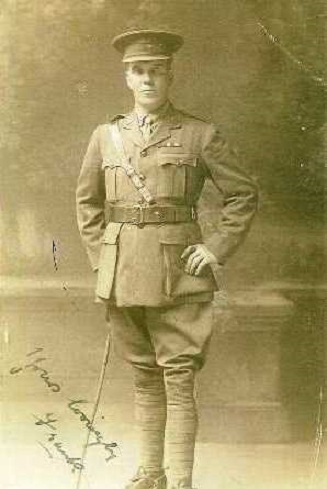
Naval and Military Expeditionary Force.
1st BATTALION - 34th BATTALION A.I.F.
Captain: 6-1469 Frank William BAULCH.
Born: 4th January 1880. Camberwell, Surrey, England.
Married: 1908. Waterloo, New South Wales, Australia. Marriage Cert:9238/1908.
Wife: Clara May Baulch. nee: Rutherford. (1881-1956)
Died: 2nd January 1950. 3 Padua Court, 290 Bronte Road, Waverley, New South Wales, Australia. Death Cert:3669/1950.
Father: George Kerr Baulch. (1841-1914)
Mother: Mary Baulch. nee: Henry-Goodwin. (1843-1886)
INFORMATION
Frank William Baulch enlisted with the 1st Battalion, Naval and Military Expeditionary Force (Tropical Unit) on the 11th August 1914, service number:6 with the rank of Sergeant and embarked from Australia on board HMAT A35 "Berrima" on the 19th August 1914.
Frank re enlisted with the 34th Battalion AIF on the 22nd February 1916 service number:1469. He was promoted to Regimental Quartermaster Sergeant and was an original member of the Battalion and embarked from Sydney on board HMAT A20 "Hororata" on the 2nd of June 1916.
 Frank was promoted to 2nd Lieutenant on the 12th of August and proceeded overseas for France on the 21st of November 1916.
Frank was promoted to 2nd Lieutenant on the 12th of August and proceeded overseas for France on the 21st of November 1916.
(1) Christmas Day 1917 was celebrated in good style and was made realistic by a snow fall. Food was ample and all Ranks enjoyed a traditional meal, accompanied by a plentiful supply of Beer. Fuel was in good supply and fires were kept going during the long evening. Whilst here Captain: James FLORENCE took over as Quartermaster from Lieutenant: 6 Frank William BAULCH who became Quartermaster of Brigade School. On 1st January 1918, New Years Day, the Battalion was relieved by the 171st Brigade and proceeded to de Seule hutmen Camp. Owing to a hard frost the marching was difficult. on the following day the march was continued via Bailleul to Meteron Billeting Area, where the Billets were very scattered. While here the frost broke, making the road very muddy and unpleasant for marching and transport. General Training was carried out, interspersed with Sports and Football Matches. During this period, Captain: Robert Joseph STEWART left the Battalion to take up special duty in England. Captain: Telford Graham GILDER. took over command of "A" Company and Lieutenant: 19583 Donald GRANTER became Transport Officer.
(1) 34TH BATTALION AIF SHORT HISTORY
Frank returned to Australia onboard the "Thermistocles" on the 22nd of April 1919 and returned to Australia on the 12th June 1919.

Family Information
Frank was a married 35 year old Soldier from Albion Street, Harris Park via Parramatta, N.S.W. upon enlistment. Frank worked at the Small Arms School at Randwick post WW1
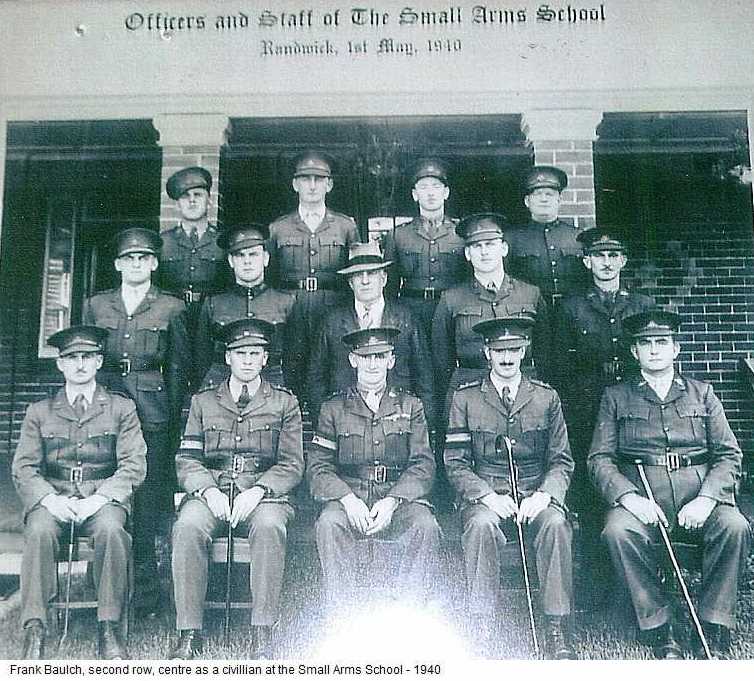
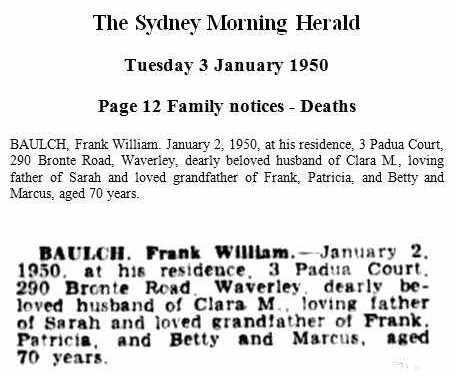
Funeral Notice printed in The Sydney Morning Herald (NSW 1842 - 1954) Tue 3 Jan 1950.

Military Records
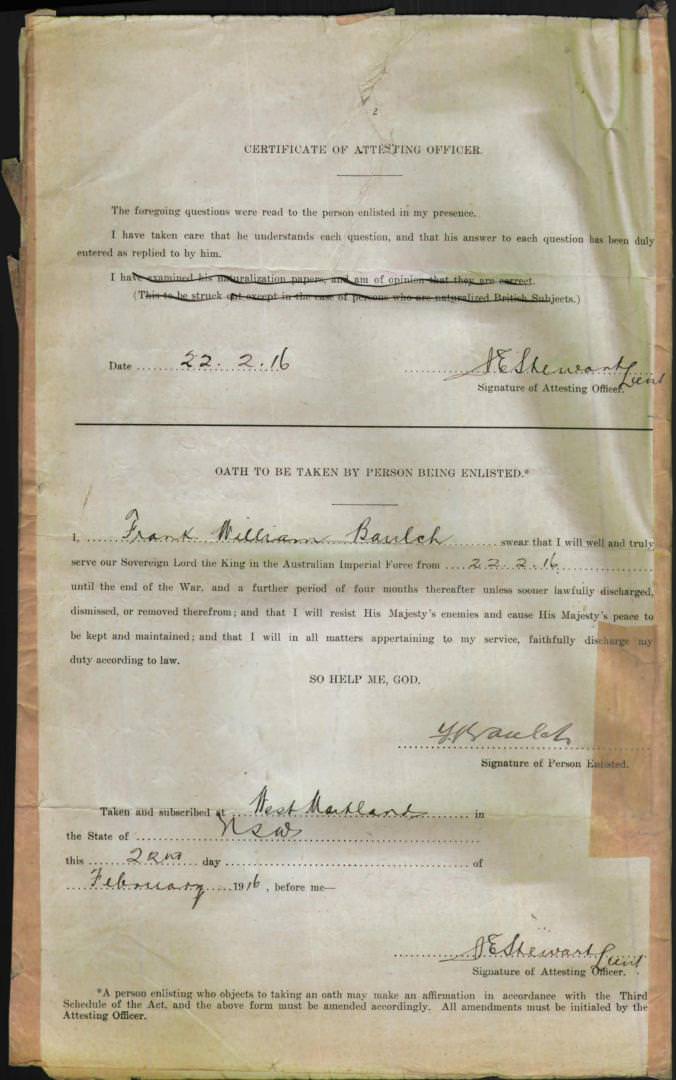
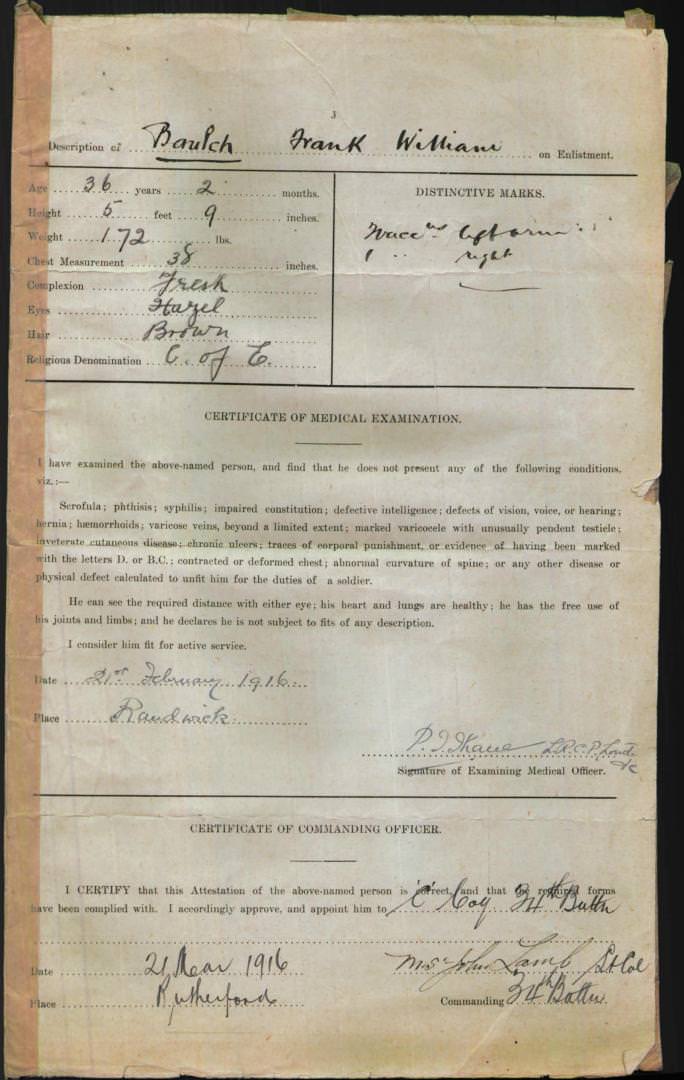
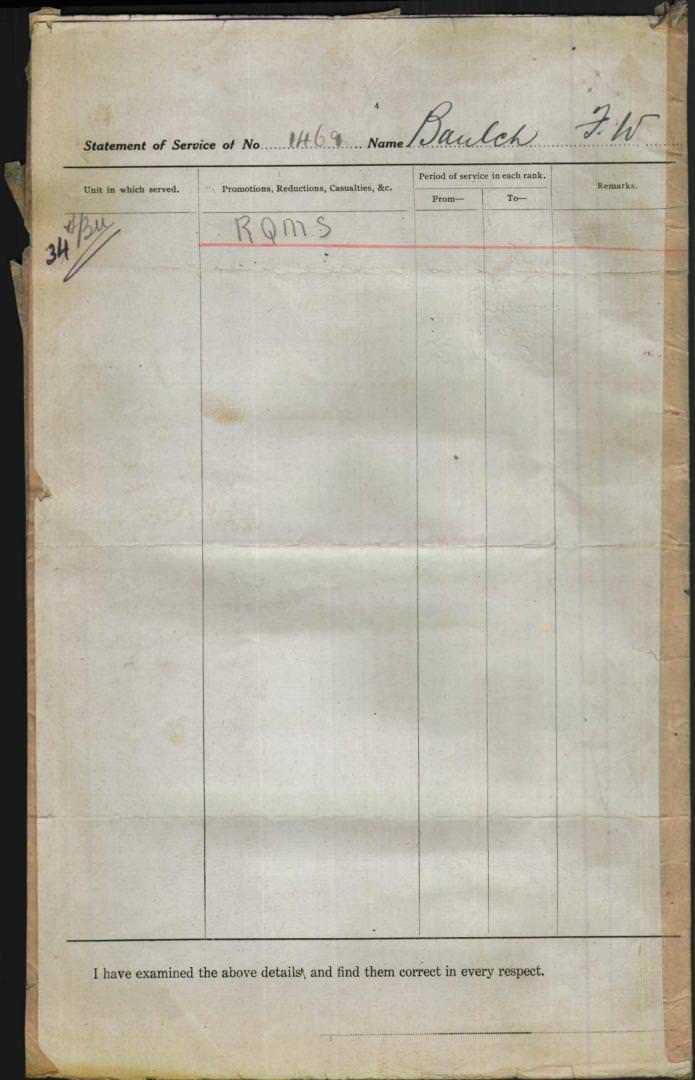
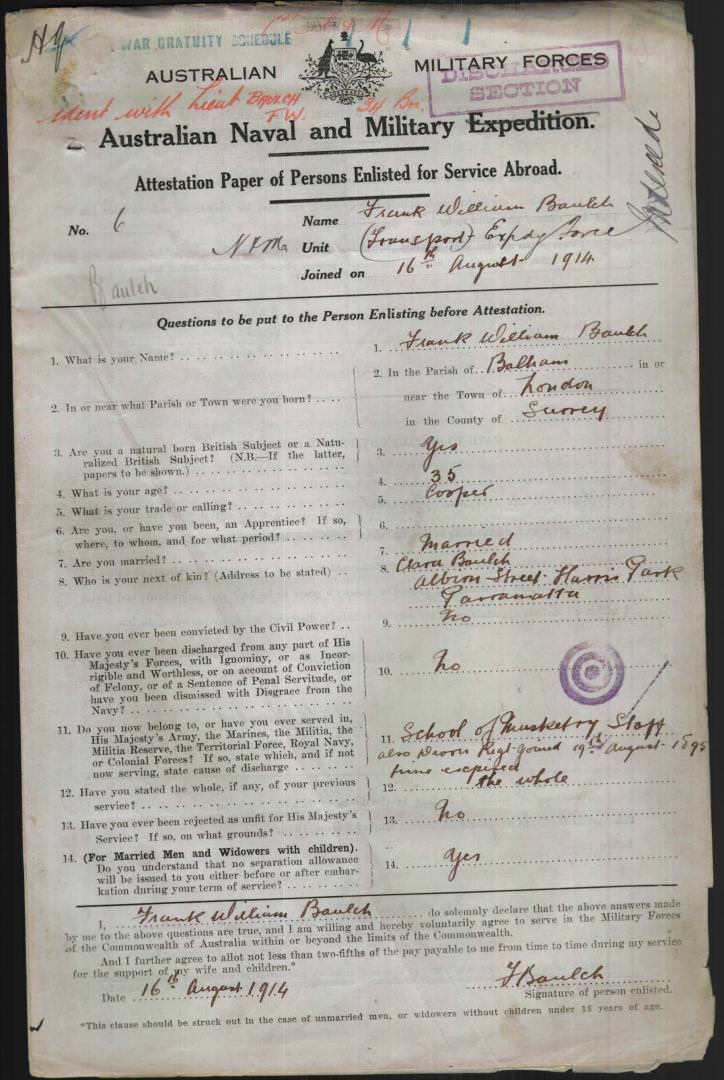
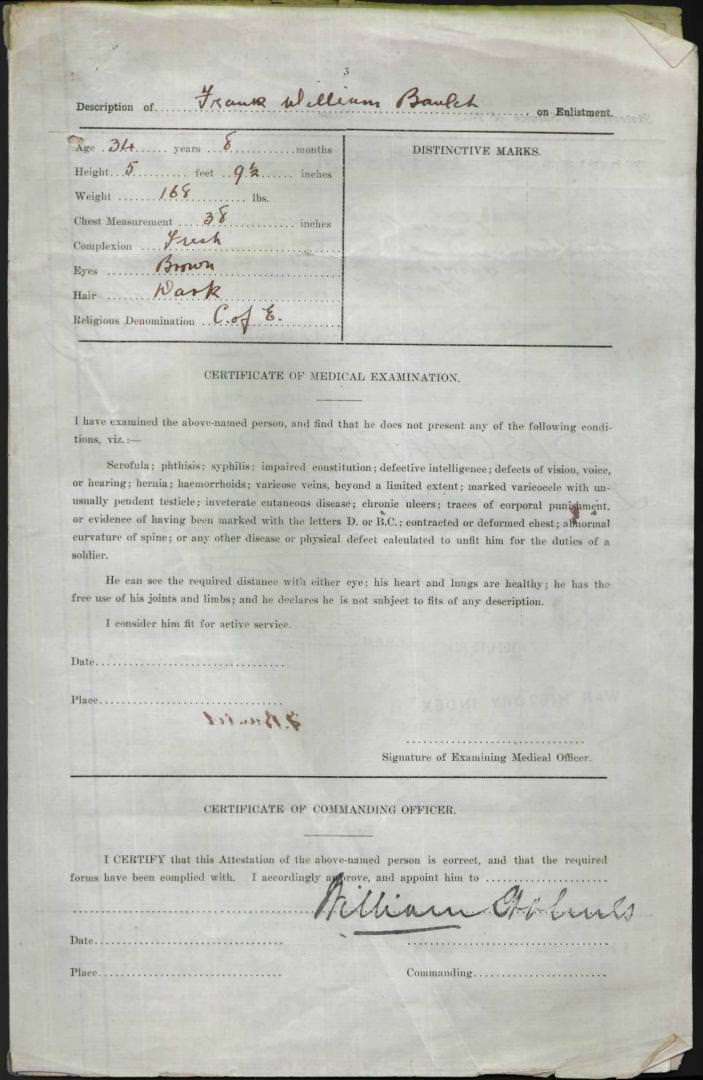

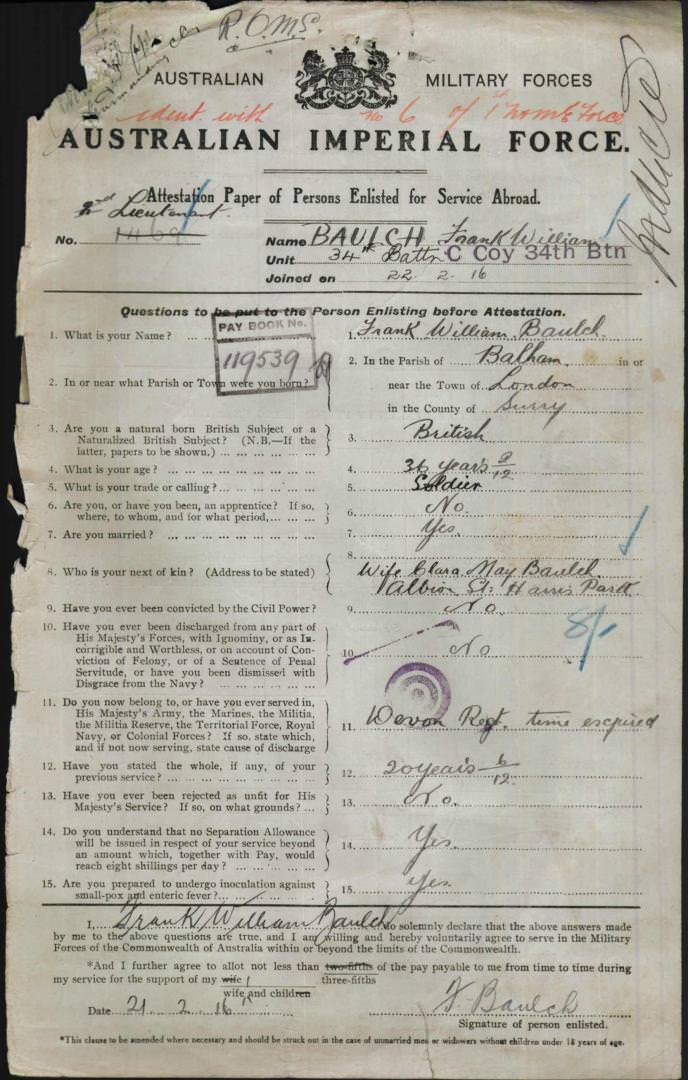
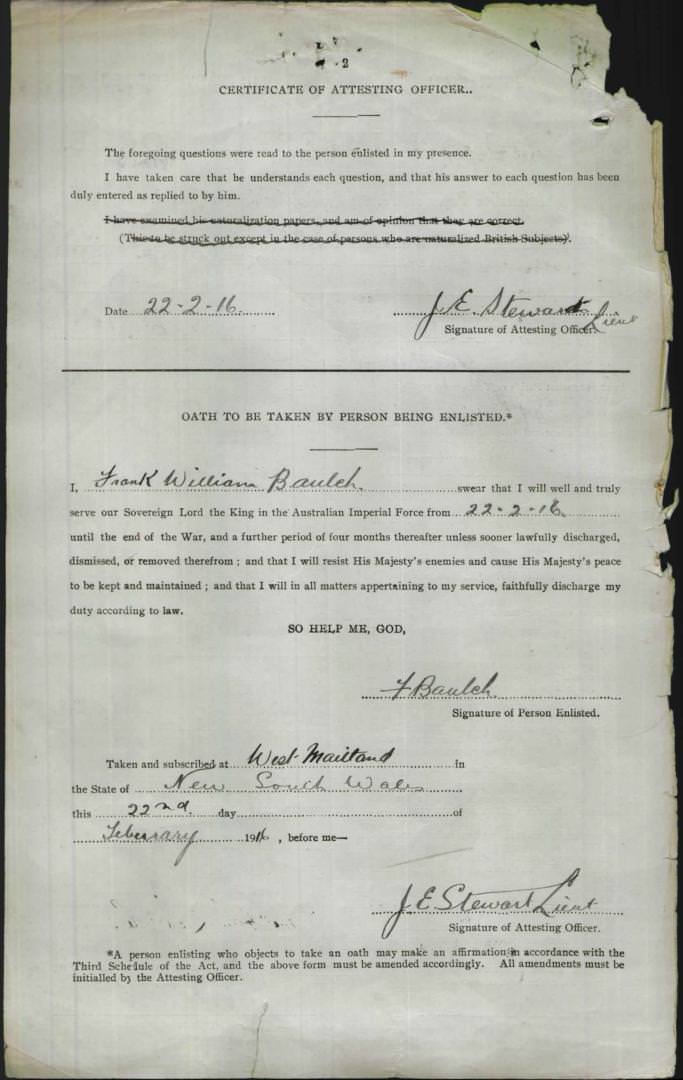
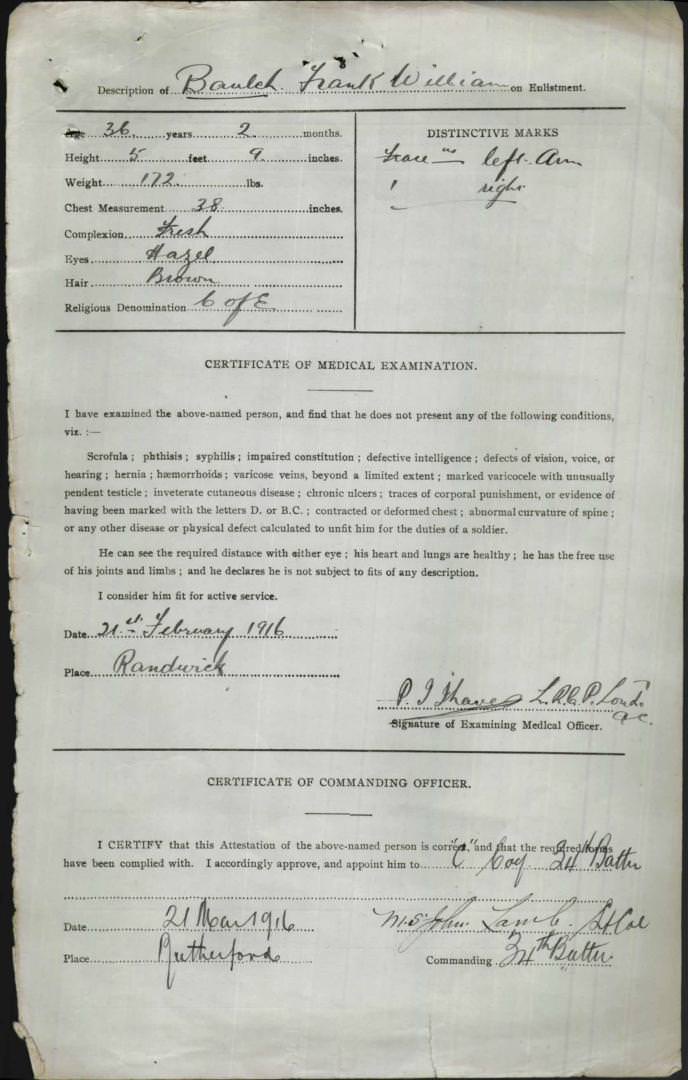
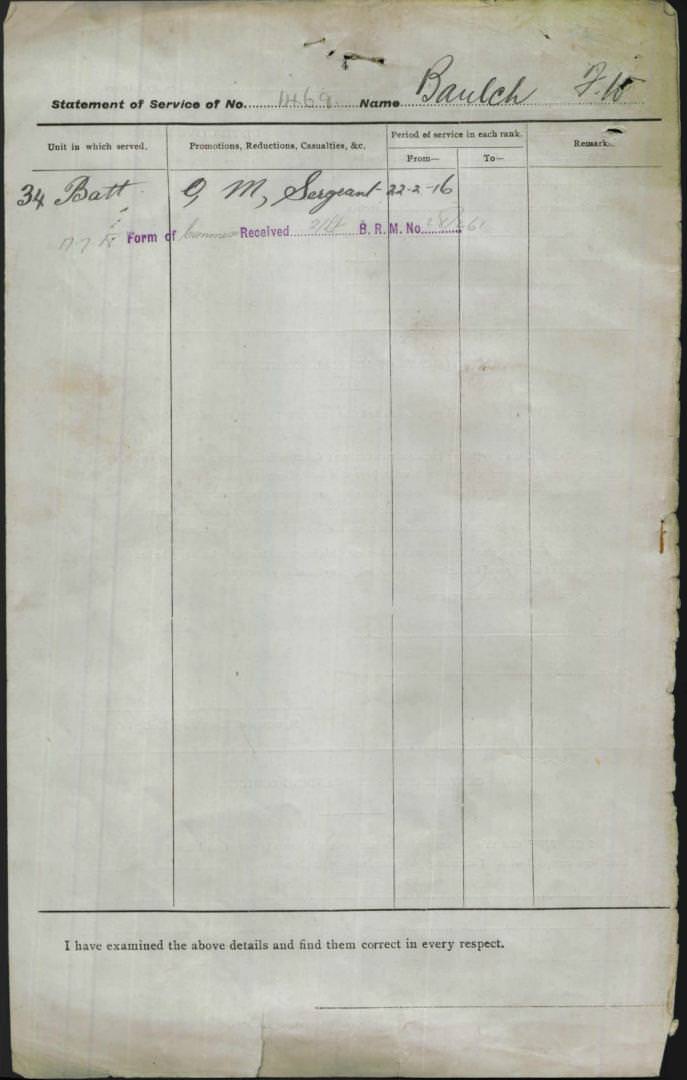
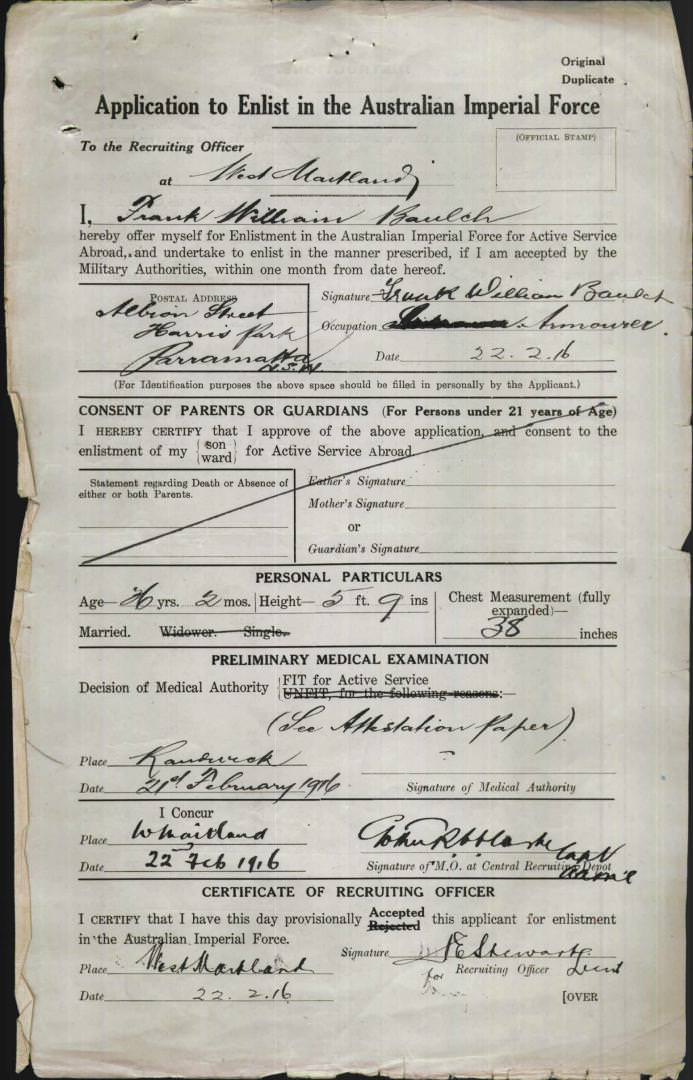

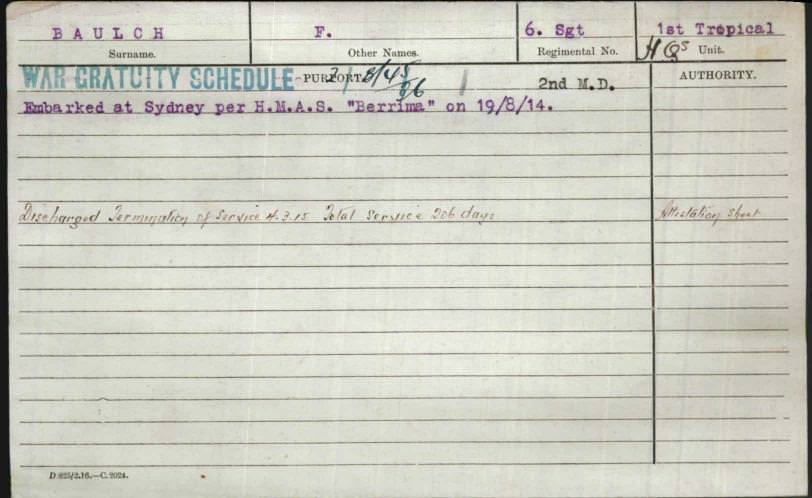
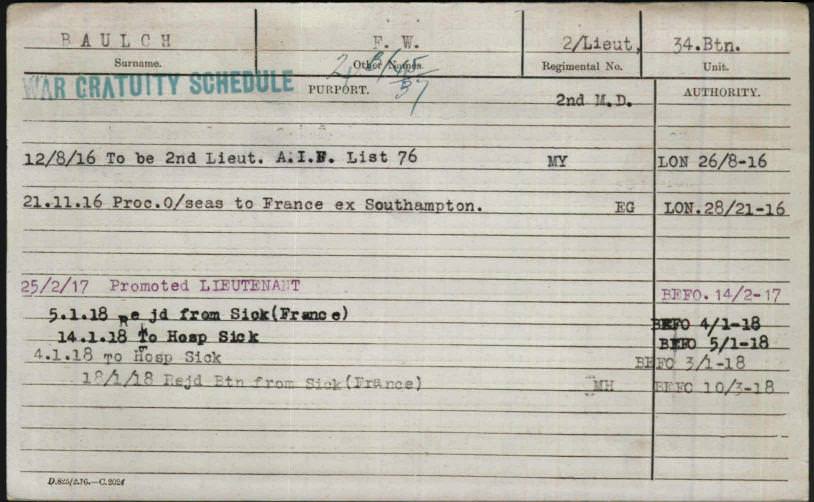

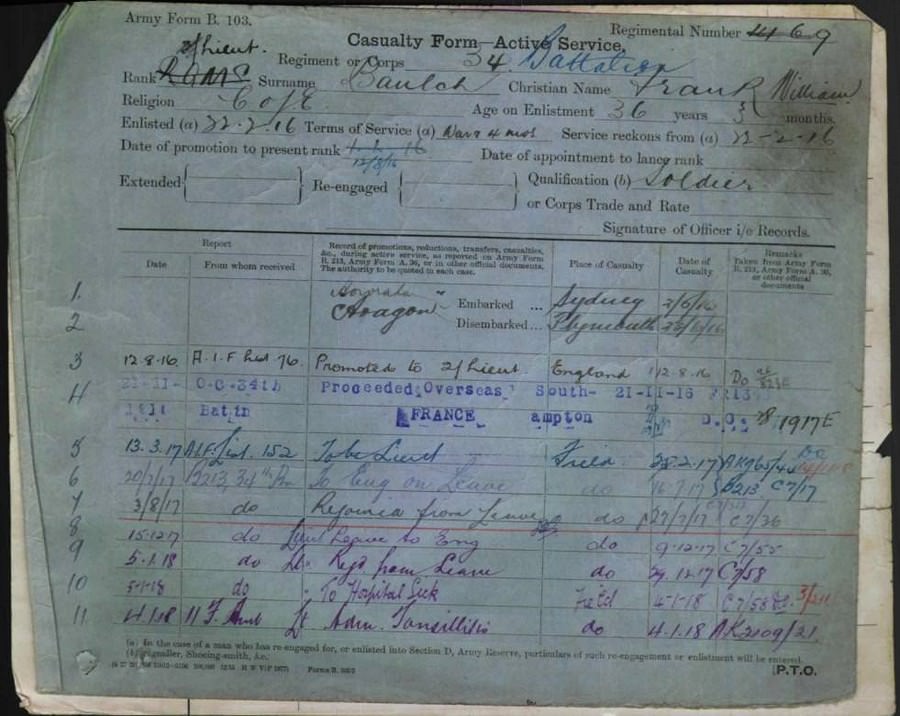
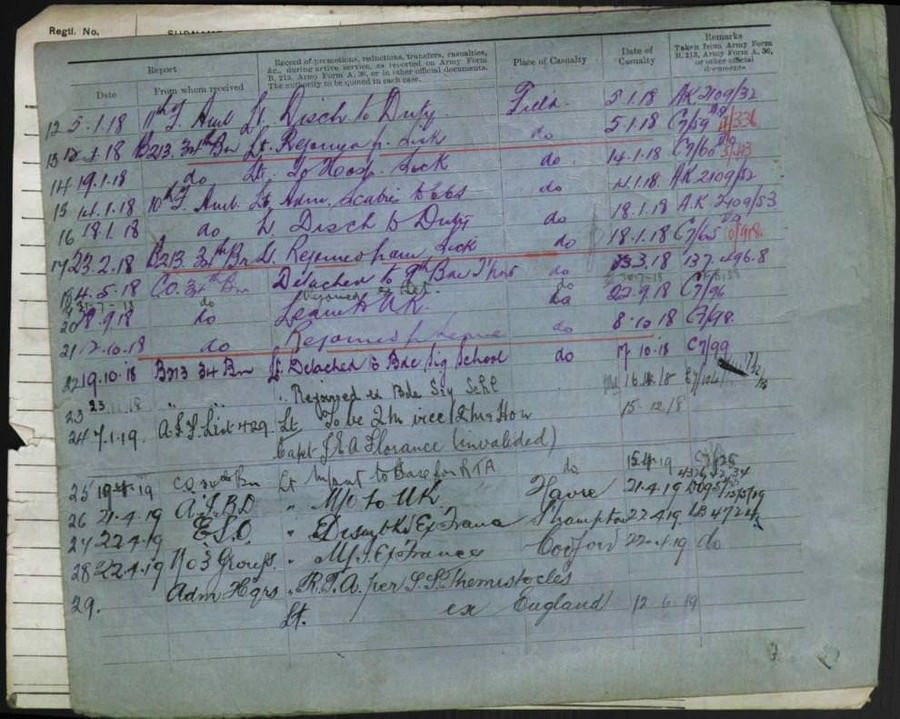
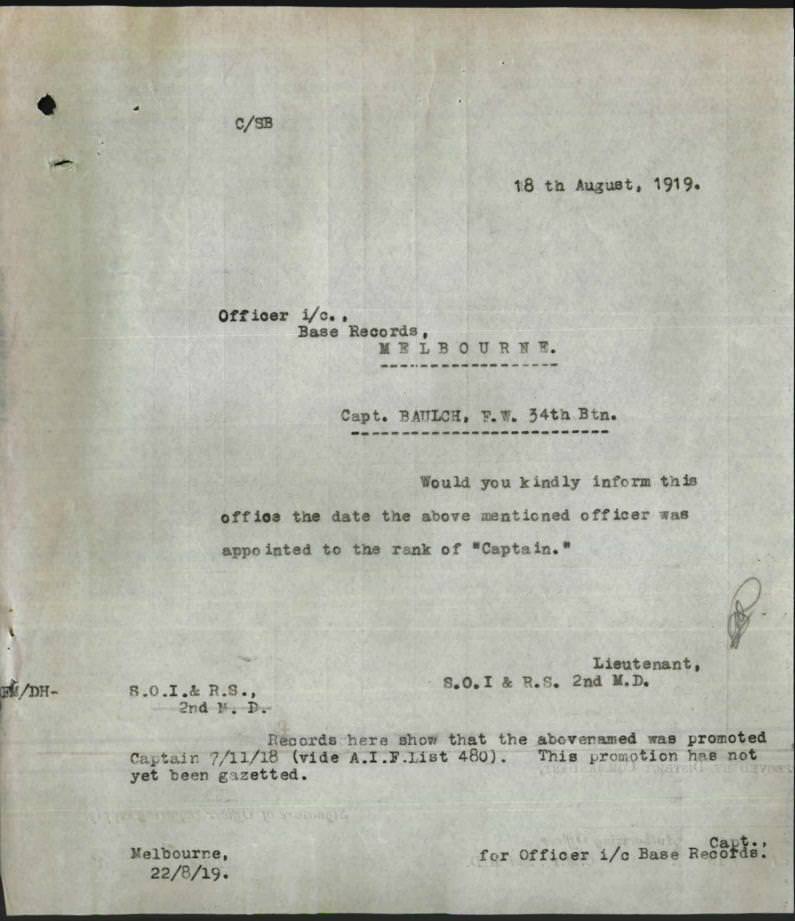
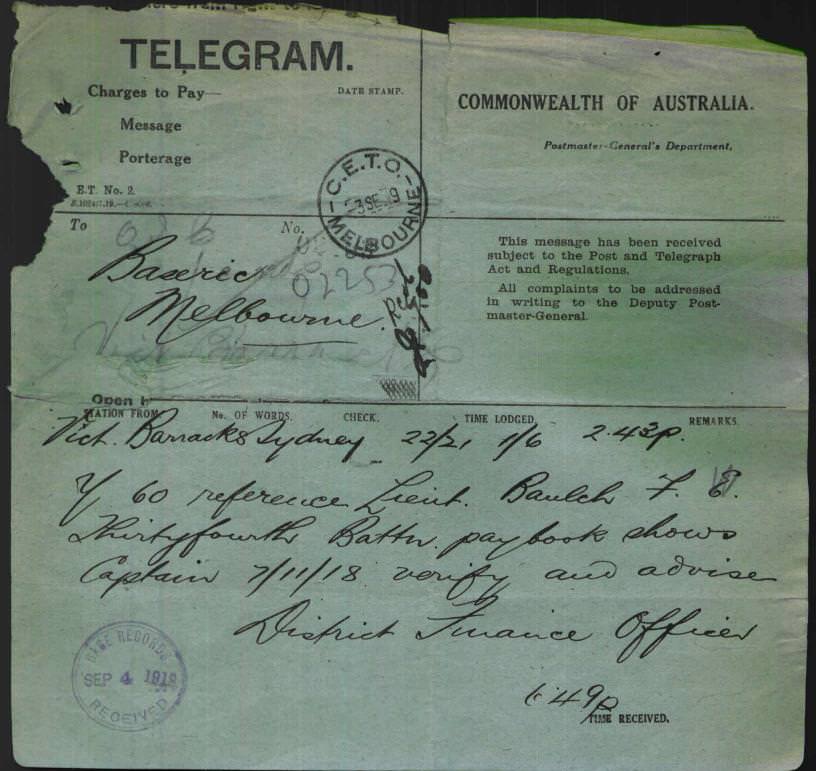
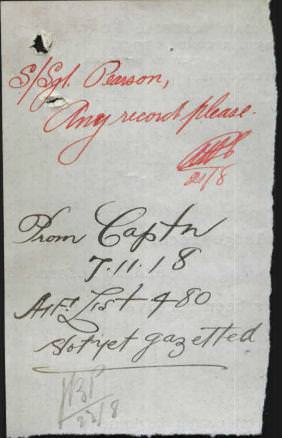
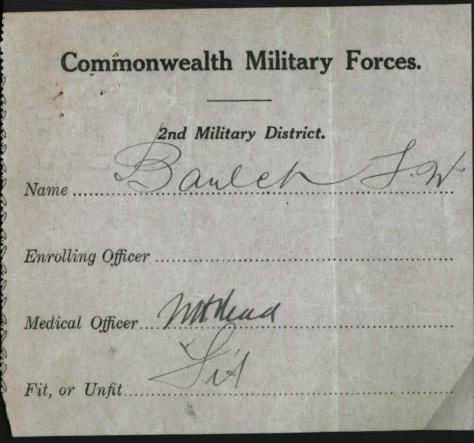
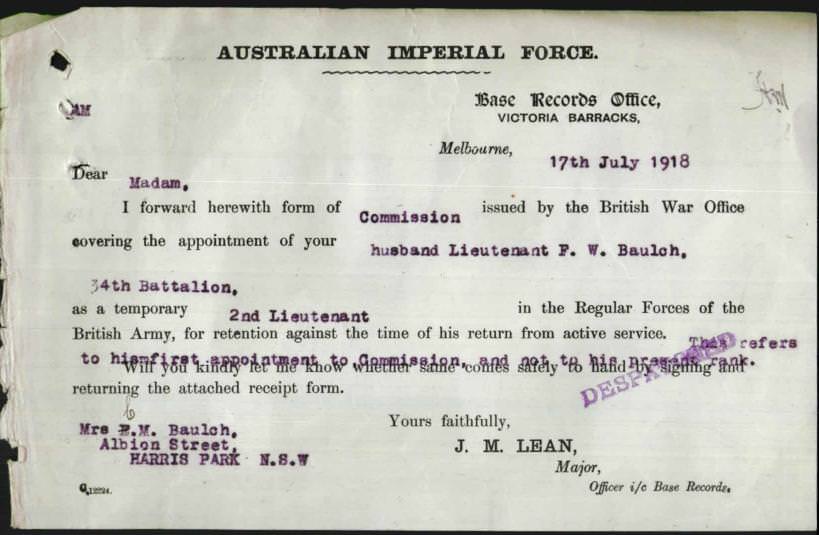

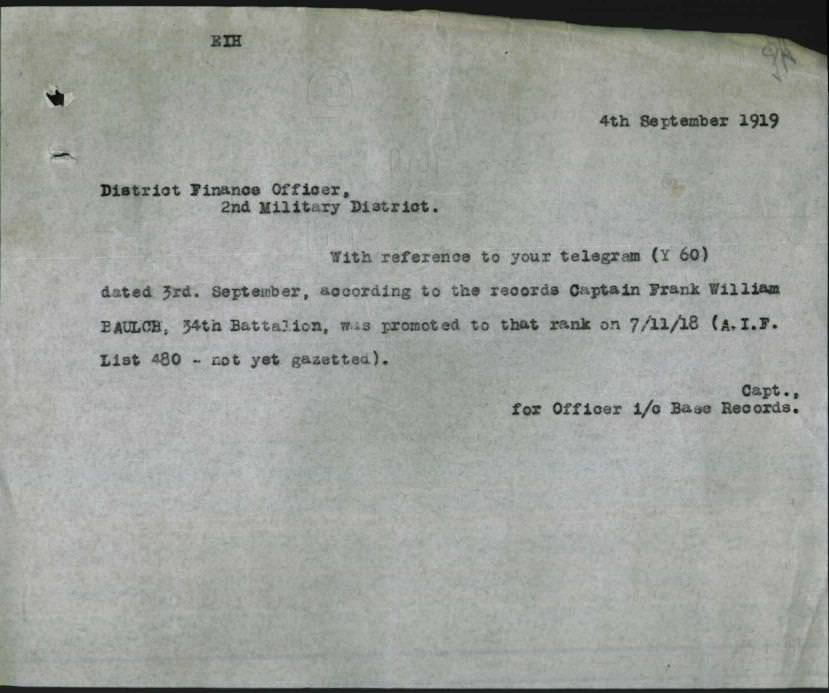
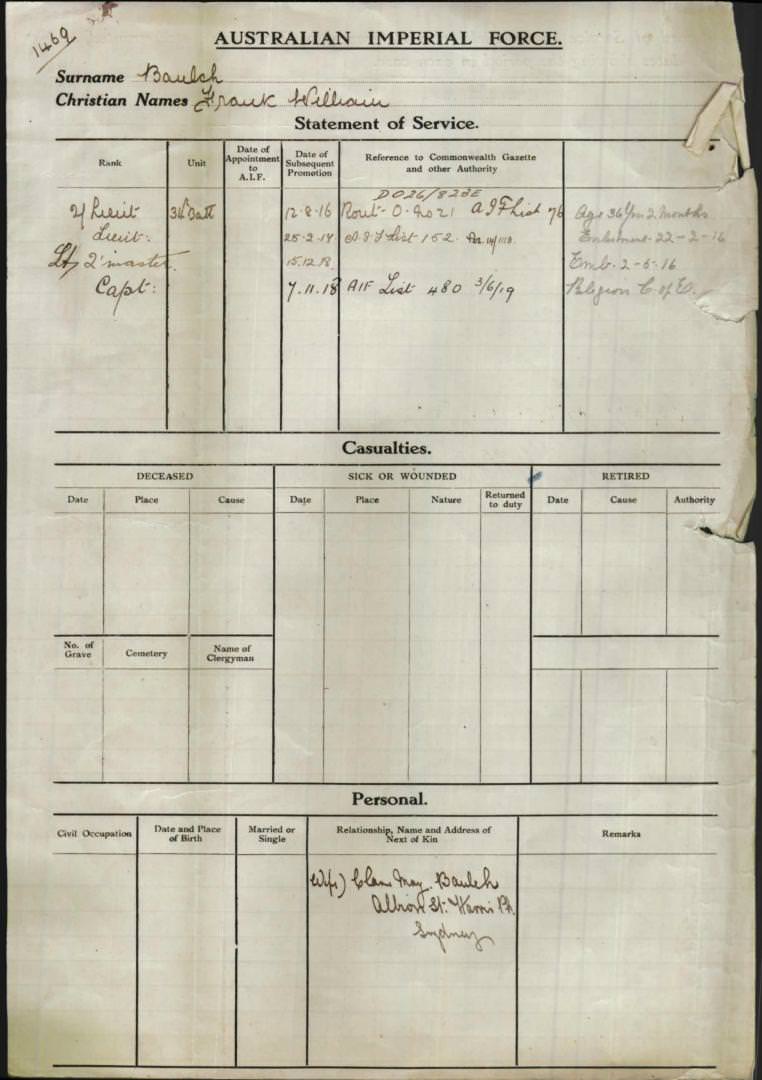
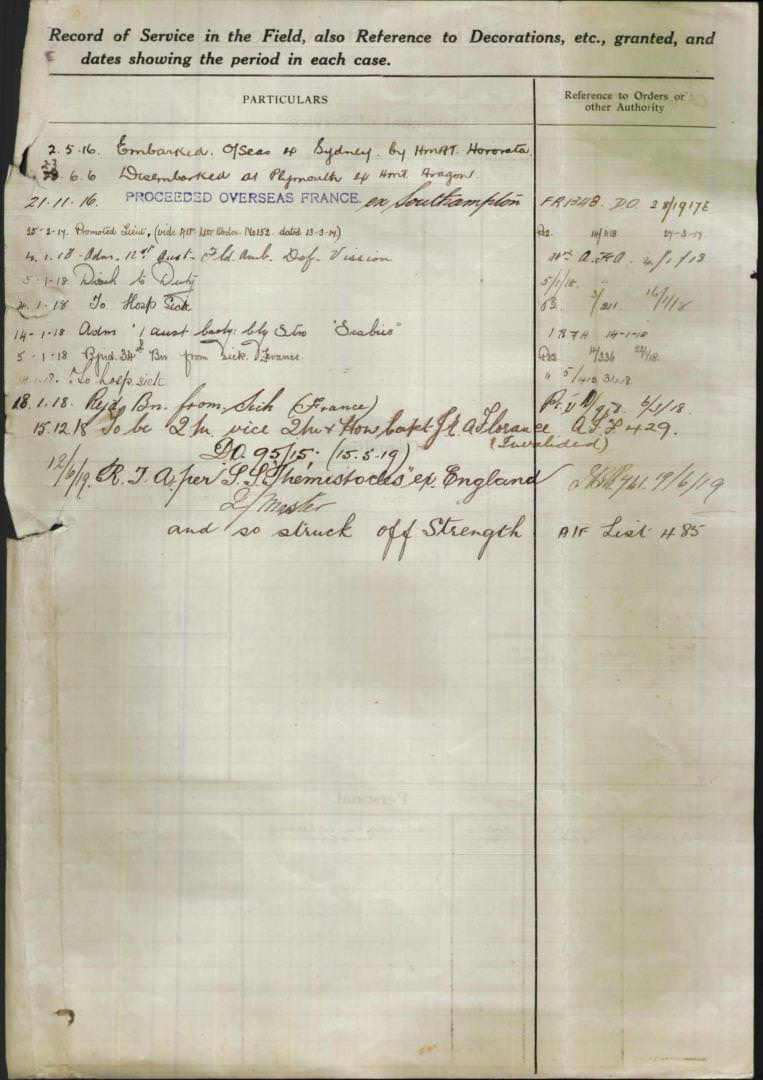
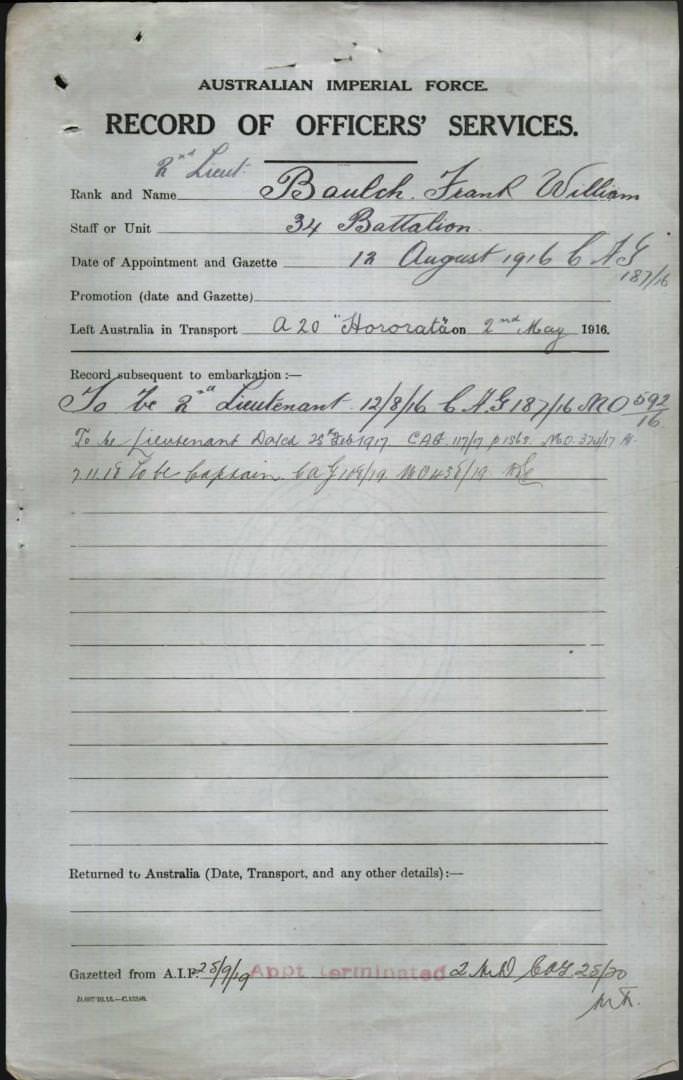

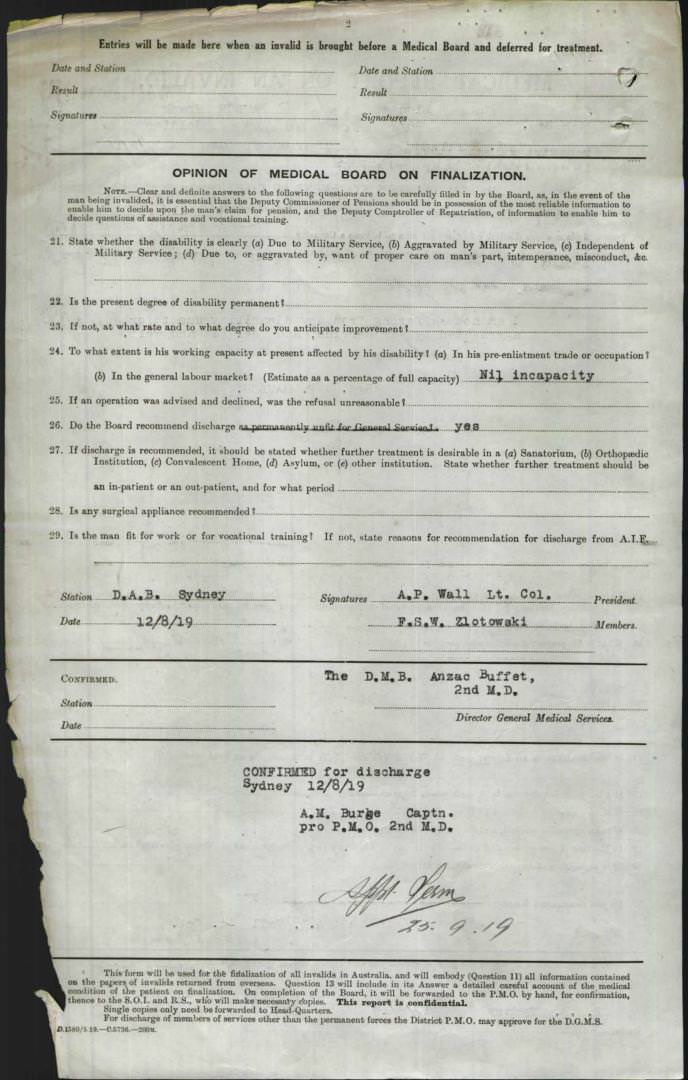

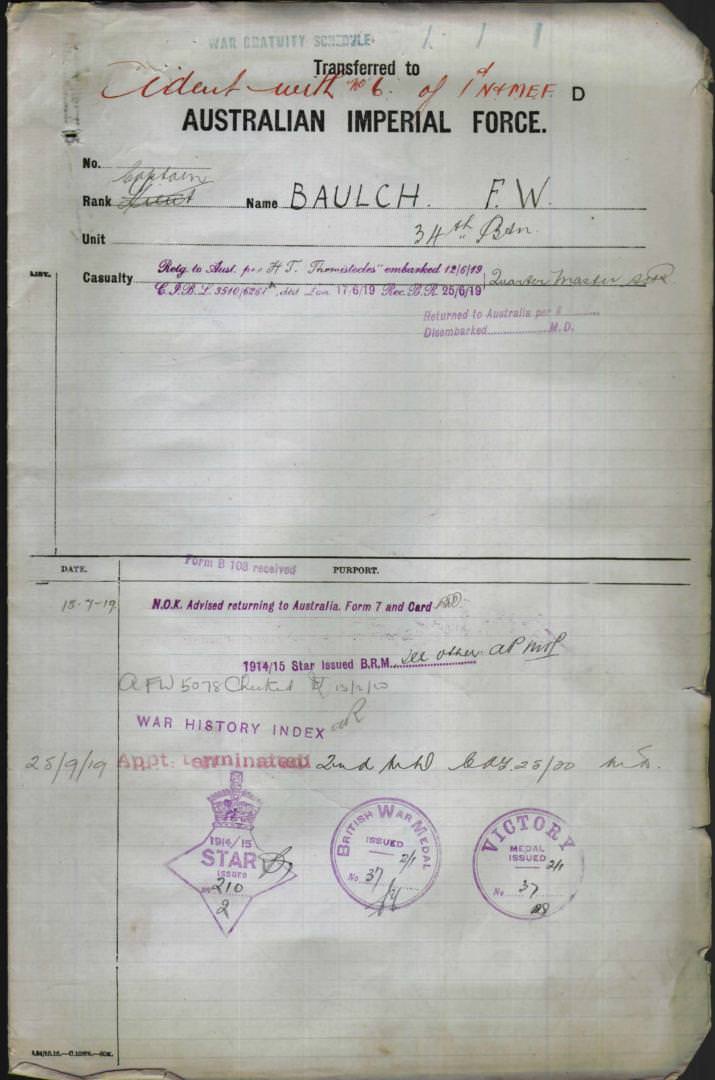
©Commonwealth of Australia (National Archives of Australia)
Under Construction; 10/01/2014-08/02/2020.
Captain: Walter Headland Valentine BAKER.

34th BATTALION A.I.F.
Captain: Walter Headland Valentine BAKER.
Born: 15th February 1862. Oamara, Waitaki, Otago, New Zealand.
Married: 1910 Bourke, New South Wales, Australia. Marriage Cert:4342/1910.
Wife: Gertrude Baker. nee: Tidmarsh. (1886-20/09/1975) died Brisbane City, Qld, Australia.
Died: 1933.
Father: Andrew Baker. (1821-28/04/1885)
Mother: Matilda Jane Baker.nee: Headland. (1821-28/08/1900)
INFORMATION
Walter Hedland Valentine Baker enlisted with the A.I.F on the 12th of August 1915 and was posted to C Company 34th Battalion A.I.F in January 1916 and was an original member of the Battalion. "Until the 10th of March, early training and formation of the Battalion was in progress. On that day the Battalion marched to the newly pitched camp at Rutherford and was completed with the exception of the Transport. These joined later and came from the Army Service Corps camp near Sydney. Here strenuous training was carried out. The men were very keen and fit, whilst their comfort and health were made a special study. Food was good and ample and sports and recreation were not overlooked.
A Girl's League was formed to cater for the comforts of the Battalion, under the supervision of Miss Violet MACKAY, who took a keen interest from the beginning, having, with the Mayor of Maitland met the men of the Wallaby March at East Greta and prepared dinner for them on their arrival. On 1st May 1916, the Battalion left by Train from Farley Station for the Showground in Sydney, equipped with kit bags and necessary clothing, and was reviewed in Moore Park by General: Gustave Mario RAMACCOTTI. On the following morning, 2nd May 1916 the men embarked on the transport HMAT A20 "HORORATA" and sailed at 4:00 pm".
The voyage to England was without any unusual incidents and a good passage throughout. The first port of call was Albany, where three days were spent. Columbo was reached on Empire Day, 24th May. Here two days were taken up coaling and taking on provisions, etc. During the stay the Battalion carried out a route march through the town. Suez was reached on 8th June, where a party of Light Horse and some details were disembarked. Arriving at Port Said on 9th, the ship coaled and proceeded to Alexandria which was reached on 11th June 1916.
Here the Battalion transferred to S.S."Aragon", E867. Some Australian Details were on board, also a number of Tommies going to England on Furlough. Devonport was reached on the 23rd June, the Battalion disembarked at Plymouth at 1:00pm and entrained during the afternoon for Amesbury, arriving at midnight and marching to hutments at No: 1 Camp, Larkhill. Here the Battalion settled down to hard training, which included Route Marching, Trench Digging, Bomb Practice, Musketry and general Camp Routine. Later the Battalion moved to the No: 25 Camp and finished off their training, which included six days' battle practice and field work at the Bustard Trenches.
Four days' disembarkation leave was given from 6th to 10th July and later King's Leave from November 5th to 9th. Whilst here the Official Colours were issued. Purple over Green (Oval), these replacing the Colours presented to the Battalion (Old Gold on Shoulder Straps) by the Ladies of West Maitland. A Signal Section was formed at Larkhill under Lieutenant: Harold Henry McMINN. The weather in England was mostly fine until the latter part of training, when a good deal of rain and snow caused inconvenience. In October the 34th Battalion was reviewed at a Divisional Parade by His Majesty King George V at Bulford.
The 34th Battalion left Larkhill on the 21st November and en trained at Amesbury for Southampton, embarking on the S.S "Arundel". The transport section left by S.S. "Princess Victoria". The Battalion arrived at Le Harve, France on the 22nd November 1916. Disembarkation commenced at 8:00 am and the Battalion marched to No;1 camp on the Hill, arriving at 2:00 pm. The men carried heavy loads, in some cases amounting to miniature Q.M.' Stores. The march over cobblestones was very tiring, notwithstanding the many route marches which had been carried out at Larkhill. However, after bathing their feet and receiving treatment, as well partaking of a good meal, some spent a comfortable night.
The following morning the Battalion moved to Le Harve Railway Station, leaving D Company behind. On arrival at the Station en training commenced at 8:00 am and the train left at 11:15 am. The journey was slow and occupied until 4:30 pm on the 24th. On arrival at Bailleul the men de trained and marched to Outtersteene. D Company arrived at 4:00 pm the following day. The Battalion rested here in billets for two days previous to taking over garrison duties in the Line at Armenties. The Commanding Officer Lieutenant Colonel. Malcolm St John LAMB. with the Adjutant, Company commanders, N.C.O's and Specialists went into the Line to inspect Trenches, Stores, Plans and to arrange for the taking over this Section of the line on the following day.
The specialists and N.C.O's remained in the Line. On 27th November the Battalion went into the Line in the L'Epinette Sector. The men were taken up by motor lorries as far as the Square near Houplines Station, and marched via Butterne Avenue and Willow Walk to the Line, carrying their packs and blankets into the trenches. Lewis Gun ammunition was taken into the Line with the tin cases. The going was difficult owing to the conditions of the Trenches and the heavy and bulky loads. Later the blankets were dumped near Tussage Dump, from which most of them disappeared. This was the main incident of our relief in the Line.
The Sector taken over had been held by the Northumberland Fusiliers whom the 34th Battalion relieved. Specialists of this Regiment remained for a couple of days to arrange and assist in the routine. We were greeted with a display of Verey Lights and, apparently anxious to see the newcomers, the enemy searched our Sector with his searchlights throughout the night, which was misty and dark. Our Artillery and Trench Mortars put over a heavy barrage, either to let Fritz know we had arrived or to cover the change over; this was the signal for increased activity of enemy Machine Gun and Rifle fire to which the Battalion energetically replied.
During the night Patrols were sent out, Listening Posts established and wiring was commenced. Dawn broke with a thick mist hanging over the Sector and our men could get very little idea of the new frontage. Our Artillery and Trench Mortars were busy registering on the enemy positions throughout the day and Fritz retaliated with Machine Gun and Rifle fire. The first day passed with no special incidents.
The first Casualty occurred on the morning of the 3rd of December at sunrise when Private: 148 William PECK was sniped with an explosive bullet through the forehead. Counter battery work, Machine Gun firing and sniping were fairly active during our first term in the Line.
Considerable damage was done to our Trenches and parapets and one of our Listening Posts was destroyed. Some enemy Patrols were dispersed by our snipers. Enemy working parties were fairly active on our front and his patrols were strong. Considerable road and rail transport was noticeable behind the enemy lines. The Battalion livened things up generally in the Sector which of late had been fairly quiet and Fritz did not appreciate the change. Just before being relieved we presented them with an issue of Gas. The Trenches were in a very wet and muddy condition. The water in the bottom of them being frequently frozen, the ice had to be broken to provide sufficient cover for the men, as the parapets were not high enough to allow walking on the ice. Thus the men had to stand in the freezing water and mud, with the result that the constant wet and cold caused many evacuations with trench feet.
The 33rd Battalion was on our left and the New Zealanders were on our flank during this period. After six days in the Line we were relieved and marched to Billets in Armentieres. The Battalion Headquarters were at No: 6 Rue de Strasburg, the Quarter Master's Store at No: 28. Billet routine from the 4th to 10th December 1916 consisted of a general clean up and Bath Parades to Erquinghem.
On the 11th December 1916 the 34th Battalion went into the Line again. "B" Company occupying the Subsidiary line instead of "D" Company, as in the first period. The weather was still cold and misty. The usual counter battery work was carried out by the Artillery and Trench Mortars. Some shells from our own "Heavies" dropped short and fell into our front Line. Sniping on both sides was again active. Extra Patrols were sent out to engage the strong fighting enemy Patrols in No Man's Land. The enemy was busy with his Working Parties and good work was also done by the wiring parties. Two extra Lewis Guns were added to the Front Line for the purpose of sweeping the enemy parapets and wire, in retaliation for enemy sniping which had become most active and causing trouble.
This was the beginning of continuous sweeping of parapets on both sides during the whole period of holding this Sector of the Line. The 34th Battalion Patrols were contesting No Man's Land, which up to this time Fritz considered belonged to him. Heavy bombardments were carried out which caused considerable damage to the Trenches and Supports on both sides. quite a number of Men were being evacuated with trench feet through standing in the cold and wet, notwithstanding that dry socks were issued every day to the troops. during this period there were a number of casualties, including 6 K.I.A.and Lieutenant: Stephen Matthew HARRIS was the first Officer wounded. Captain: Walter Hedland Valentine BAKER. and Lieutenant: Frederick Llewllyn EAST. and a number of men were also evacuated sick.
(Illawarra Press; 1957)
Discharged 13 November 1917
Family Information
Walter was a married 46 year old Clerk from Spearwood P O, Spearwood, Western Australia upon enlistment. He served during the Boer War. 4th Tropical Force, F Company
Walter and Gertrube Baker had a son who served in the R.A.F. Sgt. Barrie. Baker. Year Postings Rank 1940 Joined the RAF -1940 Posted to 264 Squadron in July Sergeant/Air Gunner.
Sgt Baker was the son of Walter Headland Valentine Baker and Gertrude Baker; husband of Ethel Baker, from Kings Norton, Birmingham. Barrie joined the RAF in early 1940 and after completing his training was posted to 264 Squadron at Kirton-in-Linsey in July.
After a period of night-fighting following heavy losses over Dunkirk, 264 moved south to Hornchurch on 21st August 1940 for daylight patrols. On 26th August 1940, Barrie was flying with F/Lt A J Banham in Defiant L 6985. They had destroyed a Do 17 over Thanet, when they were attacked and shot down by Bf 109s. Their aircraft crashed two miles off Herne Bay. Banham bailed out and was rescued from the sea but Barrie was never found.
Sergeant Barrie Baker is remembered on the Runnymede Memorial, Panel 11. He was 27 years old.

Andrew Baker. (1821-28/04/1885)
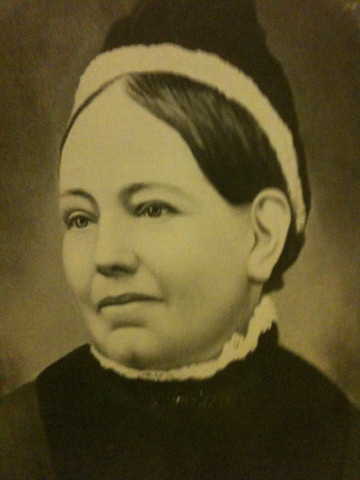
Gertrude Baker. nee: Tidmarsh. (1886-20/09/1975)
Military Records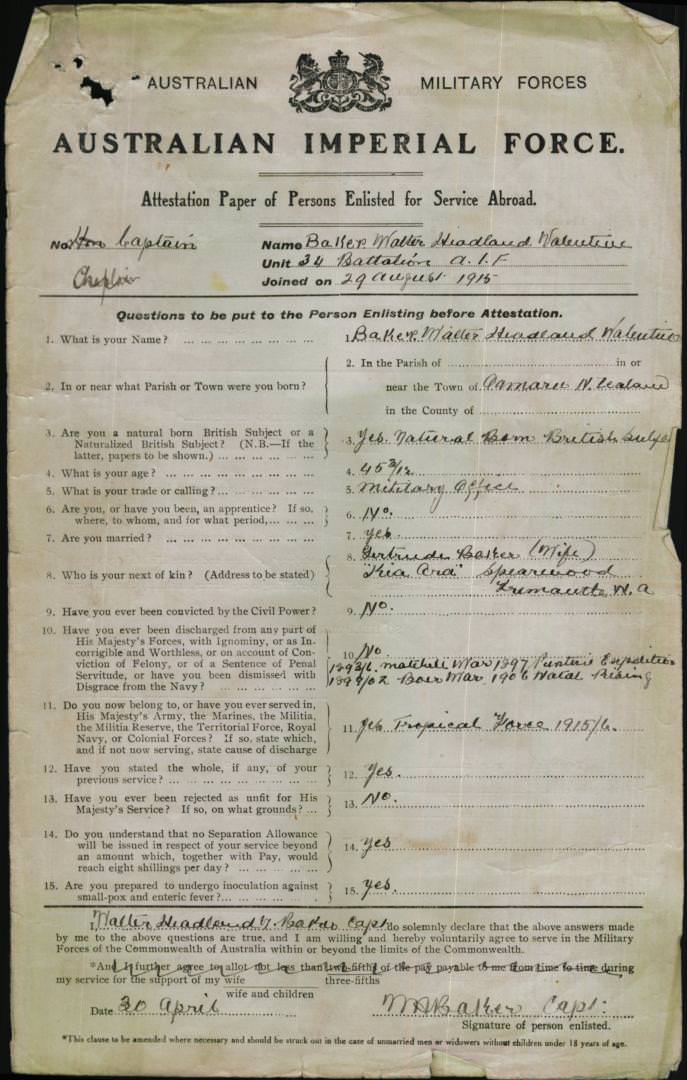
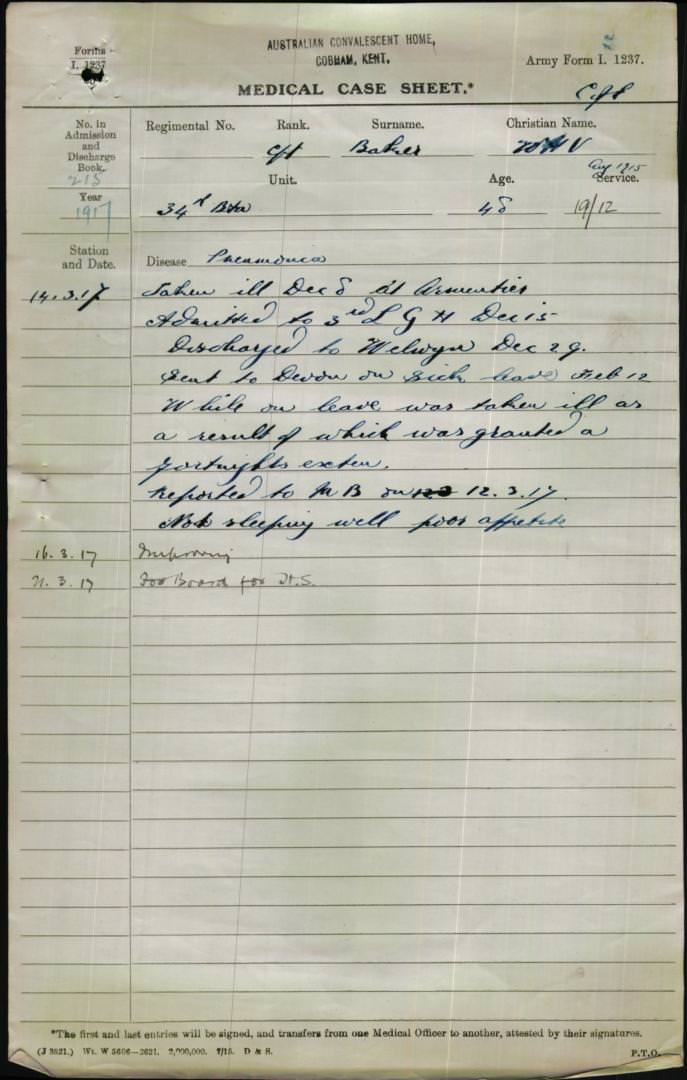

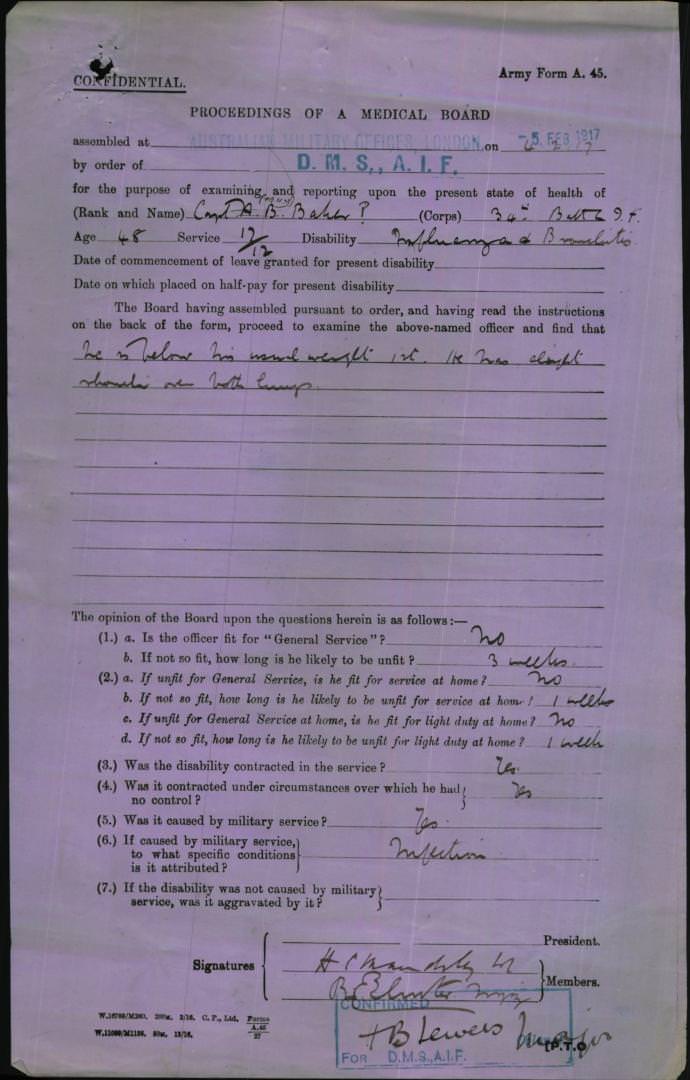
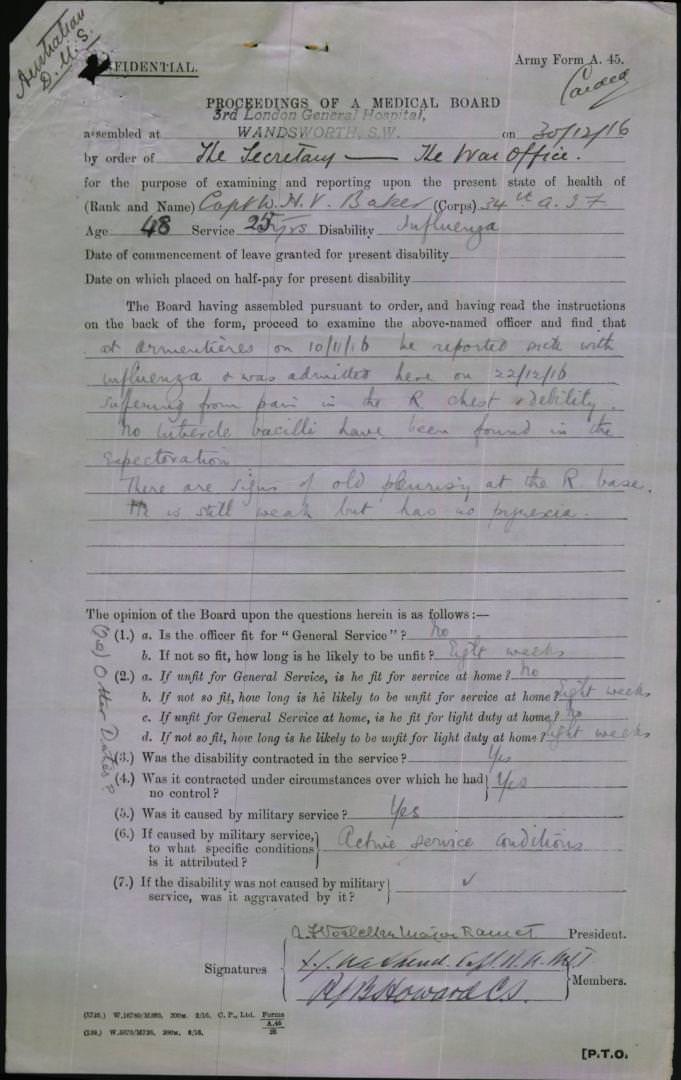
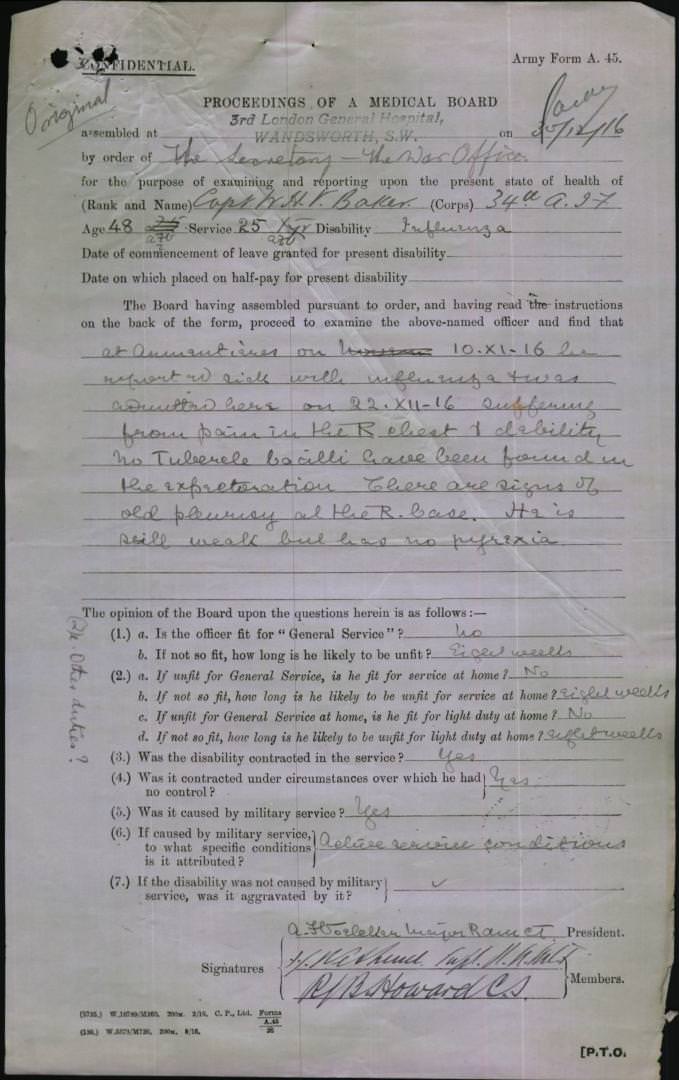

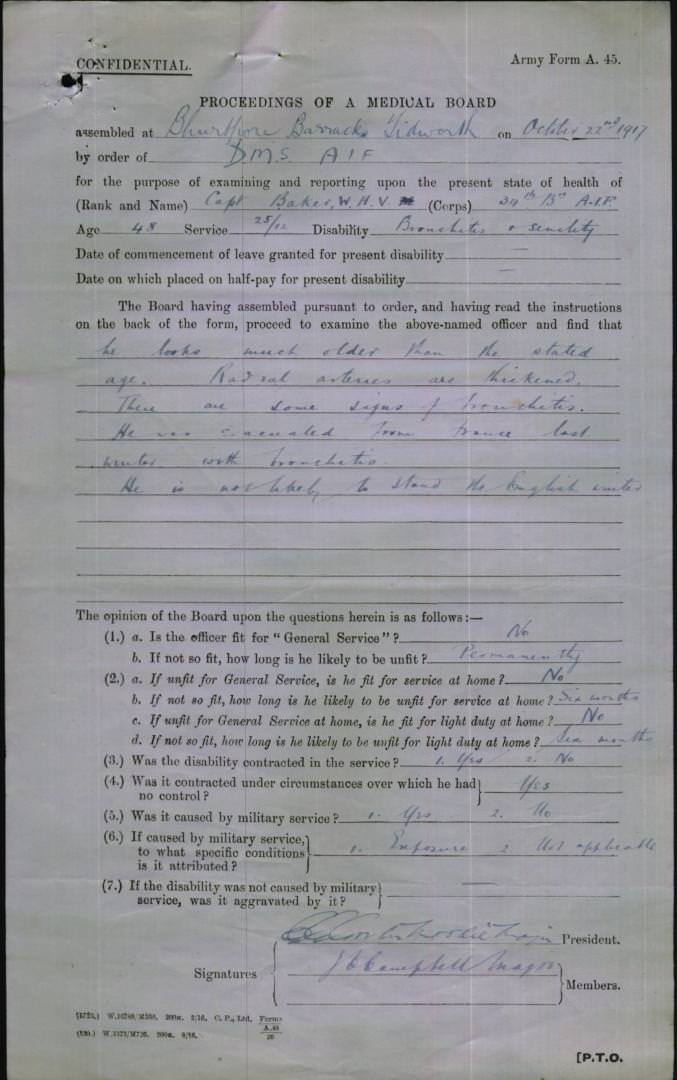




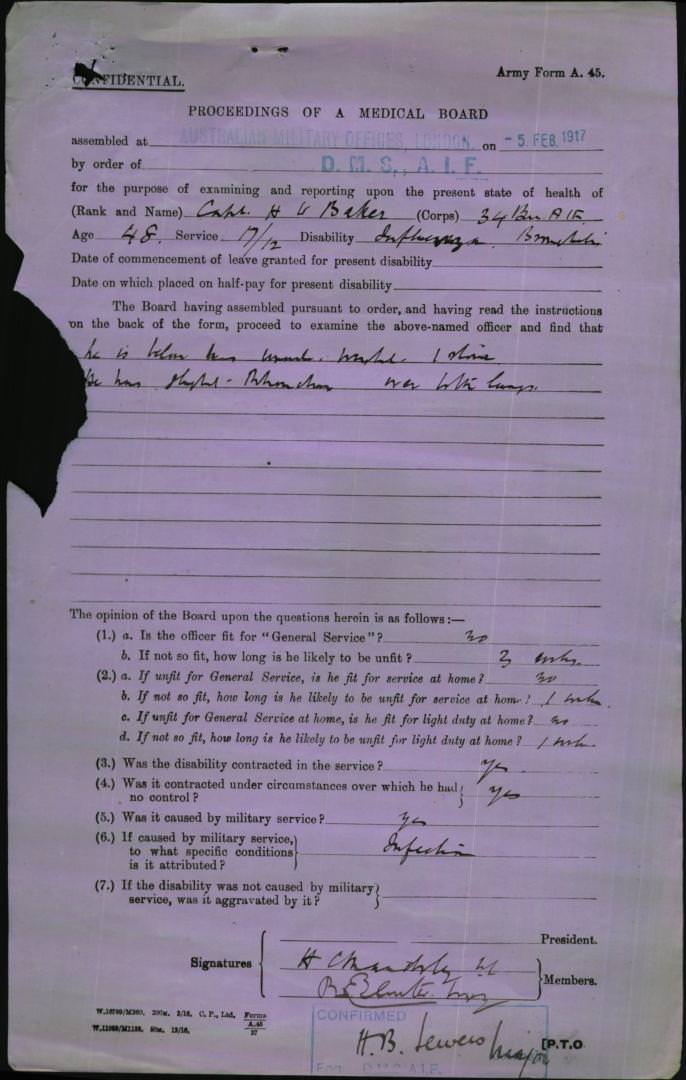
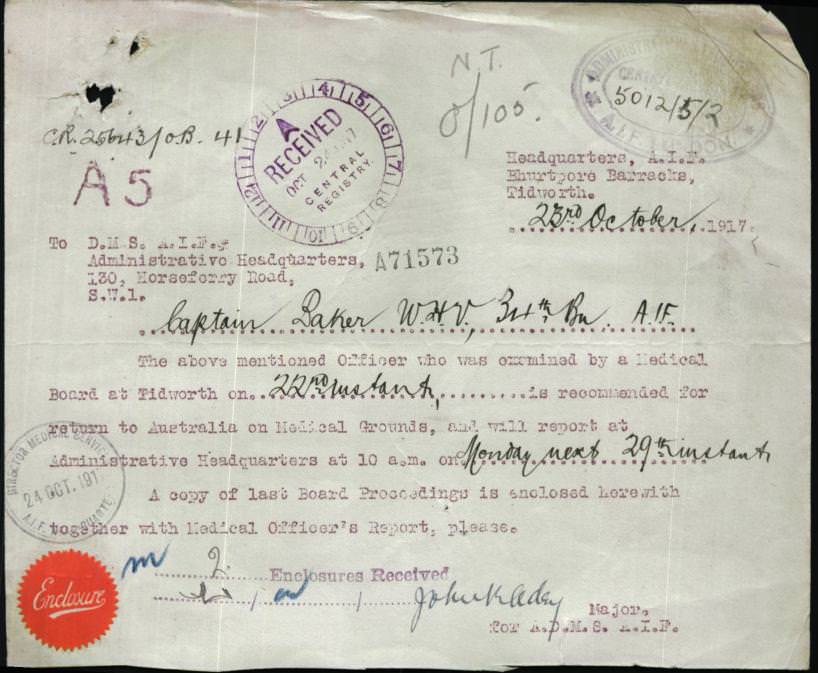
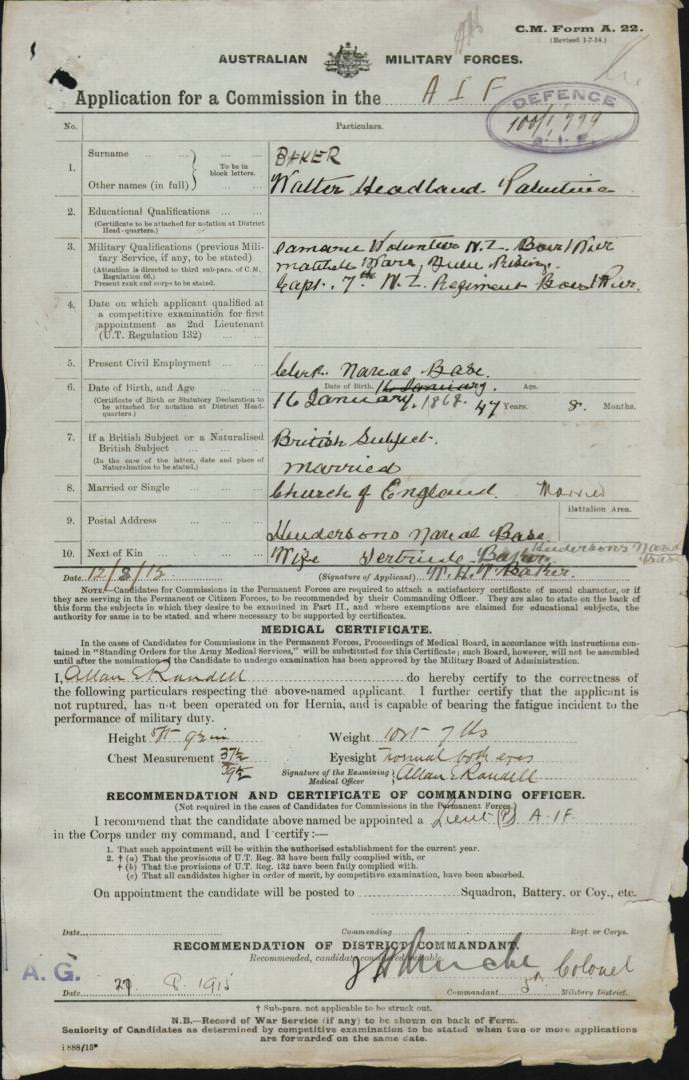
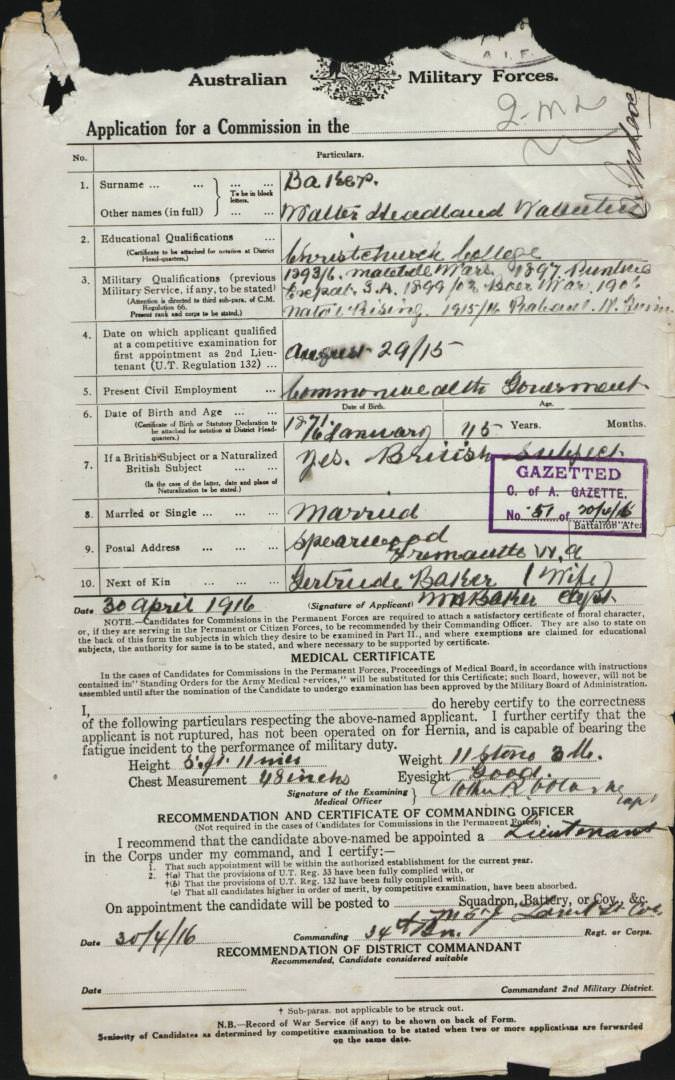
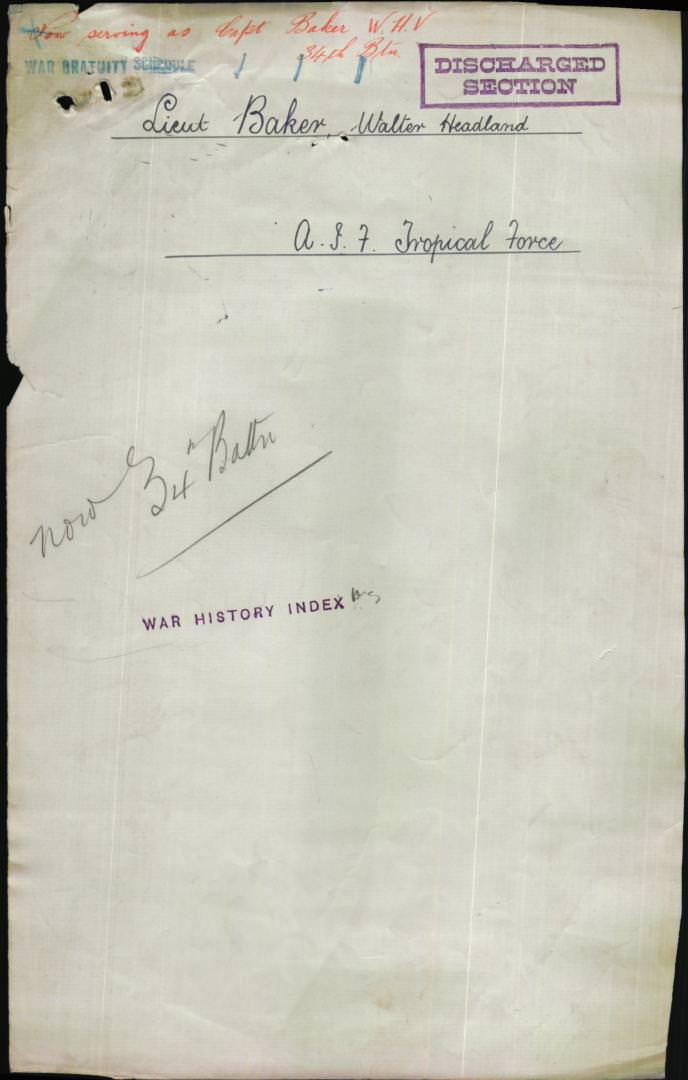
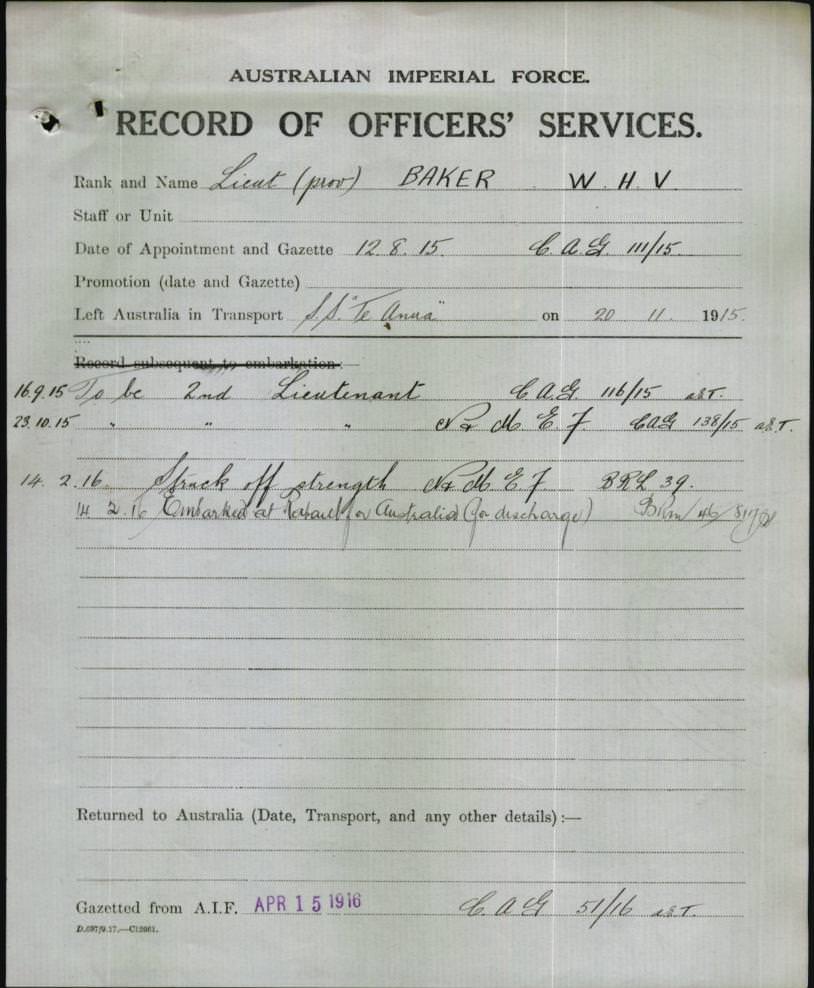
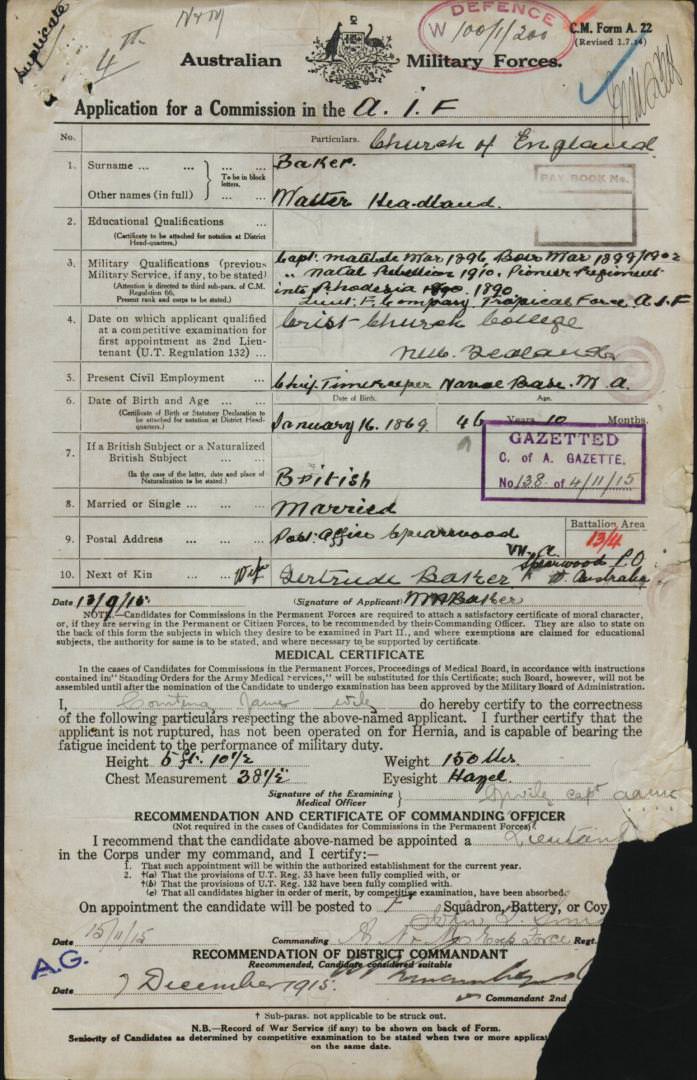
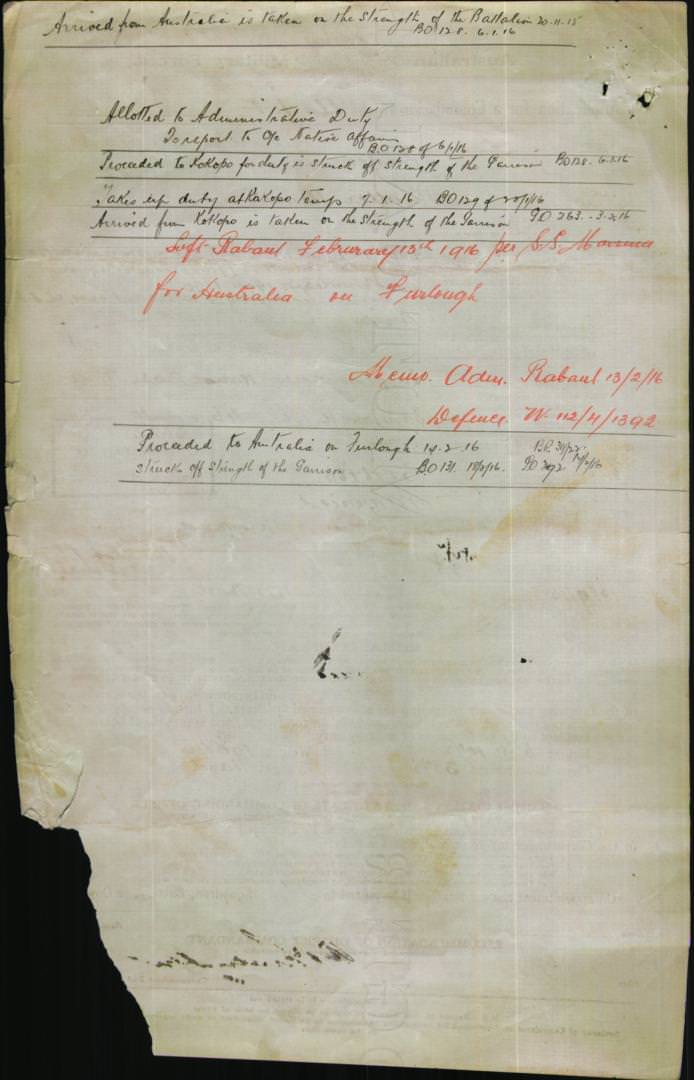
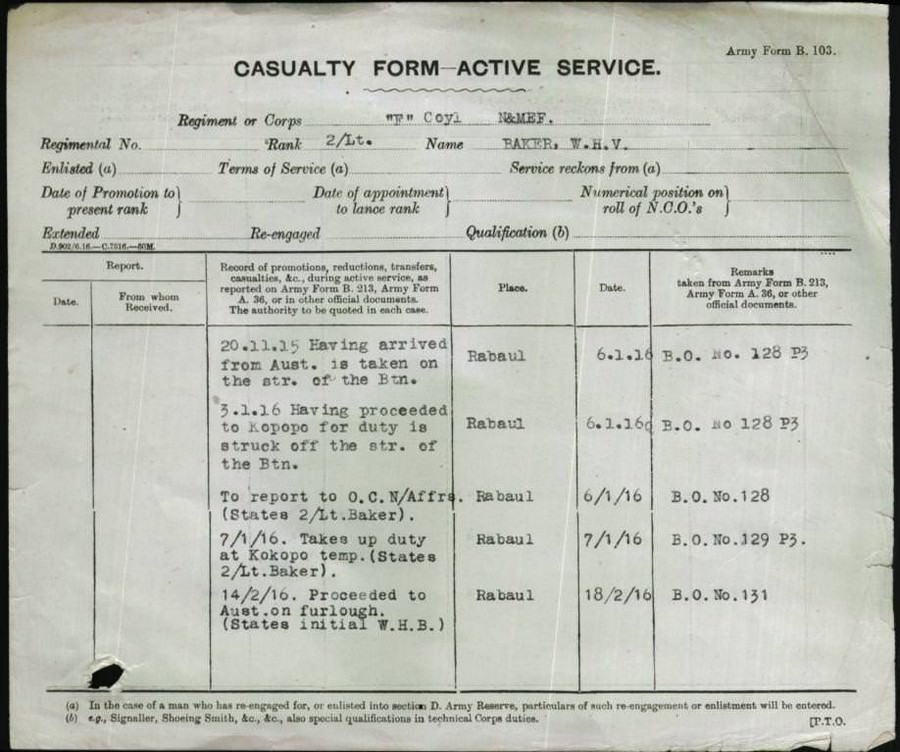
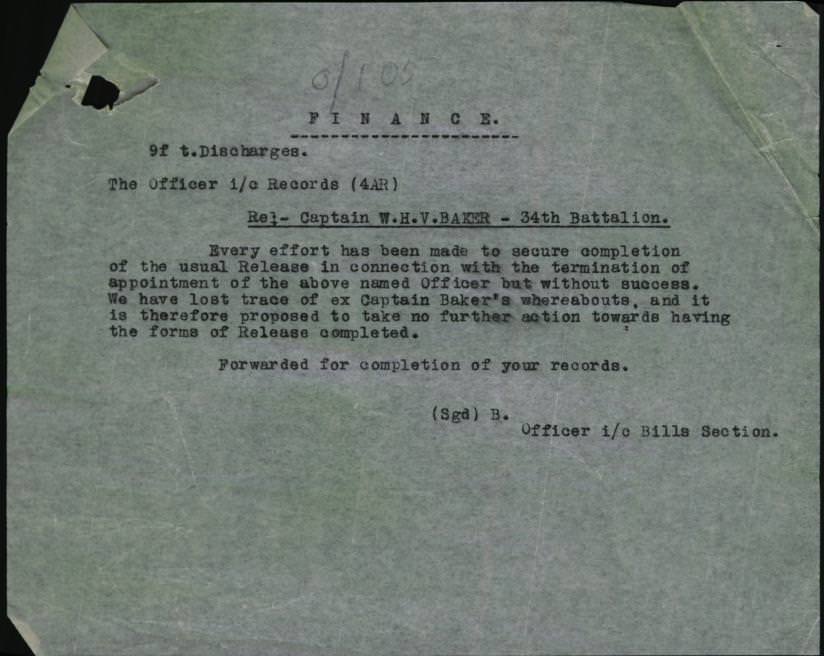

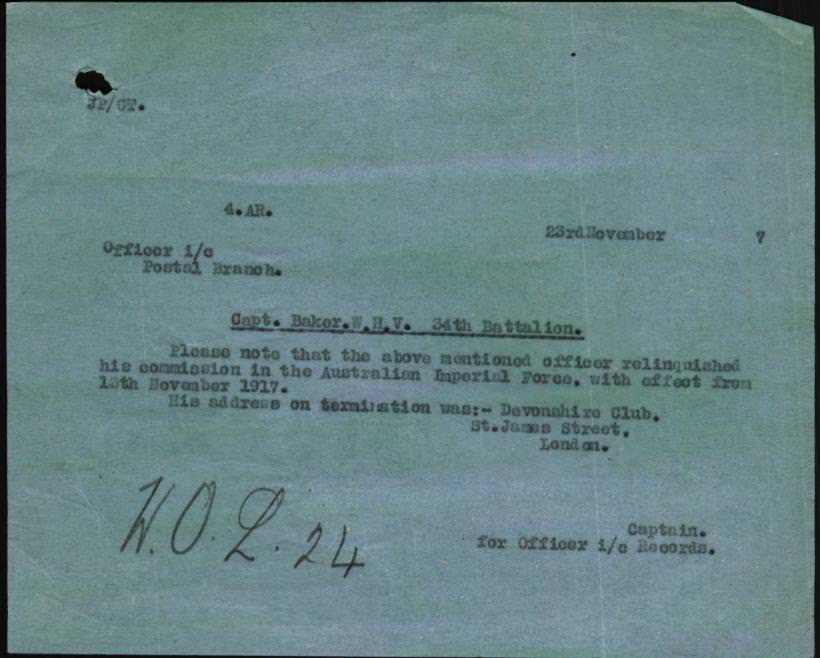

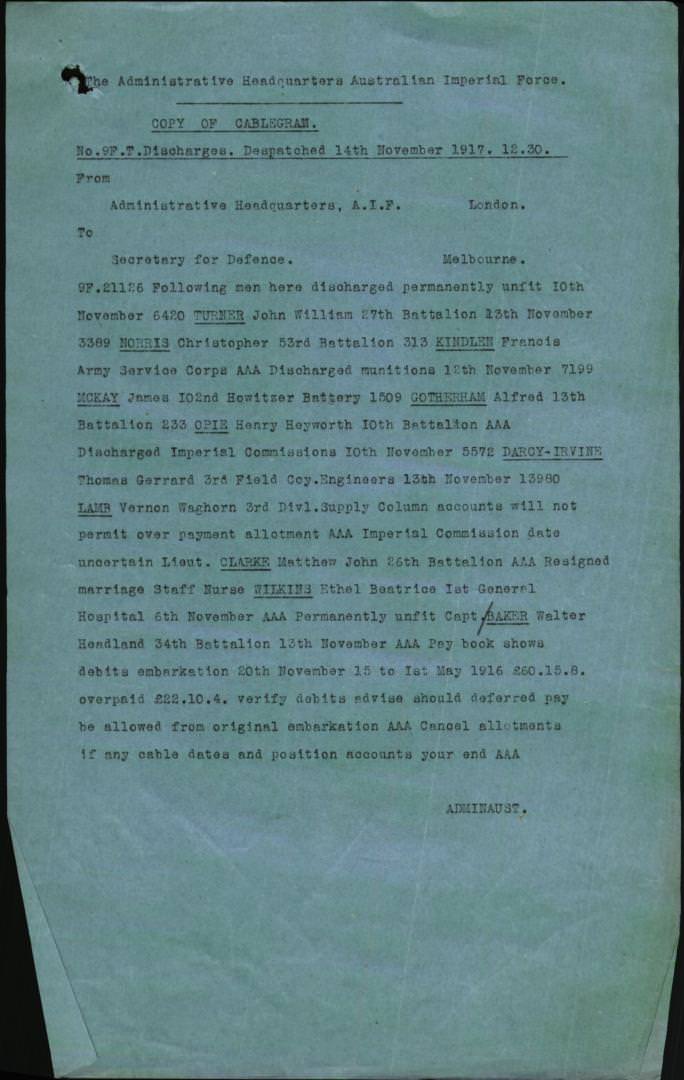
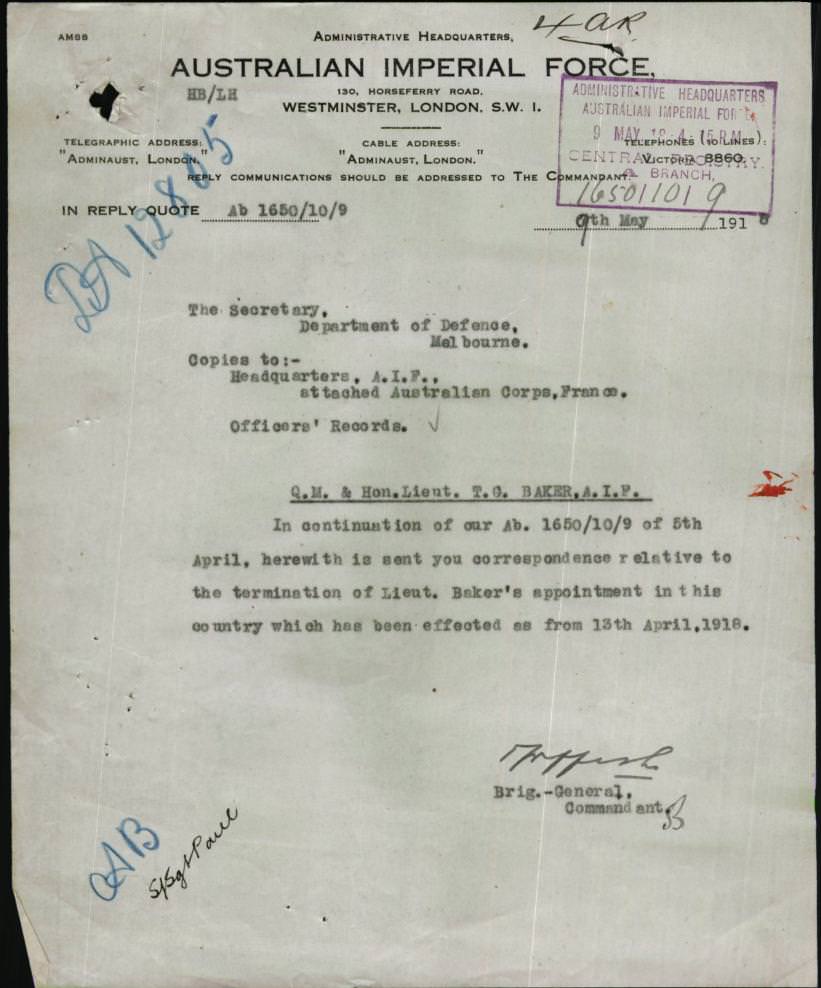


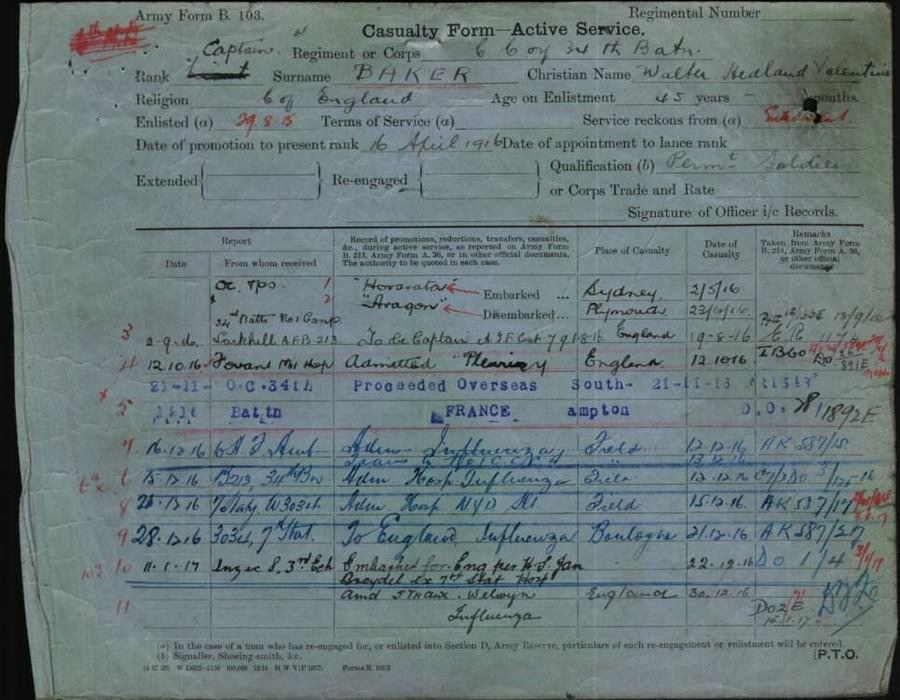
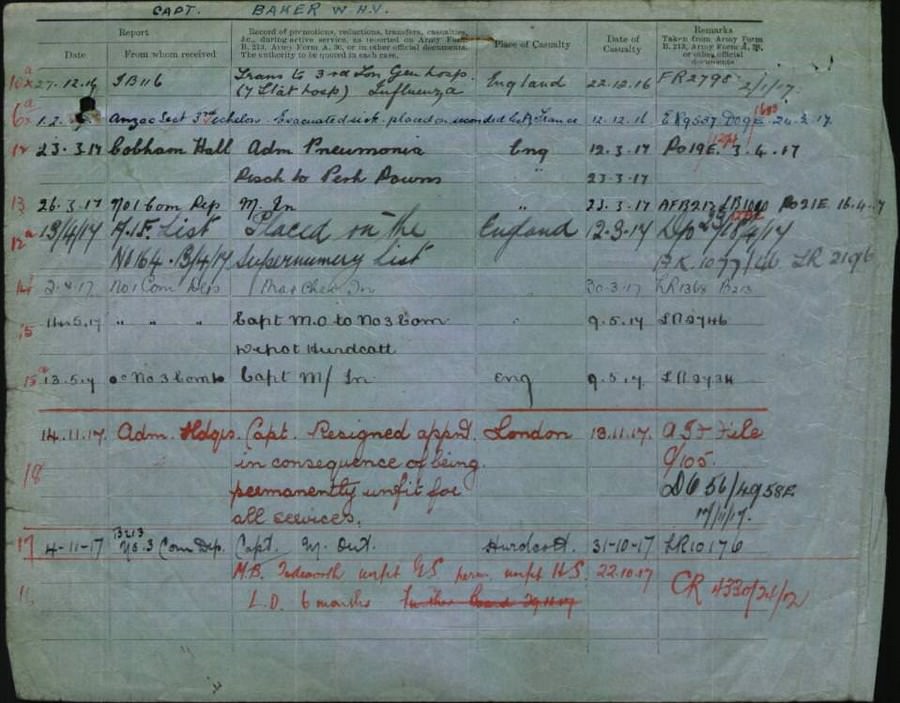

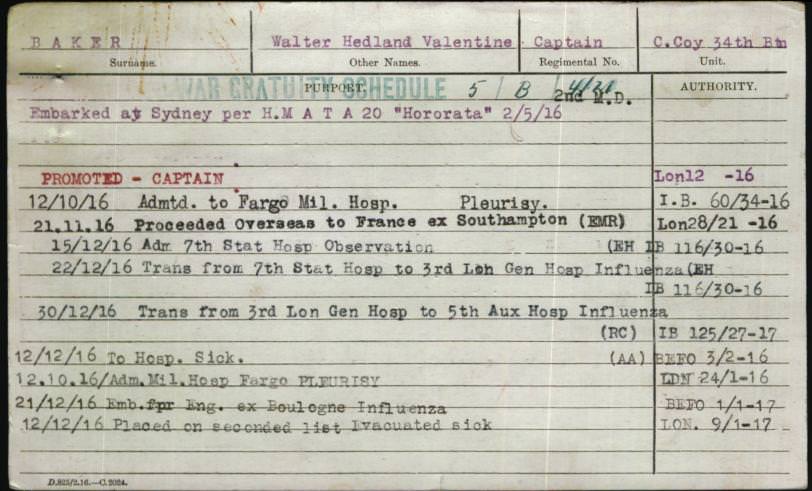
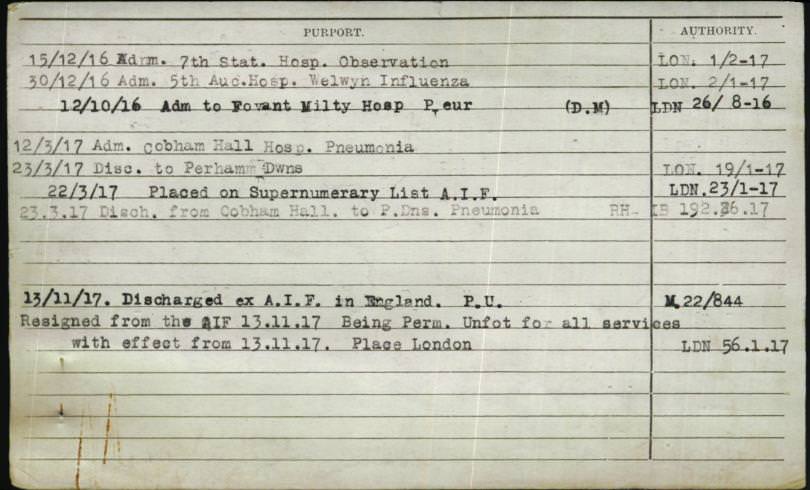
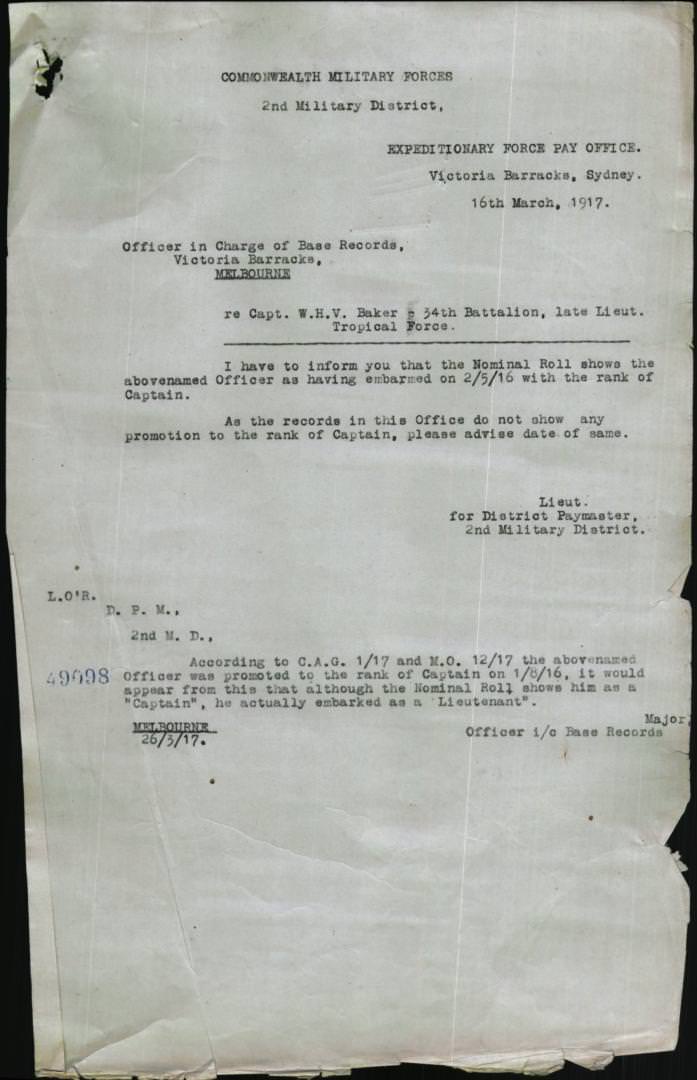
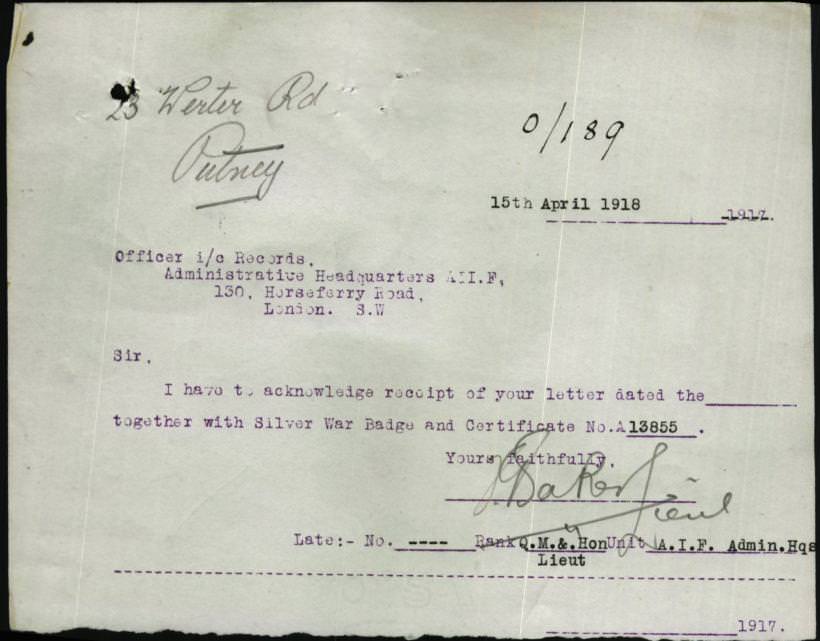

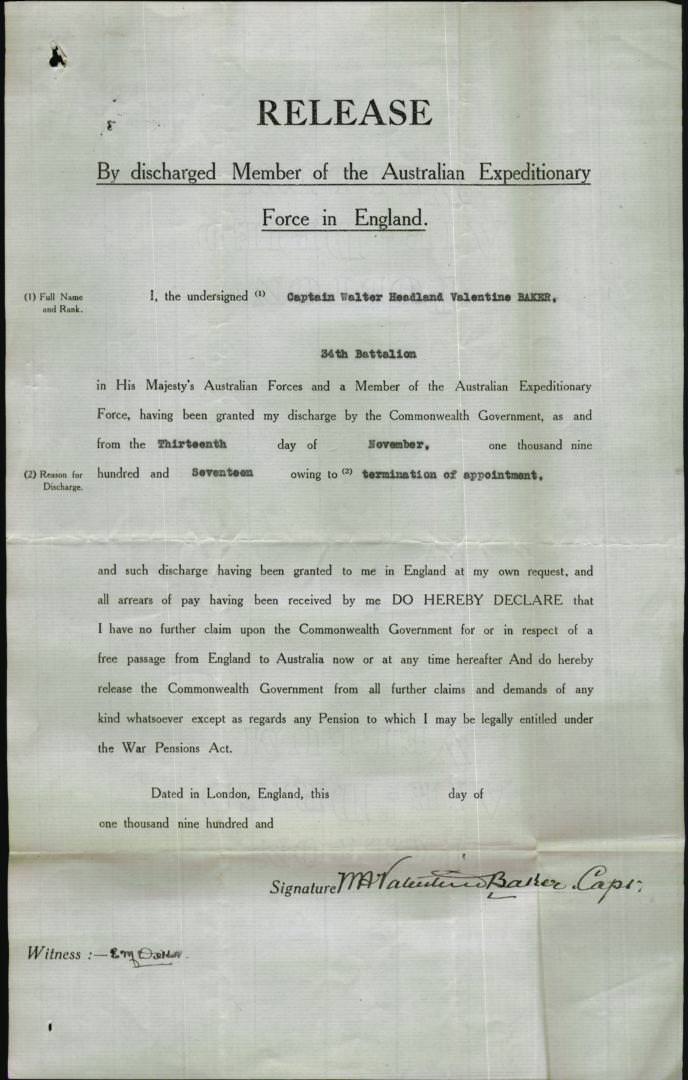
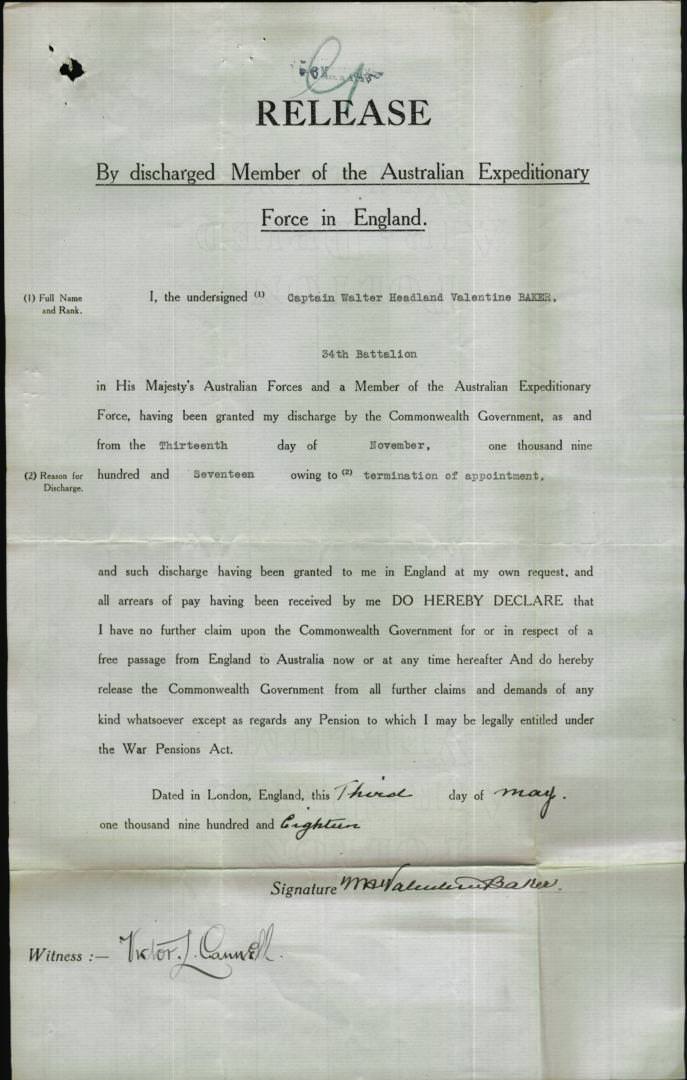
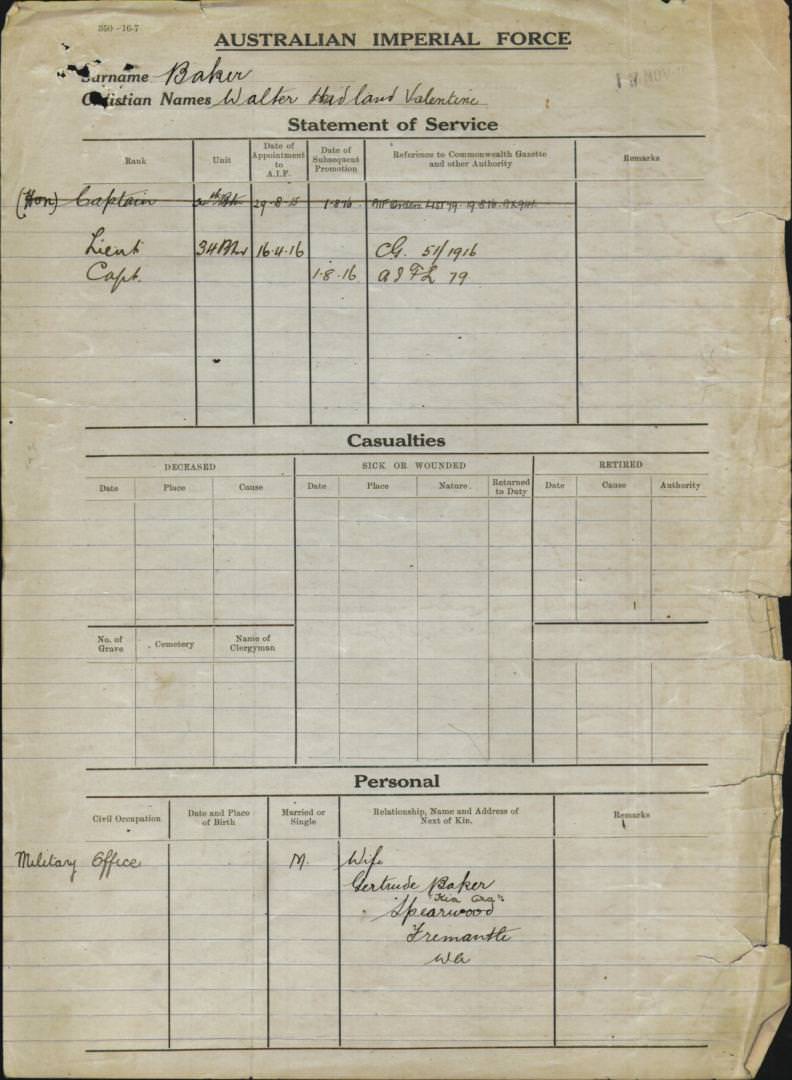
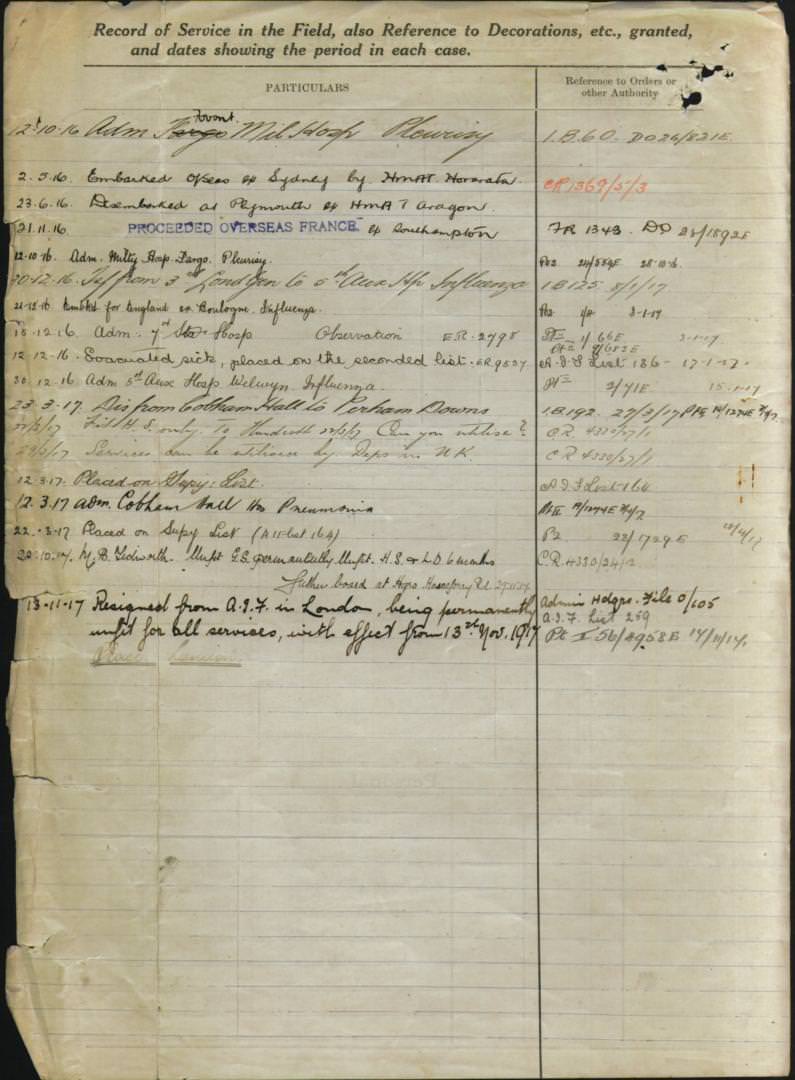
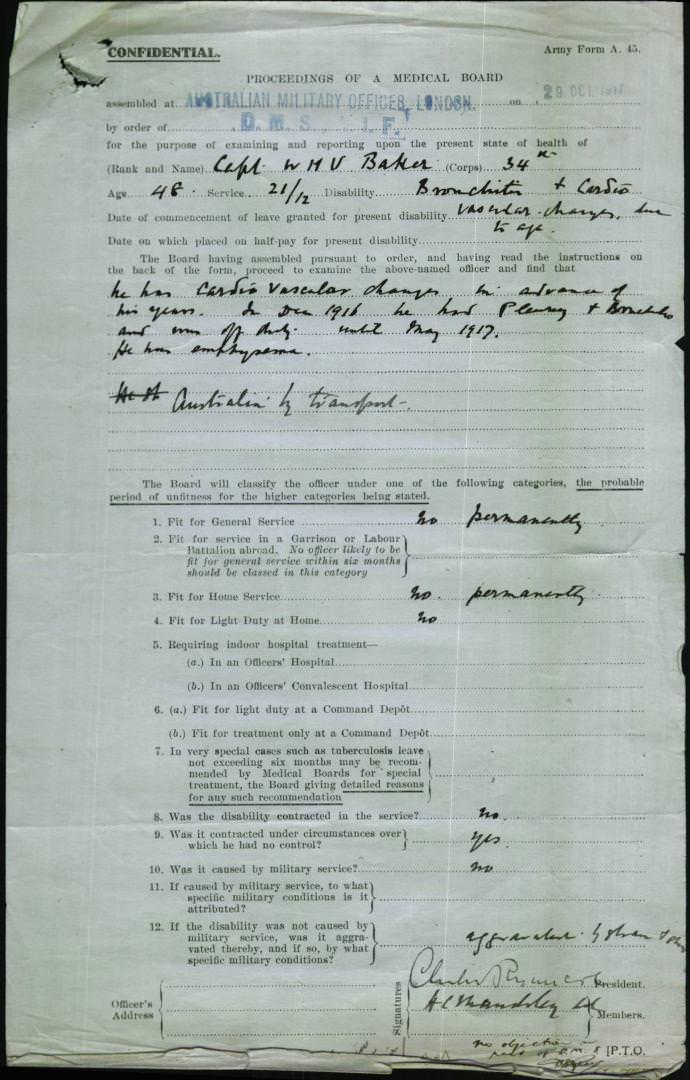
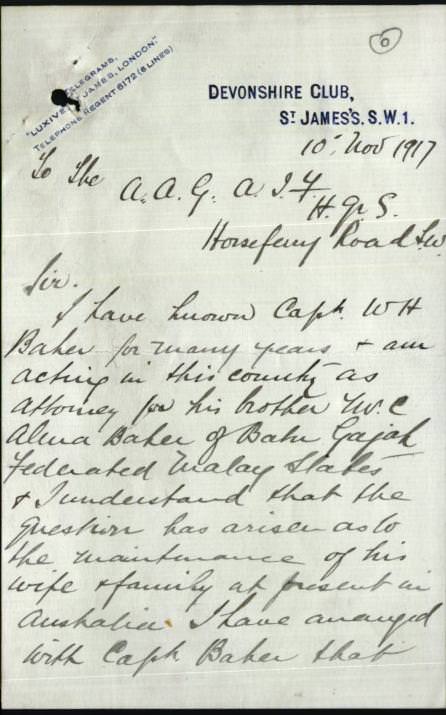
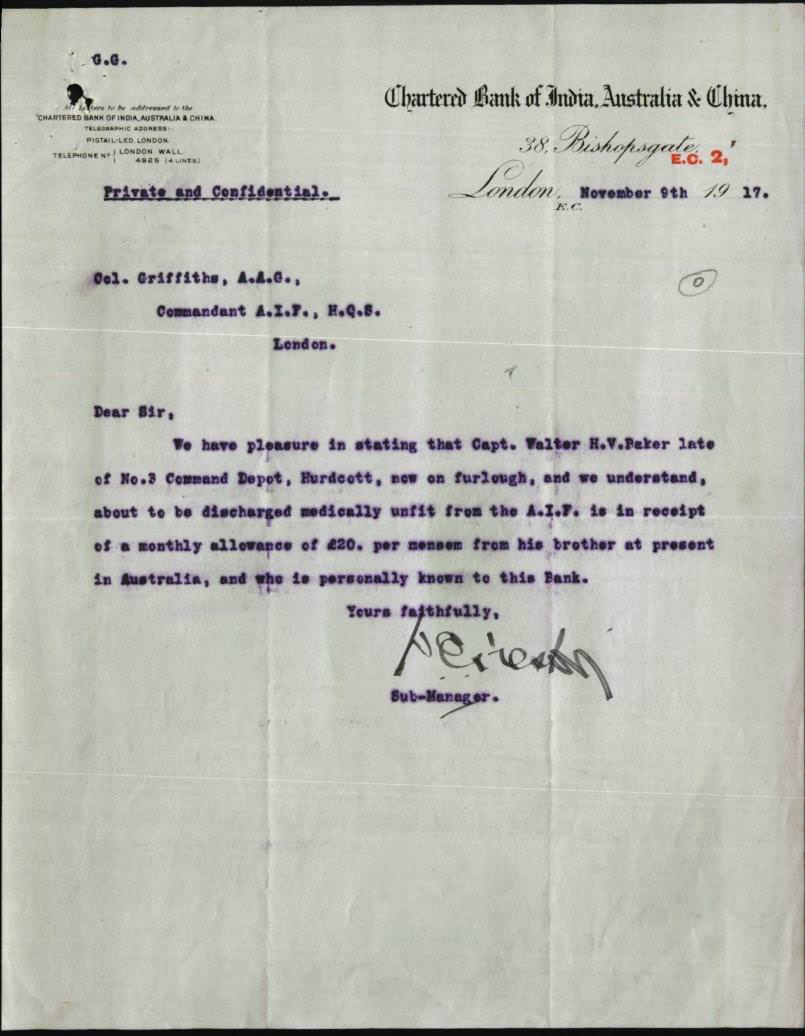
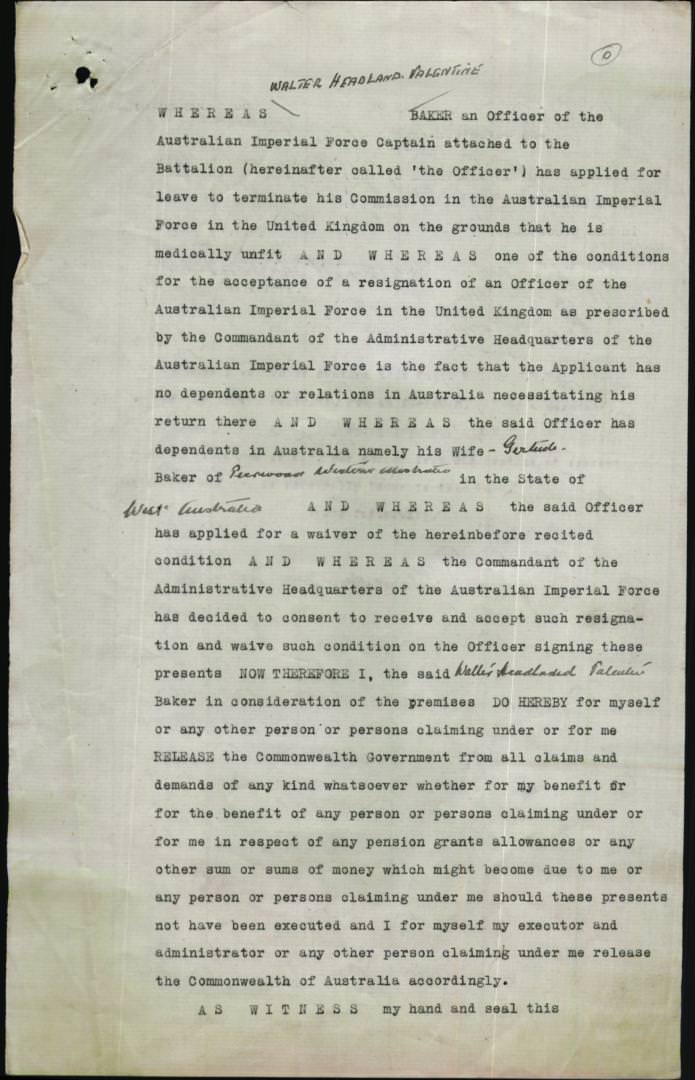
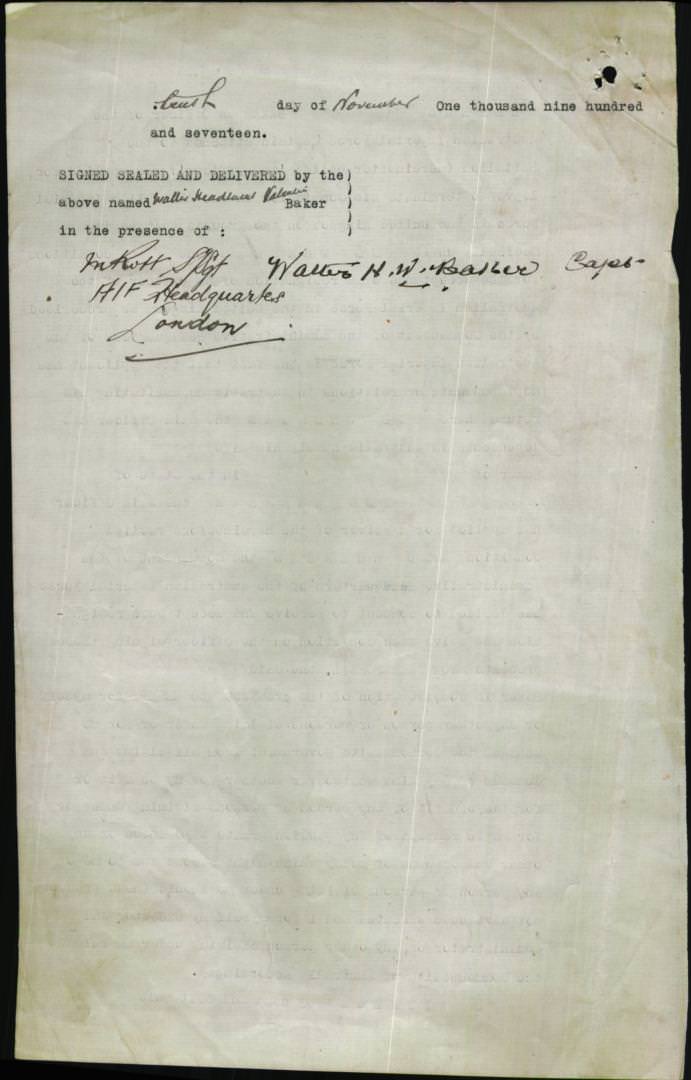

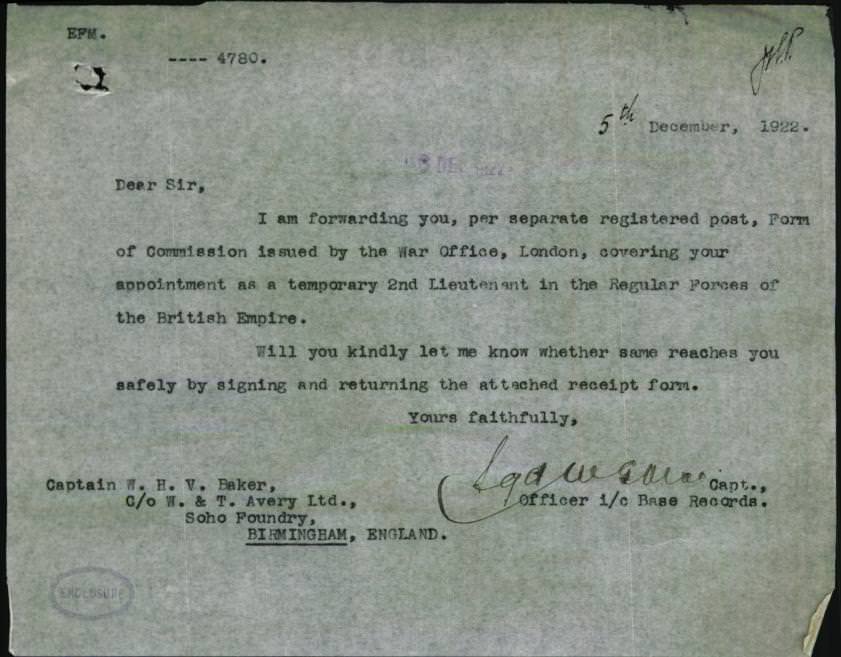
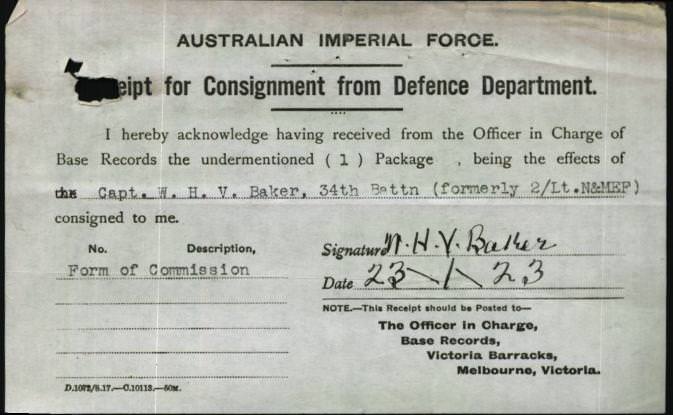
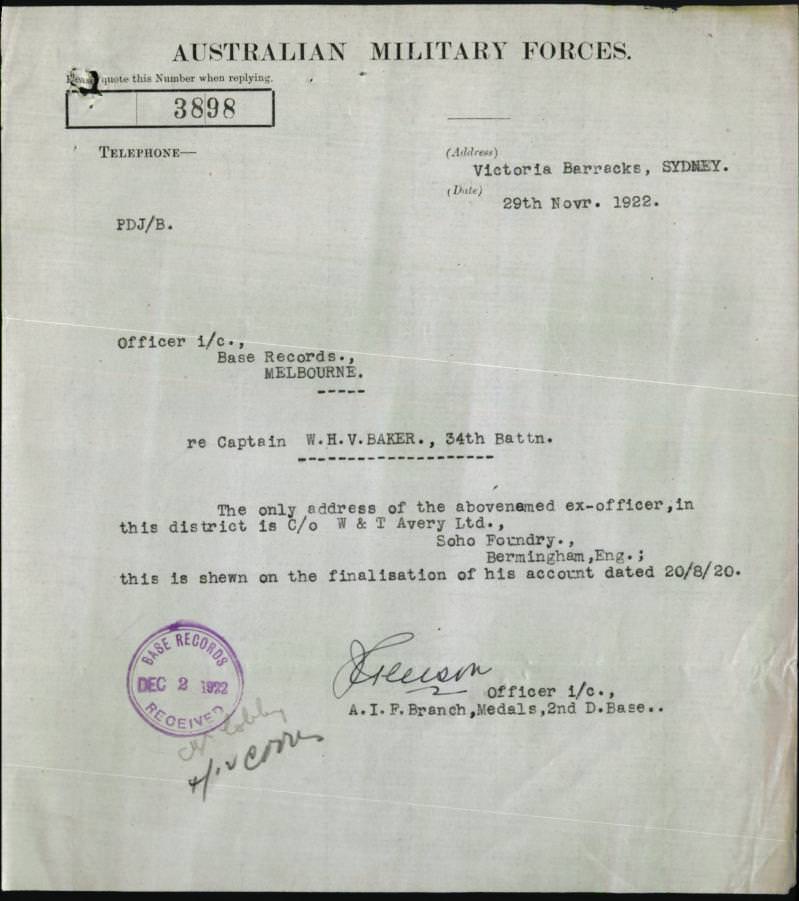
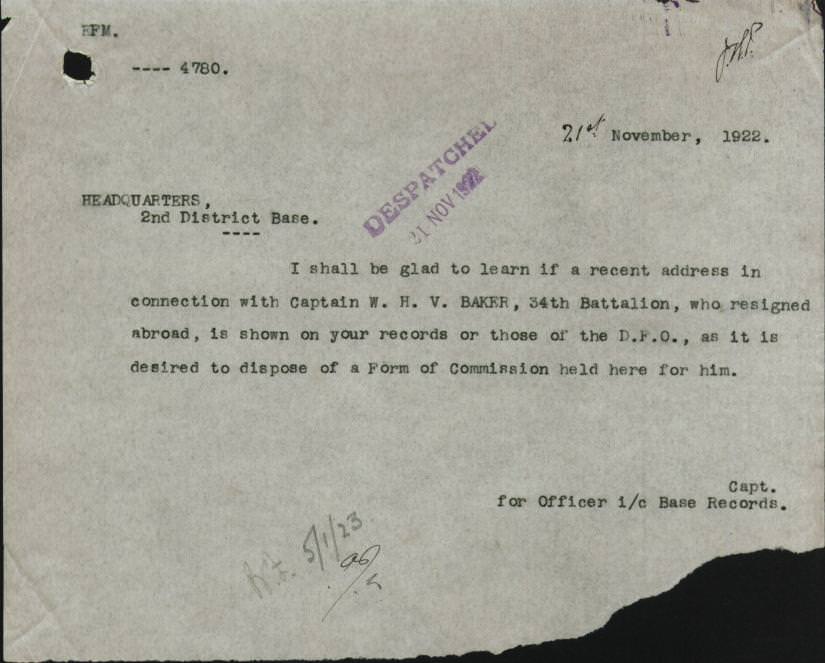
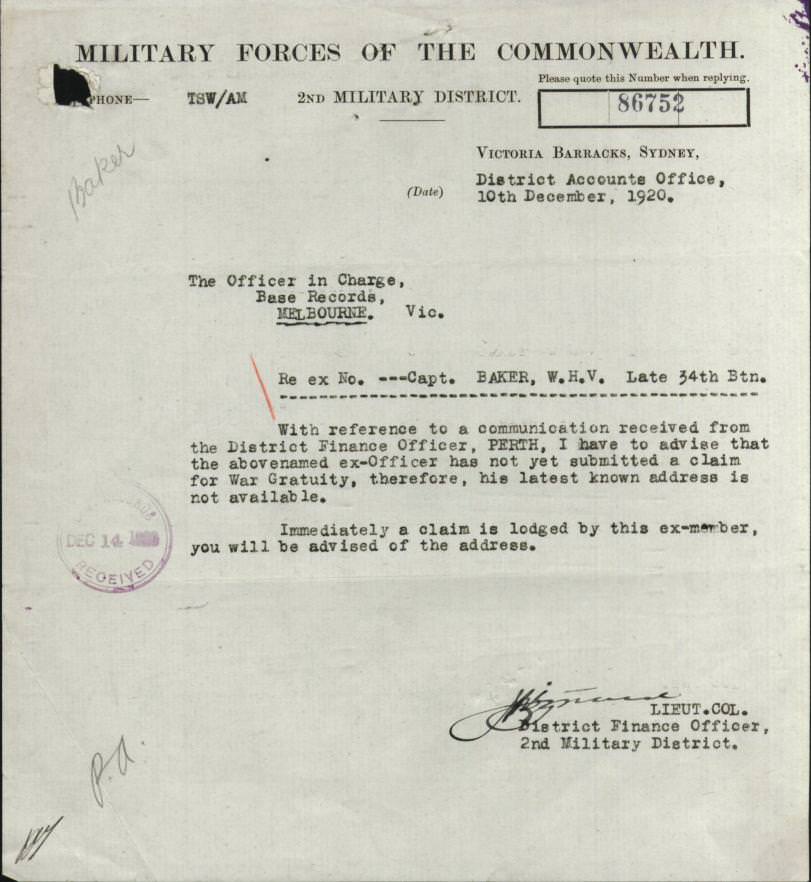
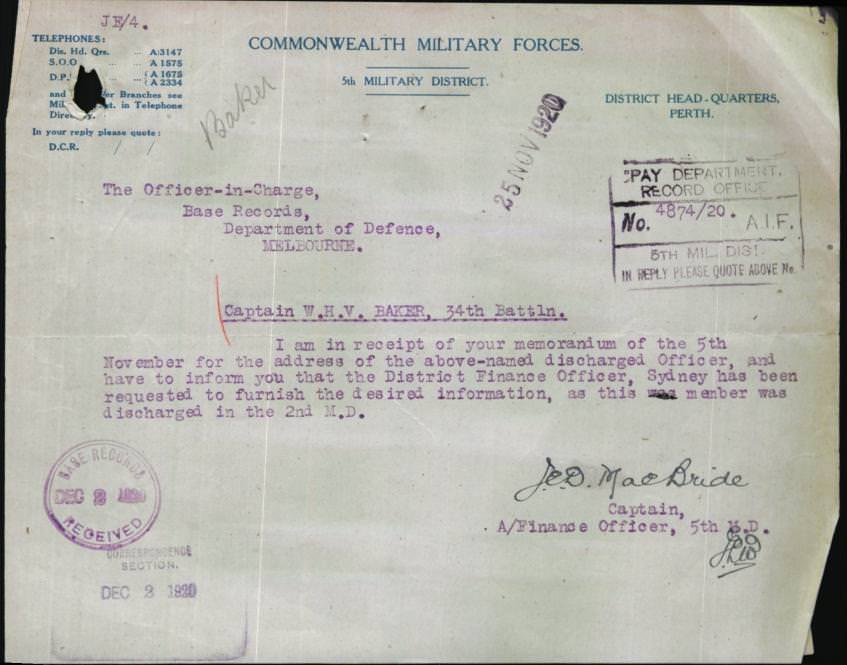

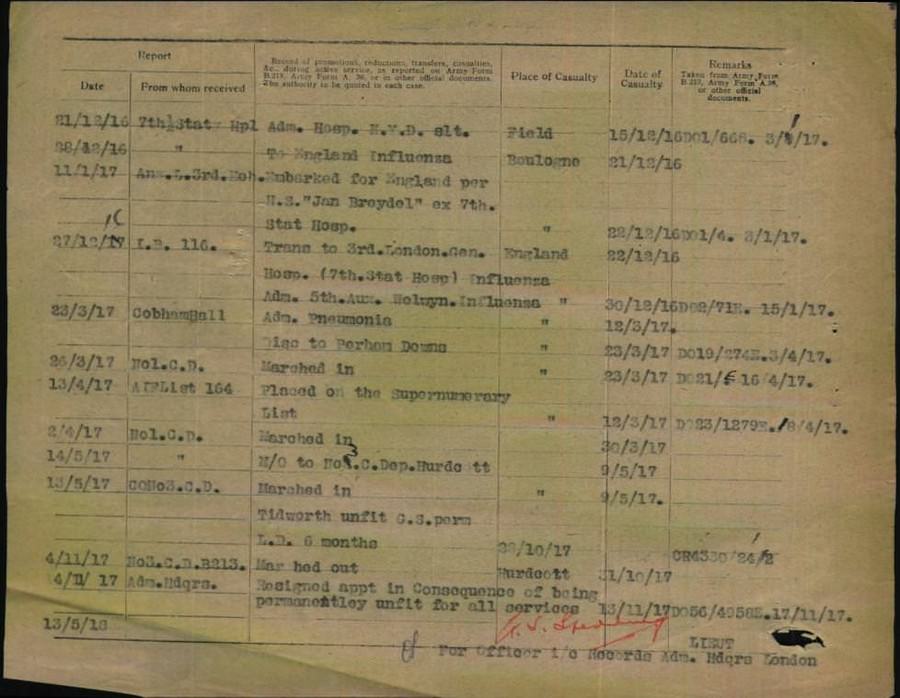
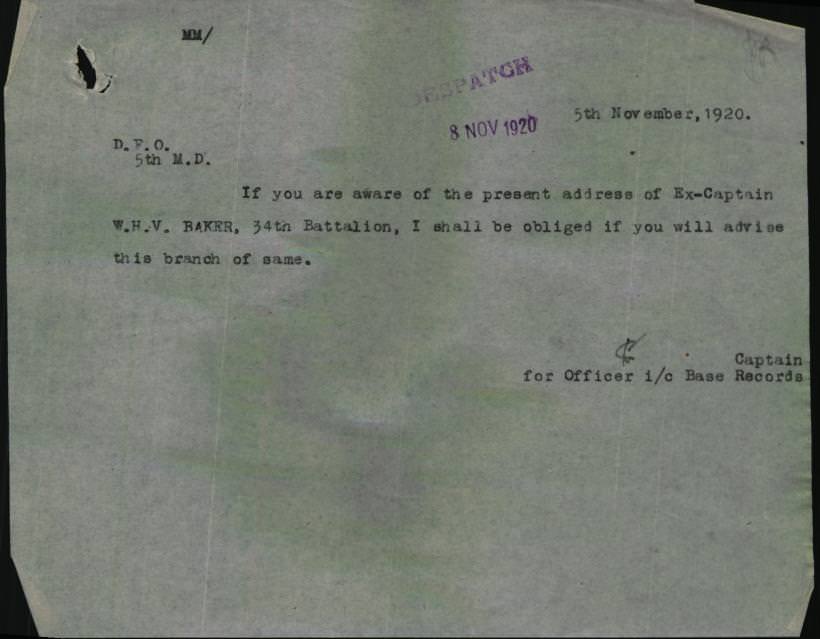
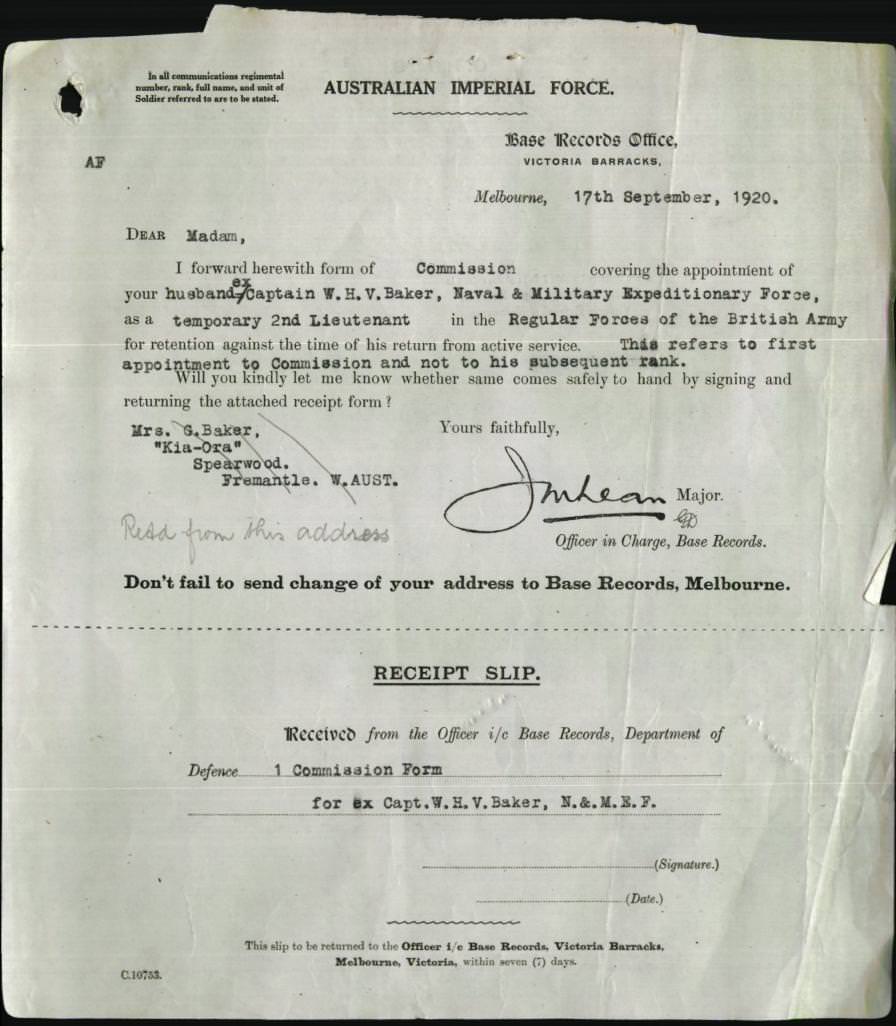
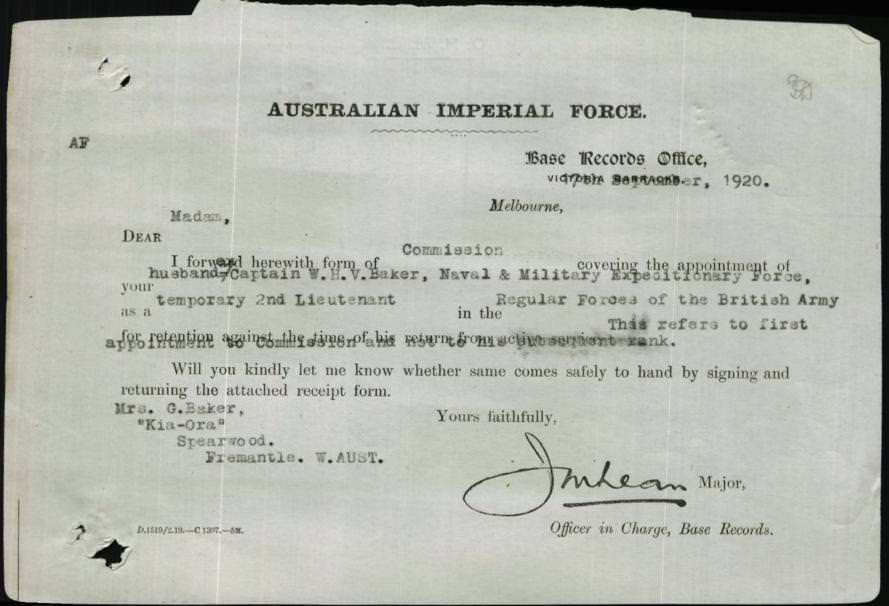
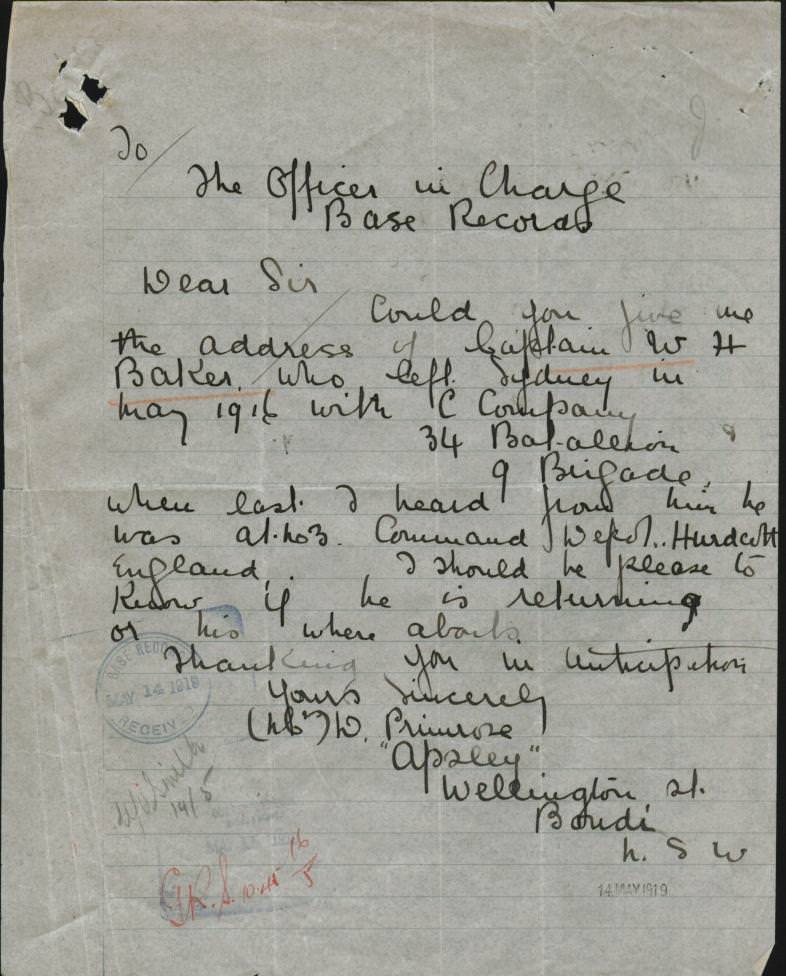

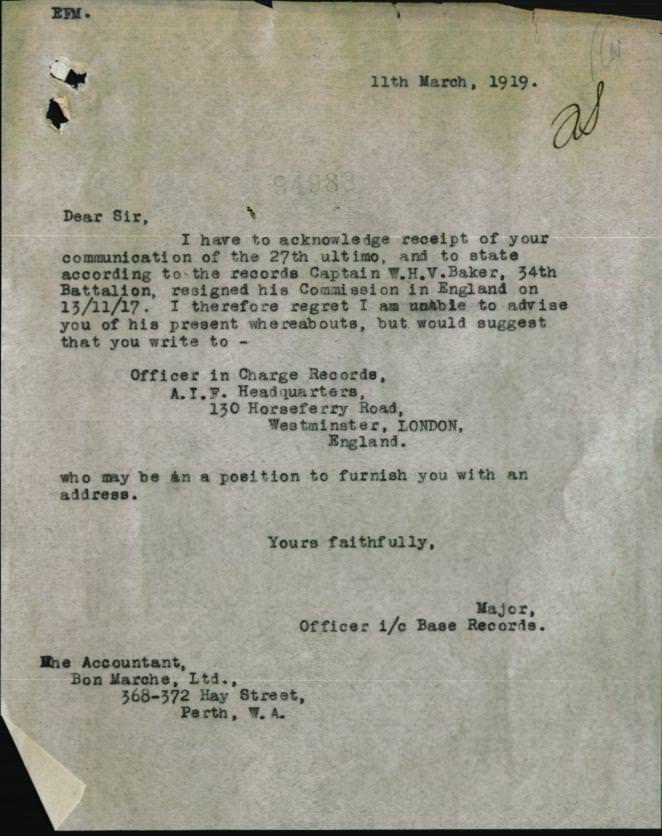
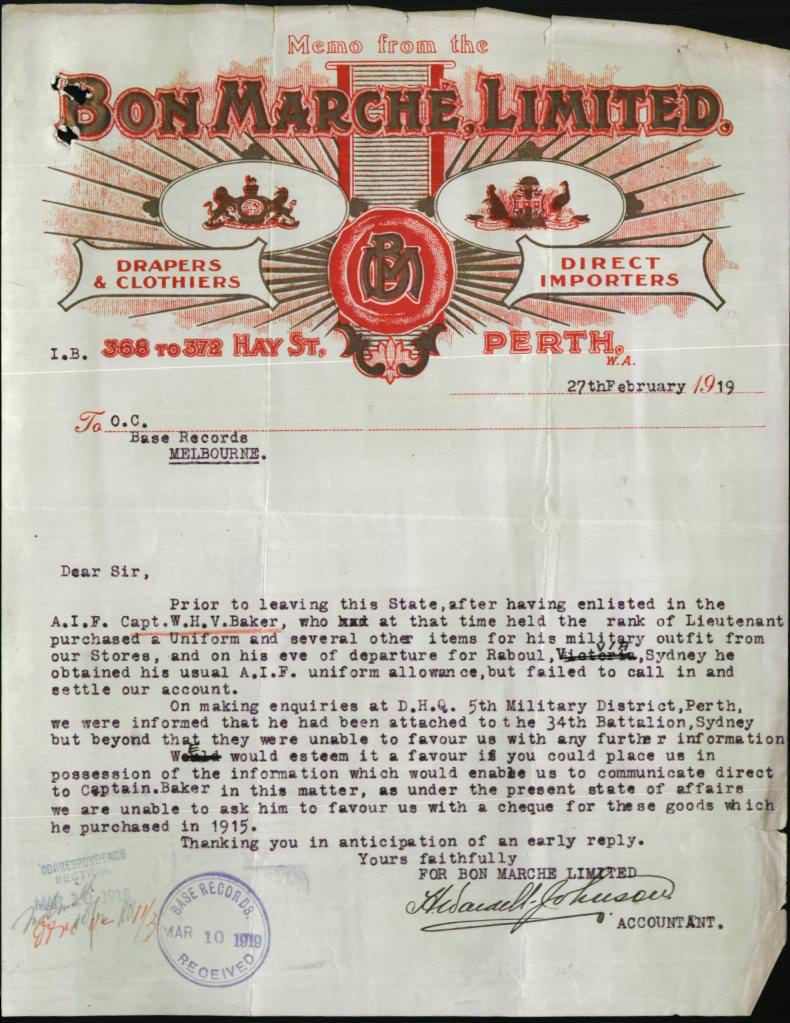
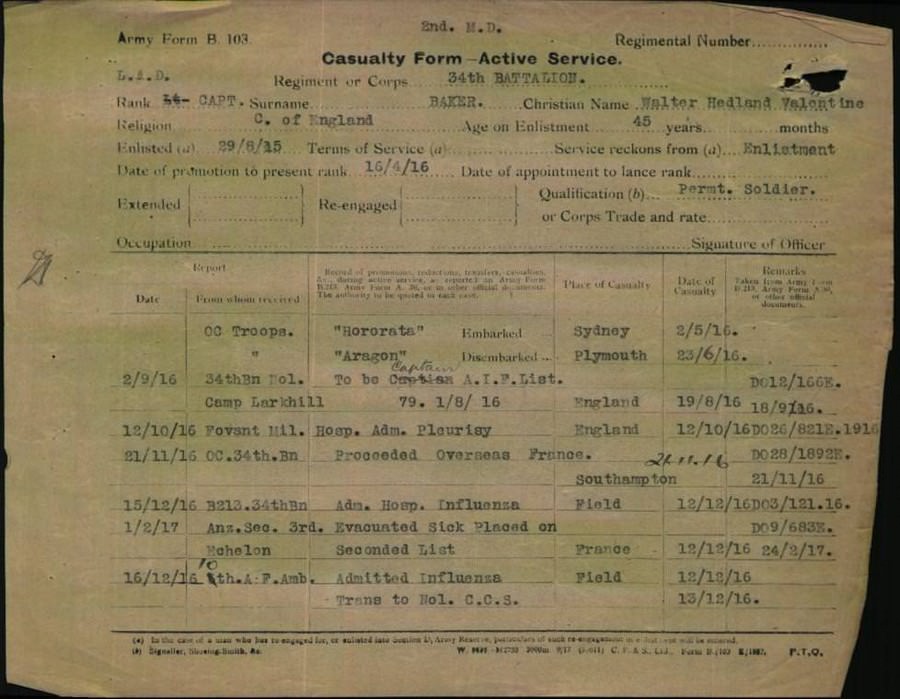
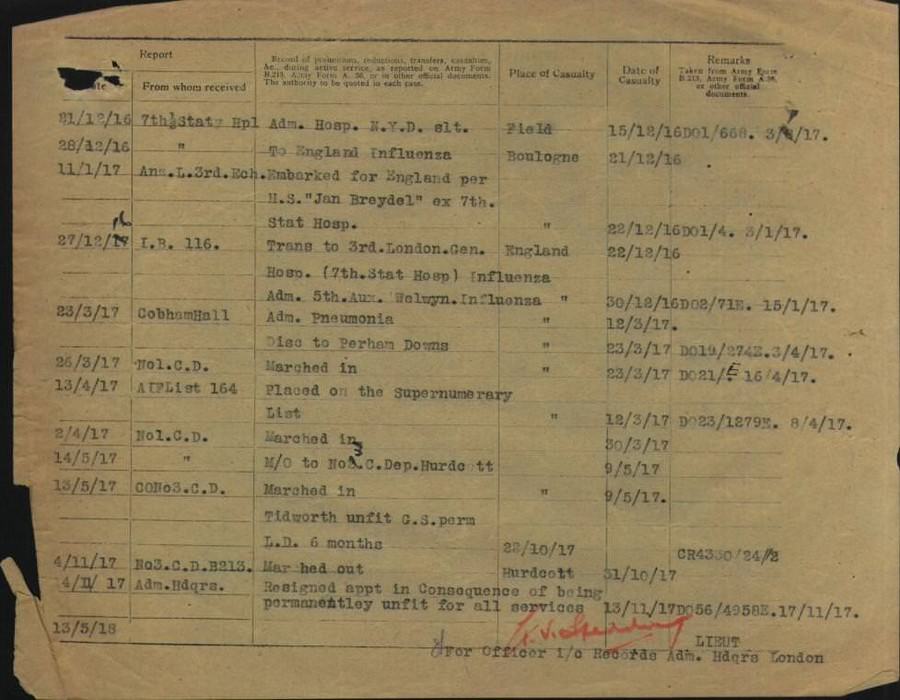
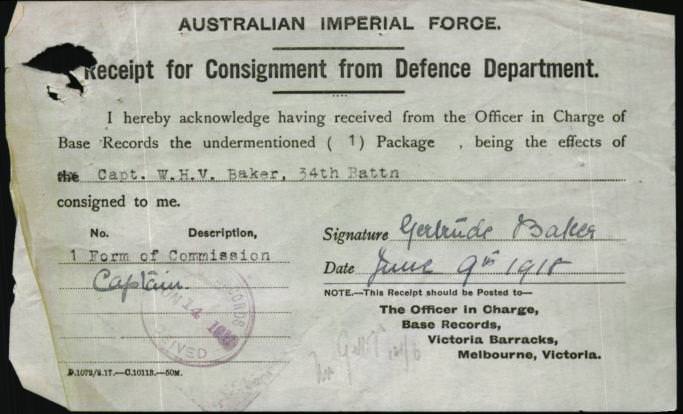
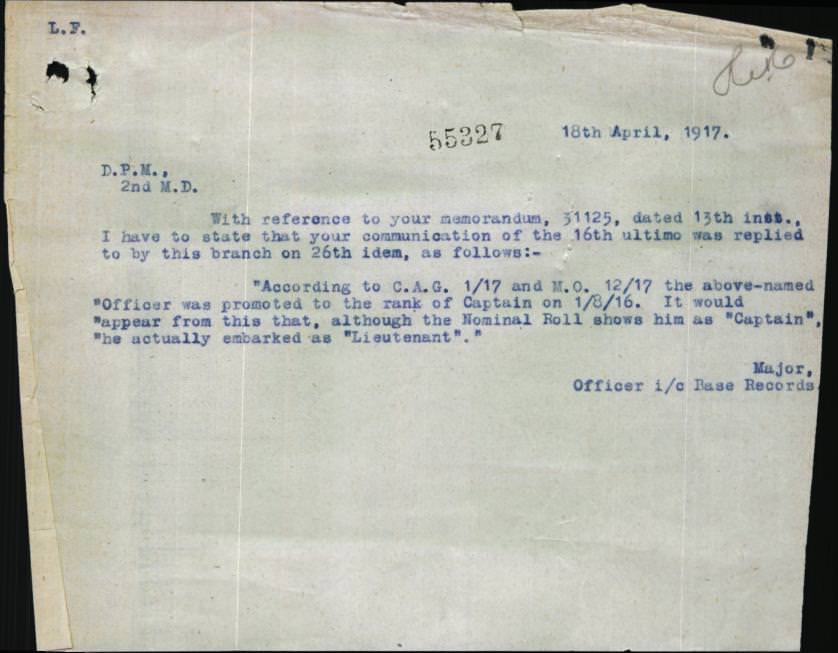
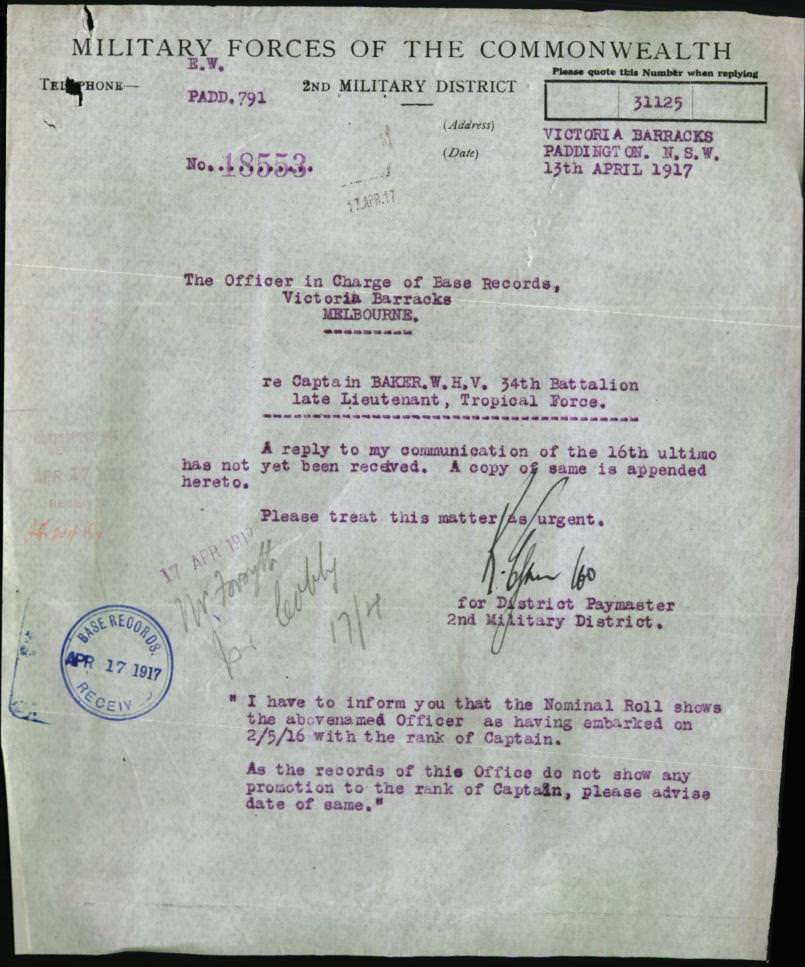

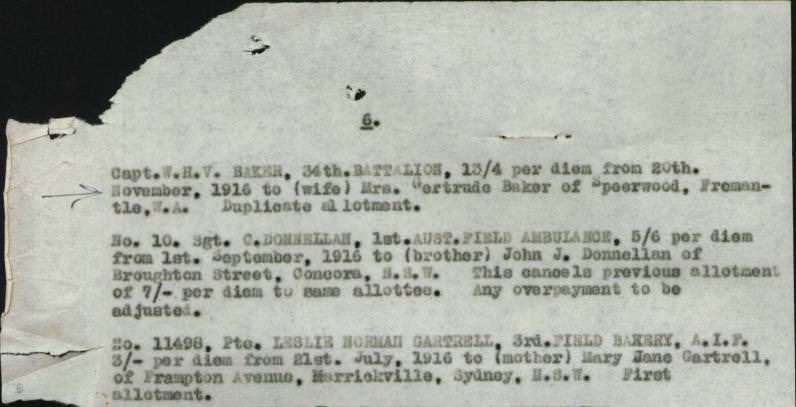
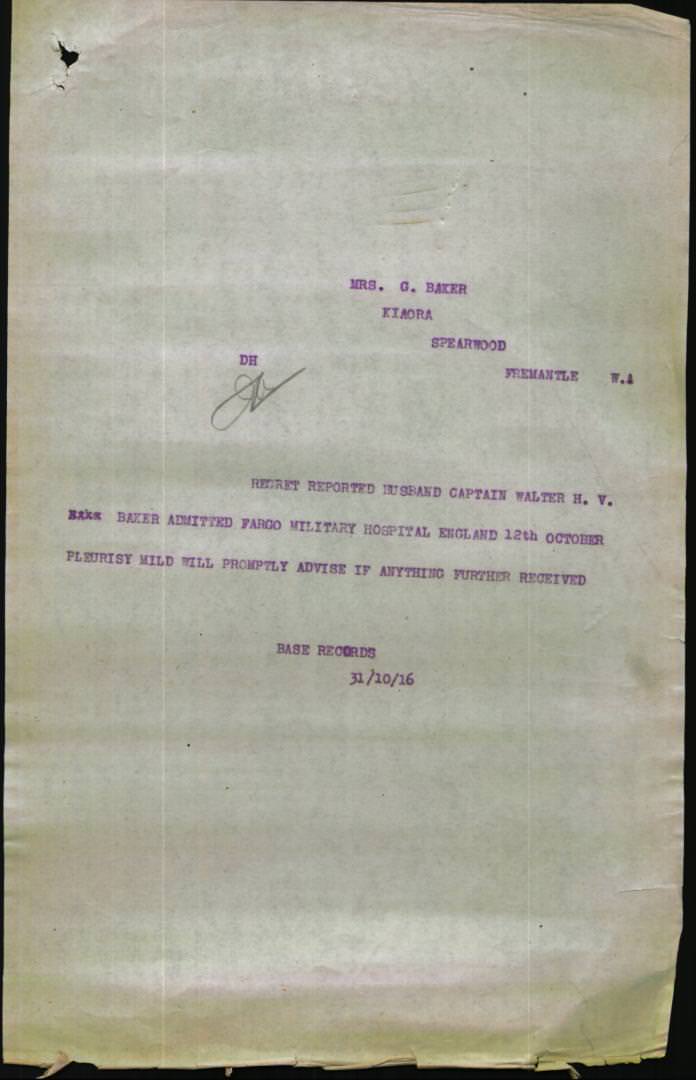
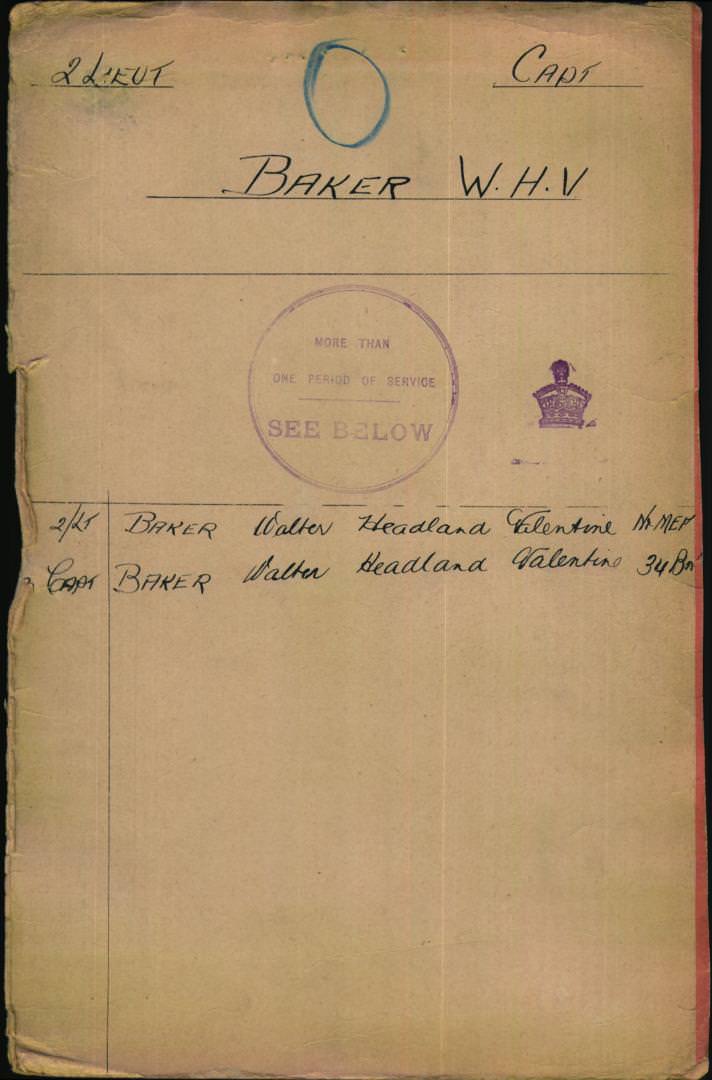
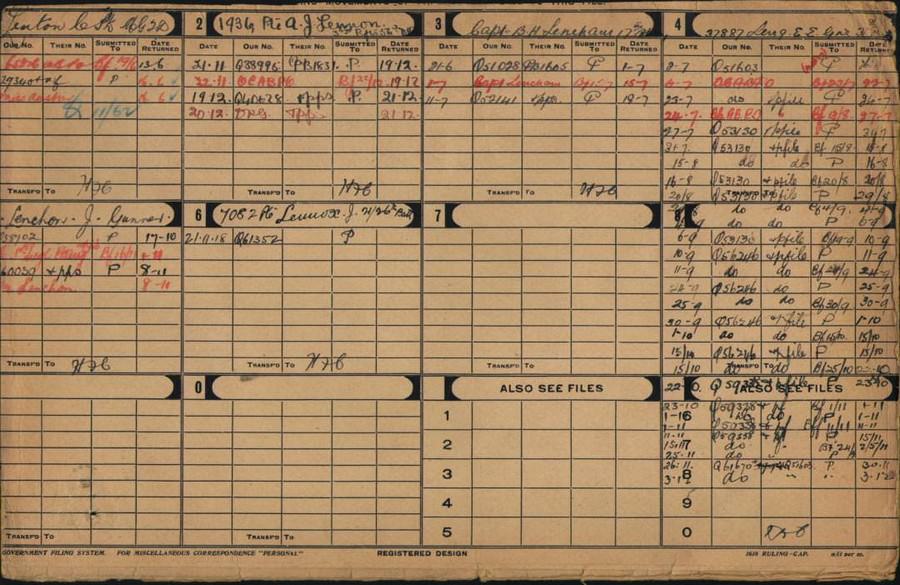
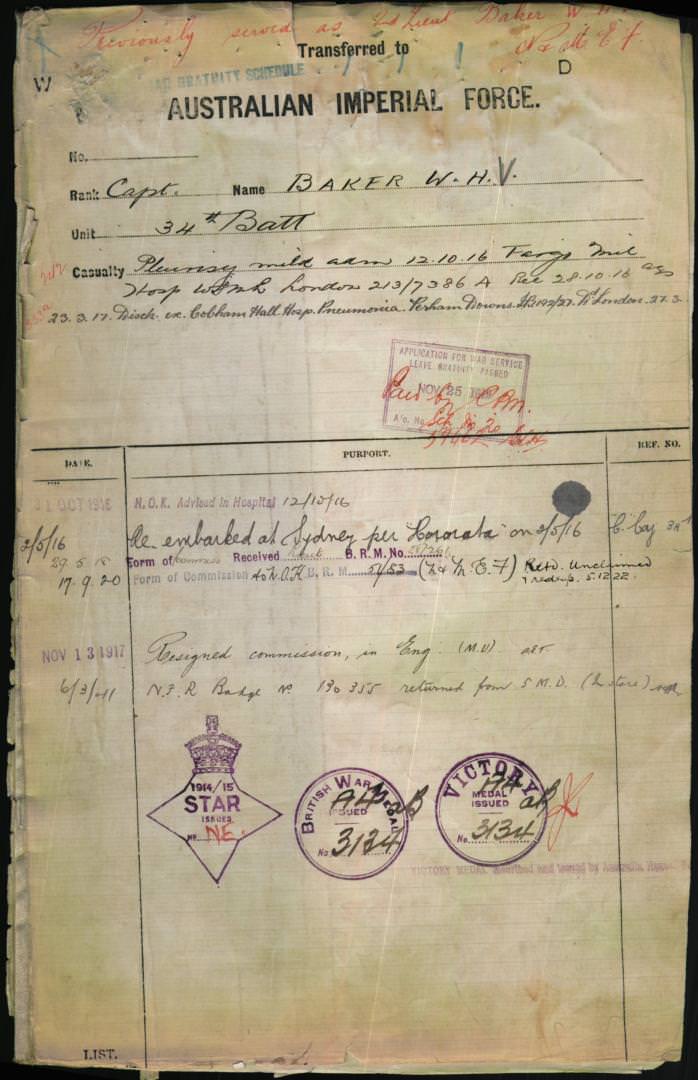 ©
©
Commonwealth of Australia (National Archives of Australia)
Under Construction; 01/04/2011-02/02/2020.
Captain: Herbert Henry PERCY. M.C.

34th BATTALION A.I.F.
Captain: Herbert Henry PERCY. M.C.
Born: 28th November 1890. Waratah via Newcastle, New South Wales, Australia. Birth Cert:25824/1890.
Married: 23rd June 1920. Petersham, New South Wales, Australia. Marriage Cert:6574/1920.
Wife: Evelyn Percy. nee: Harman. (1891-1984)
Died: 13th July 1963. Balmain, New South Wales, Australia. Death Cert:19824/1963.
Father: William Henry Percy. (1845-1914)
Mother: Sarah Ann Percy. nee: Paine. (1850-1910)
INFORMATION
Herbert Henry Percy enlisted with C Company 34th Battalion AIF on the 1st February 1916 with the rank of 2nd Lieutenant and was an original member of the Battalion. He embarked with the Battalion from Sydney on board HMAT A20 "Hororata" on the 2nd May 1916 and disembarked at Plymouth, England on the 23rd June 1916.

BATTLE OF MESSINES
At 10 pm on the 6th June 1917, the Battalion left its billets fully equipped for the assembly Trenches. The order of march being "D", "A", "C" and "B" Companies. All went well until just before reaching Gunners Farm, where the enemy was putting a number of Gas Shells over and Masks had to be put on. Ploegsteert Wood and the back area were receiving particular attention. All Companies were greatly delayed of the amount of Gas in the Wood, which resulted in a number of men being gassed on the way up and many others were completely exhausted. A number of men lost there way in the darkness and smoke. Many could not see at all and had to be led back by there comrades. I many cases it was the blind leading the blind. After a grueling March, the first arrivals reached the Assembly Points 30 minutes before Zero Hour, while the last company arrived only 10 minutes before Zero.
On the 7th June, seven seconds before Zero Hour, which was 3.10 am, four Miles on our front were fired. There was a violent swaying as if an earthquake had taken place and the men in many instances were thrown together. The sky was brilliantly illuminated by the explosives and terrific Artillery fire, the sound of which could not be heard over the intense Machine Gun Barrage. The men left the Trenches immediately and there were a number of casualties on the parapet owing to the heavy enemy Barrage. The supports were also being shelled and the Reserve Company ("D") suffered considerable losses. The weather was hot and sultry and every one felt the trying march.
The Battalion passed through the 35th Battalion in the vicinity of the enemy's original Front Line, near Ulsters Switch. The enemy fire had been very severe up to this point and many men were lying here. A halt in our Barrage gave the Company Commanders an opportunity of Checking their Compass Bearings, defining their limits, and getting into position for the next advance. At the left of the Barrage a fine assault in complete waves was made. The men gained their objective in fine style behind a perfect Barrage and commenced consolidating their position. The mopping up of the Trench System was soon accomplished and many of the enemy were killed in their Dugouts. By 5.30 am fair cover had been obtained on the Consolidation Line. At 6.30 am Enemy Machine Guns were located in a rebout in "Uncertain Trench" and heavy Artillery was brought to bear on them with good results. By 7.30 am the Black Line was down to two thirds of its depth and linking up by Companies and Platoons were in progress. The enemy was seen moving along "Uncertain Trench" and also reports were received from the 33rd Battalion that the enemy was massing 1,000 yards in front. Reports of enemy movement continued throughout the early part of the morning, but Artillery co-operation helped to disperse the tendency and during the day no organised counter attack was attempted.
At 8.30 am the Line was well dug along the Front and affording excellent protection for the men. By 9.30 am only one gap remained between "A" and "B" Companies in the full length of the consolidation of the "Black Line" to the River La Douve. The Trenches being now well down, widening and sandbagging were now in progress and at 11.30 am showed very plainly in an Arial Photo as a good defensive Trench. There were repeated inquiries for water from the Front Line. Carrying Parties were suffering heavy casualties and were completely knocked up with the long distance.
At 1.40 pm Captain: Arthur Sidney WHITLOCK with "D" Company advanced to the Green Line, without Artillery support, owing to an alteration in the Zero Hour not reaching him. At 2.45 pm he reported by Runner that, having waited 30 minutes and no Artillery Barrage as arranged have been put down, he had advanced to the Green Line and was consolidating. by 7.30 pm all Companies reported that their positions were well consolidated. Just before midnight Captain: Arthur Sidney WHITLOCK was killed between the Green and Black Lines, and Captain: Robert Joseph STEWART took command of "D" Company. Patrols under the Scout Officers were sent out during the night and encountered enemy Patrols which were dispersed. A number of enemy patrols were also killed by our Machine Gun and Lewis Gun fire earlier in the night. At 5.00 am on the 8th June an enemy Plane over, flying low and inspecting our new position.
Our casualties to date had been 8 Officers and 236 other ranks. Captain: Arthur Sidney WHITLOCK and Lieutenant: 584 Leslie William Roy WARNER K.I.A. Lieutenant's Lieutenant: William Walter MATTHEWS Lieutenant: Hector Reginald McLEOD, Lieutenant: Bruce Gray McKENZIE, Lieutenant: Benjamin Greenup BRODIE, Lieutenant: Thomas Clifton PITTAWAY, and Lieutenant: Frederick Winn WALKER wounded.
During the morning the enemy put over a heavy Barrage of 7.7's and 4.5's. Captain: Robert Joseph STEWART sent a message by pigeon that our own Heavies were dropping a few Shells short and doing some damage to our own Trenches and causing a few casualties. Several messages were sent back but it was some time before the matter was rectified. At midday enemy Machine Gun Fire from the vicinity of Potterie Farm, about 300 yards from our Front, was very troublesome. At 4.00 pm our Artillery opened up a heavy bombardment which continued for four hours. This was replied to by the enemy at 8.30 pm and was particularly heavy north of La Douve. Ten minutes after this opened all communication lines were cut and messages were sent on the Power Buzzer. By 10.40 pm everything had become normal and the night was fairly quiet.
On 9th June 1917, Lieutenant: Clarence Smith JEFFRIES. with a Patrol of 50 Other Ranks left our Trenches at 4.00 pm with the object of reconnoitering Potterie Farm. This Patrol cam under heavy Machine Gun fire and on returning reported the position was fairly strongly held. Lieutenant: Clarence Smith JEFFRIES. was wounded, 2 Other Ranks killed and 3 wounded.
On the night of 12th June the Battalion moved out to Vauxhall Camp and here reinforced by reserve men from Morbecque. The whole operation had been most successful, in spite of the difficult approach March, caused by the wearing of Gas Masks and the darkness of the night. About 3.30am an unusual occurrence happened when one of our Planes, flying low for observation, was struck by one of our Shells and was cut in halves. During the whole period rations were taken up as usual, the limbers and Carriers being constantly under heavy fire. Many brave deeds were performed and a number of Officers and men were recommended for decorations which were in many cases awarded later. Total casualties were 10 Officers and 399 Other Ranks.
On 14th June the Battalion moved to billets near Vieux Berquin for rest and training. The next day the Corps Commander, Lieutenant General: Sir Alexander John GODLEY inspected the Battalion at Doulieu. Captain: Charles Edwin Woodrow BEAN Australian War Correspondent, was also present. The following day General: Herbert Charles Onslow PLUMER, Army Commander, interviewed the Officers and addressed them. The weather was fine and the men had a good time bathing, writing letters and resting, while re-organisation and training was carried out.
On the 21st June the Battalion moved back to Vauxhall Camp and the following day went into tents at Neuve Eglise and relieved 1st Wiltshire Regiment. Training, sports and other competitions were carried out. The weather was fine and enemy planes were very busy strafing our Observation Balloons and the Artillery on several occasions shelling Neuve Eglise. Whilst Here the DUKE of CONNAUGHT held an inspection at Bailleul, the Battalion being represented by Captain: Robert Joseph STEWART Coy Sergeant Major: 225 Thomas Brown NORMAN. and 3 Other Ranks.
On 27th June a Sports Day was held and the enemy livened up the proceedings by setting fire to four of our balloons at the one time. During the evening the Cooees gave a concert. At 9.00 pm the same evening the Battalion marched to the rear of Middle Farm and relieved the 36th Battalion in reserve. From here the Battalion supplied Working Parties during the night time. The enemy shelled continuously and there were a number of casualties. The Transport had a very difficult time taking up the Rations along the track which was being continuously shelled, especially in the gully near Railway Line.
On the 1st July about 4.30 am the Transport came under heavy shell fire and Sergeant: 1482 Timothy "Tim" Daniel MALONE, who was in charge, called a halt for a time. When things appeared a little quieter he decided to make a dash for the Ration Dump. When about 300 yards from it a heavy shell struck the Transport, killing Sergeant: 1482 Timothy "Tim" Daniel MALONE and a store man and wounding three others. The Limber was upset into a hole and the Mules killed. The wounded having been taken back, the Rations were delivered to the Battalion, good work being done by Private: A J TAYLOR. The weather was fine but the ground was a mass of Shell Holes. Continual trouble was experienced in transporting Rations, as the enemy appeared to have good observation and always seemed to open fire on any movement. Carrying Parties had long trips to make and heavy loads to carry and were under constant Shell fire. Tracks were charged but conditions did not improve and numerous casualties were sustained nightly. Lieutenant: Henry Cecil Llewellyn BENNETT. who had charge of the Carrying Parties, did good work under trying circumstances and by his coolness set the men a fine example.
On the night of 3rd July the Battalion relieved the 33rd Battalion at Middle Farm. Lieutenant: Harold Wydham LILJA joined here with a number of reinforcements. The enemy was raining Shells on this position, but it was very noticeable that a large representation were "duds", as many 15 in succession. The Battalion was relieved by the 36th Battalion on 6th July, and on 7th July during the afternoon Lieutenant General: Sir Alexander John GODLEY held a review at Hillside Camp. Captain: Robert Joseph STEWART and Captain: Herbert Henry PERCY were decorated with the Military Cross, While 1 Distinguished Conduct Medal and 11 Military Medals were presented to Other Ranks.
MILITARY CROSS
Captain, Herbert Henry PERCY, 34th Bn, A.I.F. At St YVES during the offensive of the 7th to the 12th June 1917, this Officer commanded A Company with conspicuous success. He resolutely led his men to the capture of the objective, quickly and effectively consolidated his position so that in 8 1/2 hours after zero he was established in a good defensive trench system. He set a fine example of cool and determined leadership, and throughout inspired his men with the greatest confidence. He kept his Commanding Officer regularly and accurately supplied with information as to the enemy movements, and by this helped to disperse and forestall counter attacks.
London Gazette 25th August 1917. Page 8825 Position 4.
Commonwealth of Australia Gazette 20th December 1917. Page 33823 Position 16.

Herbert returned to Australia on the 25th September 1919.
Family Information
Herbert was a single 25 year old Survey Draftsman from 175 Summer Street, Orange, N.S.W. upon enlistment. He served with the 42nd Infantry prior to enlistment. Herbert's parents William and Sarah Percy were married in 1880 in Newcastle, N.S.W. Marriage Cert:4356/1880. and had 5 children. Ruth F Percy. born 1882 at Waratah, N.S.W. Birth Cert:26056/1882. Sarah May Percy born 1883 at Lambton, N.S.W. Birth Cert:28261/1883.Herbert Henry Percy born 1890 at Waratah, N.S.W. Birth Cert:25824/1890. and died 1963 at Balmain, N.S.W. Death Cert:19824/1963. George Thomas Percy born 1893 at Waratah, N.S.W. Birth Cert:36769/1893.
Brother; George Thomas Percy Town Clerk, Hamilton N.S.W.

Funeral Notice of his father Percy, William Henry. Funeral Notice, Newcastle Morning Herald. 17 Feb 1914
Military Records










































© Commonwealth of Australia (National Archives of Australia)
Under Construction; 10/10/2013-15/01/2017.
Major: Harry “Bert” Lambert Edward Dixon WHEELER.

34th BATTALION A.I.F.
Major: Harry "Bert" Lambert Edward Dixon WHEELER.
Born: 10th July 1889. Muswellbrook, New South Wales, Australia. Birth Cert:24067/1889.
Married: 27th November 1926. St Stephen's Presbyterian Church, Sydney, New South Wales, Australia. Marriage Cert:14566/1926.
Wife: Linda May wheeler. nee: Fell. (1890-1973)
Died: 25th December 1982. Garden Suburb via Newcastle, New South Wales, Australia. Death Cert:100205/1983.
Father: Harry Lambert Wheeler. (1861-1946)
Mother: Sarah Wheeler. nee: Dixon. (1859-1950)
INFORMATION
Harry Lambert Edward Dixon Wheeler enlisted with B Company 34th Battalion AIF with the rank of captain and was an original member of the Battalion on the 24th April 1916. He embarked with the 34th Battalion from Sydney on the 2nd May 1916 on board HMAT A20 "Hororata"

H.M.A.T. A20 "HORORATA"
(1) The voyage to England was without any unusual incidents and a good passage throughout. The first port of call was Albany, where three days were spent. Columbo was reached on Empire Day, 24th May. Here two days were taken up coaling and taking on provisions, etc. During the stay the Battalion carried out a route march through the town. Suez was reached on 8th June, where a party of Light Horse and some details were disembarked. Arriving at Port Said on 9th, the ship coaled and proceeded to Alexandria which was reached on 11th June 1916.
Here the Battalion transferred to S.S."Aragon", E867. Some Australian Details were on board, also a number of Tommies going to England on Furlough. Devonport was reached on the 23rd June, the Battalion disembarked at Plymouth at 1:00 pm and en trained during the afternoon for Amesbury, arriving at midnight and marching to hutments at No: 1 Camp, Larkhill. Here the Battalion settled down to hard training, which included Route Marching, Trench Digging, Bomb Practice, Musketry and general Camp Routine. Later the Battalion moved to the No: 25 Camp and finished off their training, which included six days' battle practice and field work at the Bustard Trenches.
Four days' disembarkation leave was given from 6th to 10th July and later King's Leave from November 5th to 9th. Whilst here the Official Colours were issued. Purple over Green (Oval), these replacing the Colours presented to the Battalion (Old Gold on Shoulder Straps) by the Ladies of West Maitland. A Signal Section was formed at Larkhill under Lieutenant: Harold Henry McMINN. The weather in England was mostly fine until the latter part of training, when a good deal of rain and snow caused inconvenience. In October the 34th Battalion was reviewed at a Divisional Parade by His Majesty King George V at Bulford.
The 34th Battalion left Larkhill on the 21st November and en trained at Amesbury for Southampton, embarking on the S.S "Arundel". The transport section left by S.S. "Princess Victoria". The Battalion arrived at Le Harve, France on the 22nd November 1916. Disembarkation commenced at 8:00 am and the Battalion marched to No;1 camp on the Hill, arriving at 2:00 pm. The men carried heavy loads, in some cases amounting to miniature Q.M.' Stores. The march over cobblestones was very tiring, notwithstanding the many route marches which had been carried out at Larkhill. However, after bathing their feet and receiving treatment, as well partaking of a good meal, some spent a comfortable night.
The following morning the Battalion moved to Le Harve Railway Station, leaving D Company behind. On arrival at the Station en training commenced at 8:00 am and the train left at 11:15 am. The journey was slow and occupied until 4:30 pm on the 24th. On arrival at Bailleul the men de trained and marched to Outtersteene. D Company arrived at 4:00 pm the following day. The Battalion rested here in billets for two days previous to taking over garrison duties in the Line at Armenties. The Commanding Officer Lieutenant Colonel. Malcolm St John LAMB. with the Adjutant, Company Commanders, N.C.O's and Specialists went into the Line to inspect Trenches, Stores, Plans and to arrange for the taking over this Section of the line on the following day.
The specialists and N.C.O's remained in the Line. On 27th November the Battalion went into the Line in the L'Epinette Sector. The men were taken up by motor lorries as far as the Square near Houplines Station, and marched via Butterne Avenue and Willow Walk to the Line, carrying their packs and blankets into the trenches. Lewis Gun ammunition was taken into the Line with the tin cases. The going was difficult owing to the conditions of the Trenches and the heavy and bulky loads. Later the blankets were dumped near Tussage Dump, from which most of them disappeared. This was the main incident of our relief in the Line.
MENTIONED in DISPATCHES
Major: Harry Lambert Edward Dixon Wheeler 34th Battalion AIF.
London Gazette 28th December 1817. Page 13566 Position 143.
Commonwealth of Australia Gazette 18th April 1918. Page 844 Position 20.
7th February 1919
Major: Harry Lambert Edward Dixon WHEELER 34th Battalion AIF.
Lieutenant: George Edward HODGES 34th Battalion.
Lieutenant: 108 Reginald Thomas KERSLAKE 34th Battalion.
London Gazette 11th July 1919. Page 8831 Position 83.
Commonwealth of Australia Gazette 30th of October 1919. Page 1656 Position 75.
Bert was Awarded to rank of Brevet Major.

34th Battalion Transport Section
Rear Row: Left-Right Lieutenant: Donald GRANTER. - Major: Harry Lambert WHEELER. - Lieutenant: Augustus Gibson FARLEIGH.
WARNETON
3rd March 1918.
(2) 9:00 am. Weather dull and very cold. Our Artillery fairly active throughout the day, Enemy Artillery quiet. 11:4 5 am. 9th Infantry Brigade Raiding Party of 300 strong racked enemy trenches opposite 33rd Battalion Sector on our right. Raid very successful 1 Officer 11 other ranks being brought back prisoners. 34th Battalion casualties in the raid were 1 other ranks Killed 3 other ranks Wounded. There was no Artillery retaliation on our Sector.
Lance Corporal: 2597 John Henry JOHNSTON.
(1) At 11.45 pm on the 3rd March a combined 9th Brigade Raid took place, which proved most successful. One Officer and 11 Other Ranks were brought back as prisoners. Our casualties were 3 wounded. The following night the brigade Raiders again entered the enemy Trenches and succeeded in killing 40 of the enemy.
Private: 7533 Walter Godfrey SMITH. 34th BN AIF. Killed in Action 05/03/1918 France.
This Raid however was not so successful as the previous night. The Battalion losing one of its efficient Officers Captain: 717 Benjamin Greenup BRODIE. These Raids were well organised and the men, who had been especially trained, were well equipped. On the second night 100 men of the Battalion took part. The object of the Raid was to blow up Dug Outs and Tunnels. The Assembly Point was in the front of the 33rd Battalion Outpost near No: 7 Post in the front of the Sugar Refinery. Our men were in "C" Company of the Raiders, with Captain: 717 Benjamin Greenup BRODIE in charge. Lieutenant Colonel John Alexander MILNE, 36th Battalion was in charge of the Brigade Raid. Each man carried three of four Bombs. Some were Rifle Grenades, others Lewis Gunners, some Bombers and also Bayonet Men. Most were dressed in Tommy Uniforms. The Demolition Party carried special charges and detonators. It rained heavily during march to the Assembly Point and the men enjoyed the hot Cocoa and Coffee supplied by the Y.M.C.A on the way up.

The Barrage opened at 12:50 am 1 Officer and 4 Other Ranks went forward to lay the tape for direction. Seven minutes later the Covering Party went out and laid in the enemy wire, 45 yards from his Trenches. This Party was armed with Lewis Guns, Bombs and grenades and was in charge of Sergeant: 841 William Samuel MUDFORD. The Main Raiding Party followed the tape and passing through the gaps cut the wire, entering the Trenches. Some strong opposition was encountered from the enemy, with Grenades and Machine Gun fire. Captain: 717 Benjamin Greenup BRODIE while standing on the parapet, directing operations, was hit in the chest and side by Machine Gun Bullets. Lieutenant: 64 Alfred James FELL. and his Party proceeded up the Communication Trench, while Sergeant: 145 Charles Henry NUNN worked along the Front Line to the left. Much opposition was met, as the enemy was apparently waiting in strong force. After six minutes they withdrew, bringing Captain: 717 Benjamin Greenup BRODIE out, who died on the way back. Lieutenant: 12944 Mervyn REES who was in charge of another Party, also returned after doing good work. Shortly afterwards the Covering Party under Sergeant: 841 William Samuel MUDFORD. returned and the 33rd Battalion again took over the Post. Later the enemy retaliated with heavy Shell Fire.
During the afternoon enemy Planes were very active and a squadron flew over. One of the Planes released a paper balloon carrying pamphlets. These were collected and sent to Divisional Headquarters. At 2.40 pm on 6th March Warneton Tower was brought down by the 5th shot of a 15 inch Gun, much to the delight of the Troops who heartily cheered its downfall. On 7th March the Battalion, on being relieved by the 24th Battalion marched to Hyde Park Corner and were conveyed by light railway to Romarin Camp. The following day the men marched to Steenwereck and en trained for Desures. Having de trained, the Battalion marched to Billets at Le Wast, arriving at 11.00 pm on 9th March. The Billets were comfortable but somewhat scattered. The weather was fine and mild.
The Transport travelled by road from Romarin Camp, arriving in grand condition and were complimented on their smartness. Training was carried out in the mornings, while the afternoons were devoted to sports. The men were given leave to Boulogne and St Omer. A Brigade School was formed under Major: Walter Arnold LeRoy FRY. and Major: Harry Lambert Edward Dixon WHEELER. became Commanding Officer of the Battalion. On 22nd March the Battalion left Le Mast and after marching to Lottinghem, en trained for Abeele, where it arrived the next day and marched to Waton. That evening Orders were received to be prepared to move and that all surplus baggage, including Officers' valises, was to be dumped. Leaving Waton on 24th March the Battalion marched to near Abeele and em bused for Wallon-Cappel in the Sercus area. On arriving at Hazebrouck the men de bused and marched to Le Belle Hotesse, and were under Orders to be ready to move at any moment.
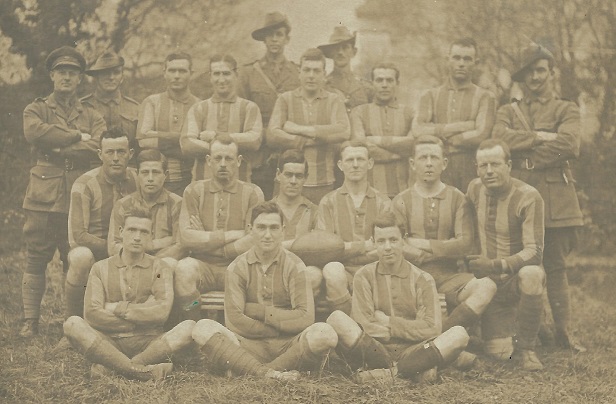
34th Battalion AIF Rugby Team November 1918
Middle Row. Third from Left: Major: Harry Lambert WHEELER.
(1) A Short History of the 34th Battalion, Illawarra Press; 1957.
(2) 34th Battalion War Diary
(3) BEAN; History of World War 1 Vol V page 334.
Australian Dictionary of Biography
Harry returned to Australia on the 14th October 1919.
Family Information
Bert was a 26 year old Solicitor from Newcastle, N.S.W. upon enlistment and was a member of the Newcastle Club. He served with the 16th Infantry Militia prior to World War 1 and was a member of the Newcastle Club. His parents Harry and Sarah Wheeler were married in 1885 at Greta, N.S.W. Marriage Cert:5388/1885. and had 7 children. Alice Mildred Millard Dixon Wheeler born 1886 at Muswellbrook, N.S.W. Birth Cert:201024/1886 and died 1958 at Mosman, N.S.W. Death Cert:29063/1958. Maria M S Dixon Wheeler born 1887 at Muswellbrook, N.S.W. Birth Cert:24667/1887. Harry Lambert Edward Dixon born 1889 at Muswellbrook, N.S.W. Birth Cert:24067/1889. and died 1983 Newcastle, N.S.W, Australia. Death Cert:100205/1983. Frank Millard Dixon Wheeler born 1892 at Muswellbrook, N.S.W. Birth Cert:24128/1892 and died 1970 at St Leonards, N.S.W. Death Cert:11249/1970. Doris K I Dixon Wheeler born 1894 at Hamilton, N.S.W. Birth Cert:15804/1894 and died 1871 at Gosford, N.S.W. Death Cert:41503/1971. Gwendiline M Wheeler born 1902 at Hamilton, N.S.W. Birth Cert:22477/1902. Neville Dixon Wheeler born 1907 at Hamilton, N.S.W. Birth Cert:3824/1907.
Bert lived with his wife Linda at 45 Church Street, Newcastle, N.S.W. when he enlisted to serve during World War 2 with the rank of Lieutenant Colonel. Wheeler had commanded the 2nd Battalion (City of Newcastle) in 1921-24. In World War II he served full time (1942-43) on the camp staff, Newcastle, before transferring to the Reserve of Officers.
TROVE: Maitland Mercury 10th April 1909 Promotion approved by His Excellency the Governor.
Military Records
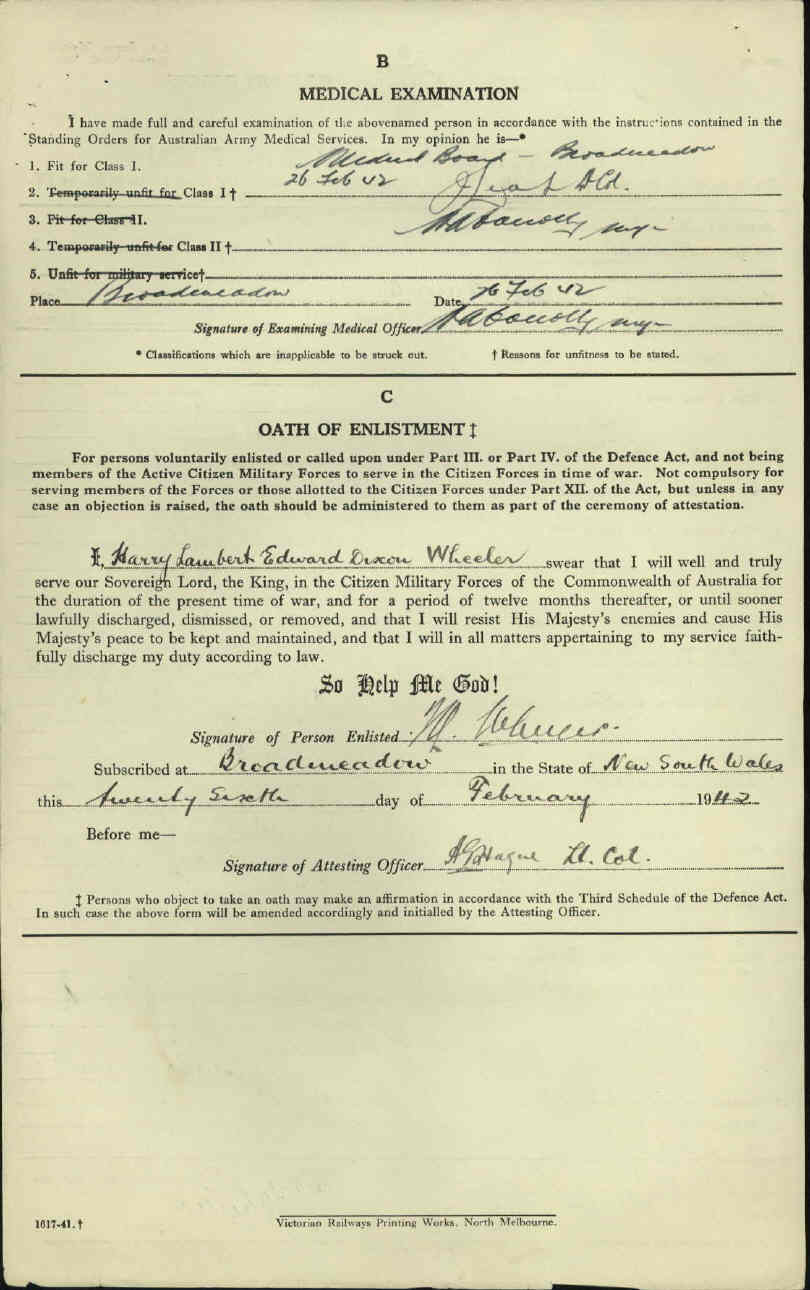
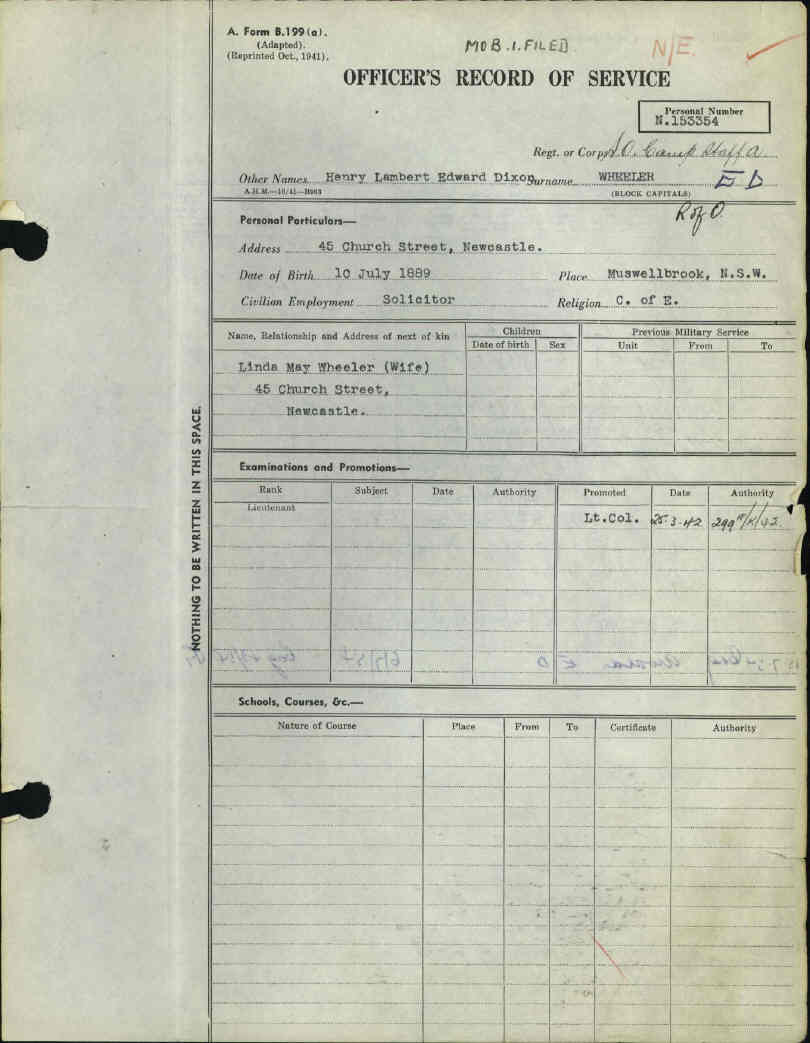
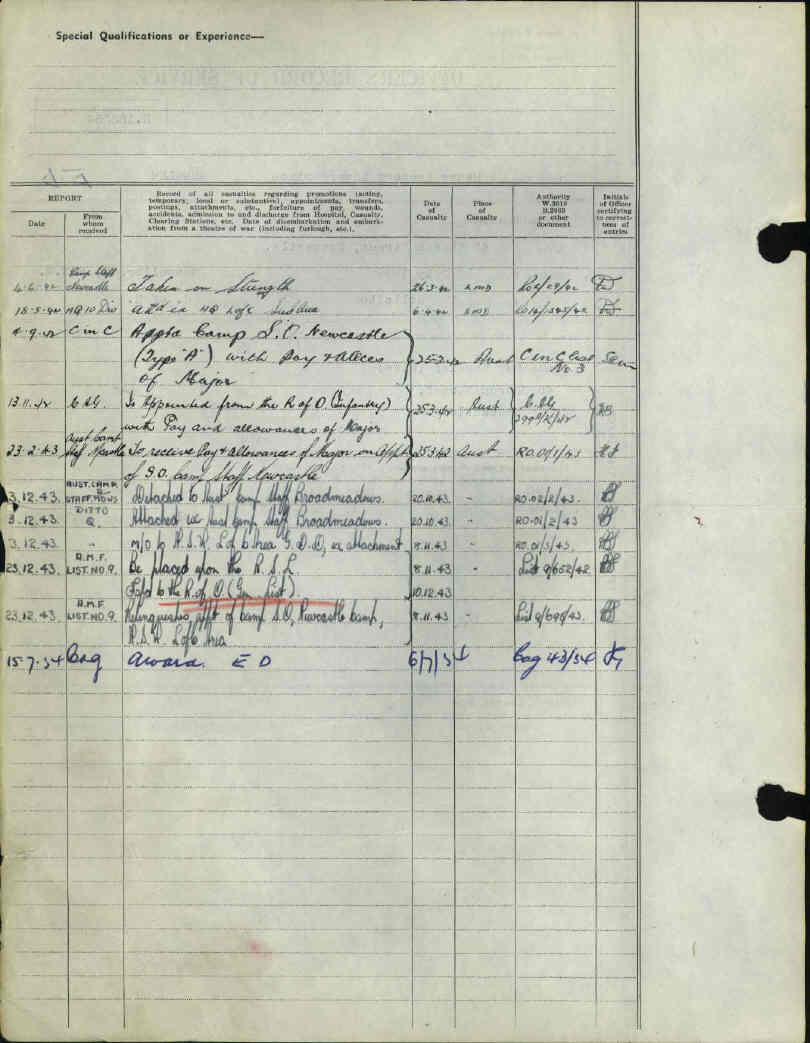
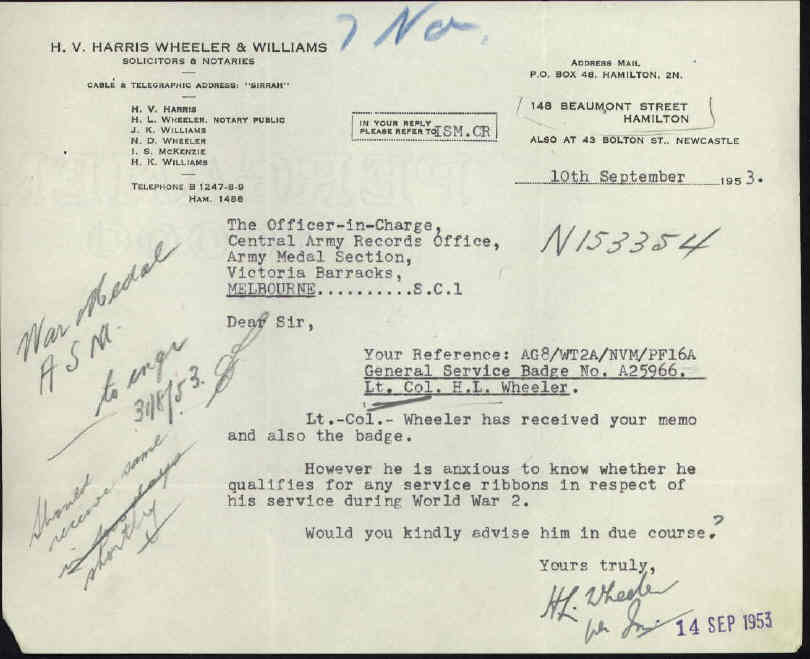
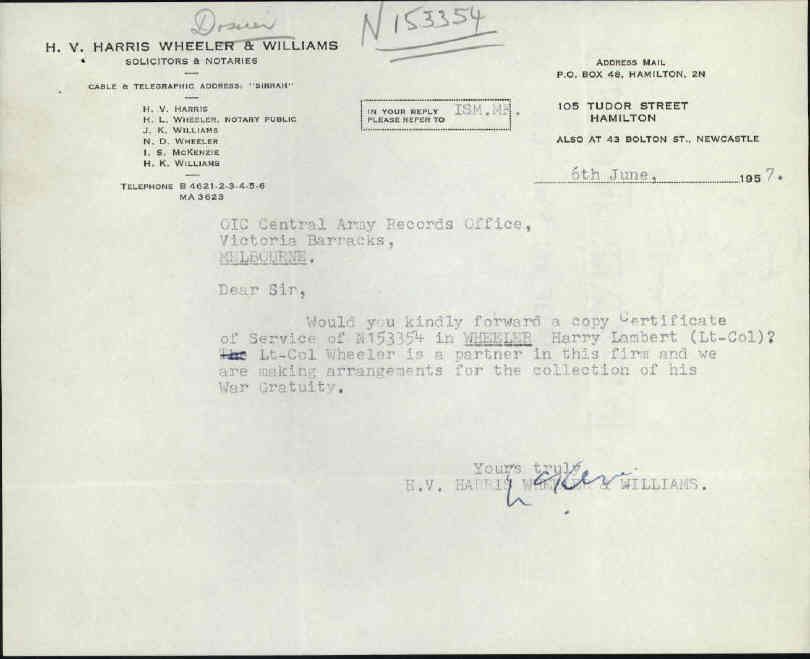
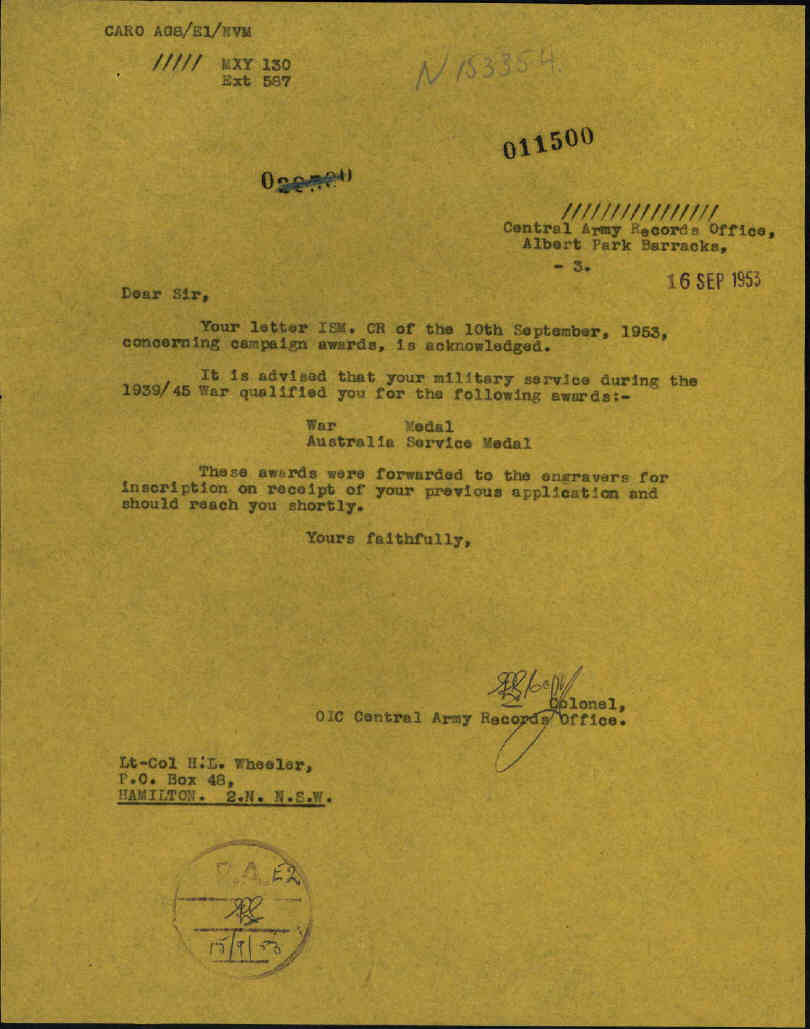


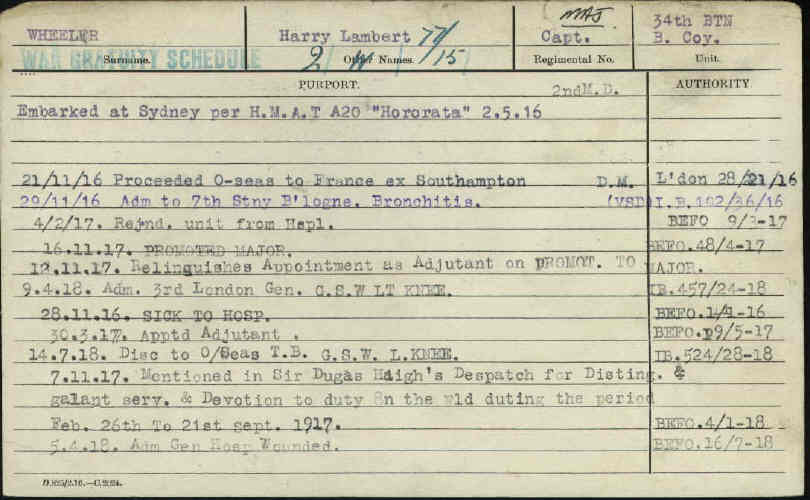

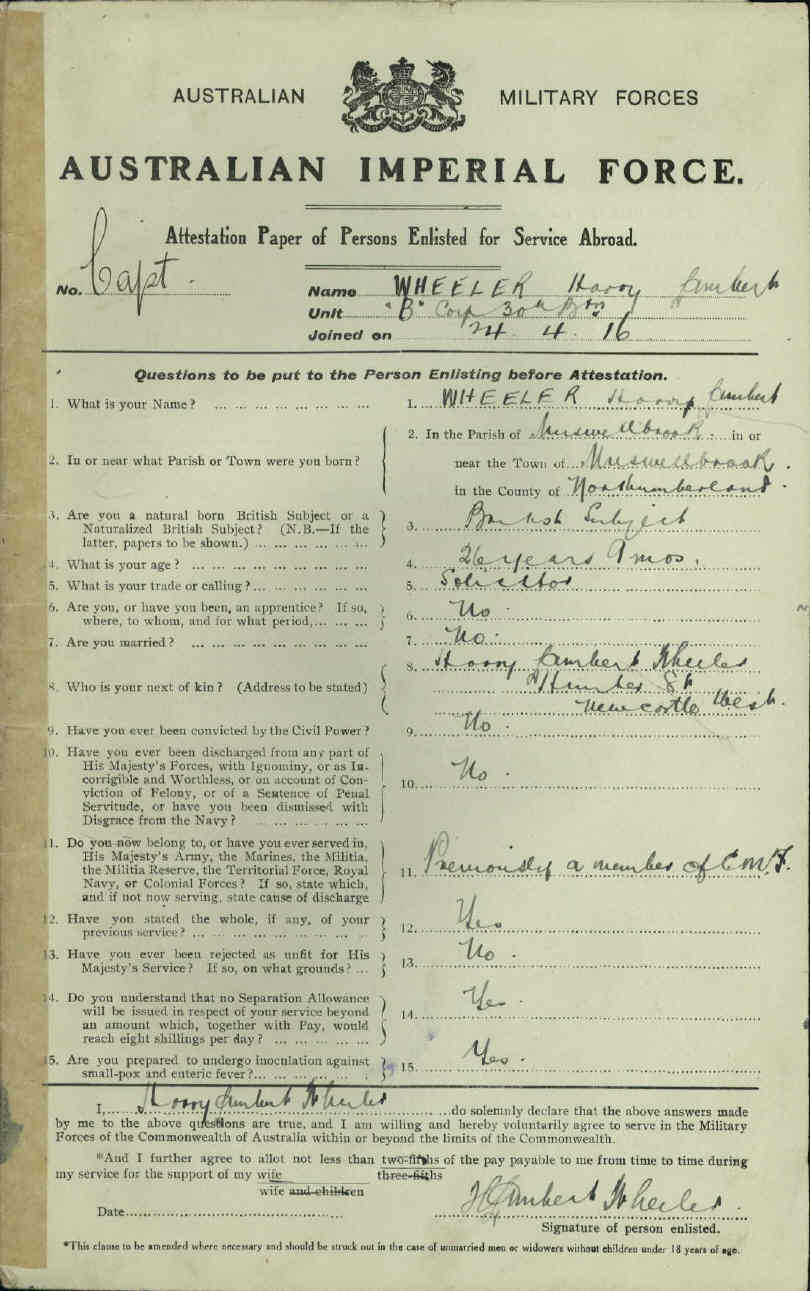
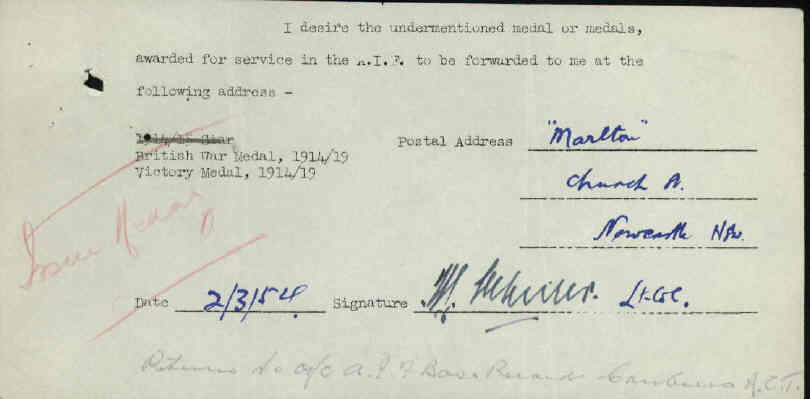
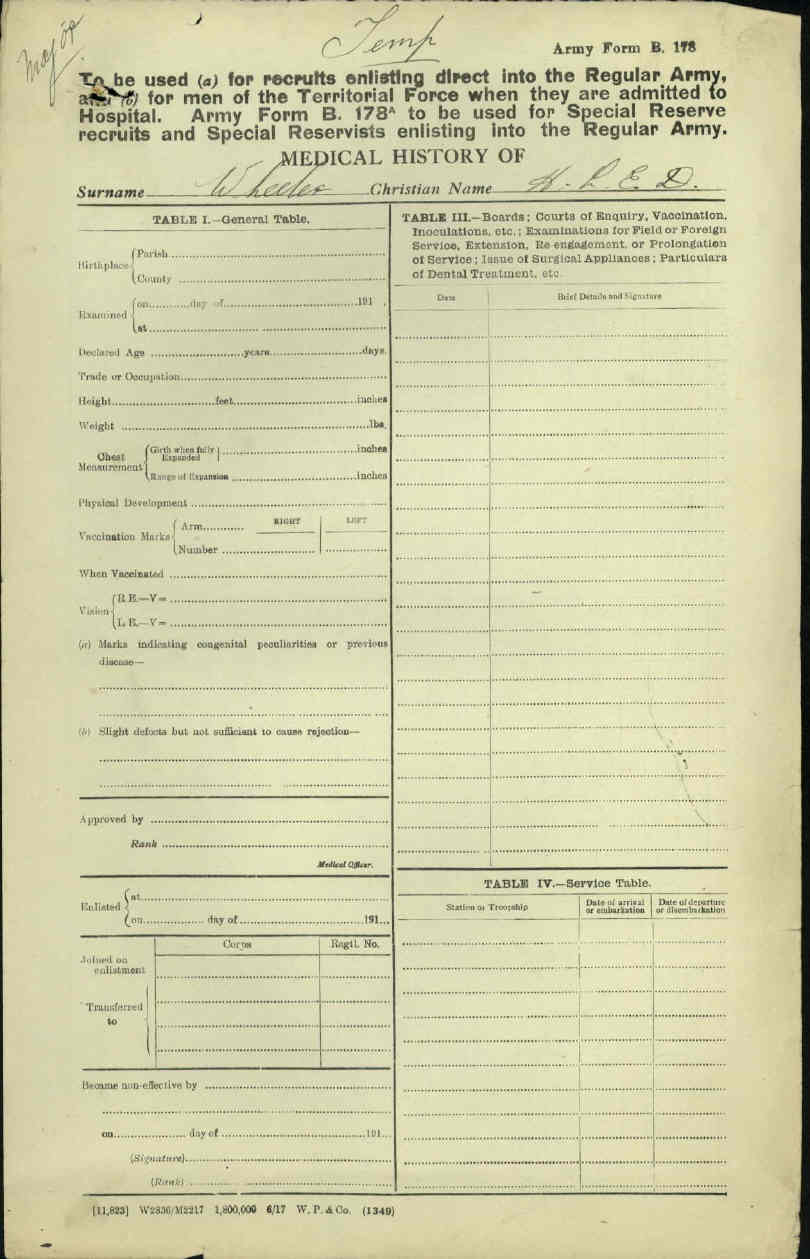
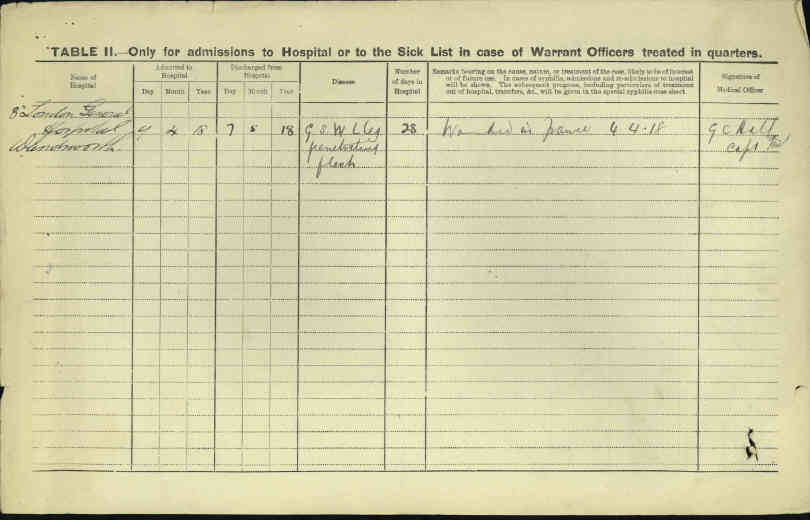
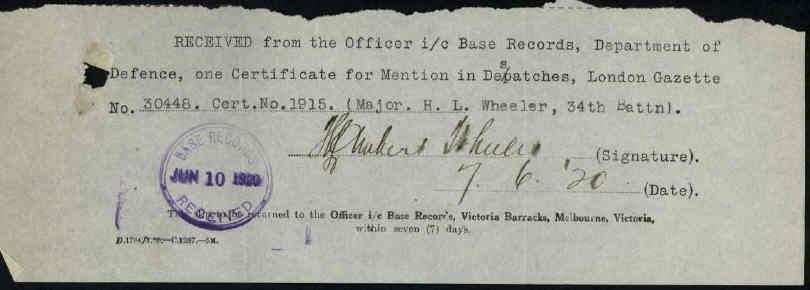
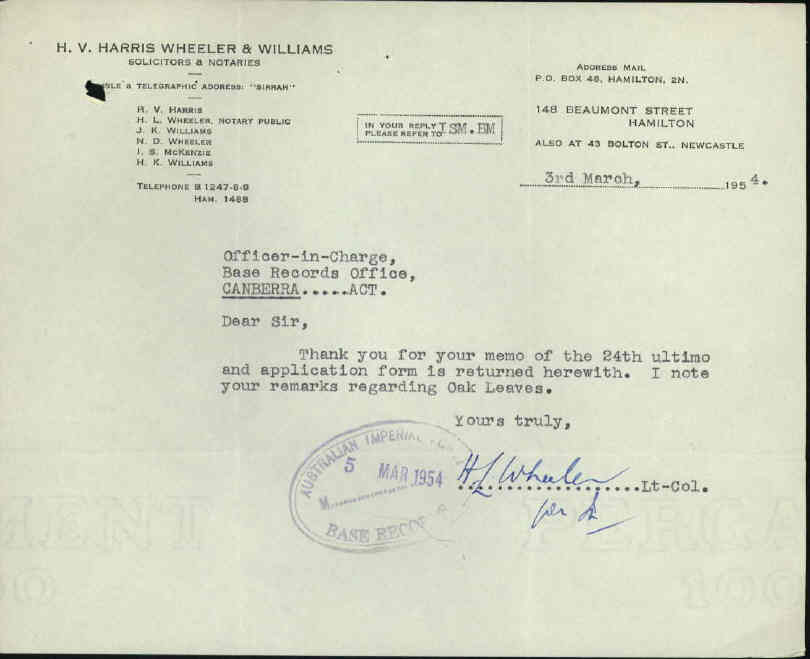
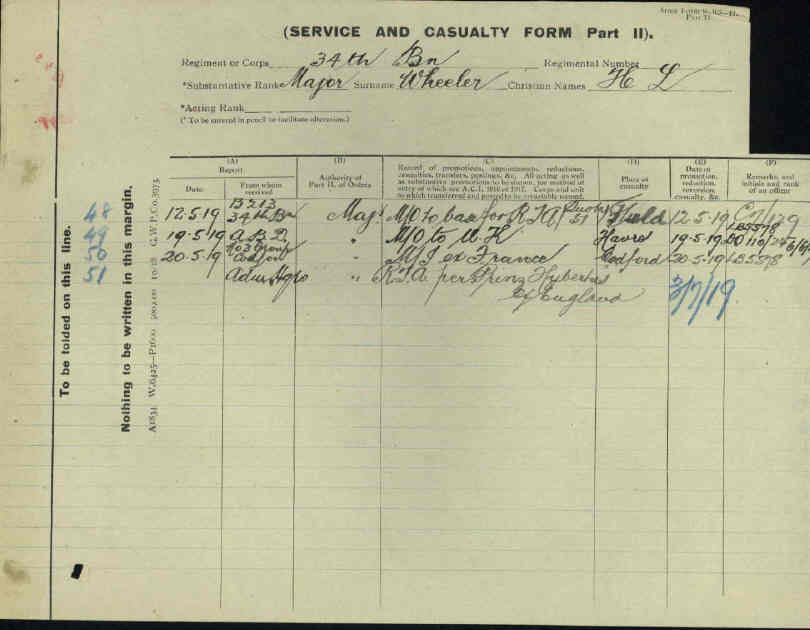
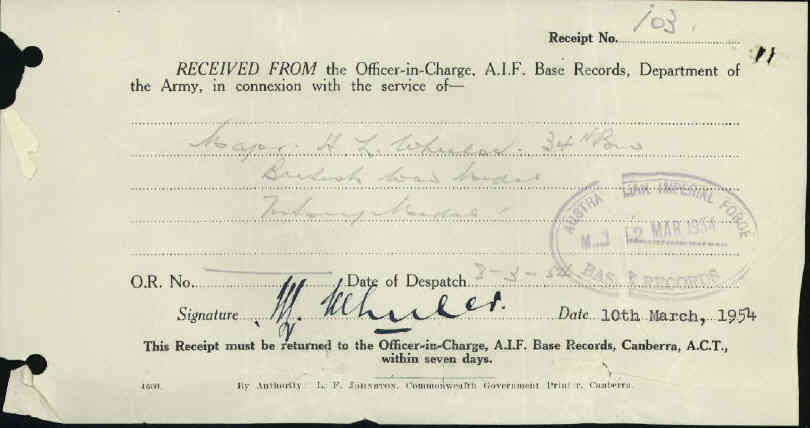
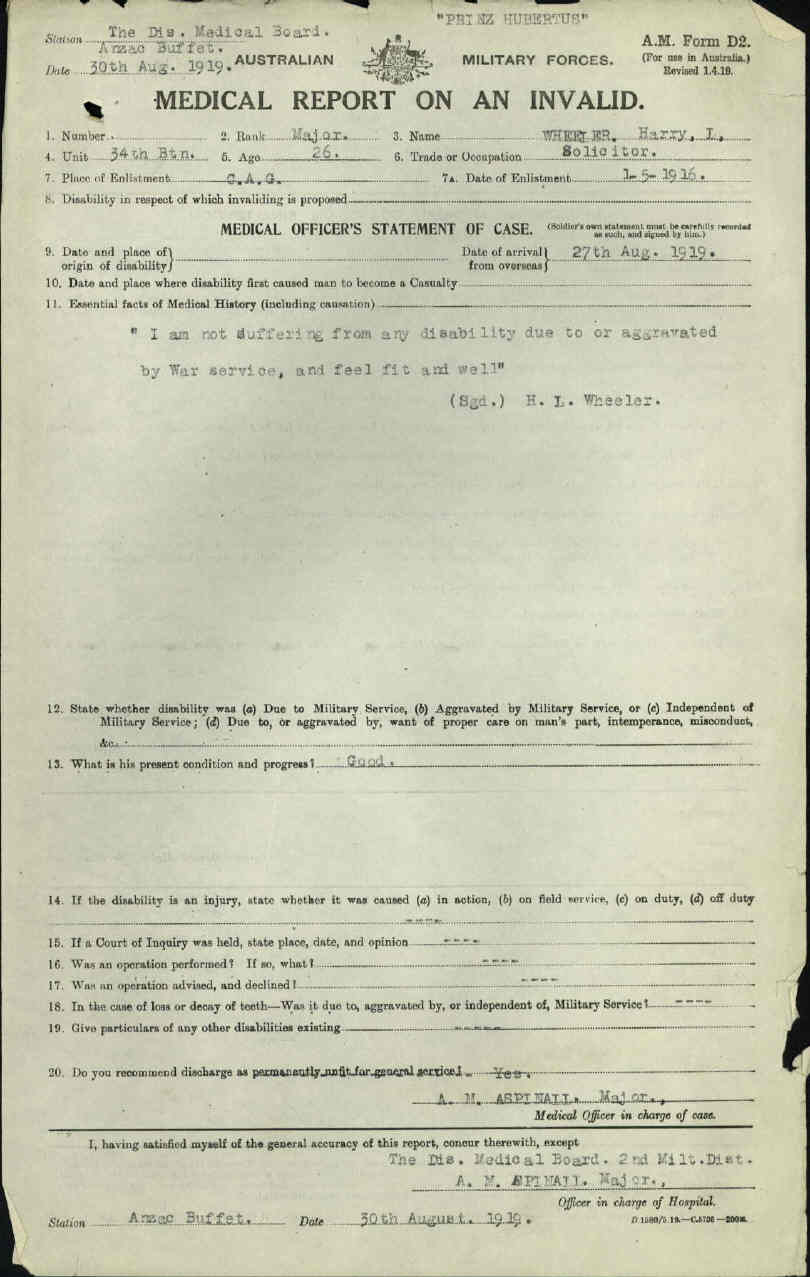
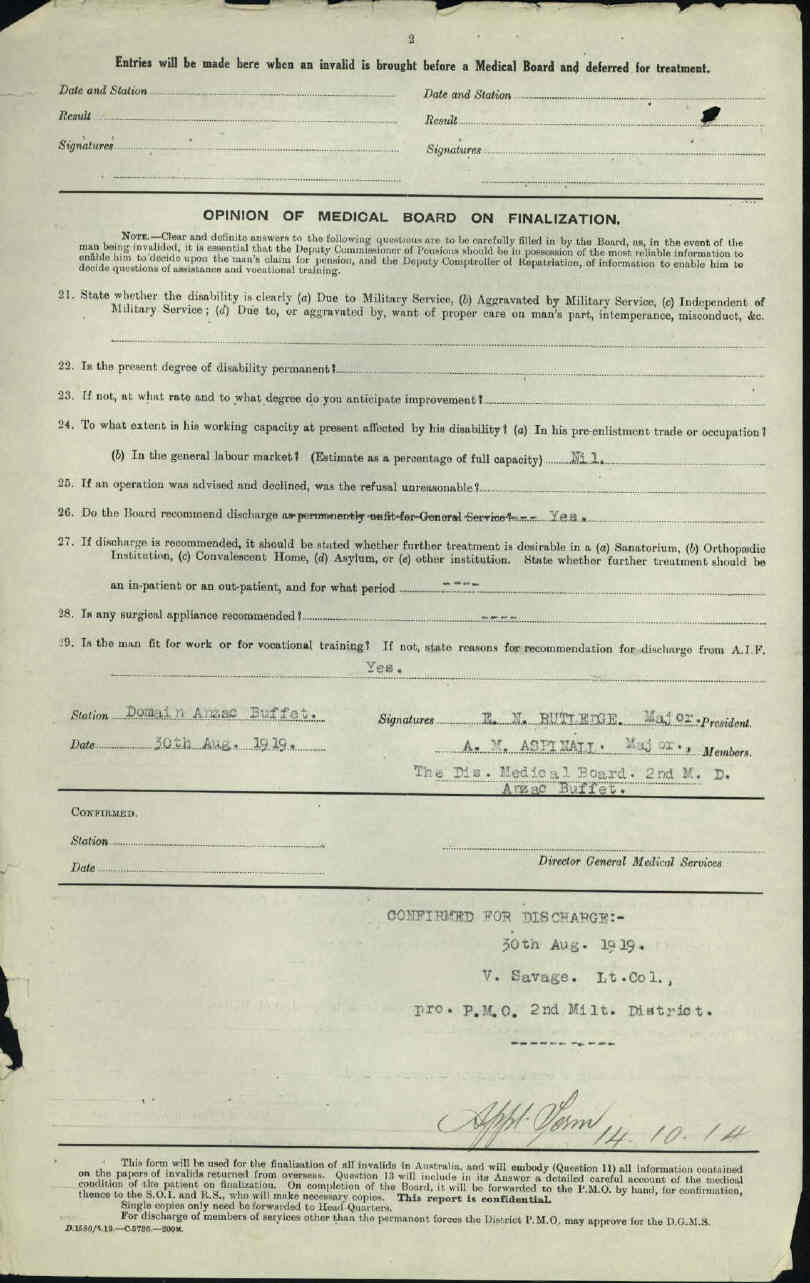

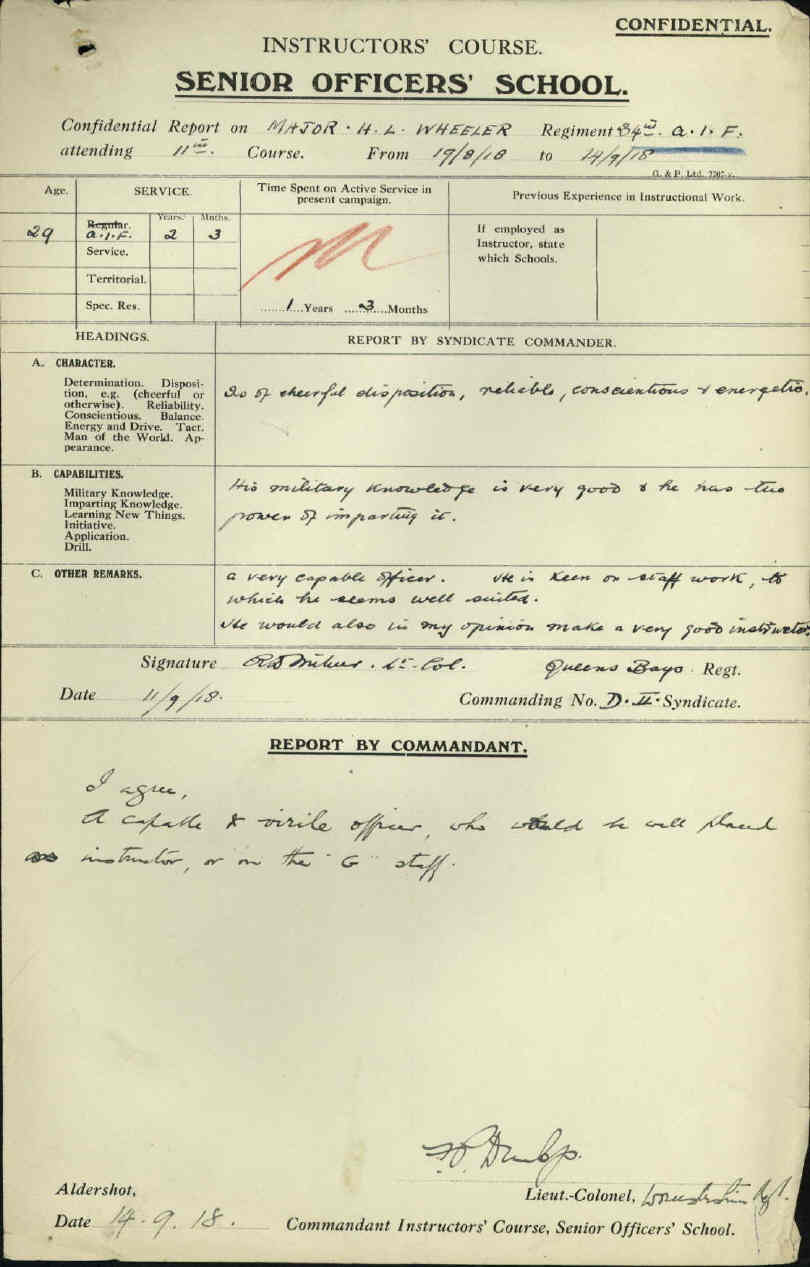
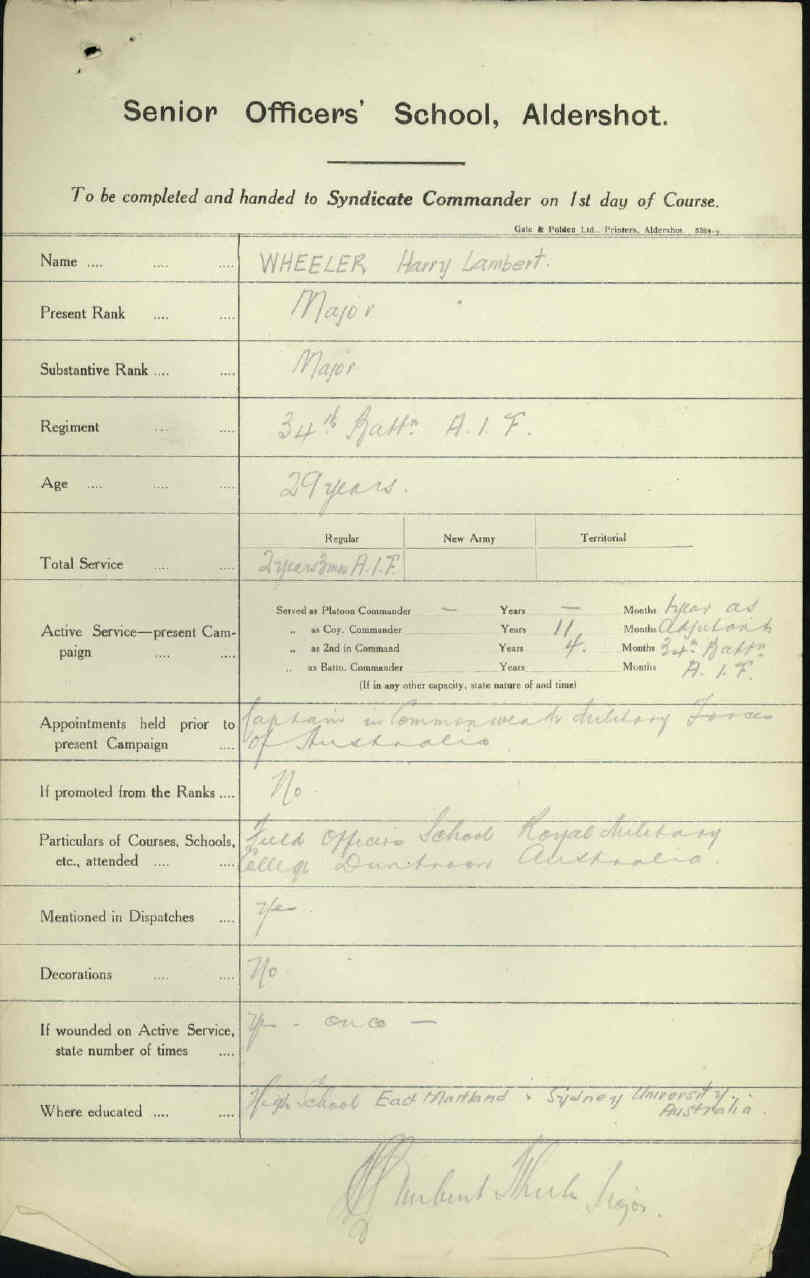
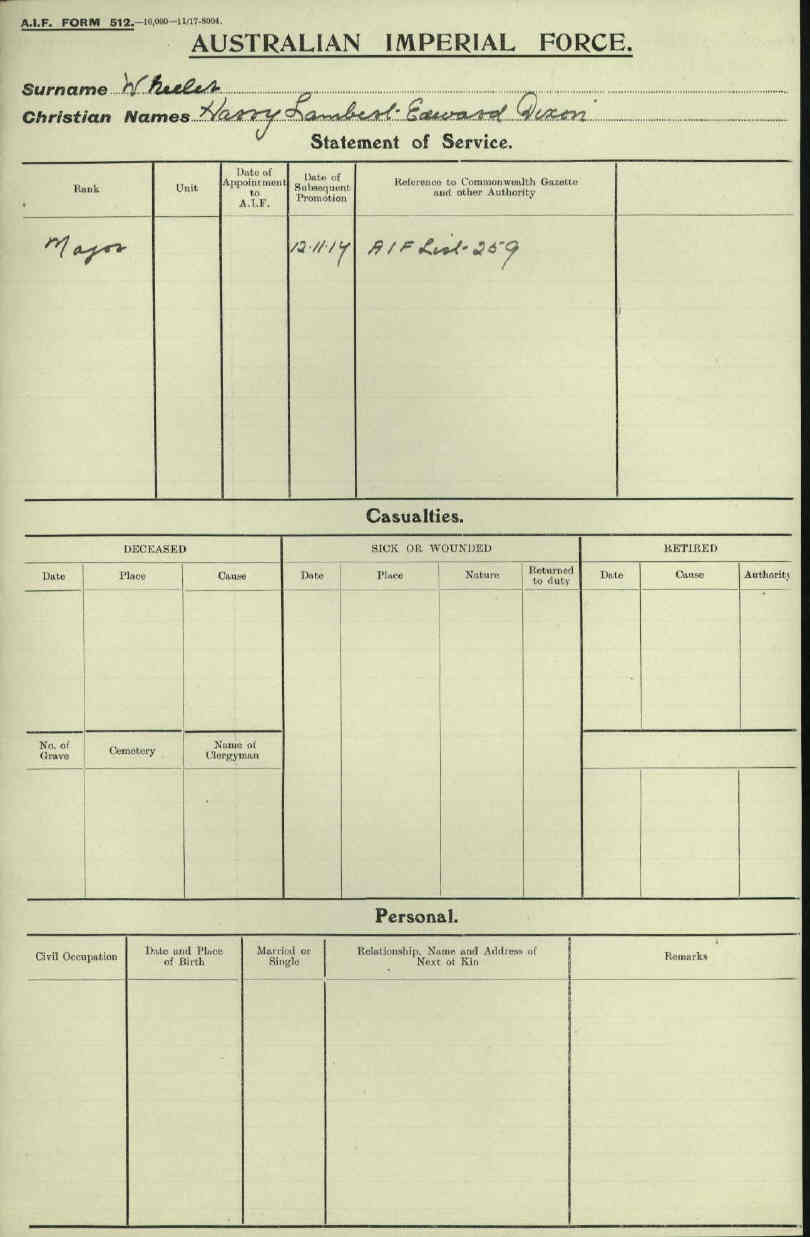
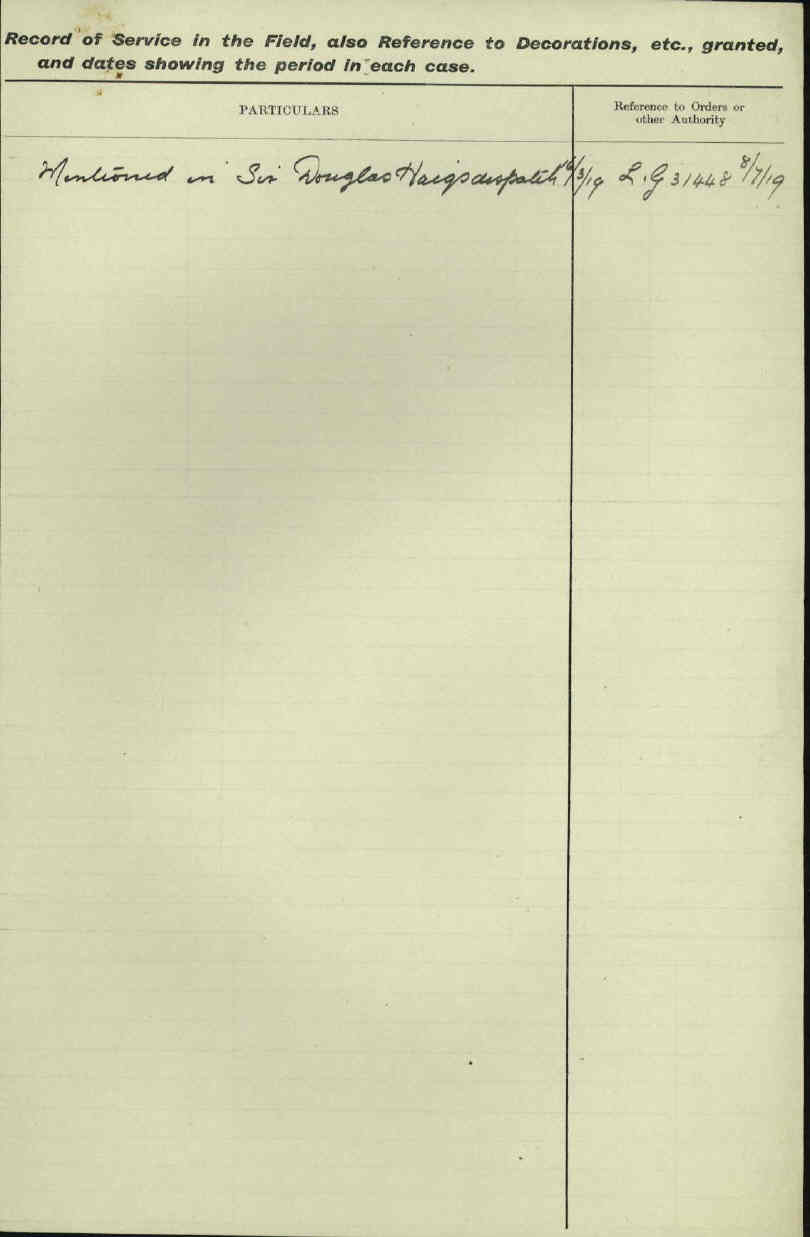
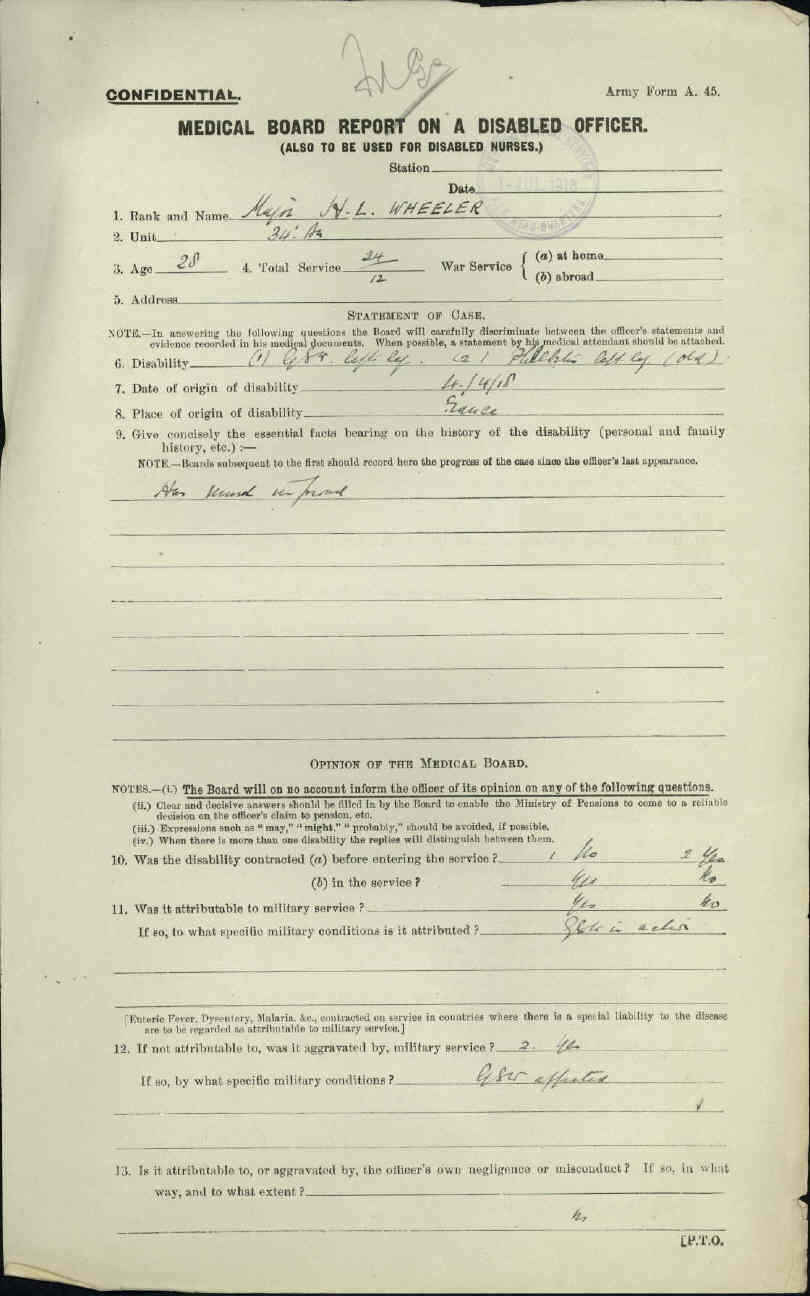
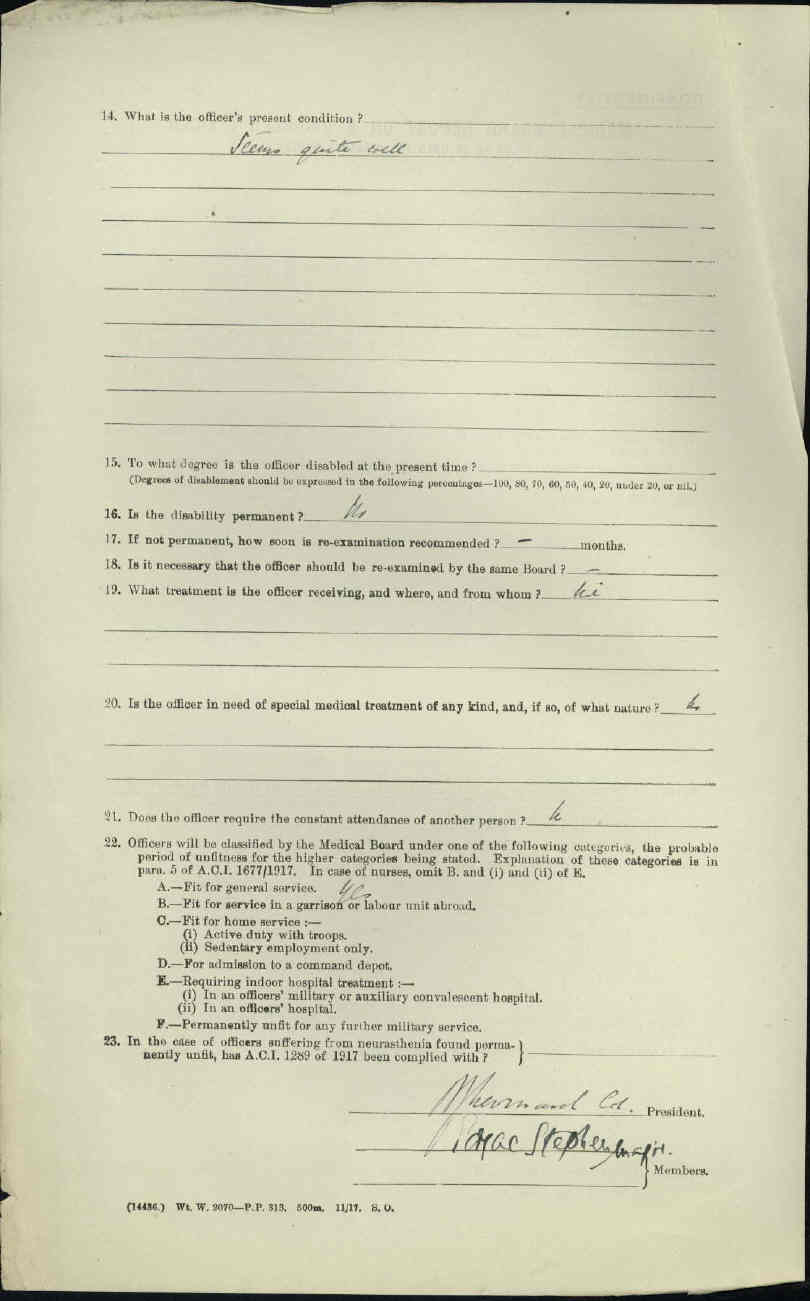
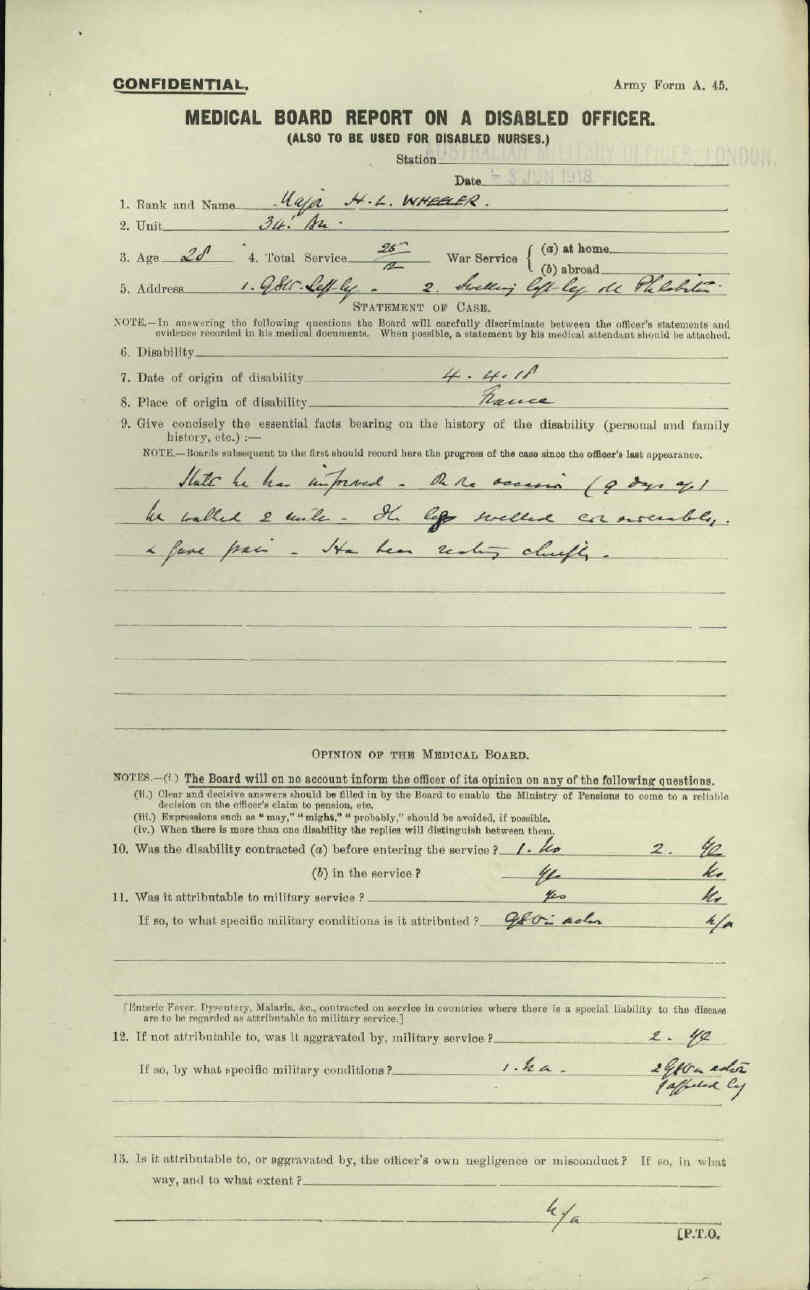
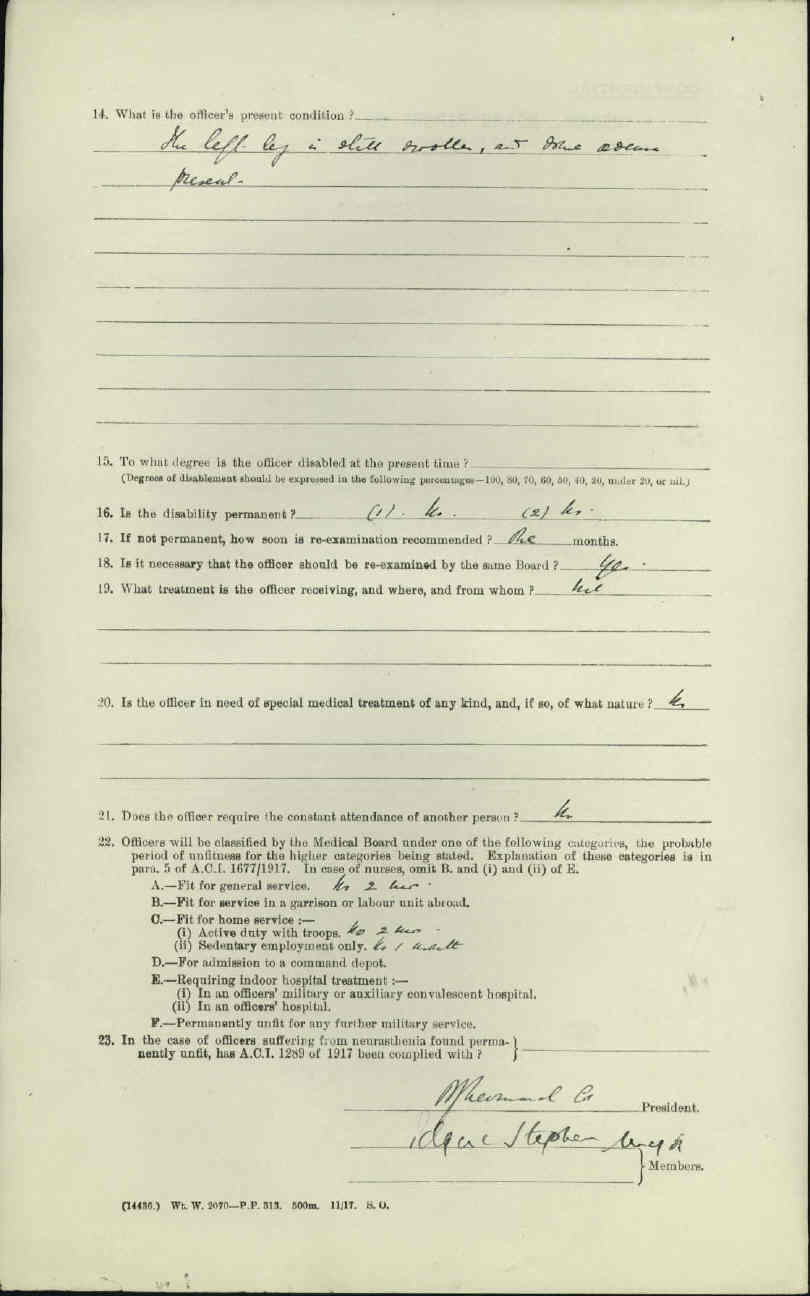
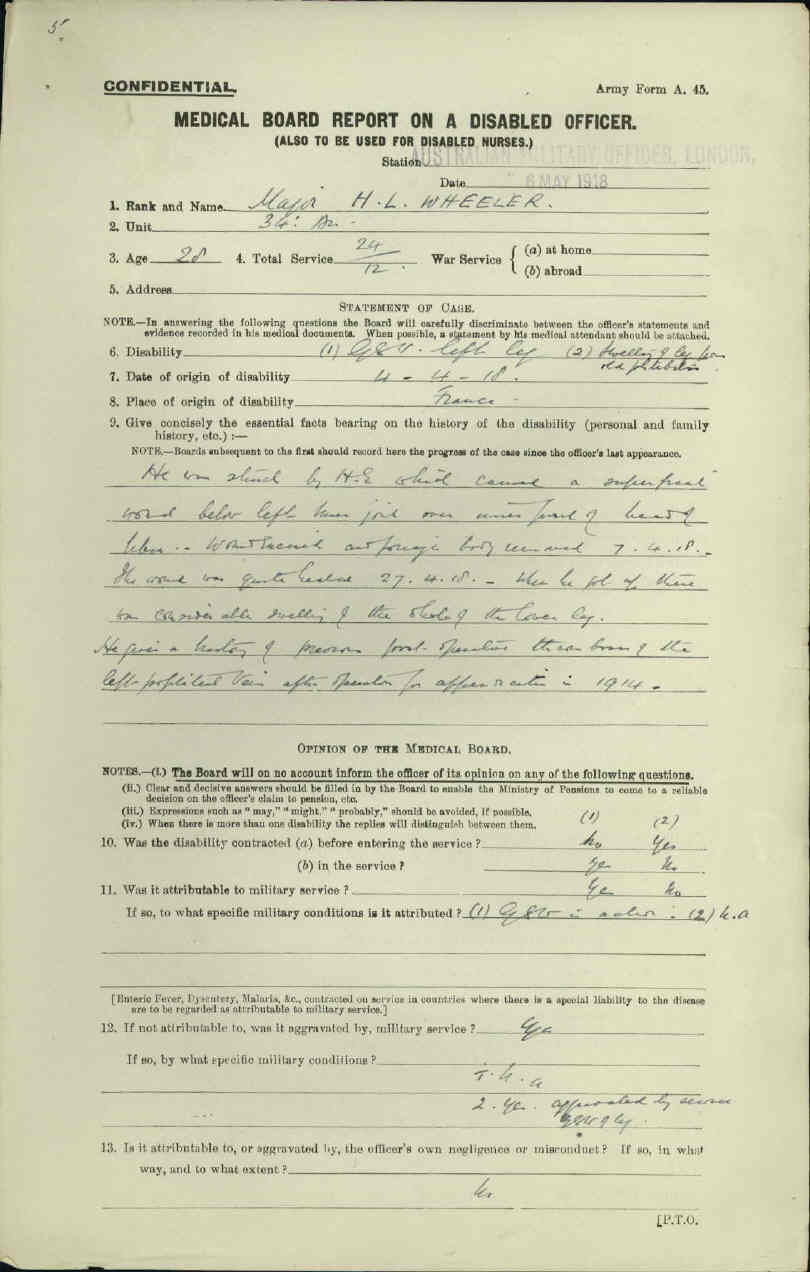
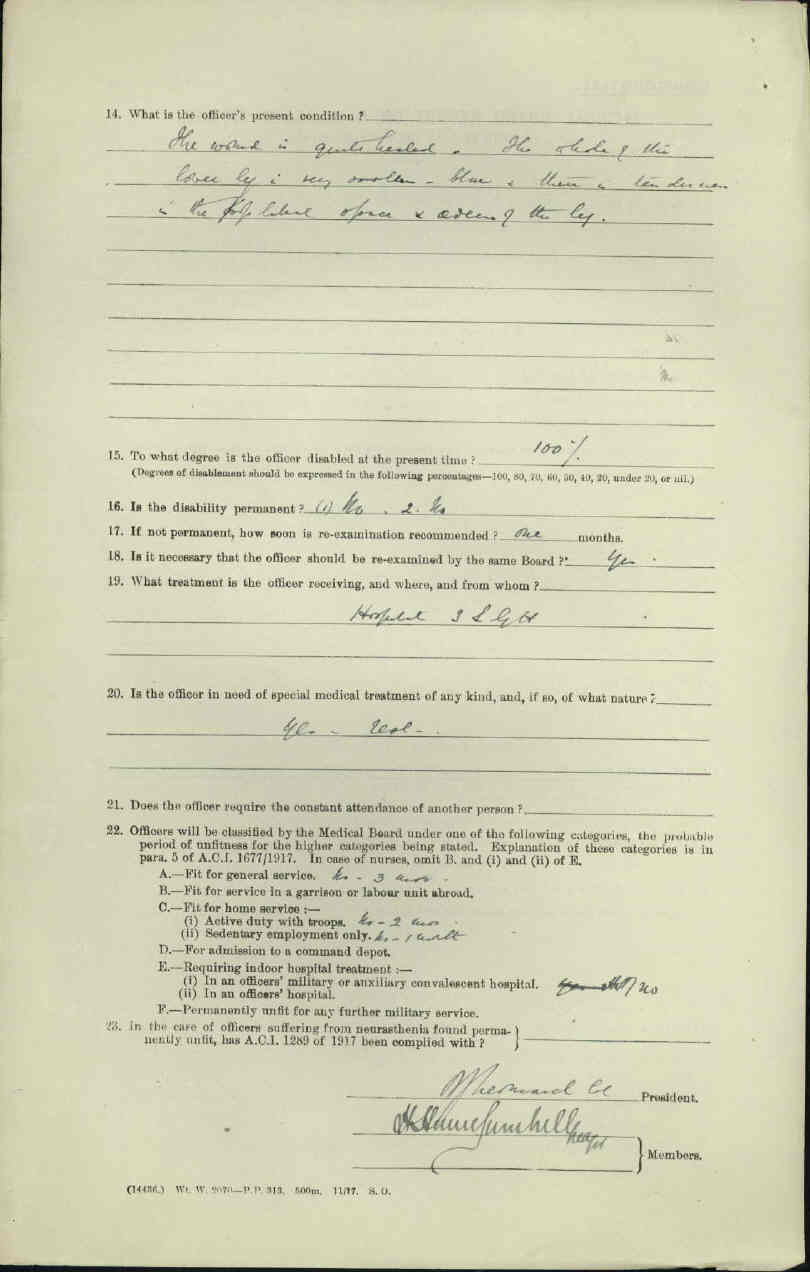
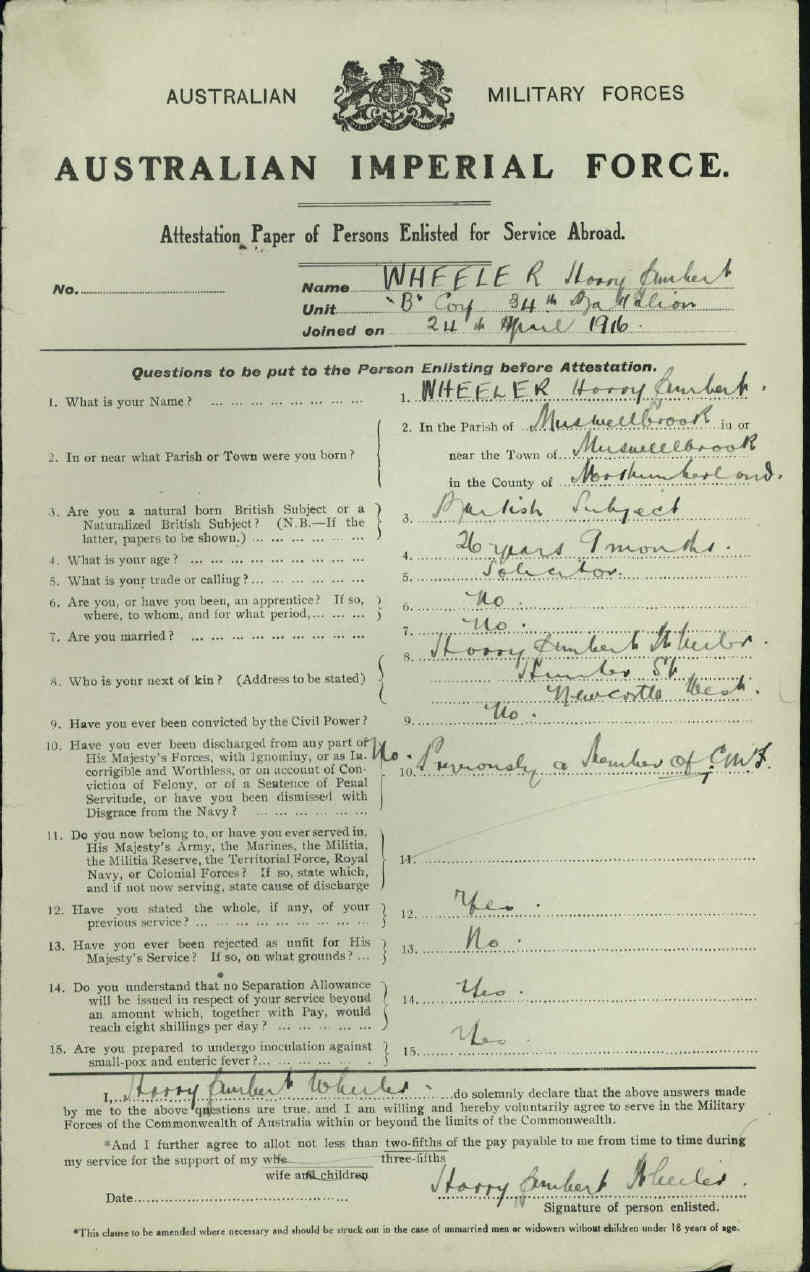

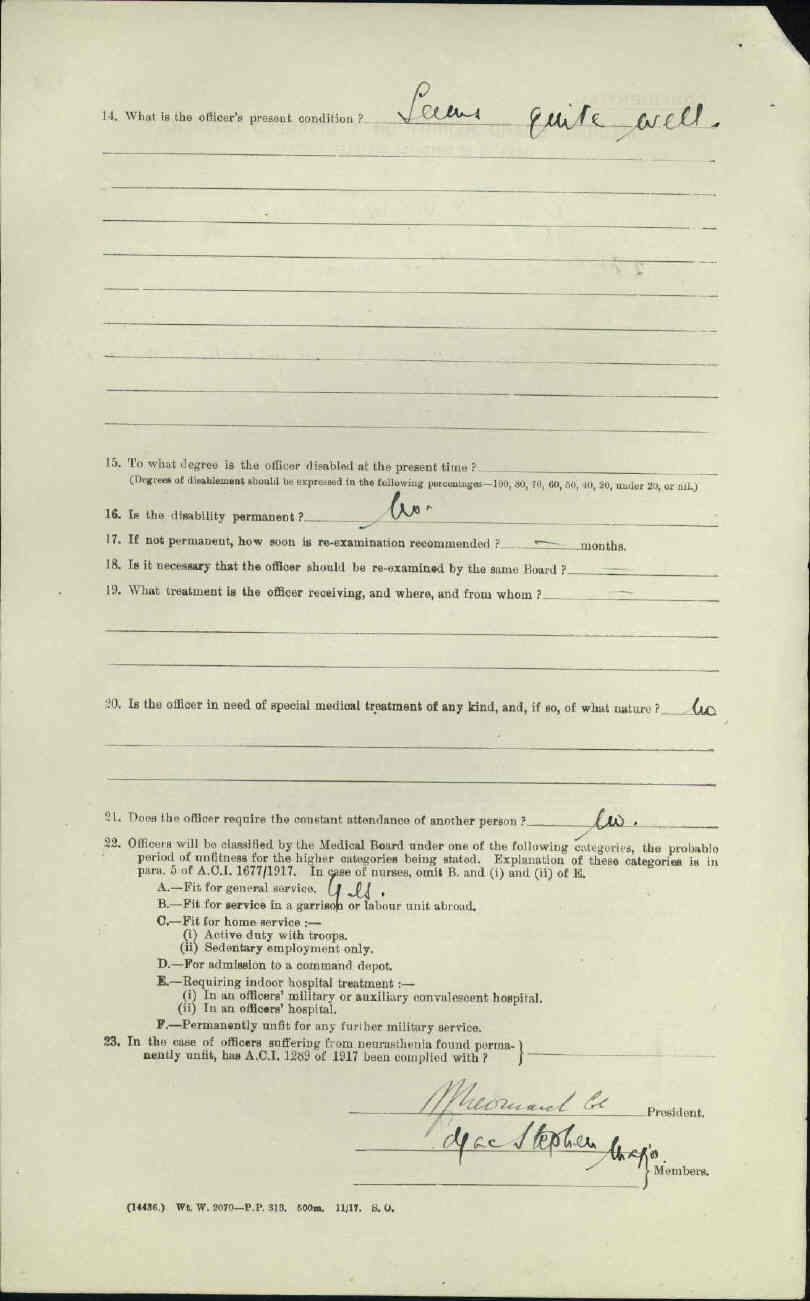
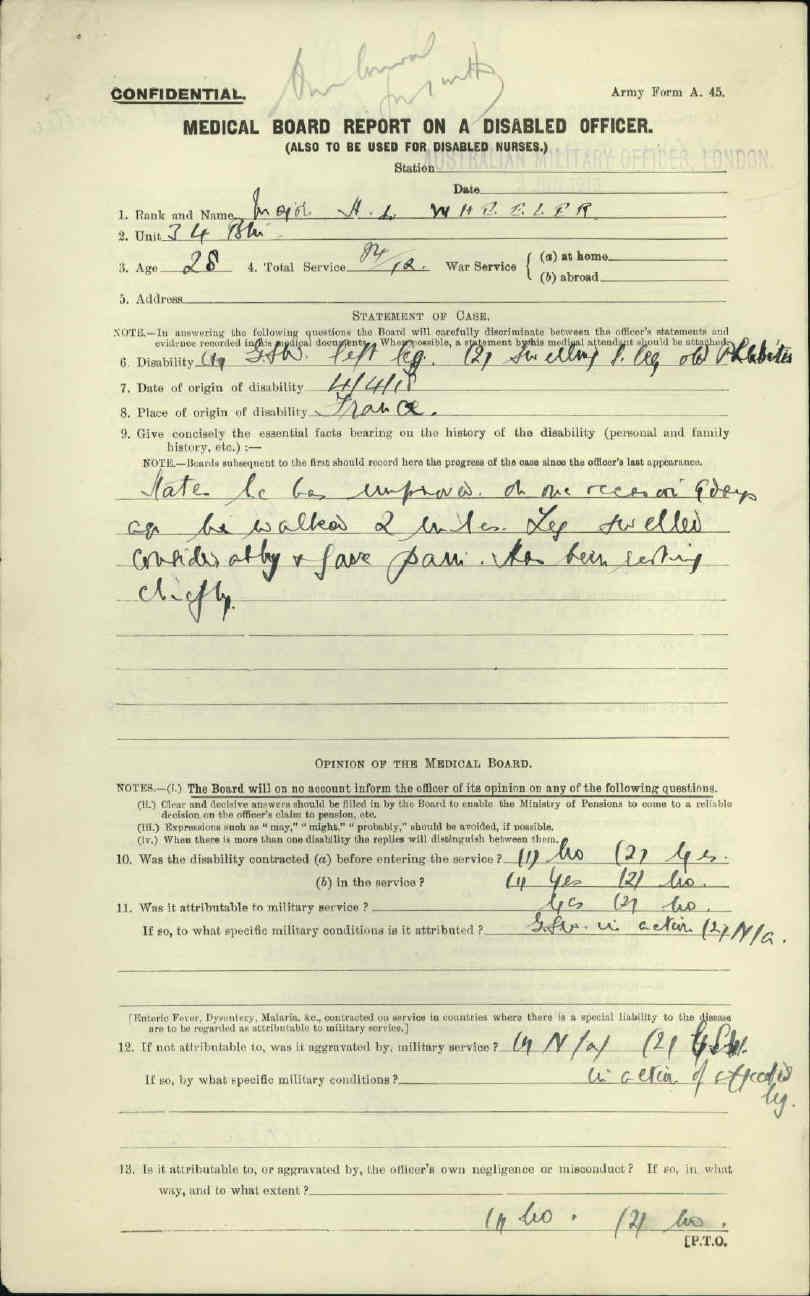
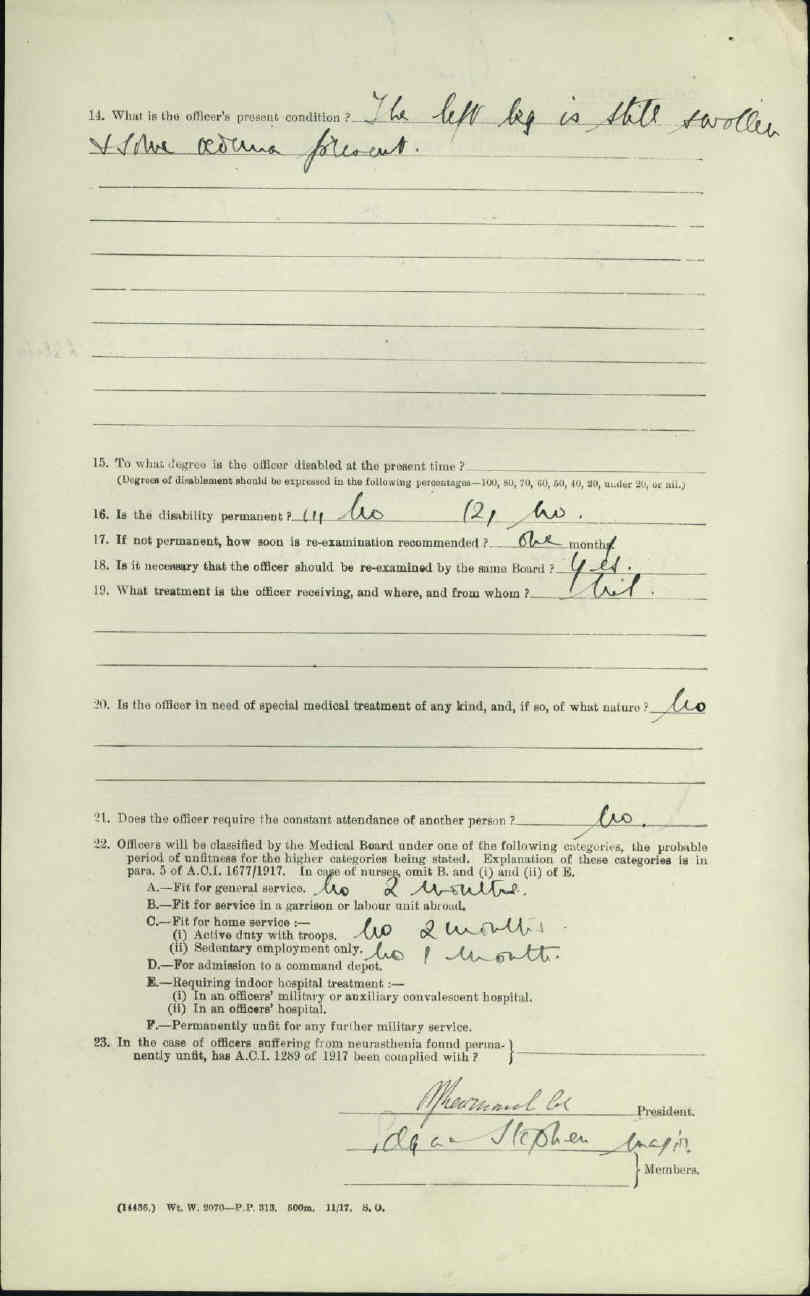
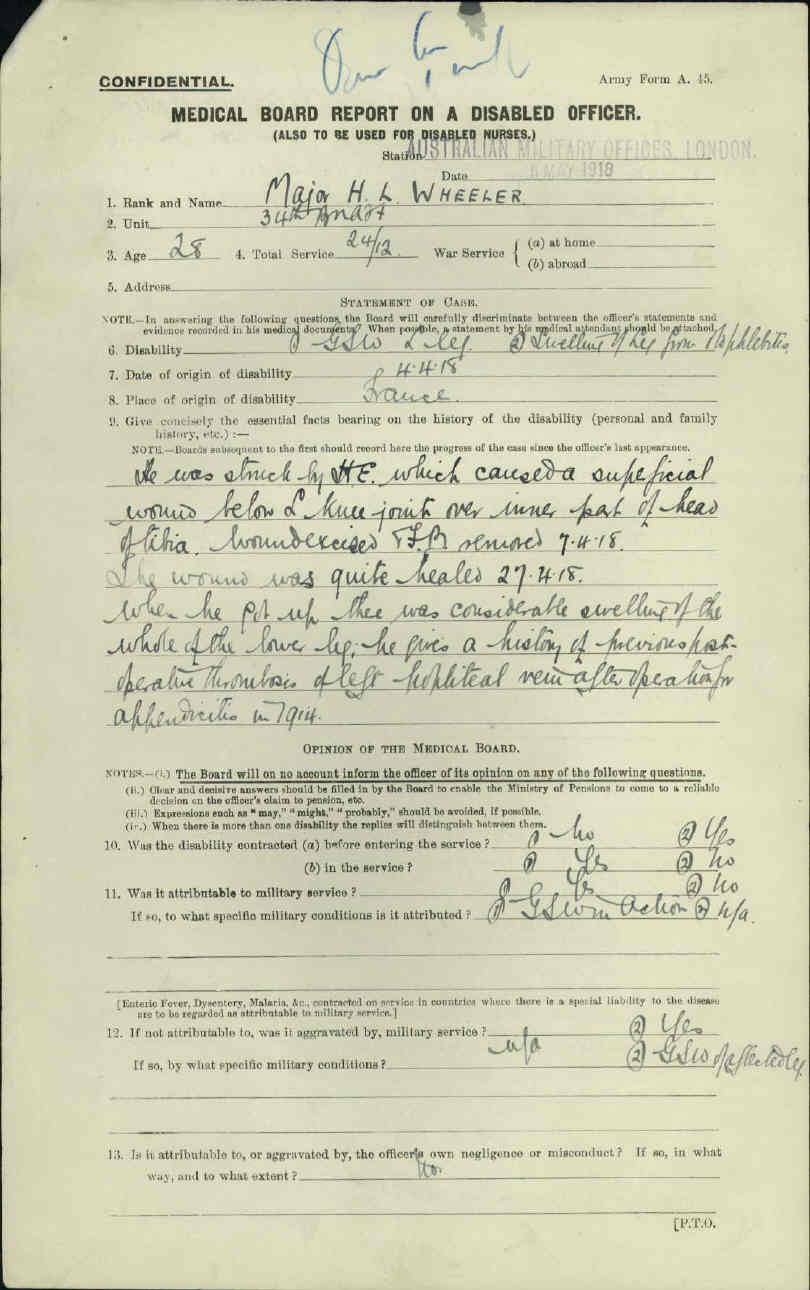
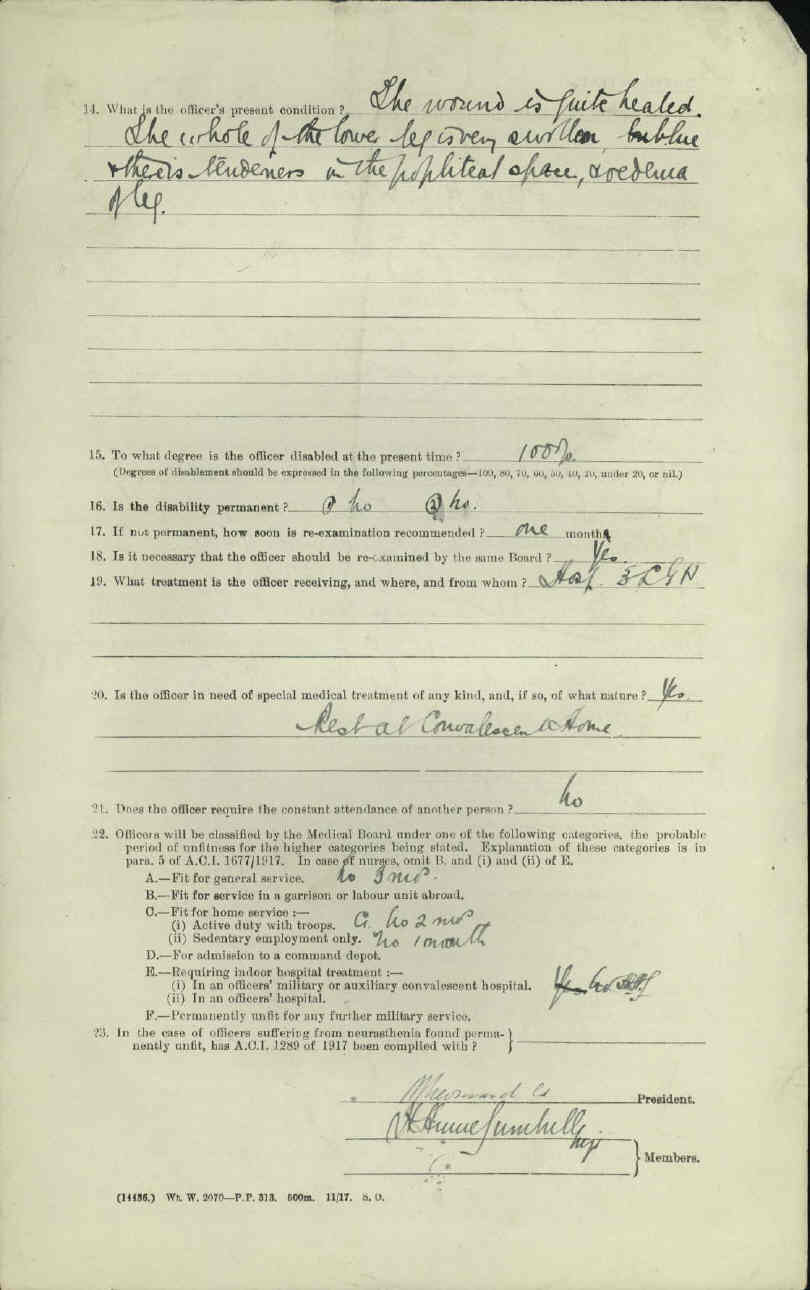


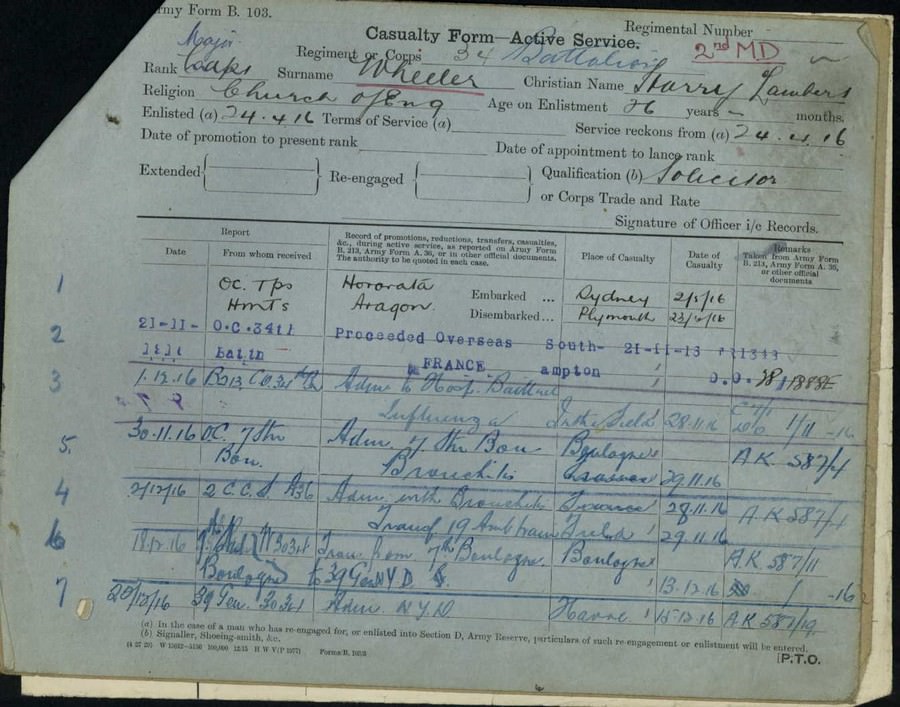
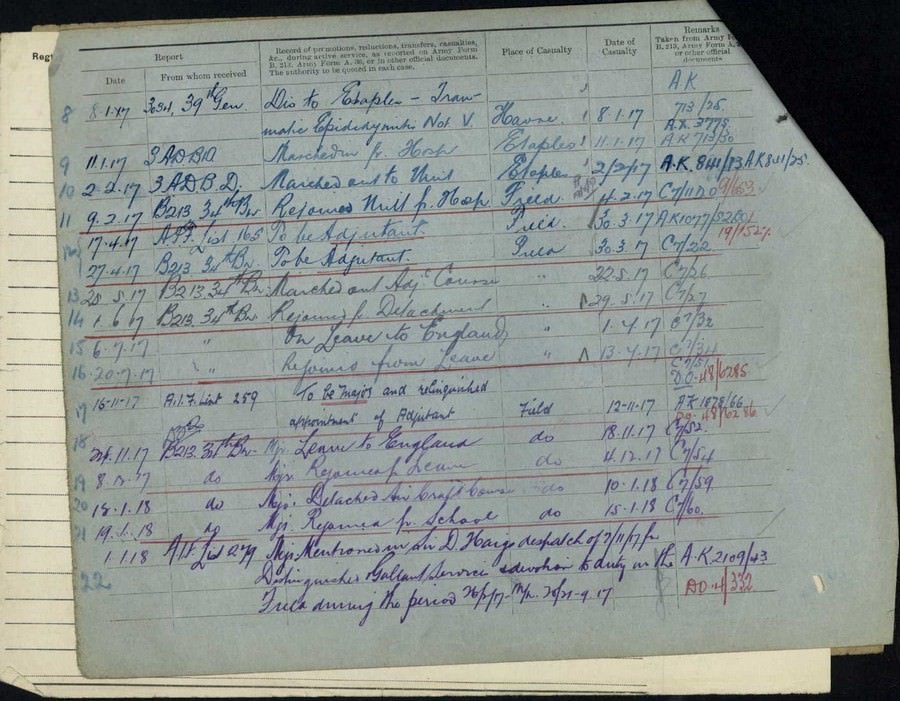
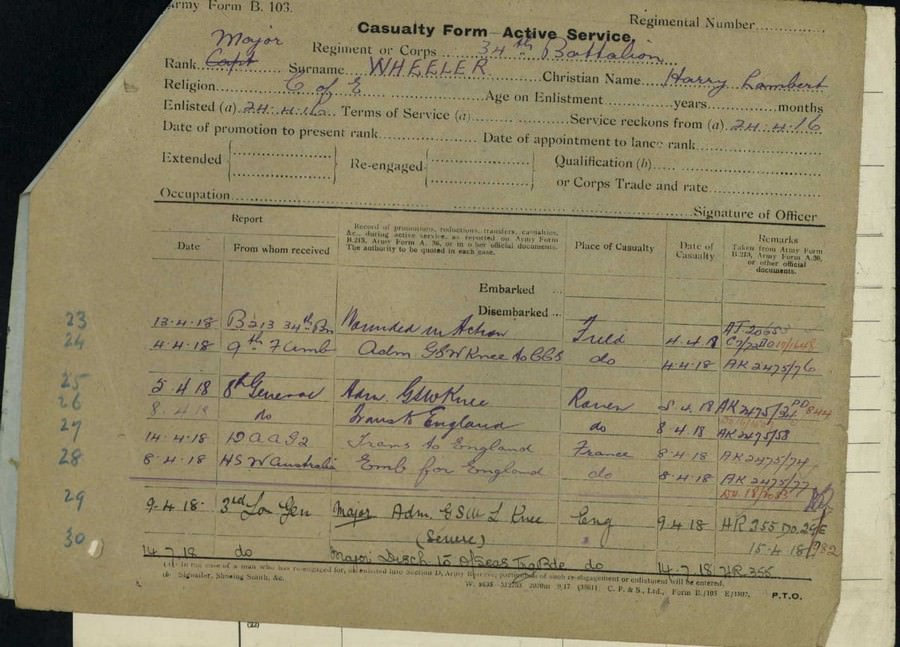
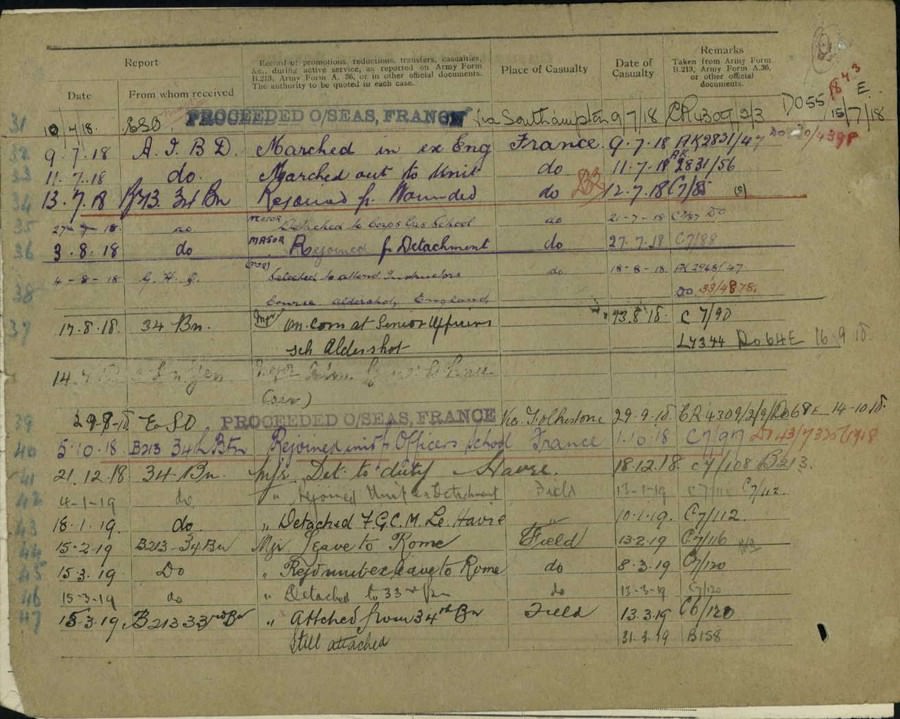

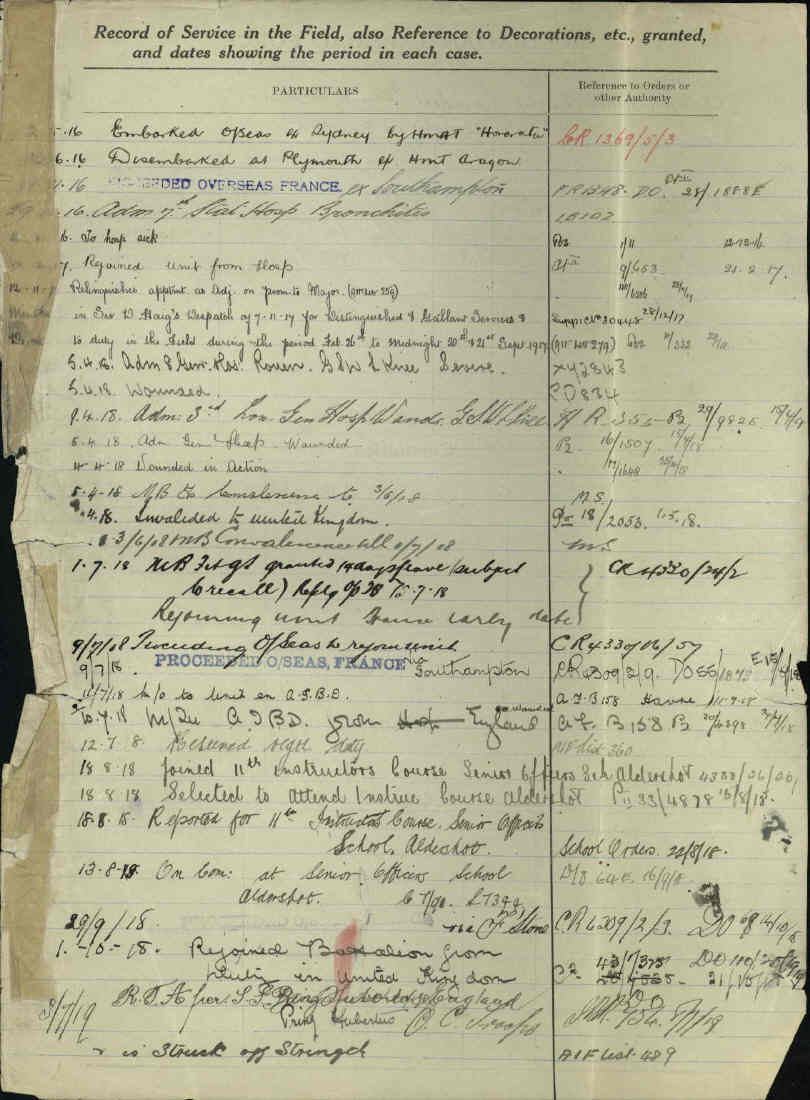

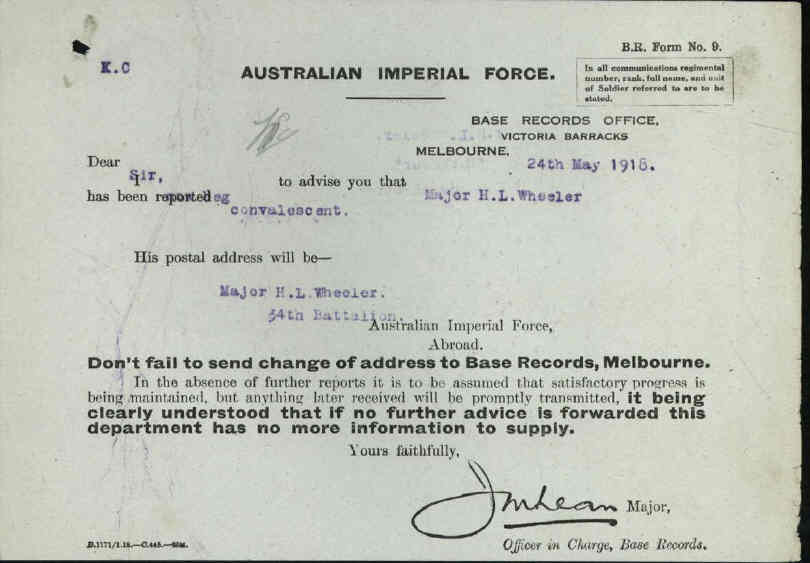
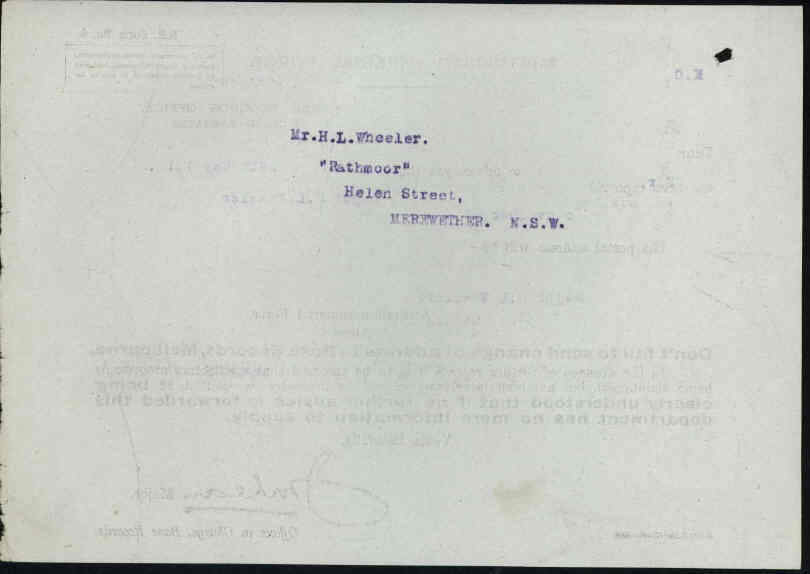


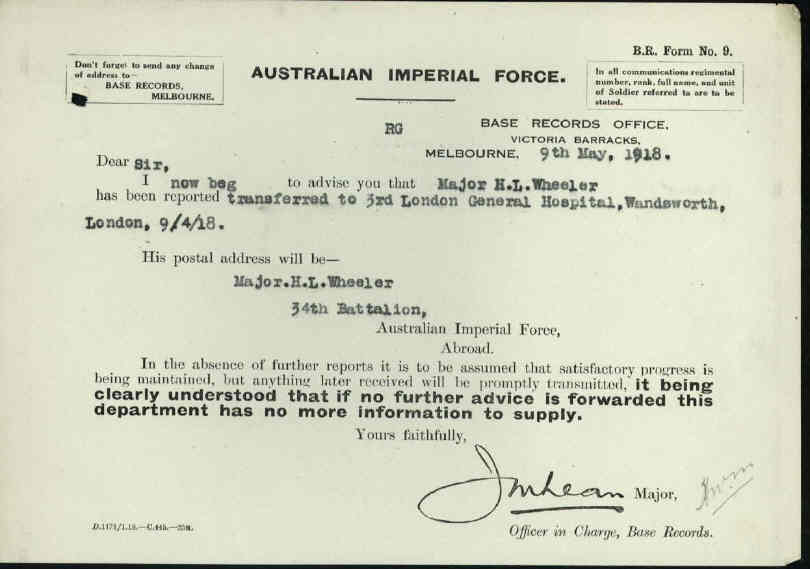
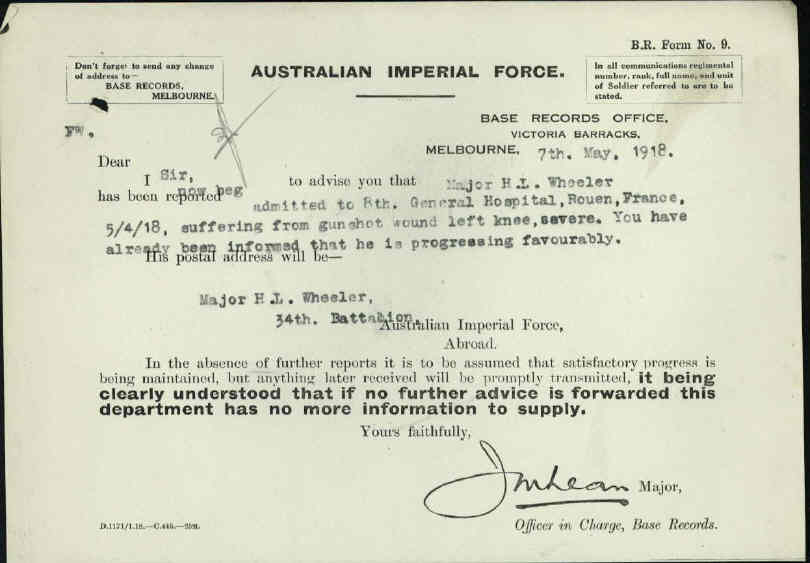
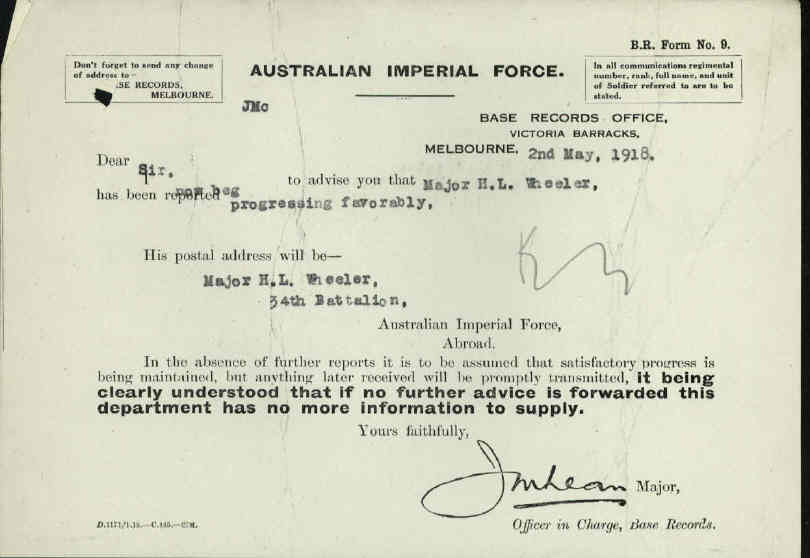
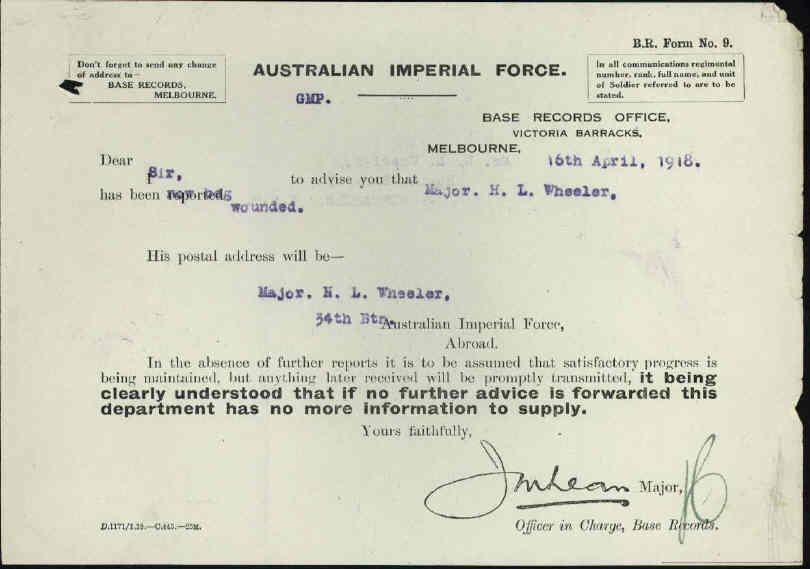

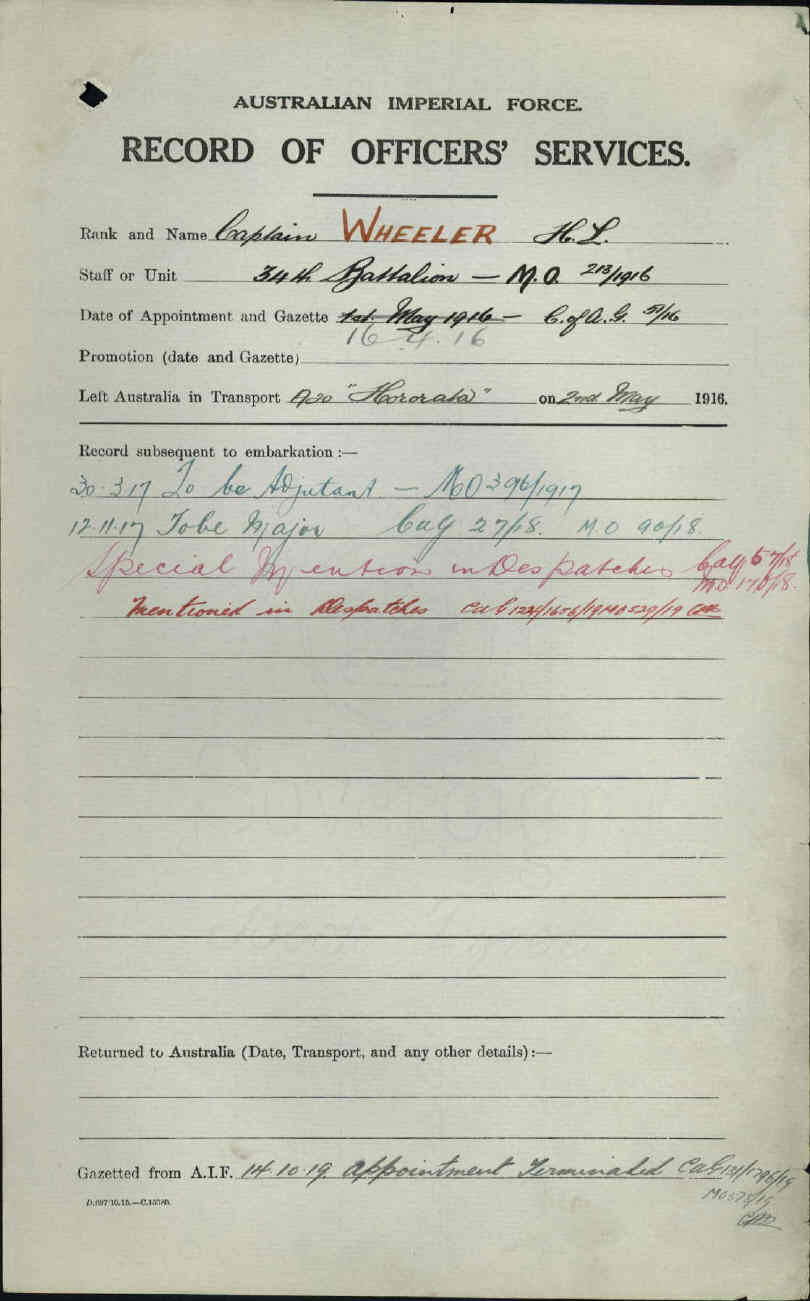

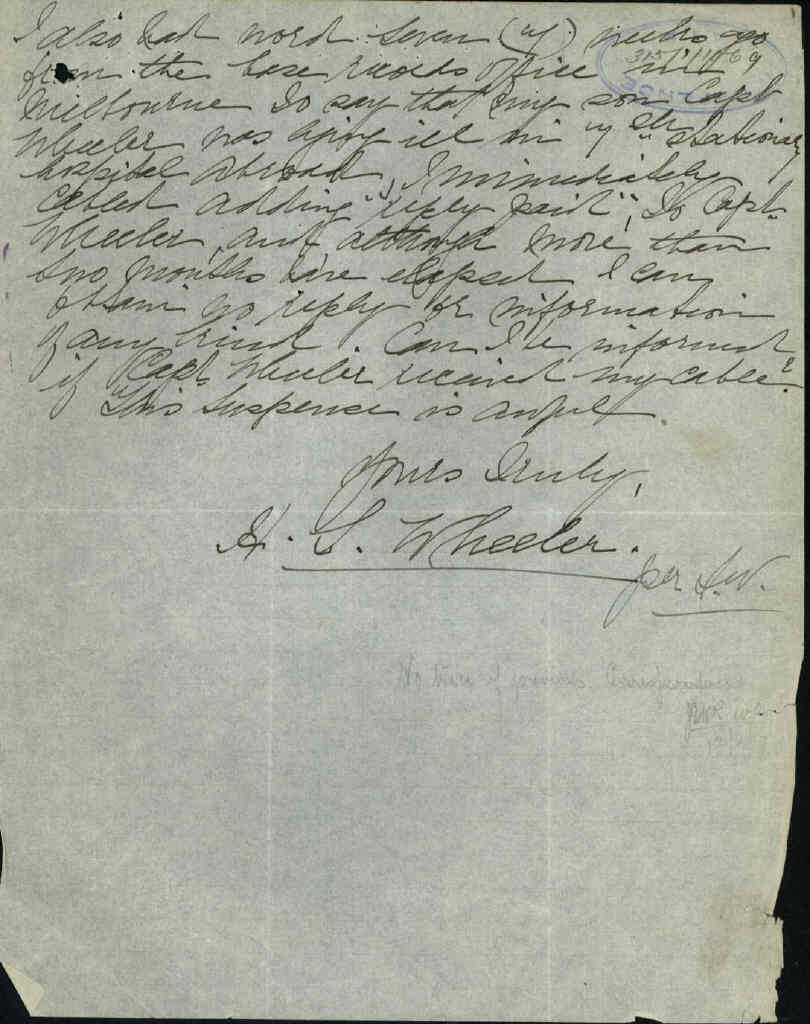
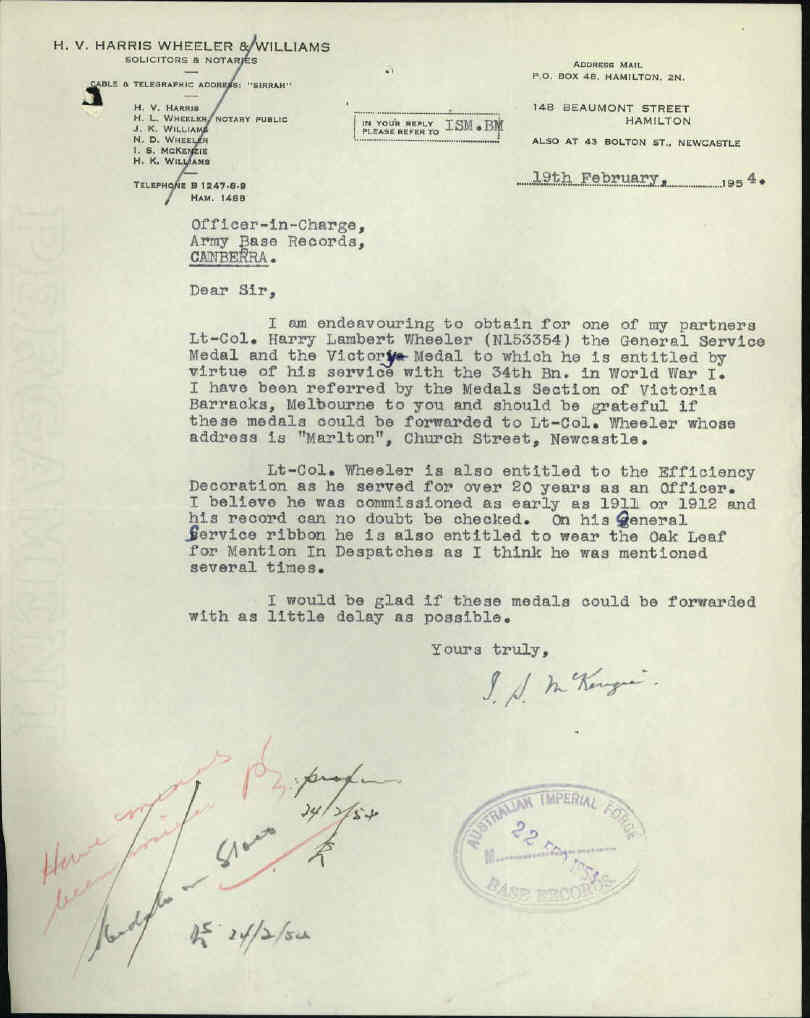

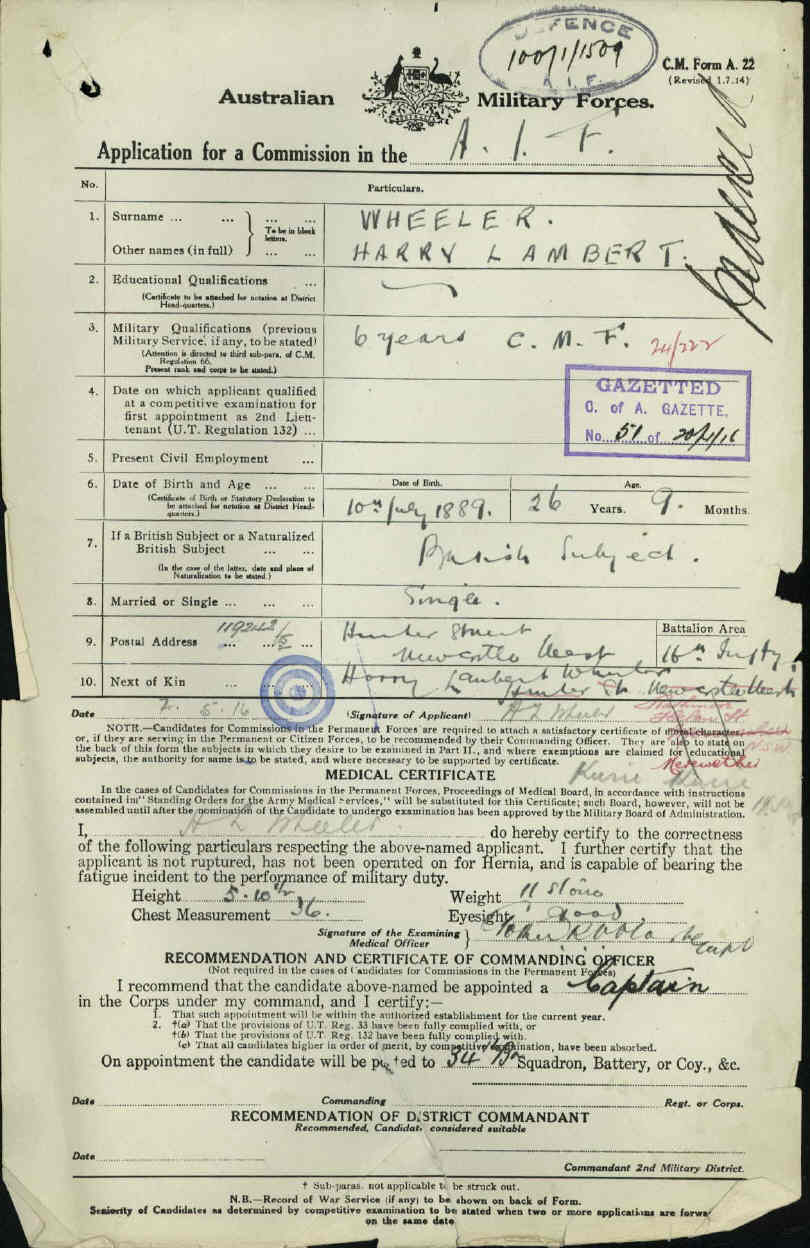

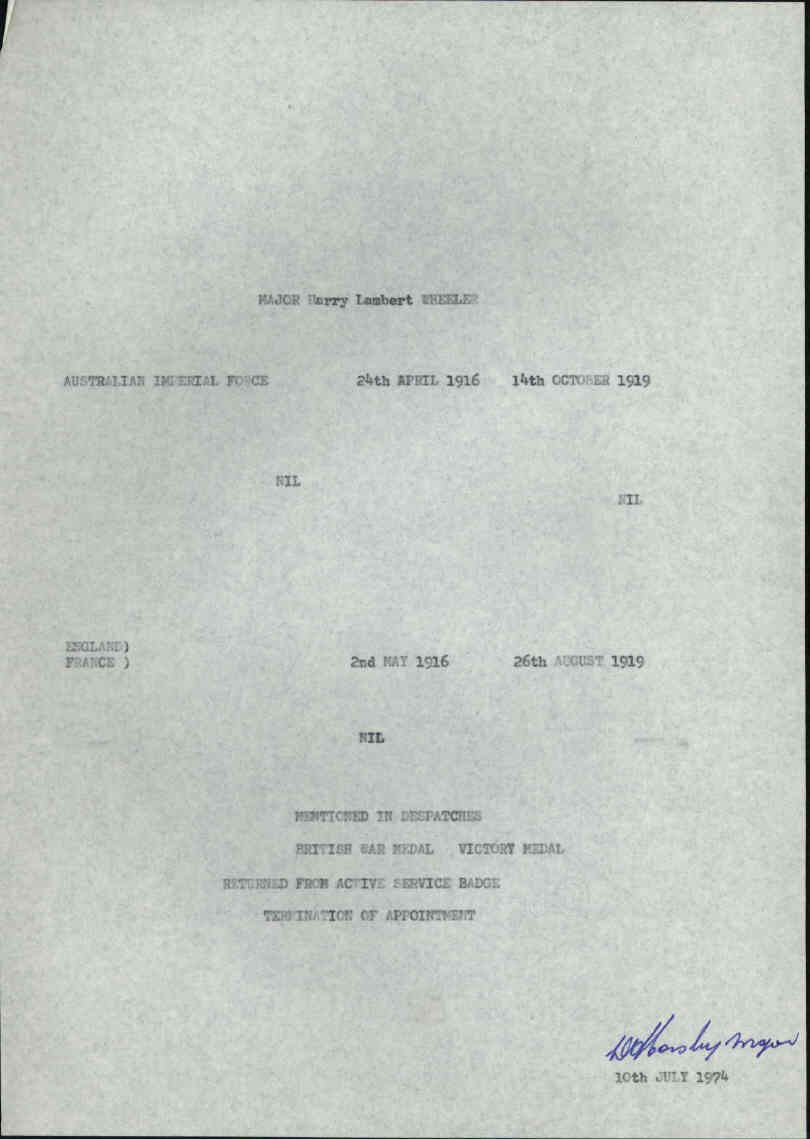
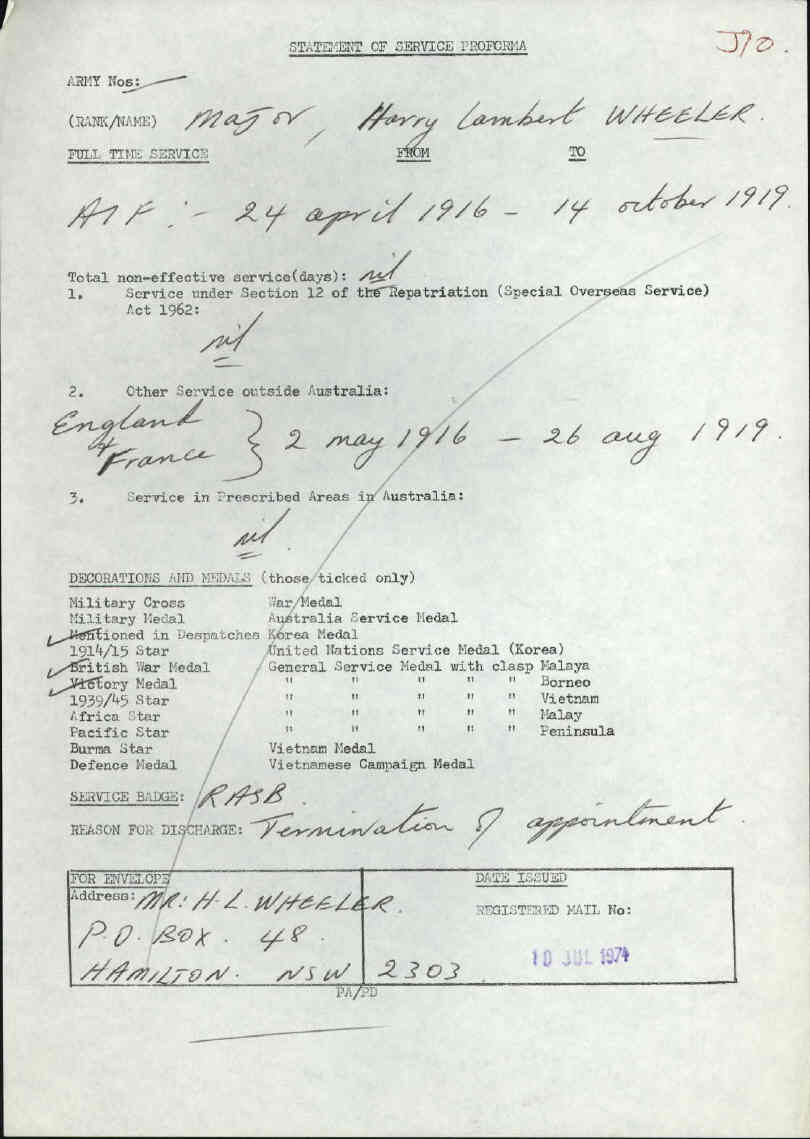
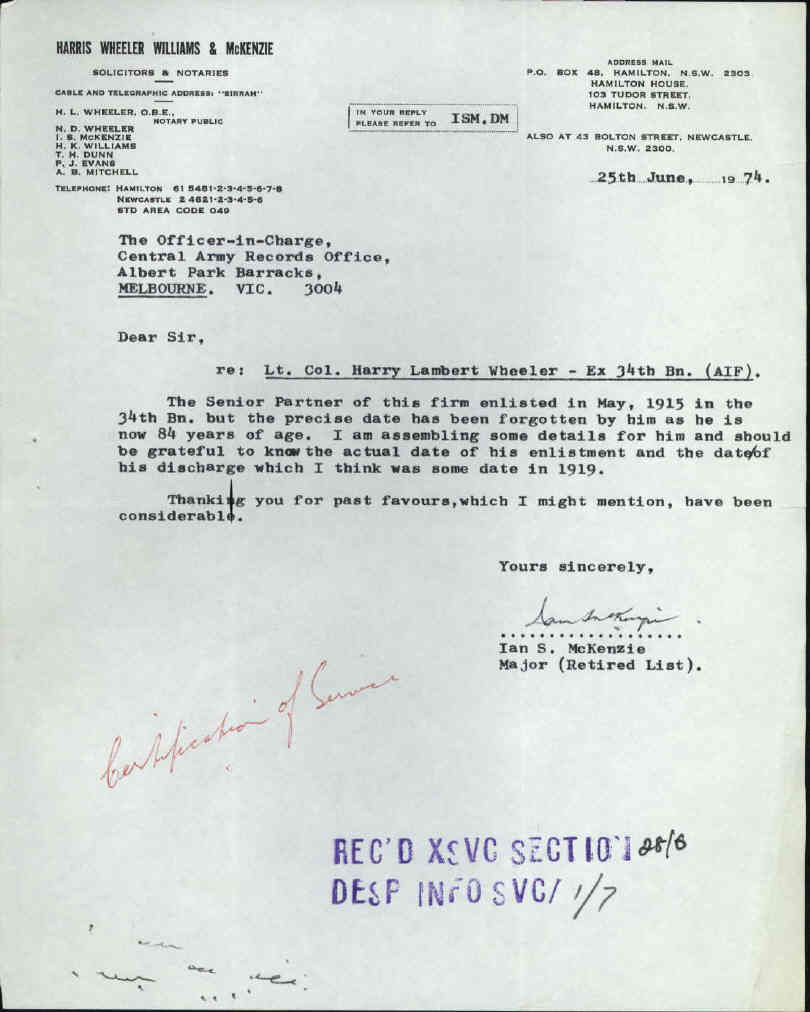
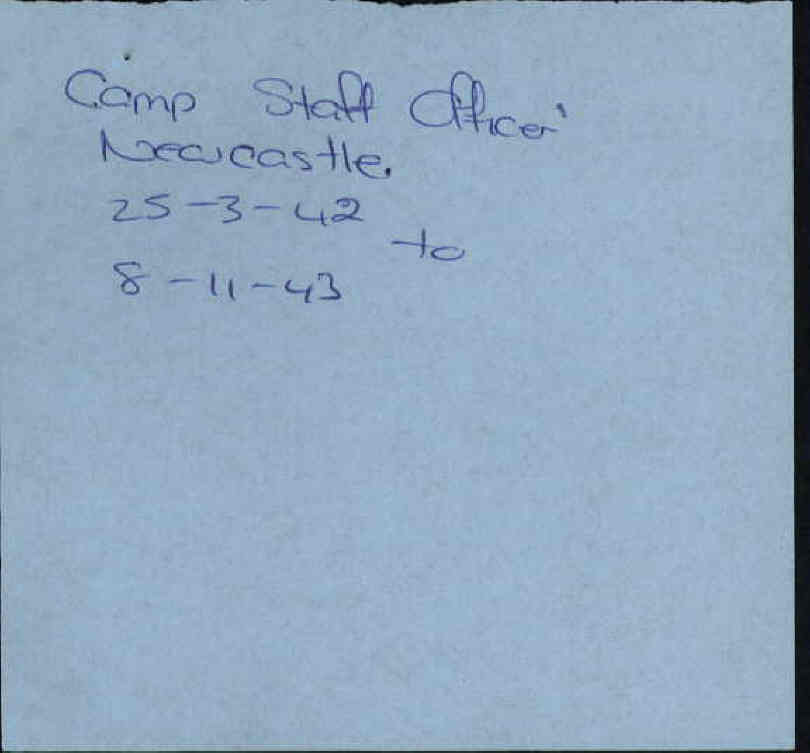
© Commonwealth of Australia (National Archives of Australia)
Under Construction; 26/07/2007-15/07/2020.